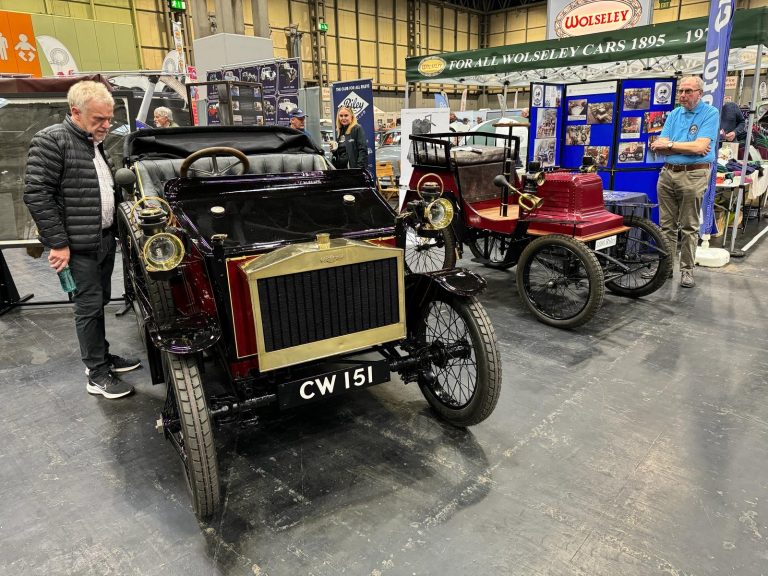
Shown To The World
After several years of research and restoration, our 1905 Riley 9HP is ready to be revealed to the world! As a 1 of 1 prototype


After several years of research and restoration, our 1905 Riley 9HP is ready to be revealed to the world! As a 1 of 1 prototype
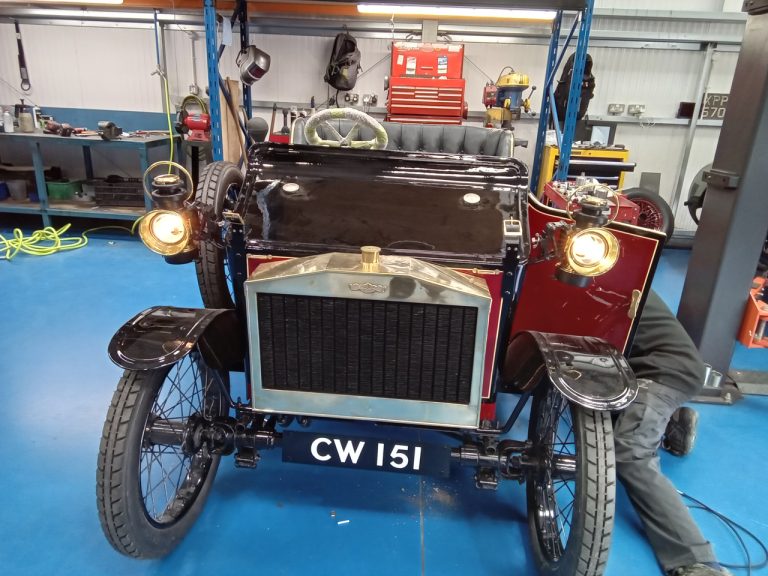
John has been running the wires of our 1905 Riley 9HP from the front and rear to the batteries. He wired in the switch and
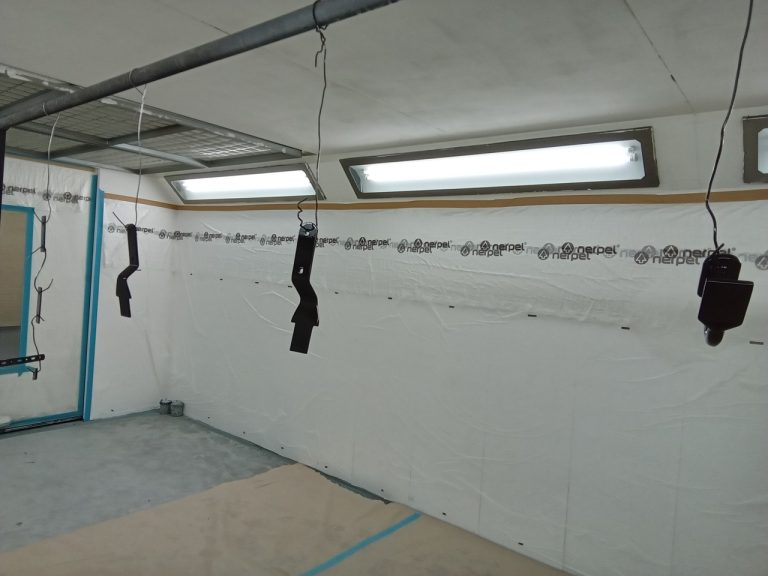
The final parts of our 1905 Riley 9HP restoration project have been in the booth under the gun of our paint technician Mauro. Mauro has
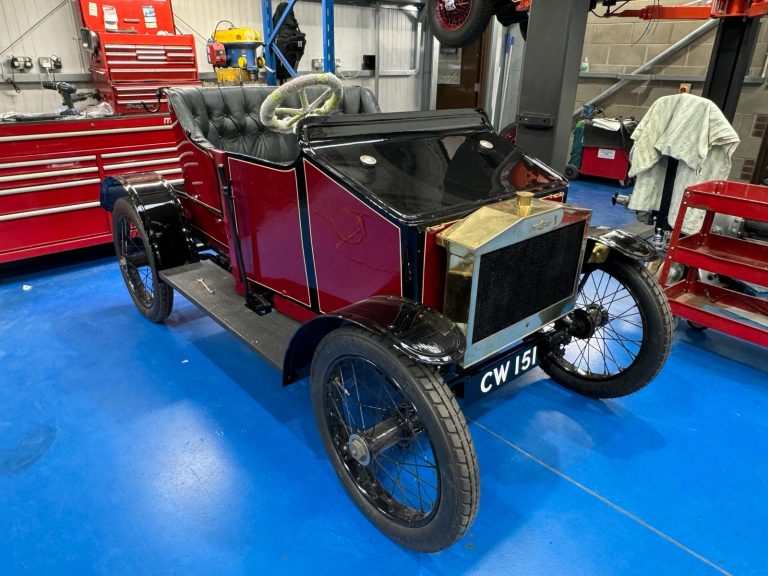
Ahead of its unveiling at the Practical Classics Restoration Show at the Birmingham NEC this weekend, our restorations teams have been working flat out to
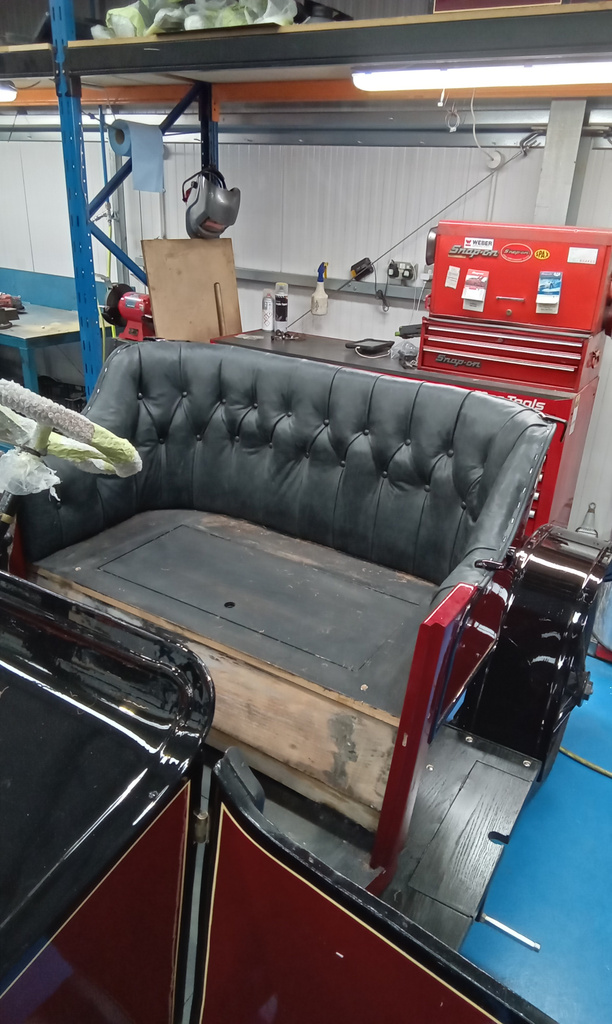
The backrest of the our 1905 Riley 9HP seat is actually fitted on the body of the car and, as a result, could not be
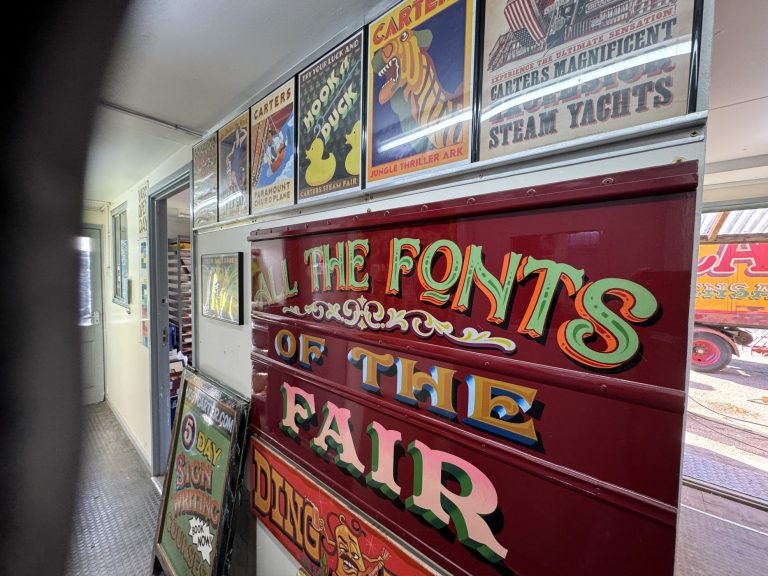
In February our Riley 9hp underwent the next stage of its restoration by paying a visit to Joby Carter’s workshop in Berkshire. Joby Carter is
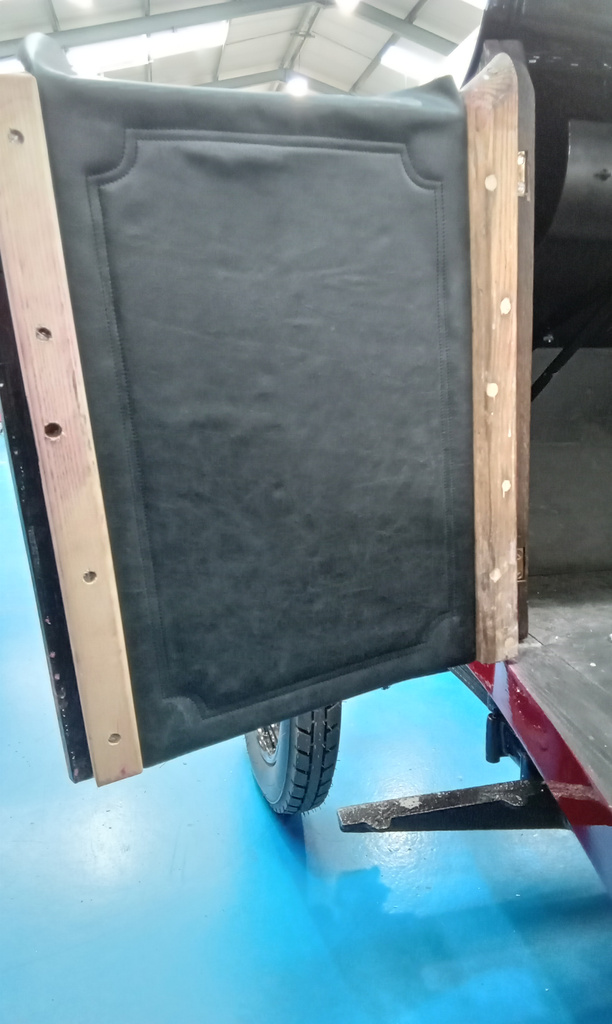
Lydia made an internal door card for the opening door on our 1905 Riley 9HP. She first made a template from paper to ensure the
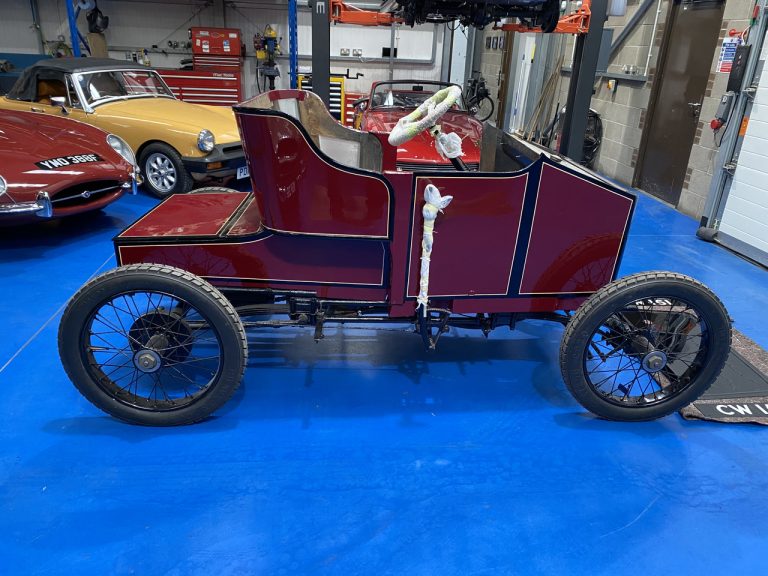
Our very special one of one 1905 Riley 9HP has returned to the workshop after being handpainted. As you can tell from the photos, it
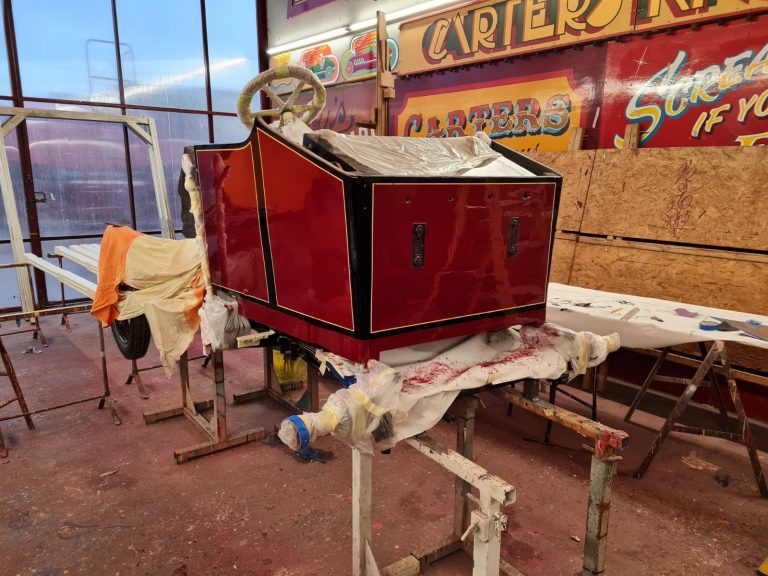
As we continue to see the amazing progress being made on our 1905 Riley 9HP, meet Joby Carter, the incredible talent behind the colour transformation.
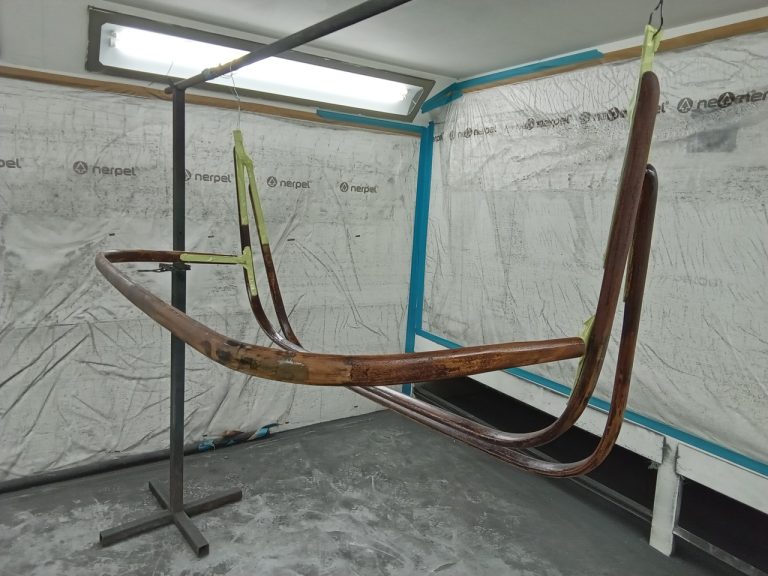
The roof frame of our 1 of 1 1905 Riley 9HP has been in the Bridge Classic Cars paint shop with technician Mauro. Mauro painted

The roof frame of our 1905 Riley 9HP has been in the Bridge Classic Cars paintshop with Mauro. He has been prepping the frame before

We have received the below pictures which show just how much progress Joby Carter is making on our 1905 Riley 9HP.
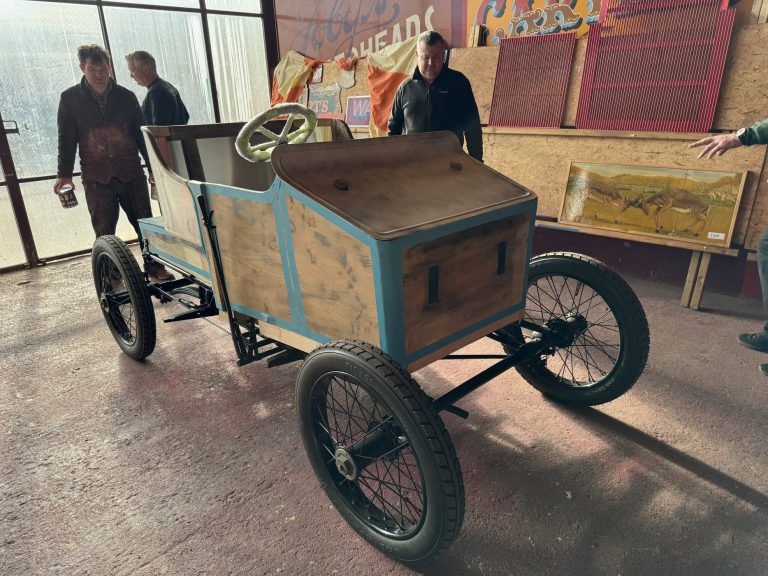
As the restoration of our 1905 Riley 9HP is moving into its final stages, the time has come for it to be painted. For this
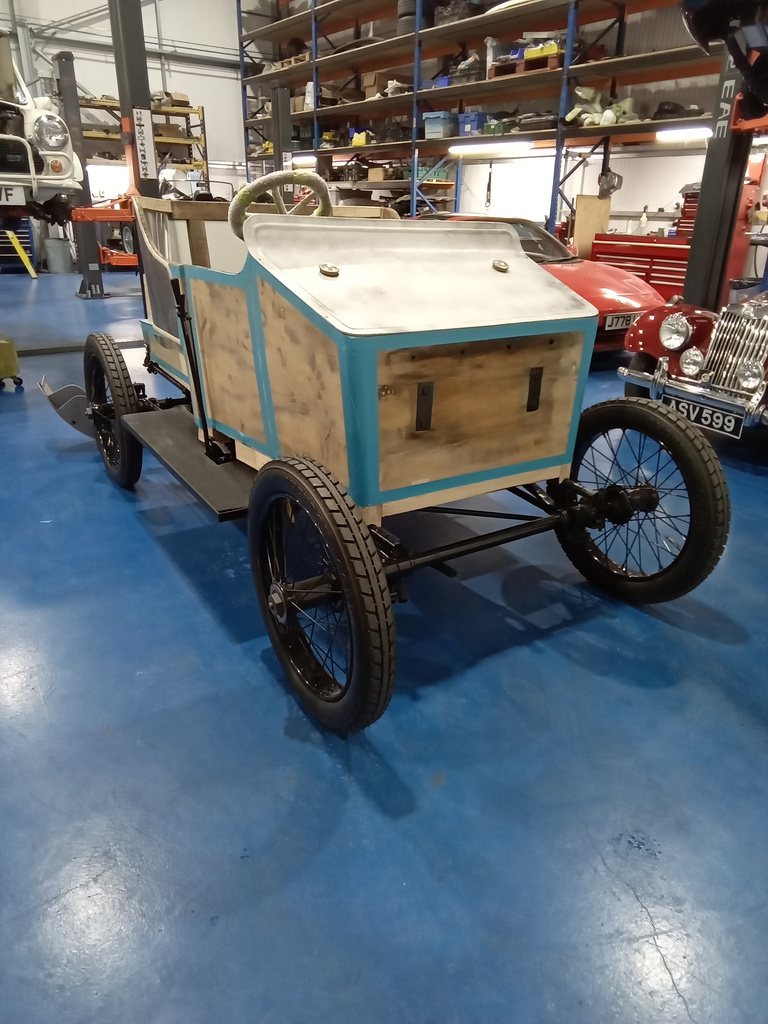
Our very special 1905 Riley 9HP continues to make fantastic progress. Lydia has been finishing the buttoned back for the Riley seat. This was particularly
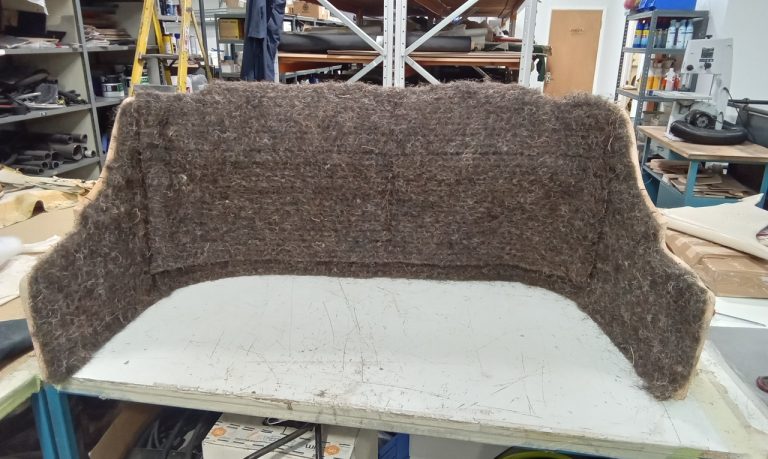
Yesterday, Lydia was preparing the seat backrest that Darin, from Ashbocking Joinery has kindly made for us. This involved replacing the springs back to their
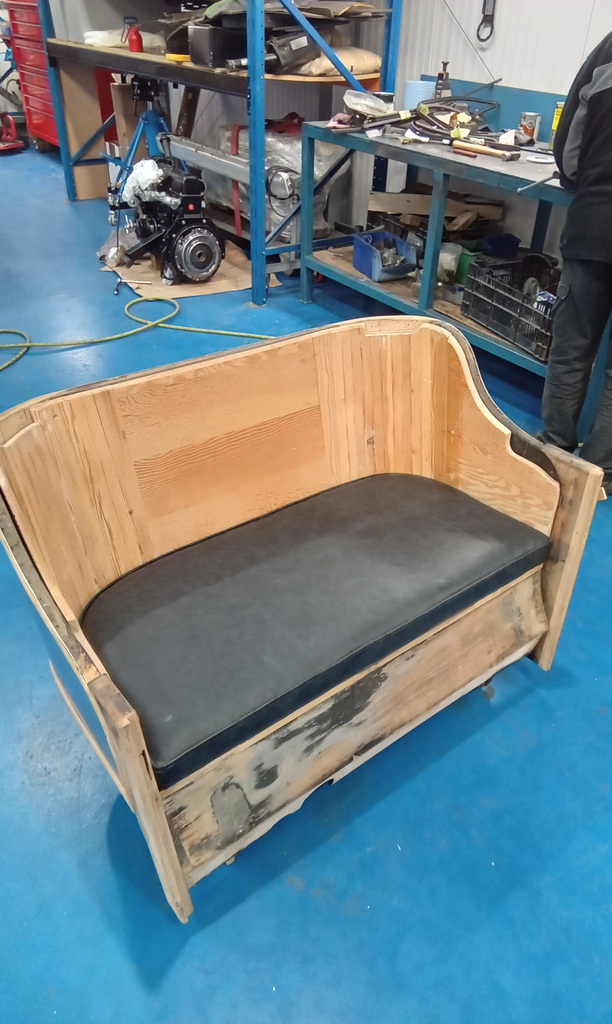
Lydia has upholstered the base seat of our 1905 Riley 9HP. She used a 2-inch foam for the base to provide a firm seat so
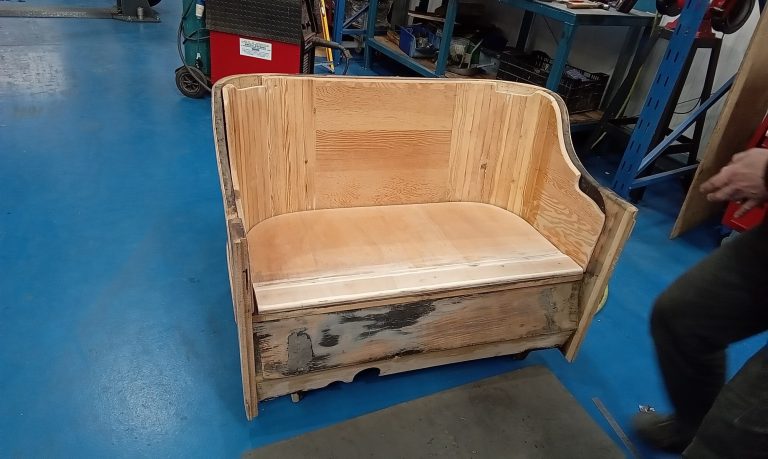
Recently, Lydia has been making the pattern for the base part of the seat of our 1905 Riley 9HP. She has been working with Steve

There’s been some incredible progress on our 1905 Riley 9hp in recent weeks. Recently, the team here at the Bridge Classic Cars HQ have been
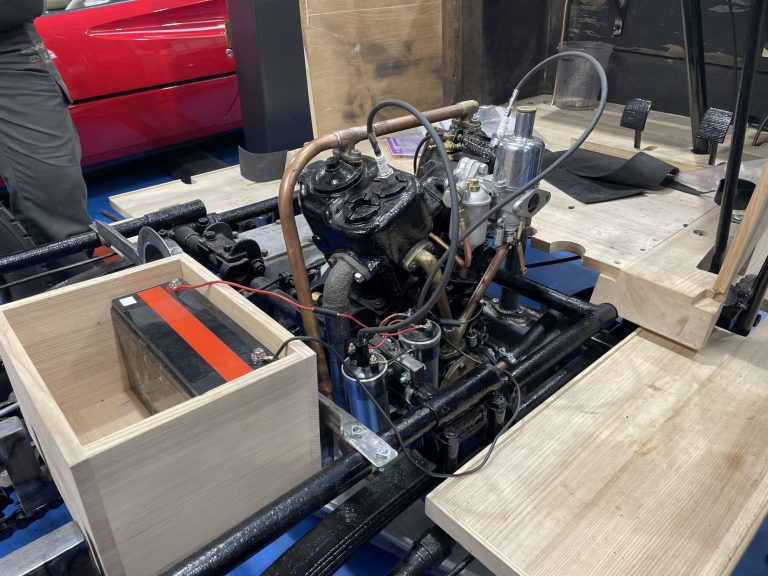
Our 1905 Riley 9HP was originally thought to be just 1 of 3 remaining examples. However, the evidence now suggests that it is, in fact,
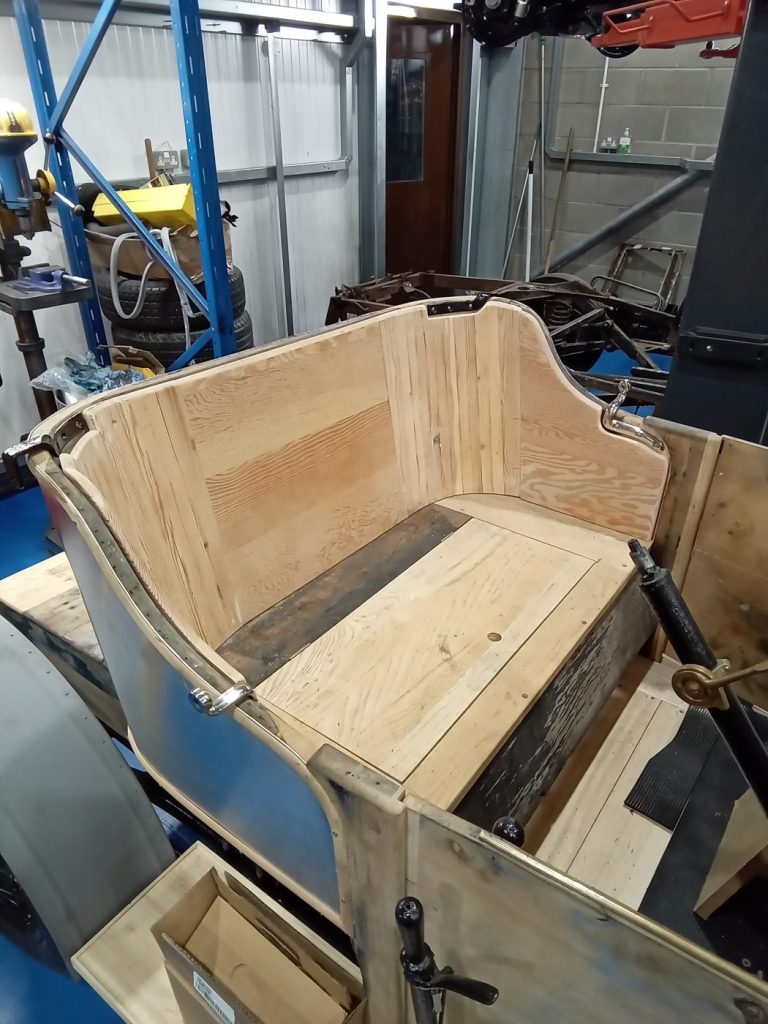
Brian has been fitting the brackets to hold the roof frame when it’s folded back, cutting the inner seat frame wood to fit around the
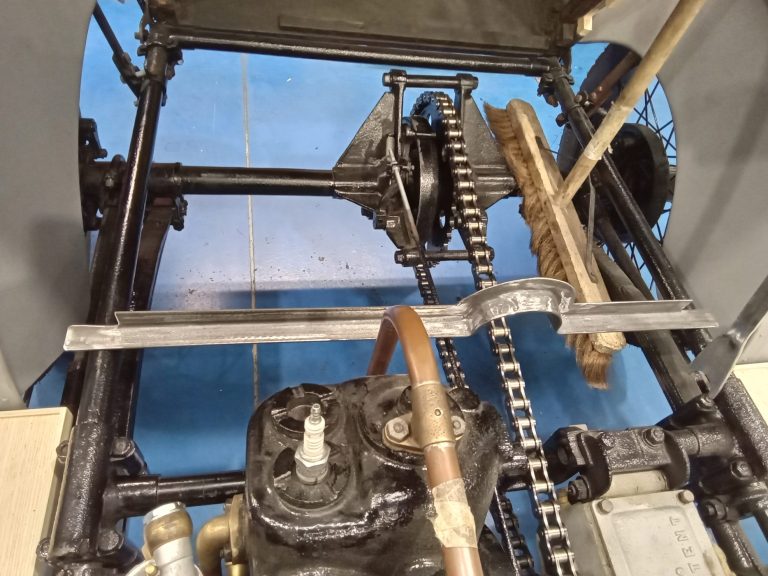
The battery box metal frame is almost complete and will eventually have an ash wood box for battery to sit in.
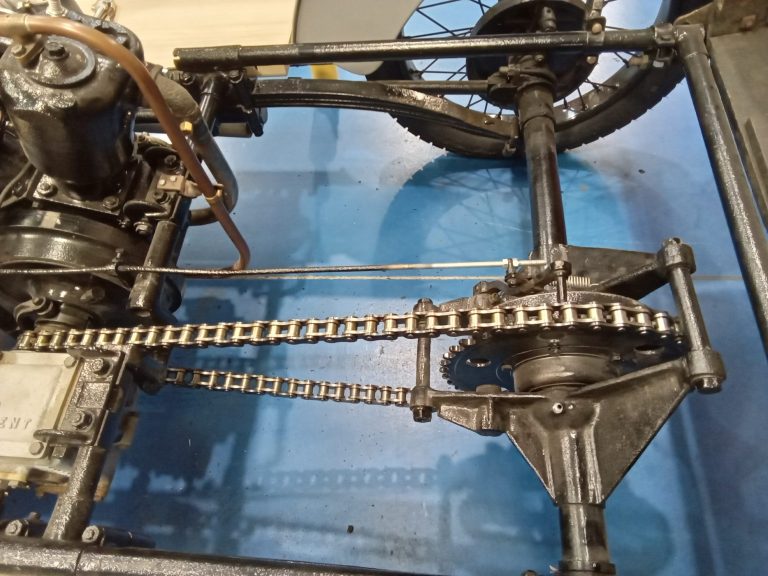
Steve is still working through the few final pieces on the 1905 Riley 9HP restoration. A new final drive chain has been fitted, new fabric

The restoration of our one-of-a-kind 1905 Rilep 9HP has been something of a labour of love and dedication. With very little reference material to work
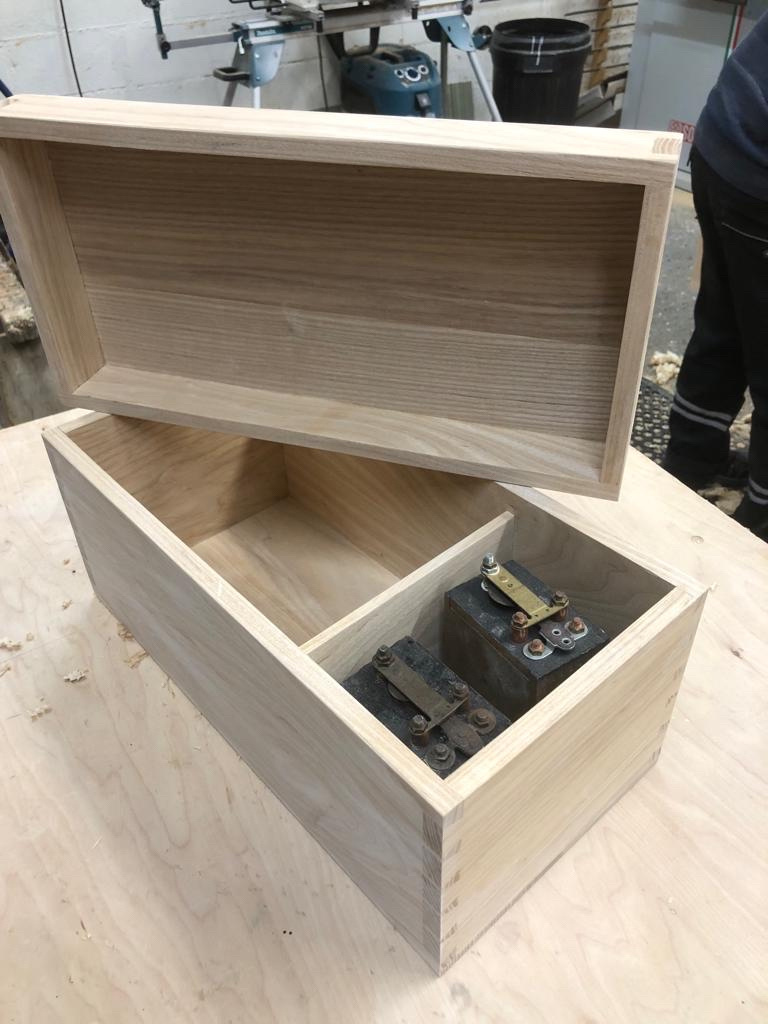
Darin from Ashbocking Joinery is completing the final few pieces of our Riley 9 woodwork. Here is the new tool box and trembler being finished.
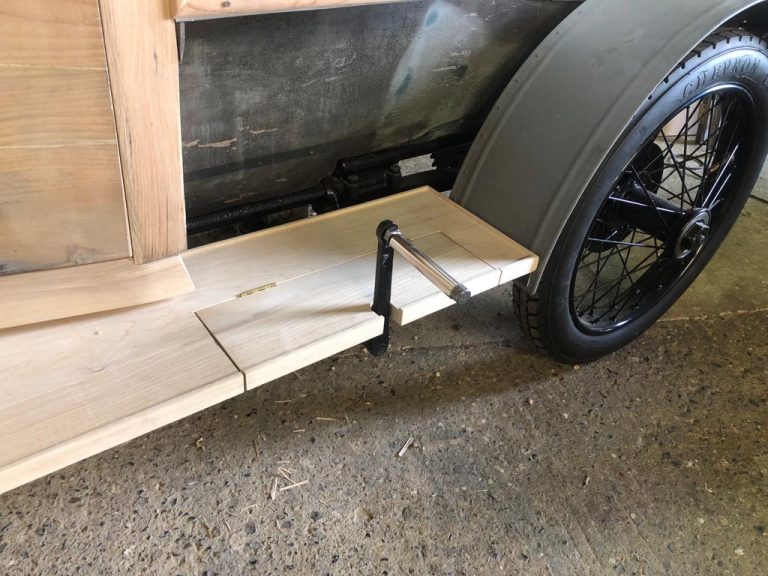
Alright, I am not referring to the start-stop technology of today, it’s not quite the completely automatic system that works by detecting a lack of

Our 1905 Riley 9HP may be more than 100 years old but, thanks to our team of skilled technicians and our friend, Darin at Ashbocking

Our 1905 Riley 9HP has been with a friend of Bridge Classic Cars, Darin, from Ashbocking Joinery. While our one-off car is with Darin, he
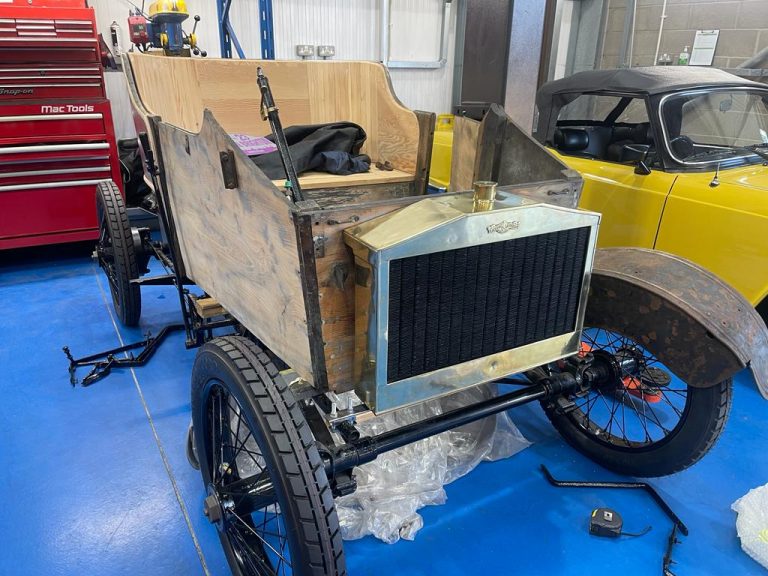
Recently, classic car technician Steve and Bridge Classic Cars Director Gordon took a trip to the British Motor Museum to take a closer look at
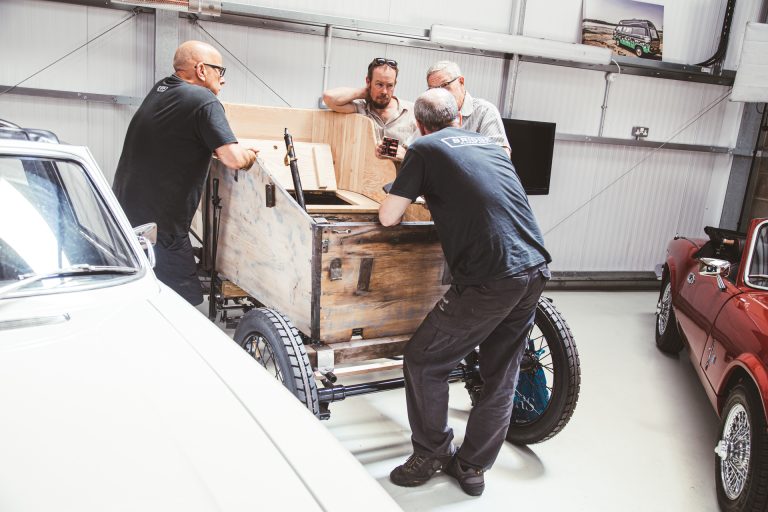
Following our recent visit from Geoff Haviland, of the Riley Cars Archive Heritage Trust, he has written us a detailed letter explaining what he believes
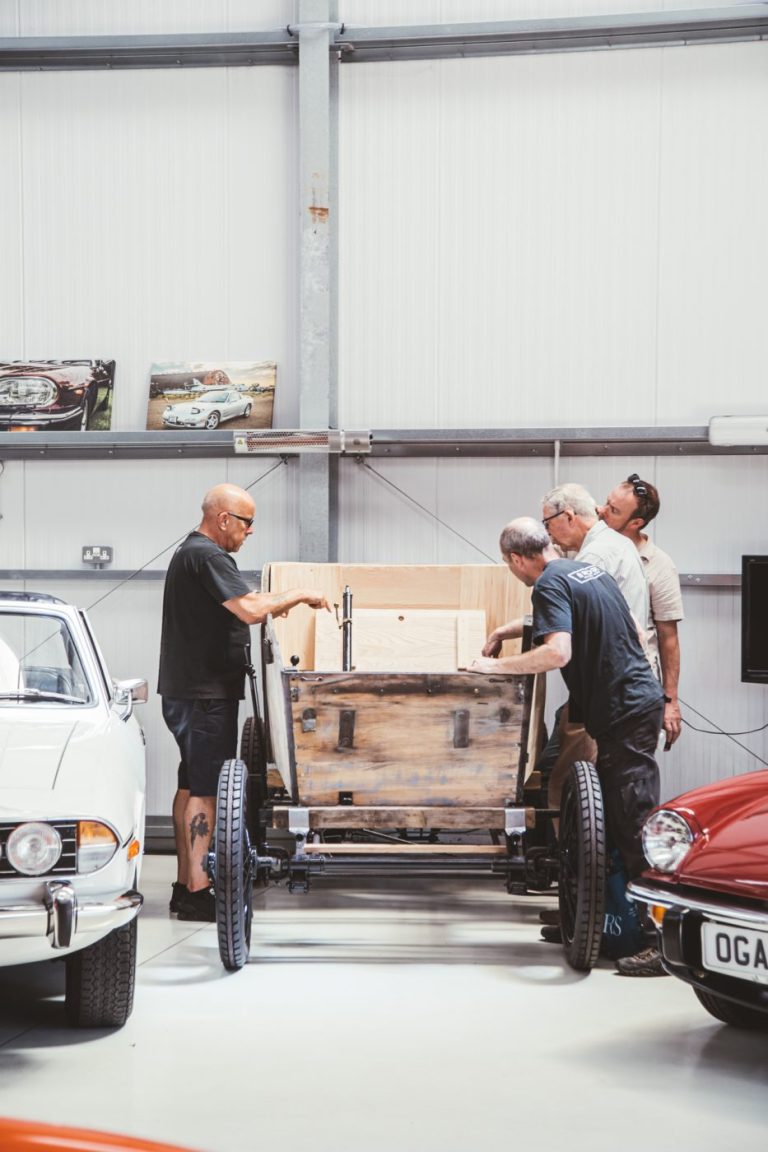
We recently welcomed Geoff Haviland into the Bridge Classic Cars workshop, so he could take a close look at our 1905 Riley 9HP. Geoff was
After several years of research and restoration, our 1905 Riley 9HP is ready to be revealed to the world!
As a 1 of 1 prototype for the first car to have fully removable wheels, this is the first time anyone outside of the workshop has seen the car in decades.
The unveiling of the fully restored unique vehicle takes place at the Practical Classics Classic Car & Restoration Show 2024 at the NEC in Birmingham.
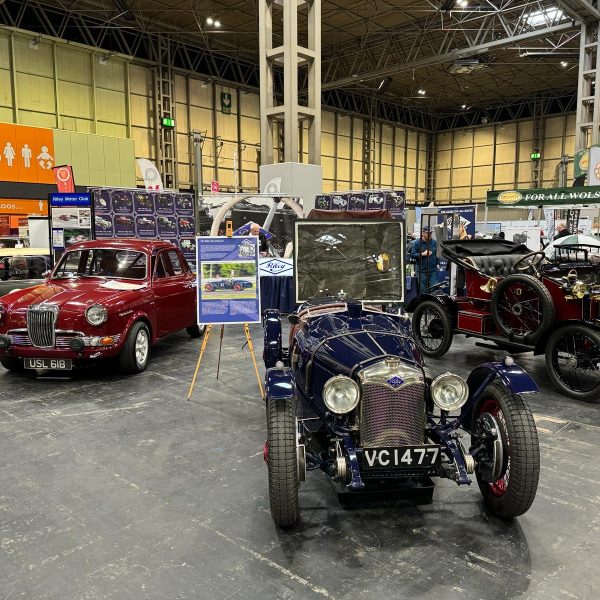

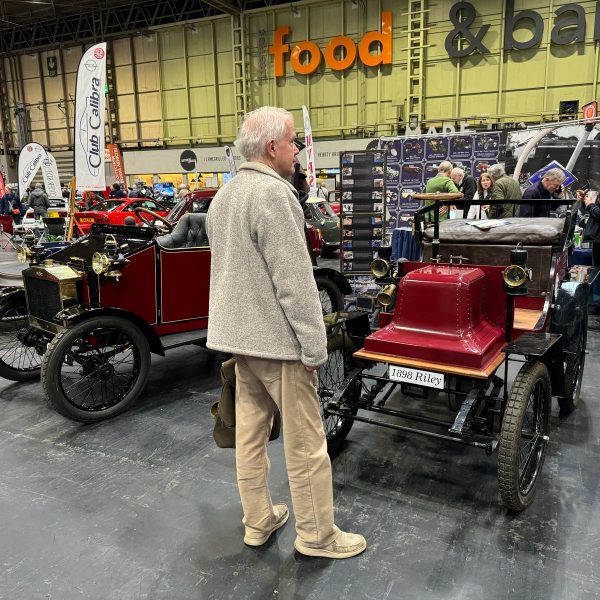
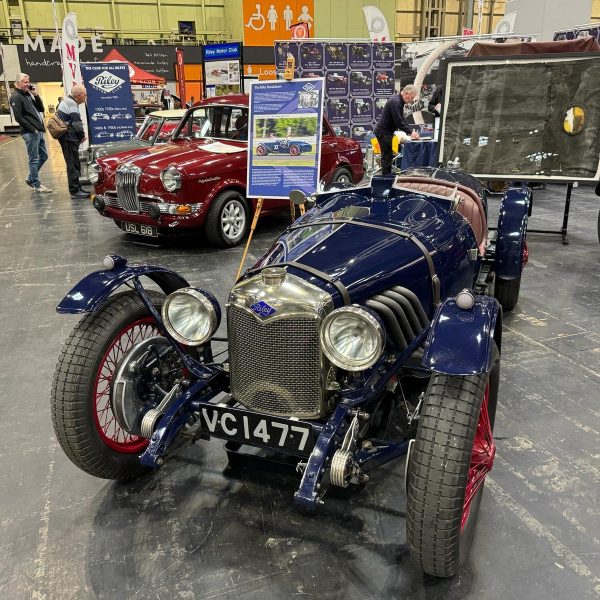
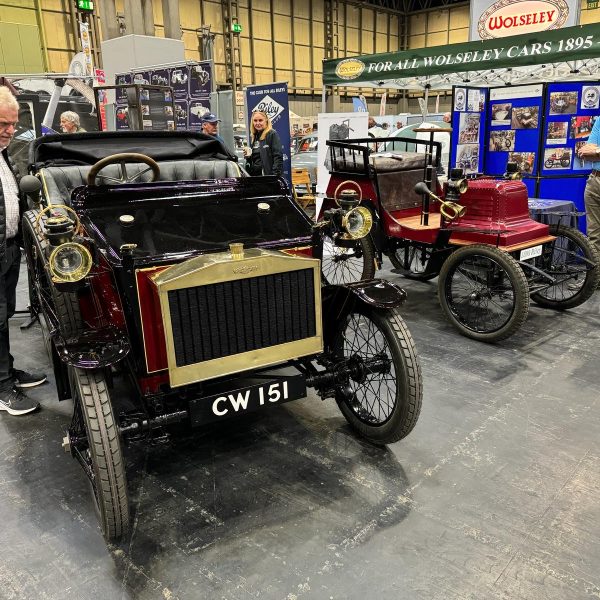
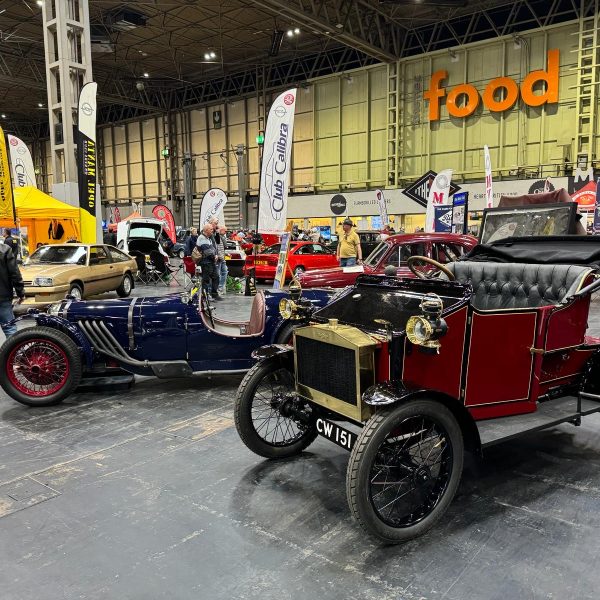
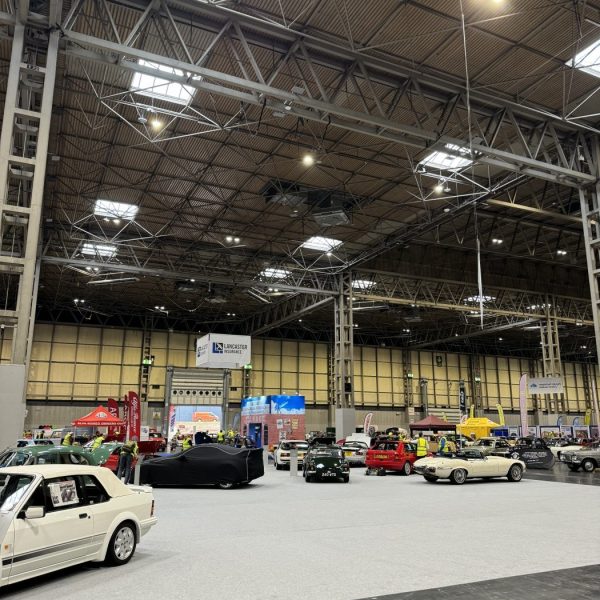
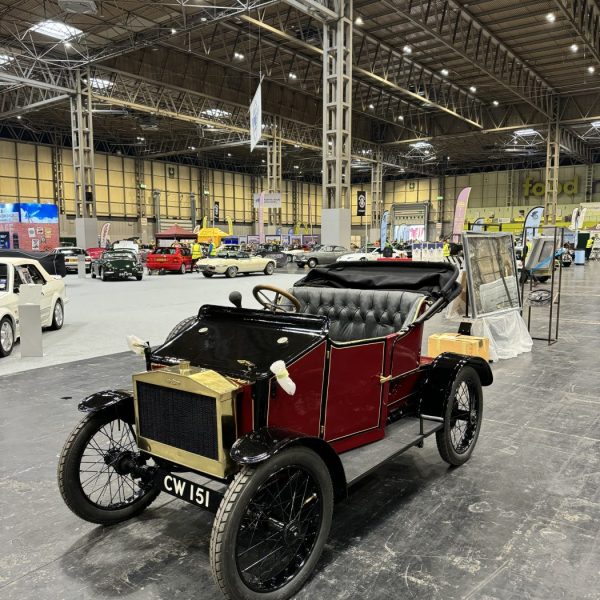
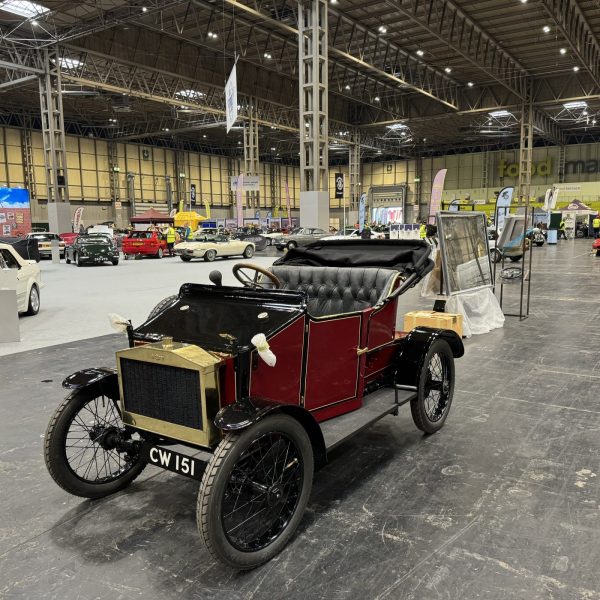
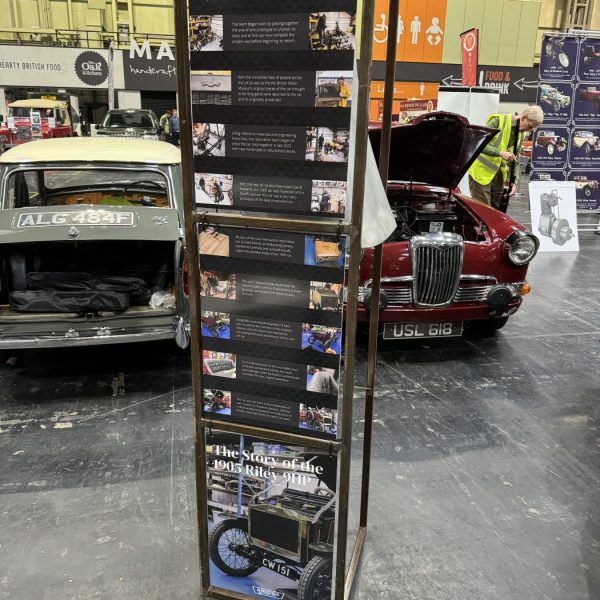

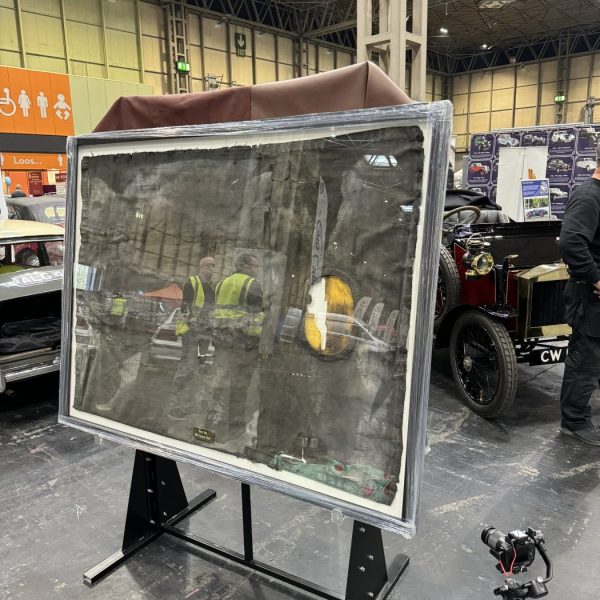
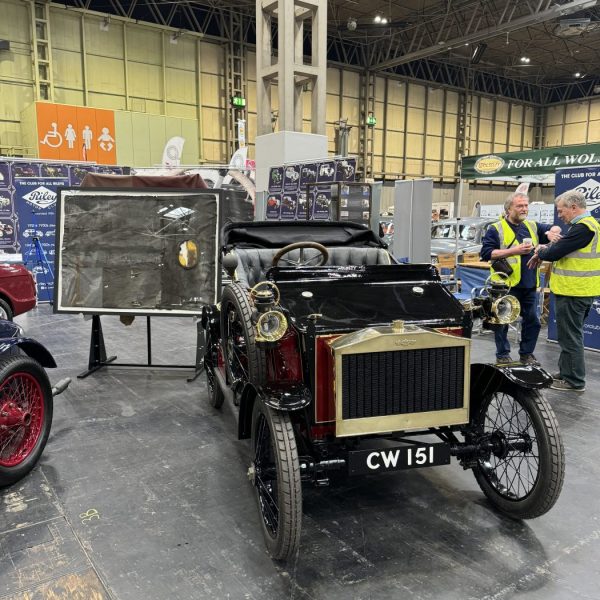
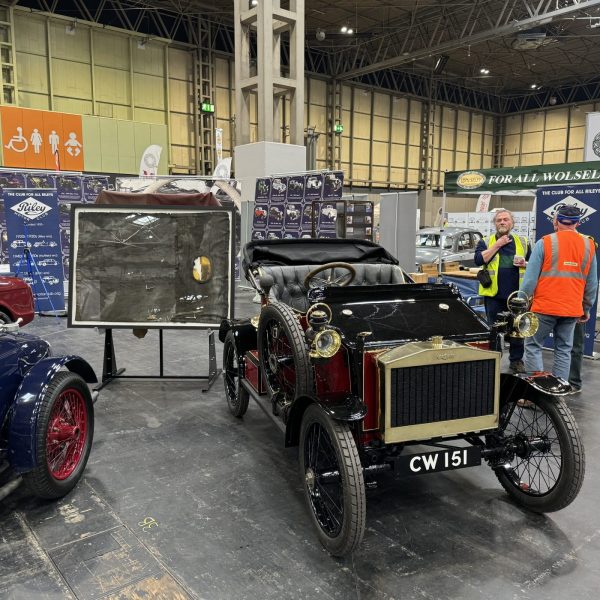
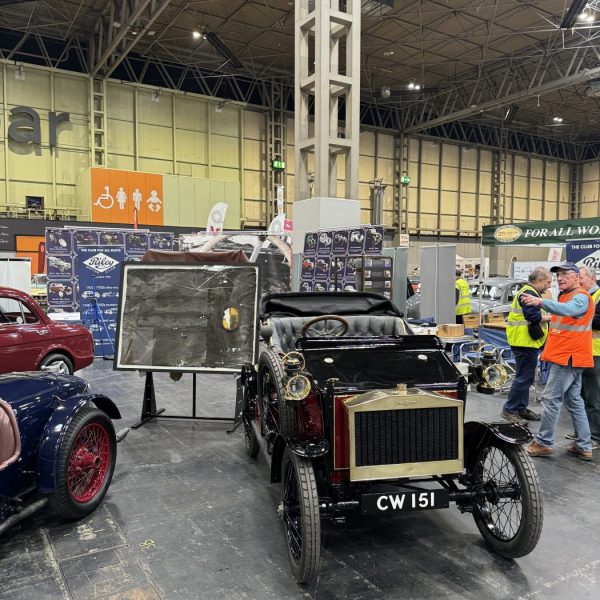
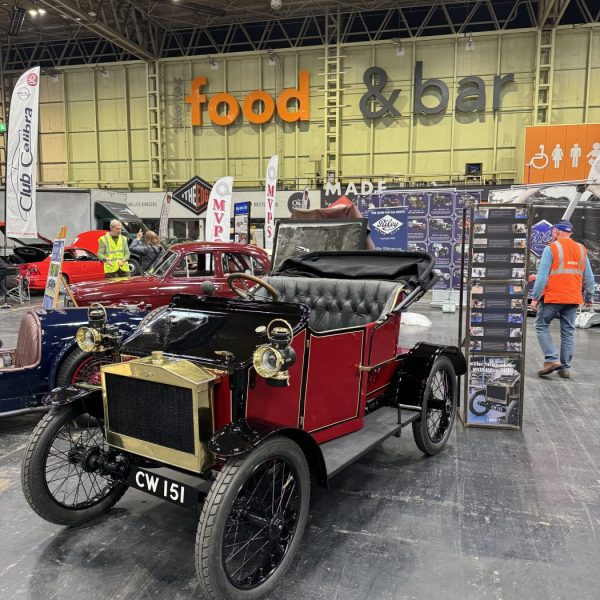
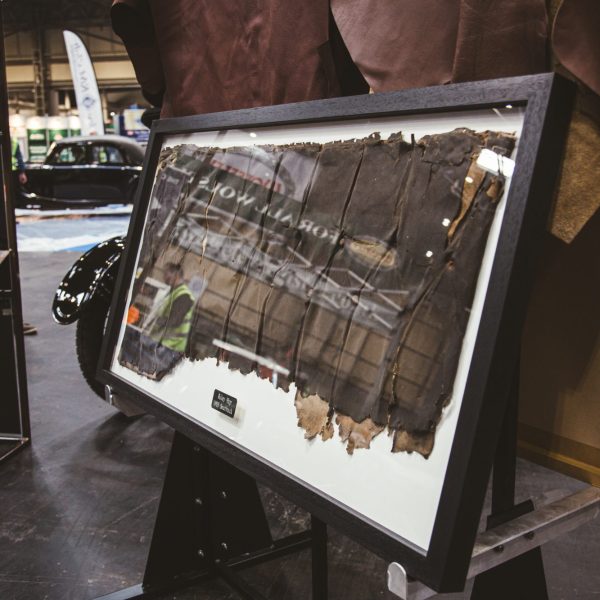
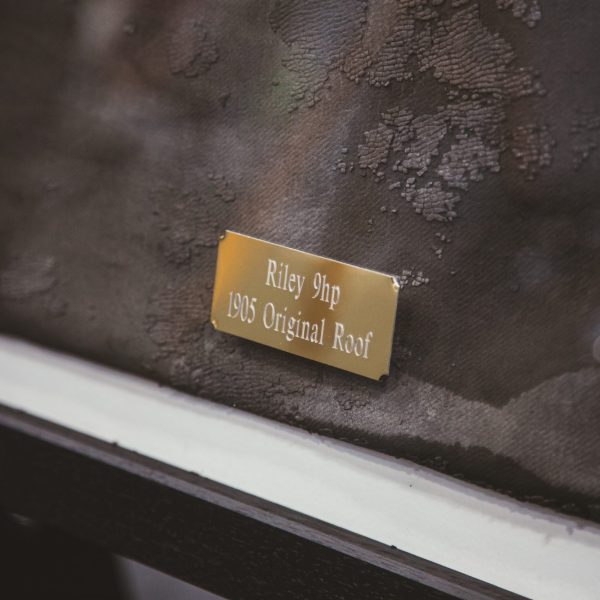

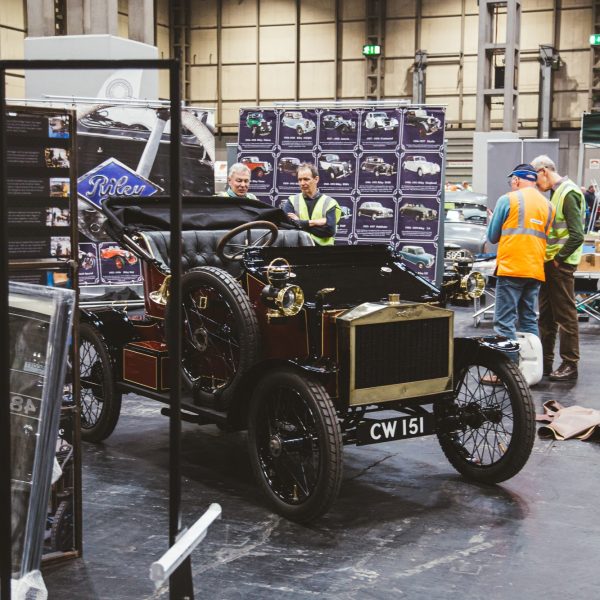
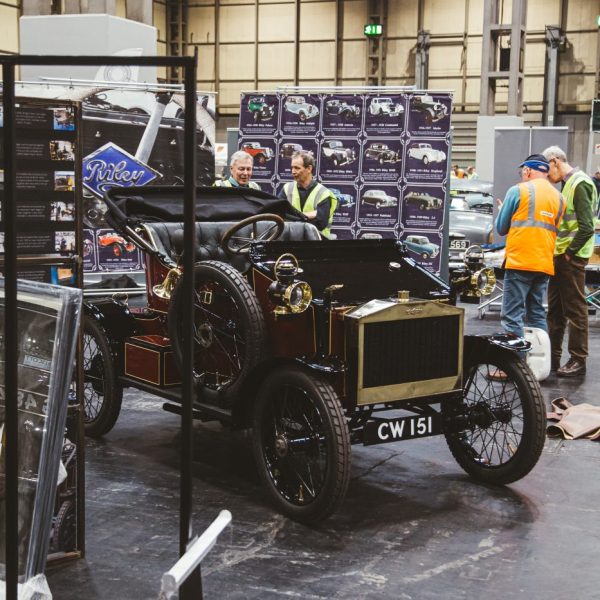
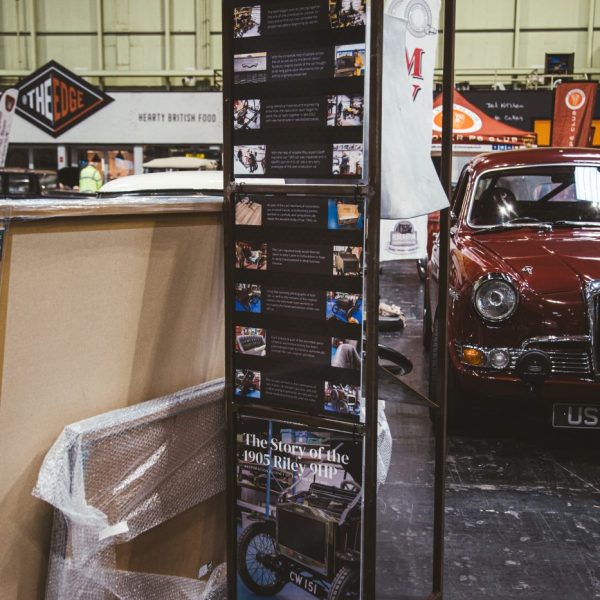
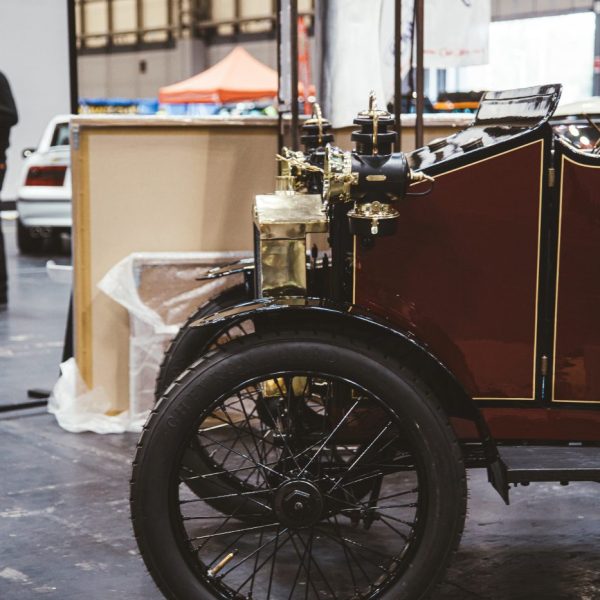
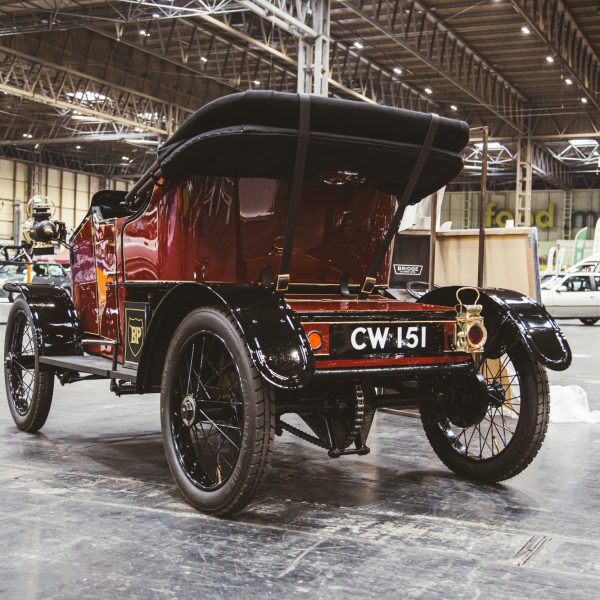

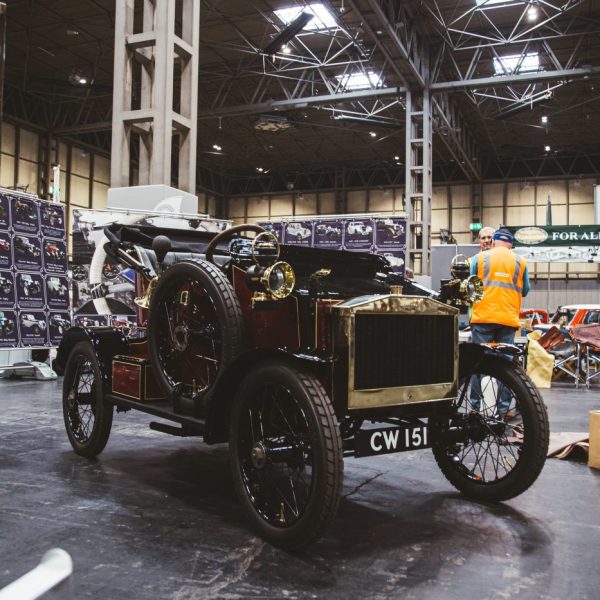

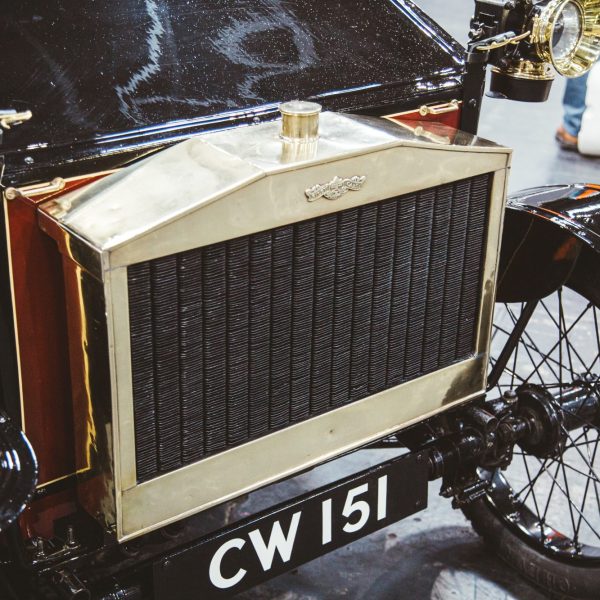
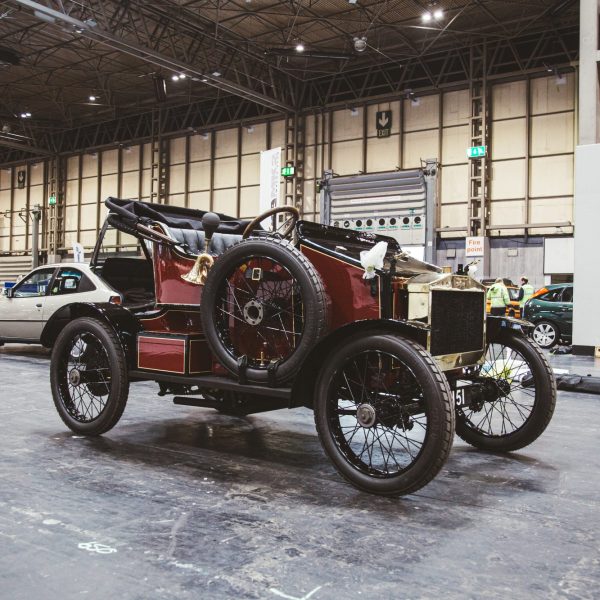
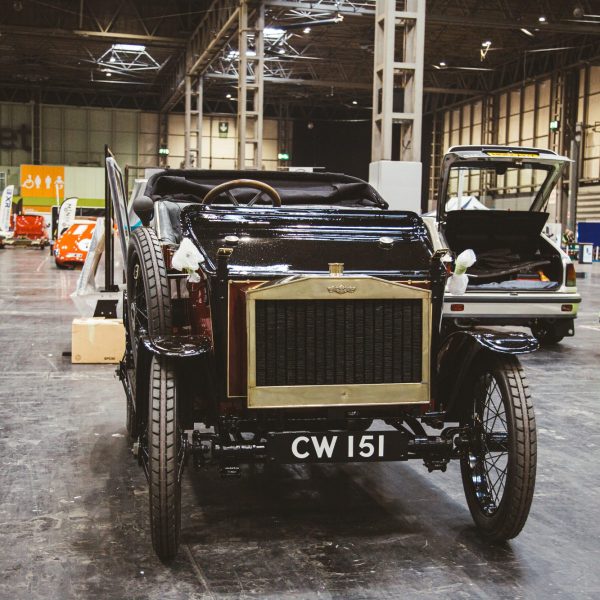



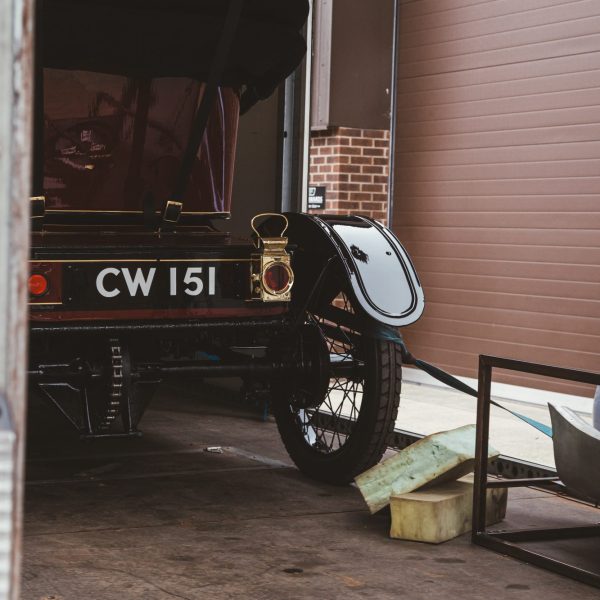
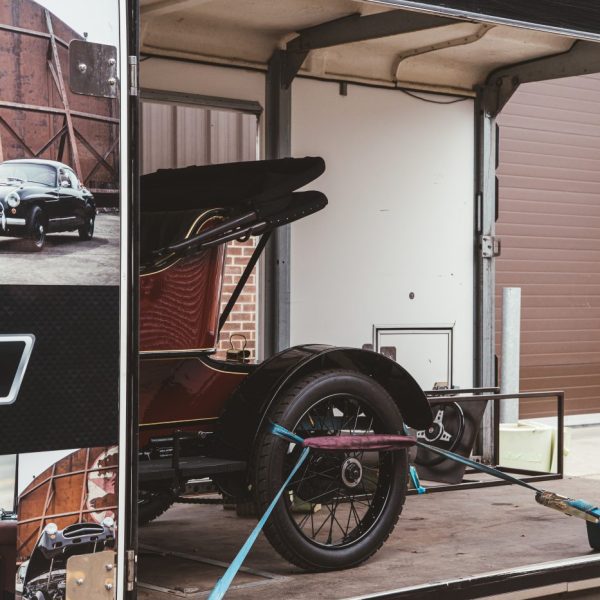

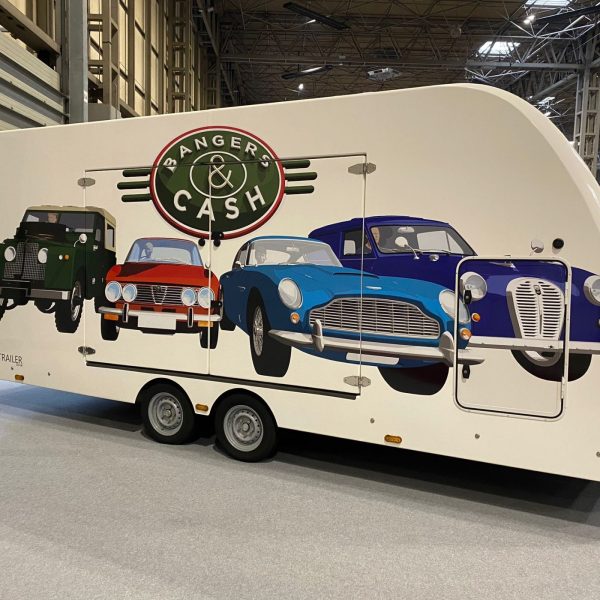
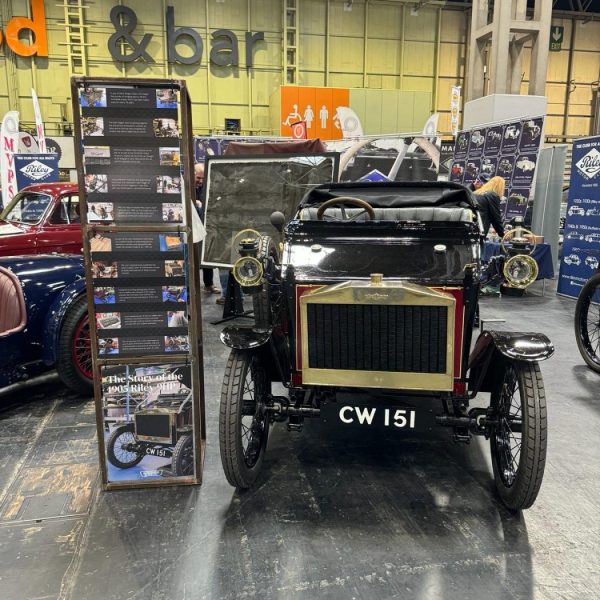
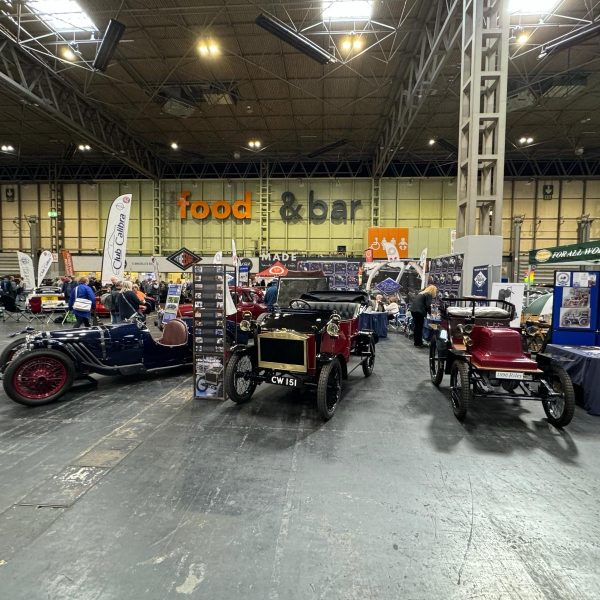
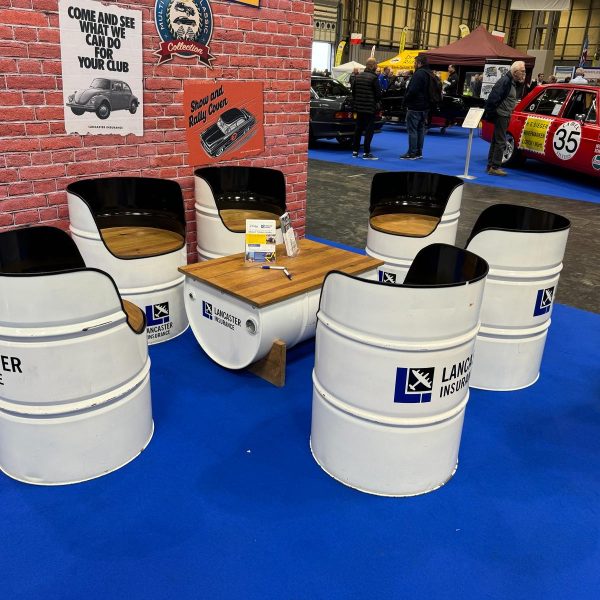
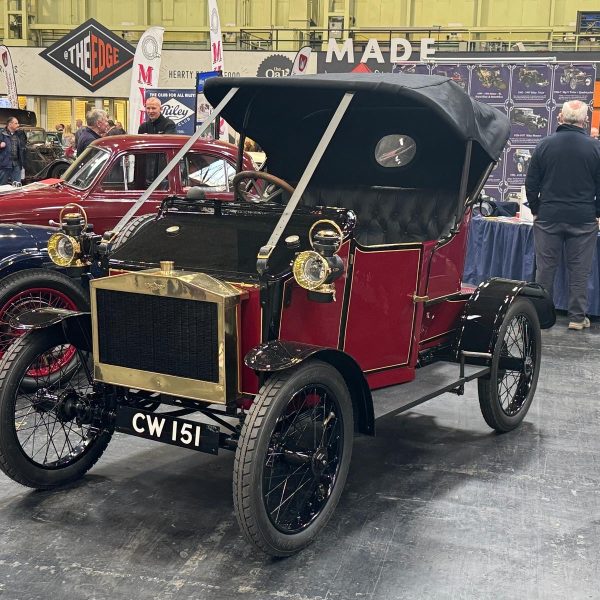
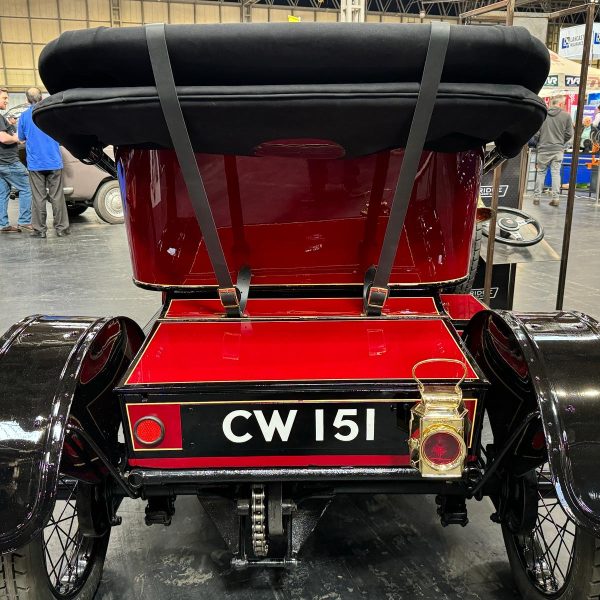

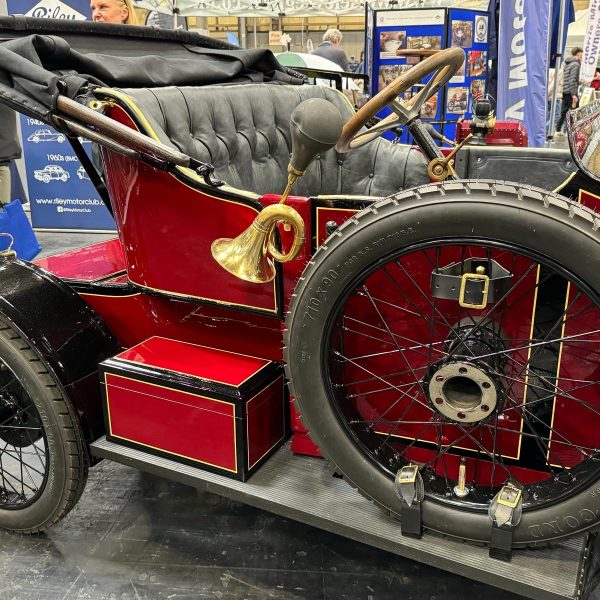
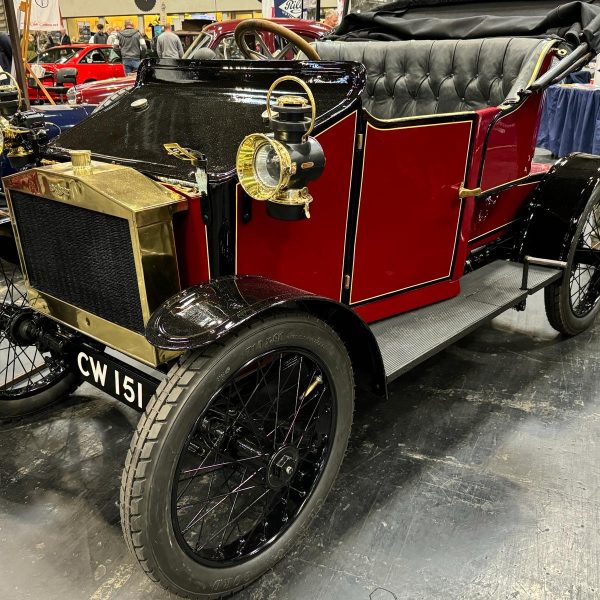
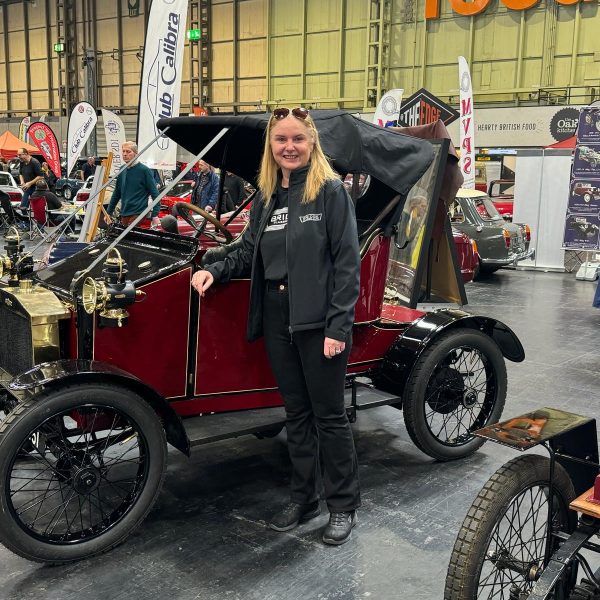

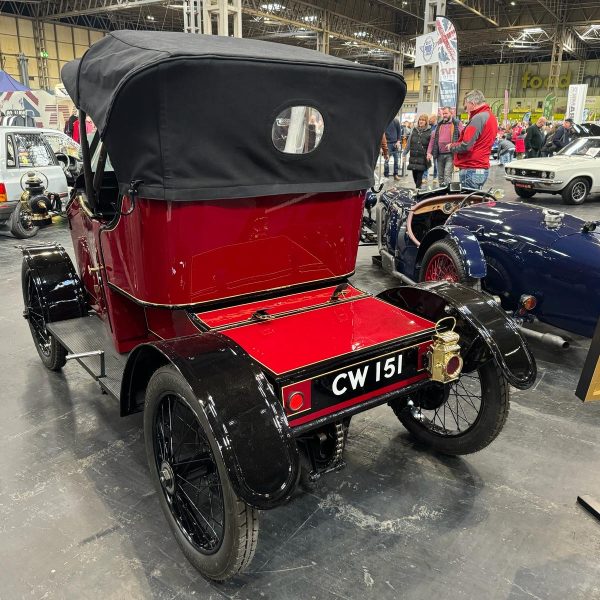
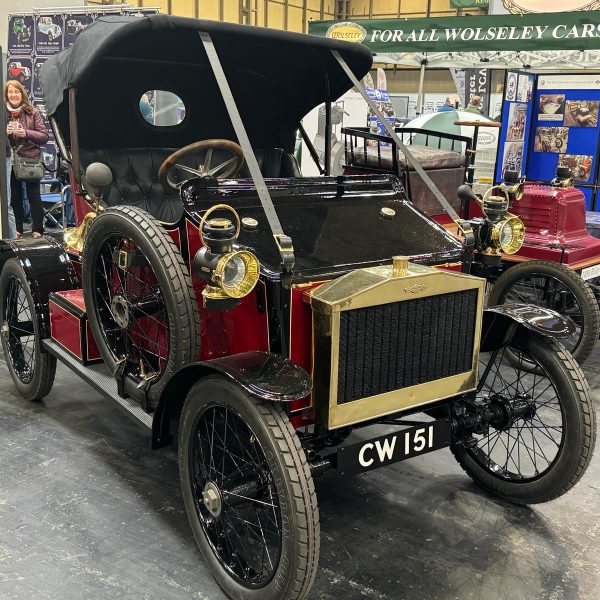
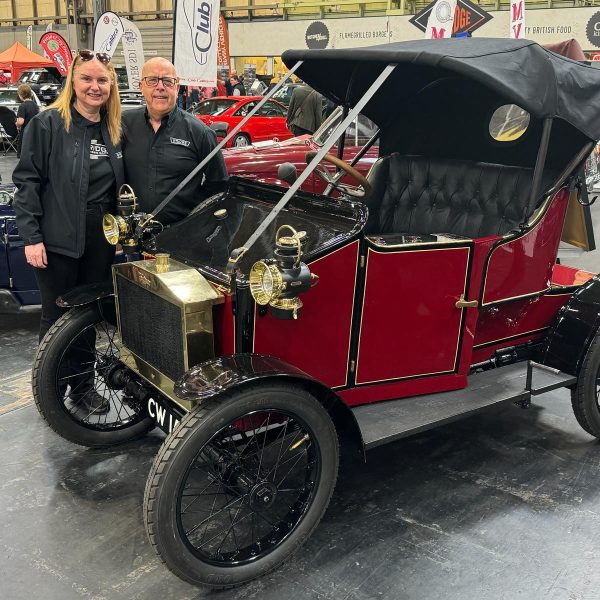

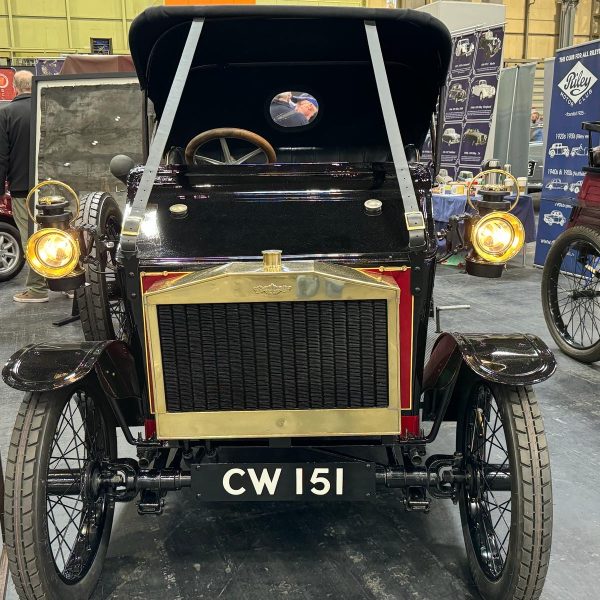

John has been running the wires of our 1905 Riley 9HP from the front and rear to the batteries. He wired in the switch and the front and rear lights.
Lydia has spent the last few days titivating the Riley before its grand unveiling at the NEC show at the weekend. Mostly, she has been making the last of the buckles and straps needed to secure the spare wheel, and the hood at front and back.
She also made a rubbing patch should the wheel ever come to touch the front mudguard. Lydia also made the leather cover to go from the bottom of the seat to the floor, and this press studs over the rubber mat that has been placed on the floor.
The door cards were also finished and fitted and this meant that the brass strip could be applied to the top.
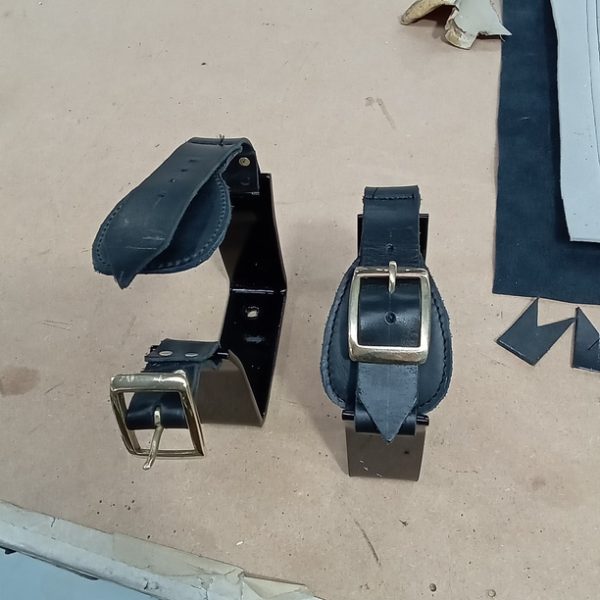
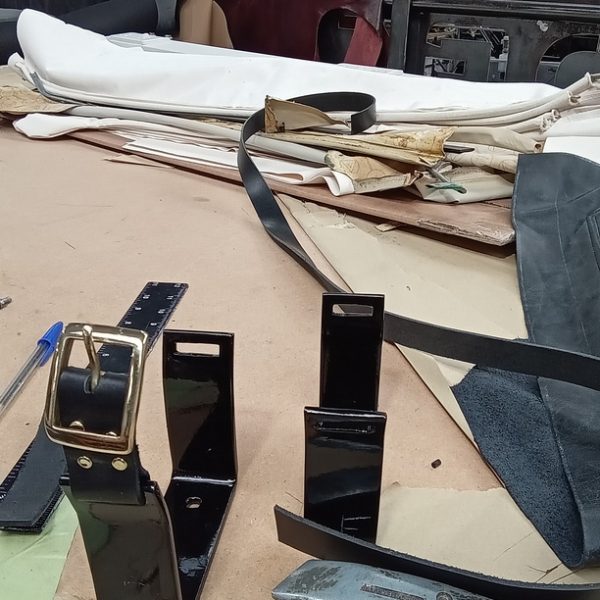
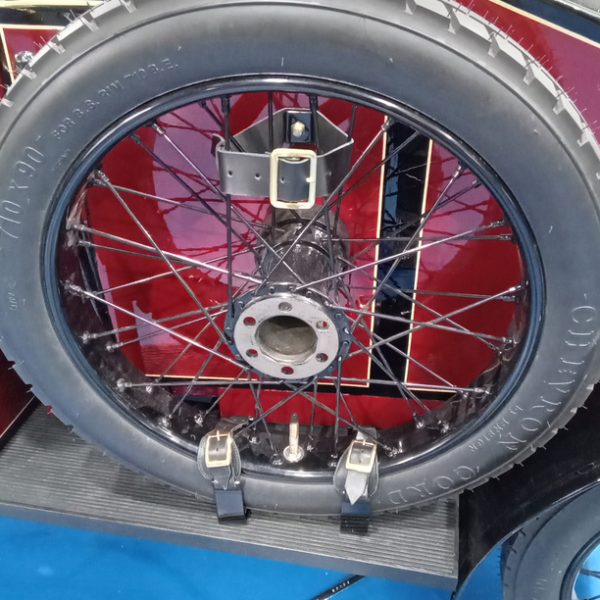
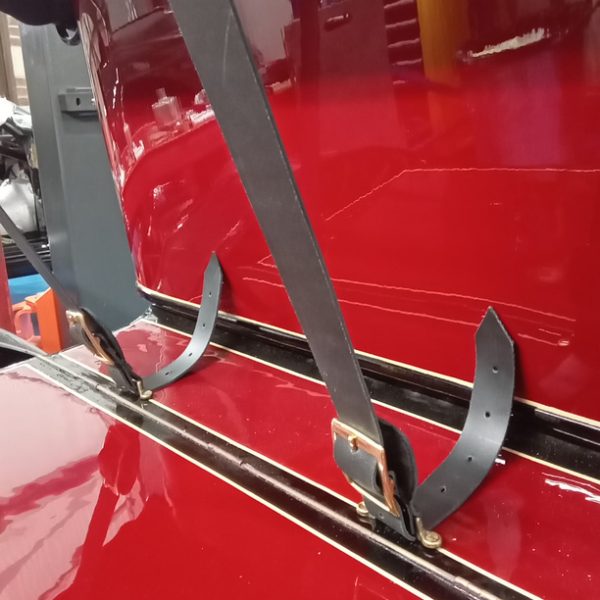
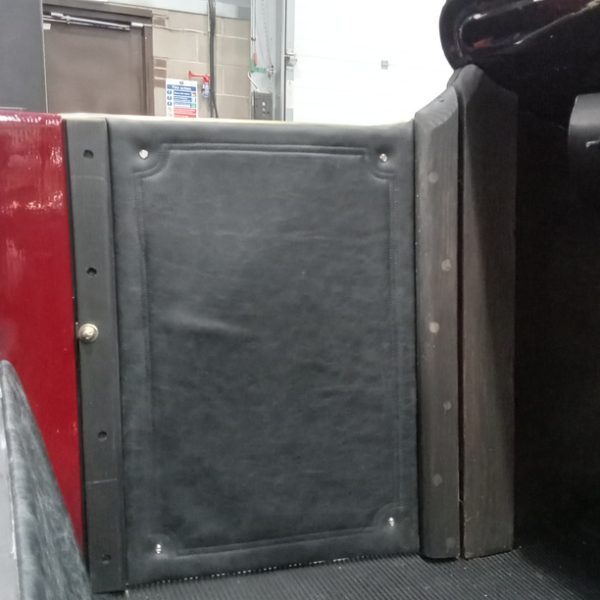
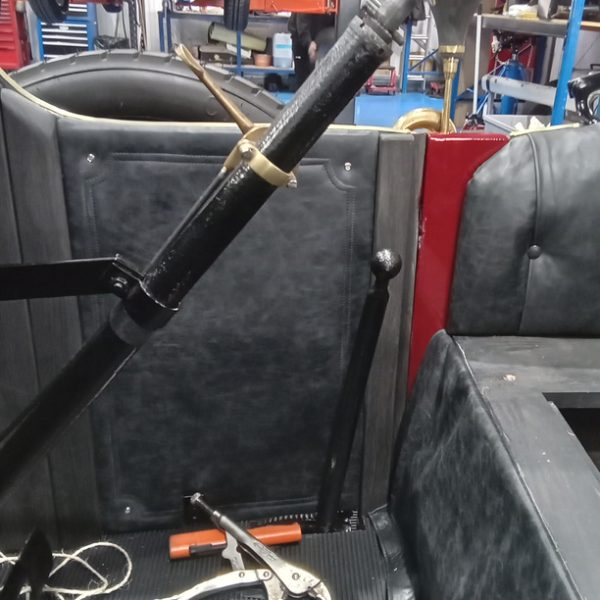
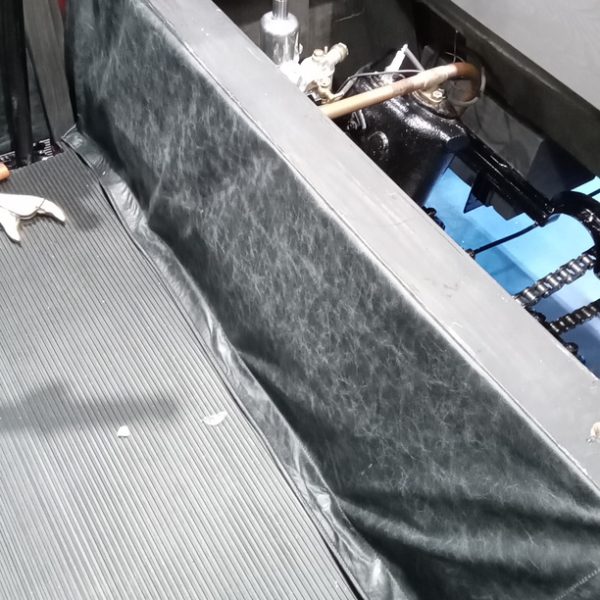
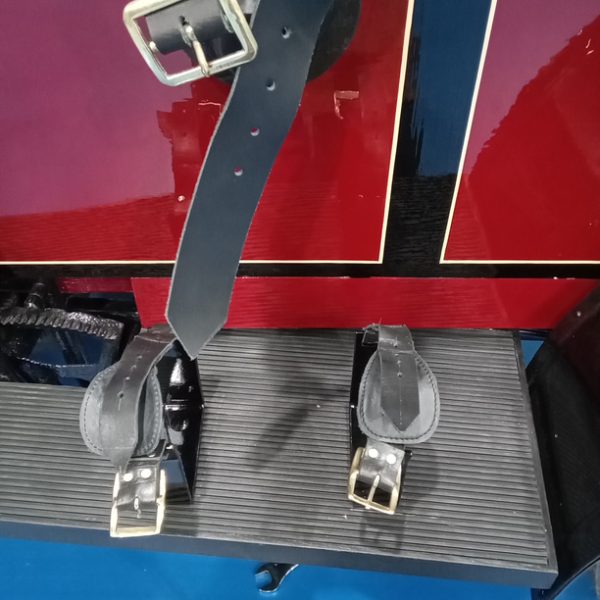
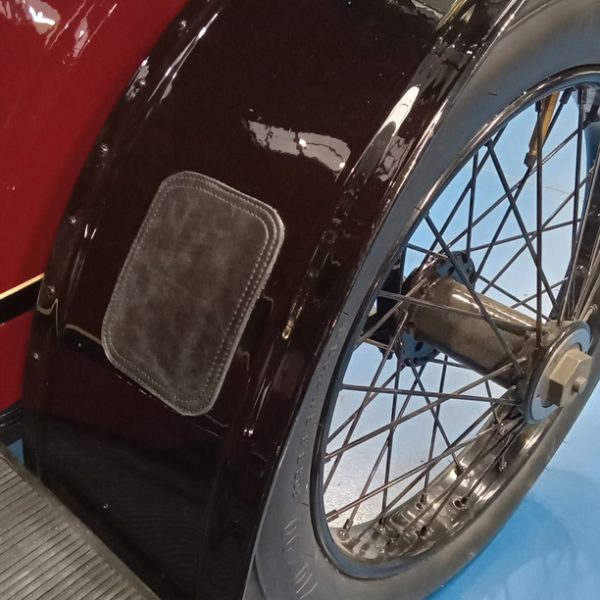
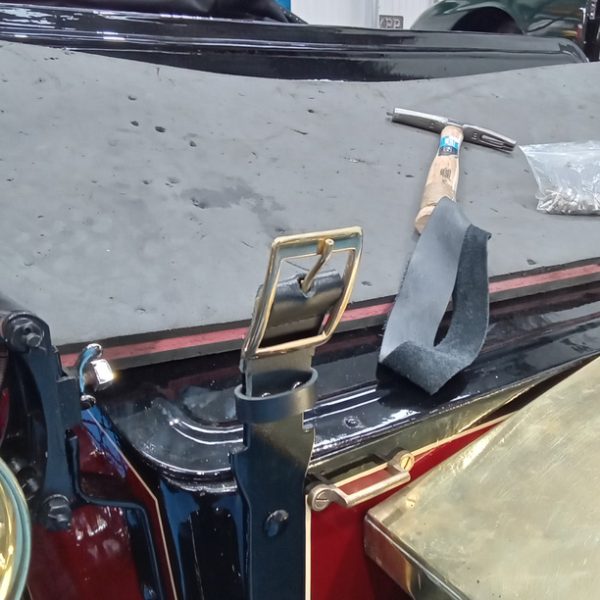
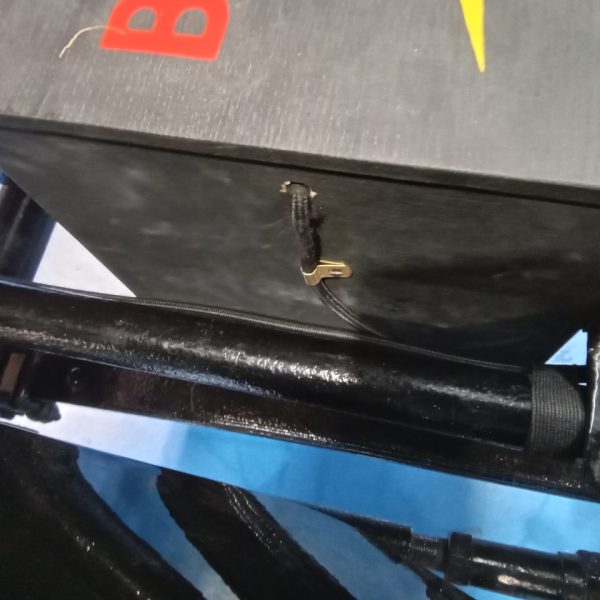
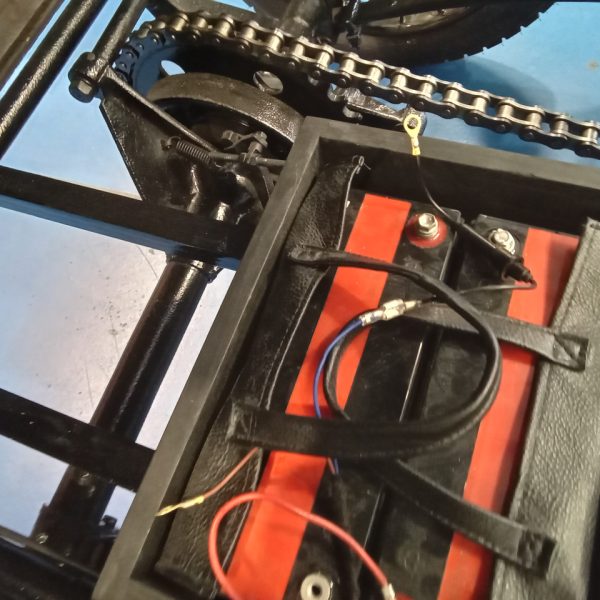
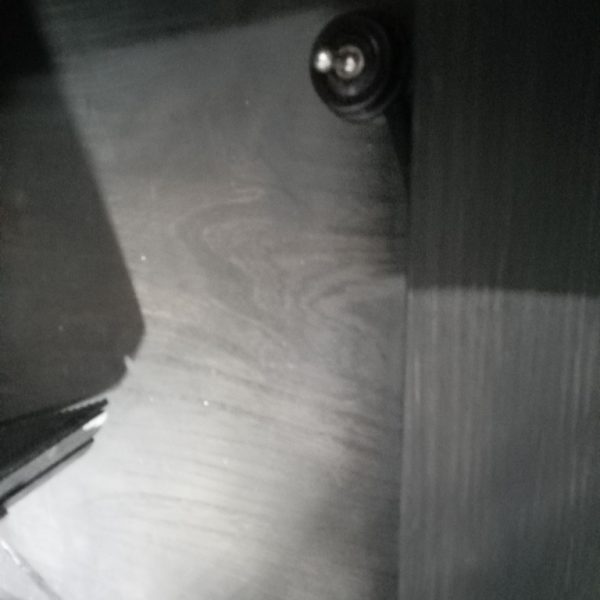
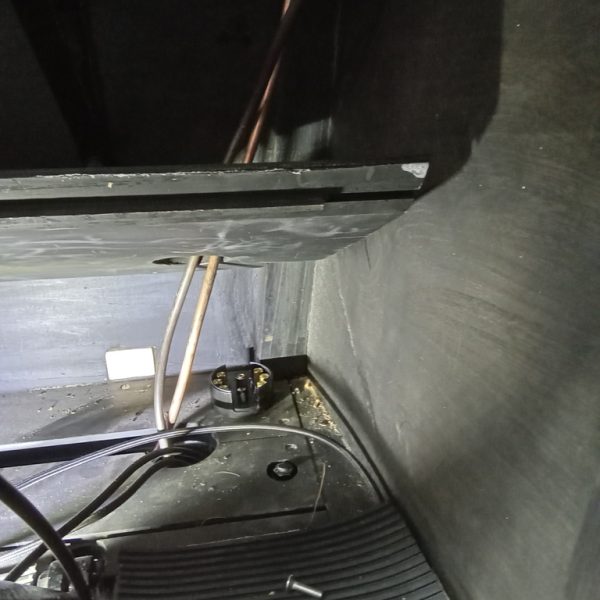
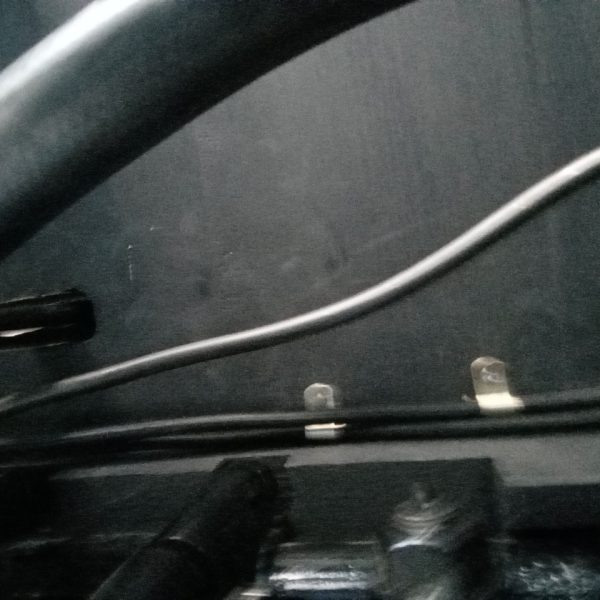

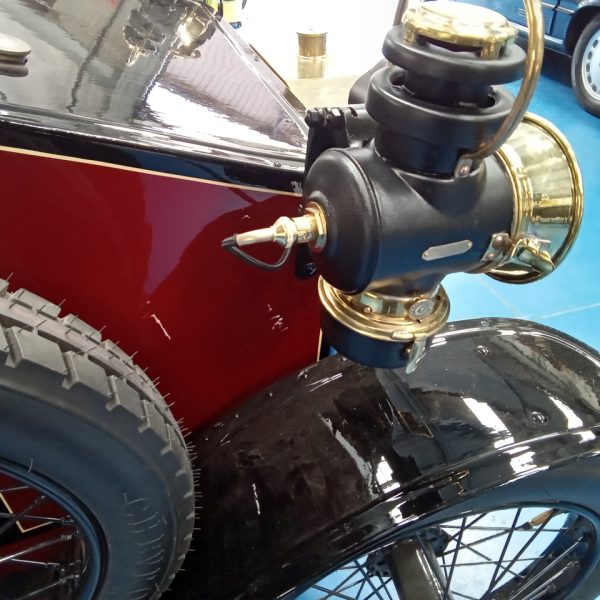
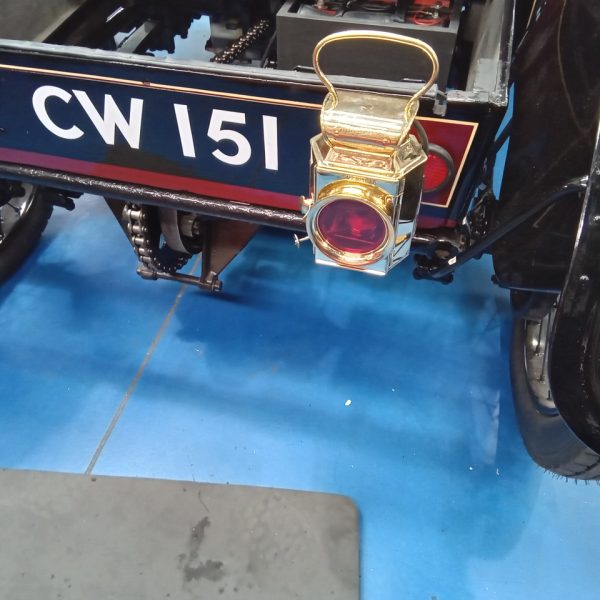
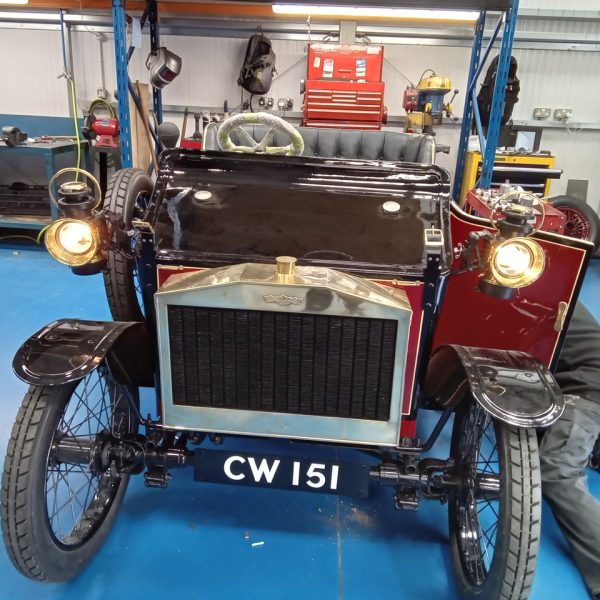
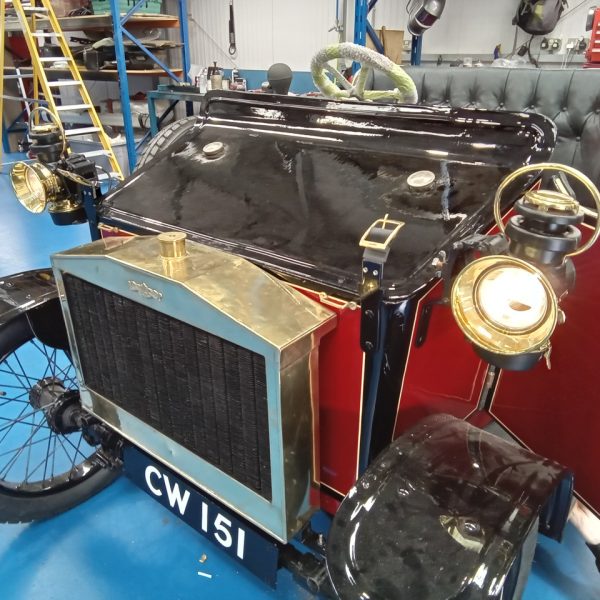


The final parts of our 1905 Riley 9HP restoration project have been in the booth under the gun of our paint technician Mauro.
Mauro has been working on finishing these handmade parts in thick, gloss black for the workshop team to get back on the car ahead of the car’s unveiling at the Practical Classic Restoration Show at the Birmingham NEC this weekend.

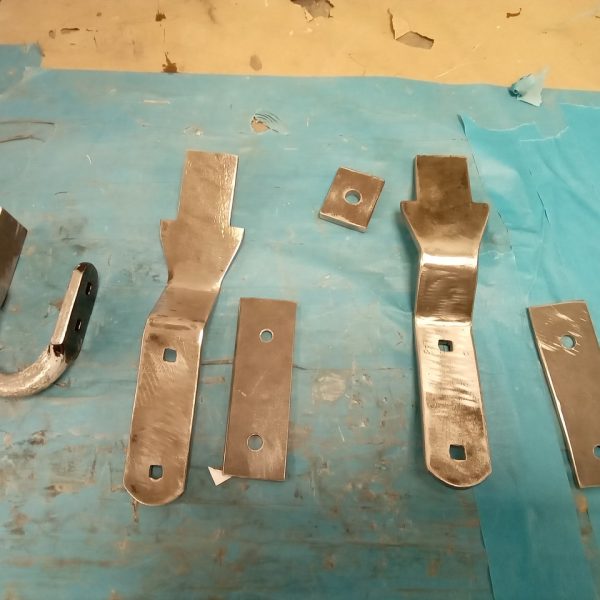
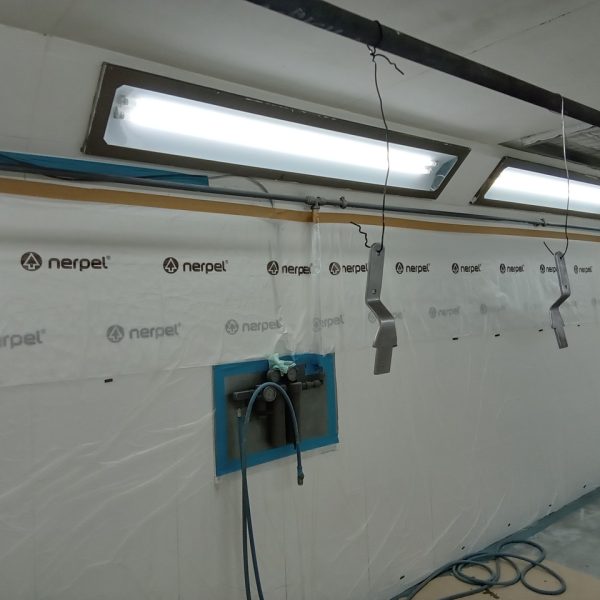

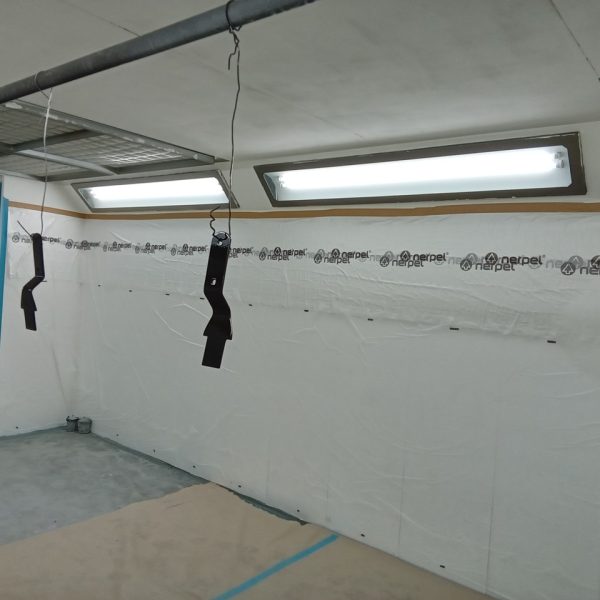
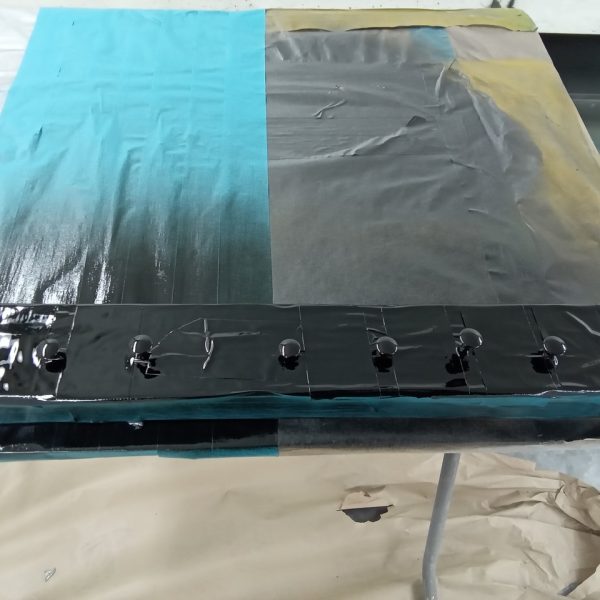
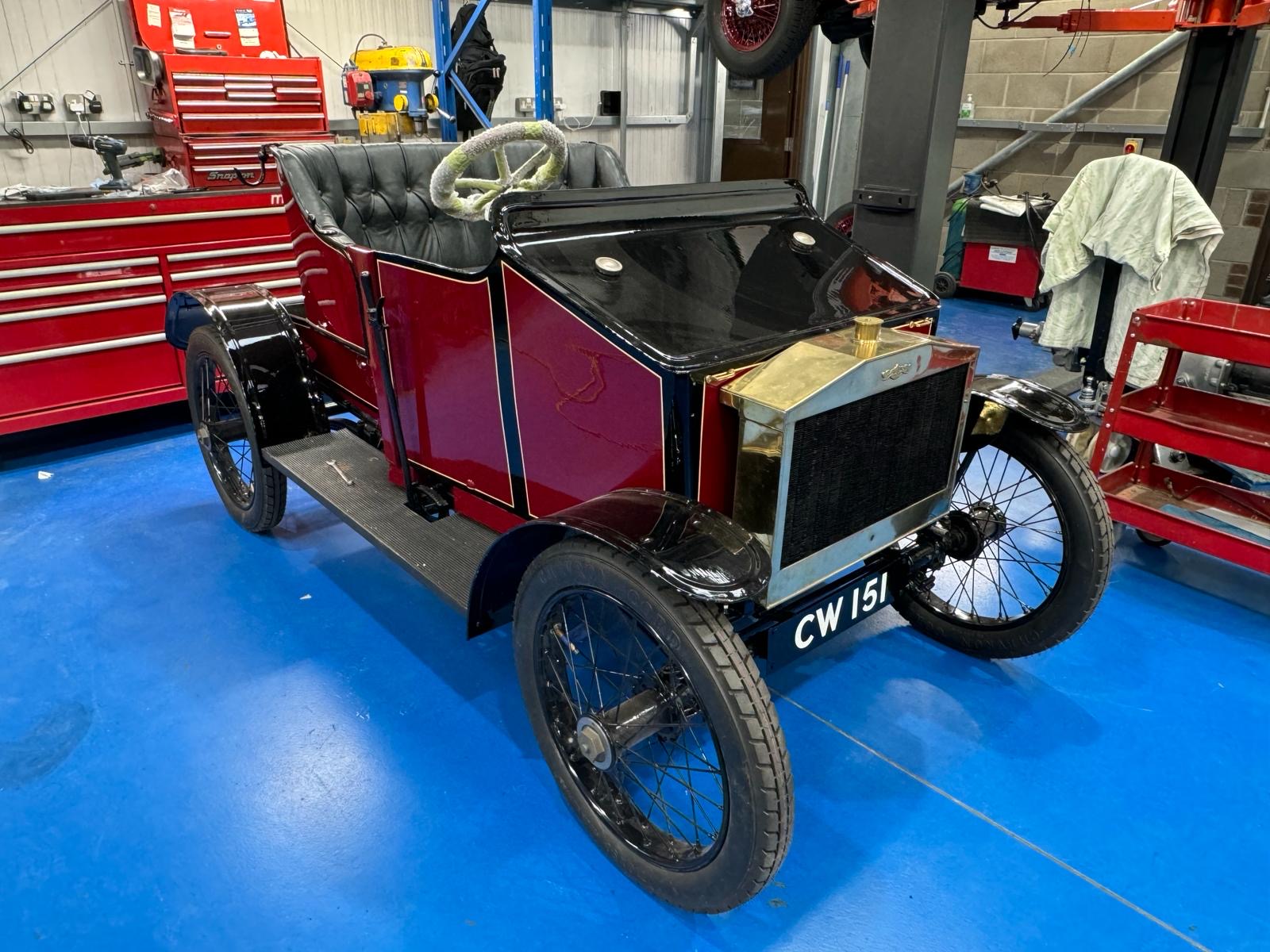
Ahead of its unveiling at the Practical Classics Restoration Show at the Birmingham NEC this weekend, our restorations teams have been working flat out to get our 1905 Riley 9HP ready for its first public appearance in what is thought to be nearly 70 years.
The trim team have worked on getting the bench seat in place and the moldings secured ahead of the fabrication team coming in to put on some of the beautiful bronze accent pieces alongside the mechanical team getting all of the final pieces into place before systems checks.

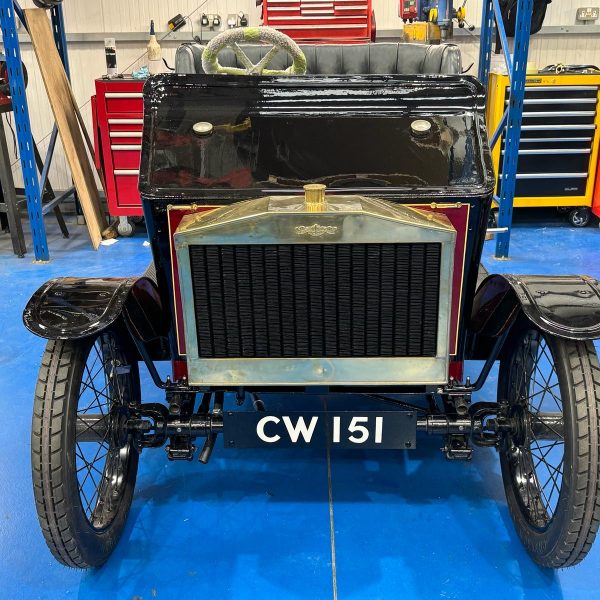


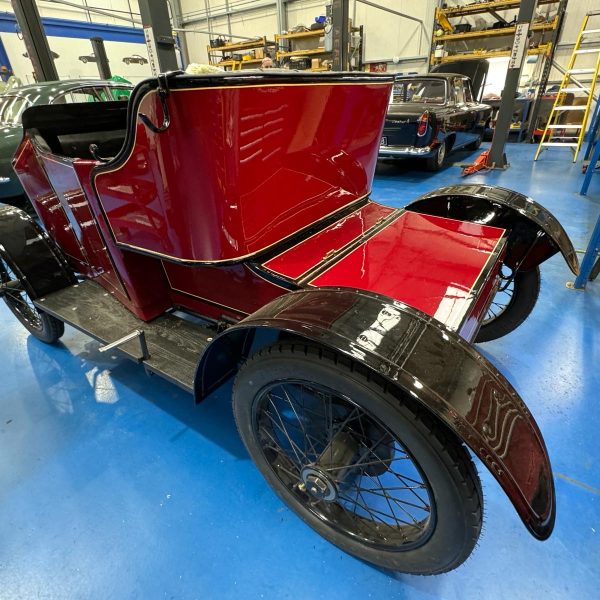

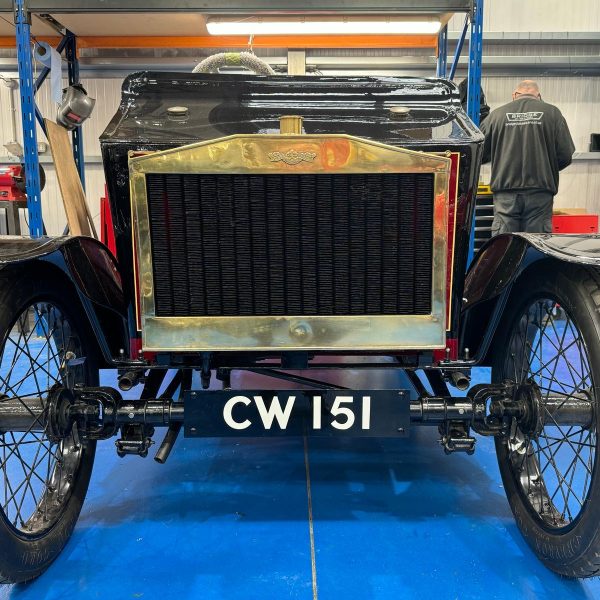
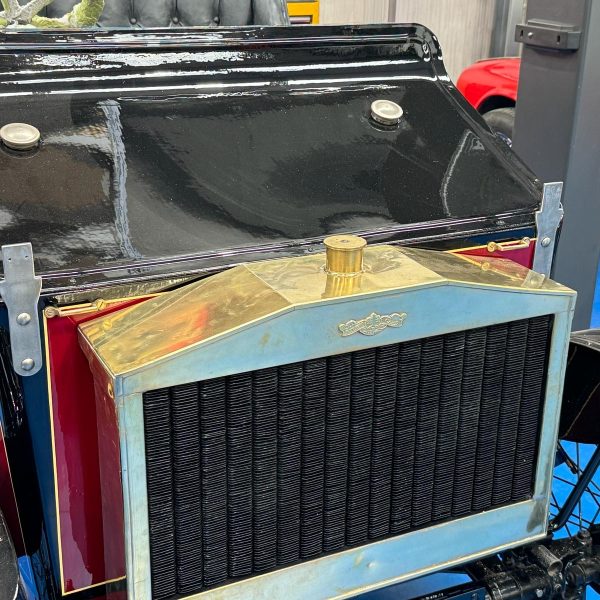
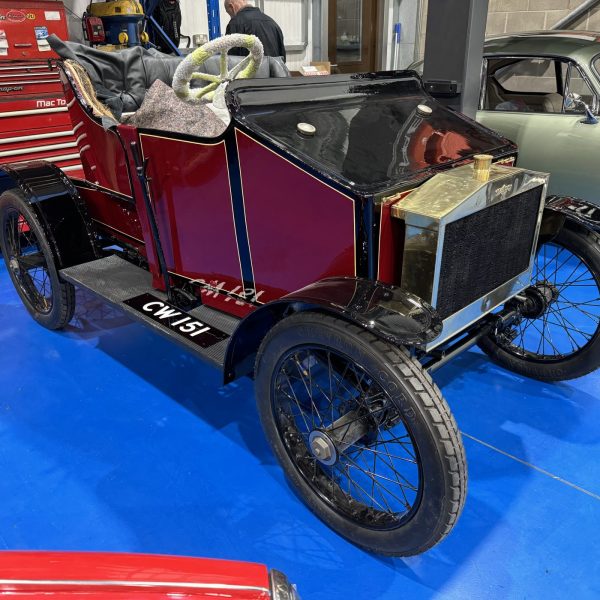

The backrest of the our 1905 Riley 9HP seat is actually fitted on the body of the car and, as a result, could not be fitted until the vehicle returned from paint. Lydia placed the seat in and began to line up the pleats so that they were straight. She had to stuff the seat with additional coconut fiber to give them extra puffiness and to cover any lumps and bumps in the wooden bodywork. The most difficult part of this was deciding how to get a tidy finish on the front curve of the seat, as she couldn’t staple this to the bodywork.
After Lydia finished stapling the seat to the body, she cut away the excess and then applied piping to the back edge. The raw edges of the fabric will then be covered with a beautiful brass beading that we have bought to replicate the original.
Lydia also made some straps to replicate the original ones, which hold the roof bars at the correct distance apart. The hood has also been made with great care taken to ensure it looks as close to the original as possible.
Various components have been in the paintshop being painted in dtm black.

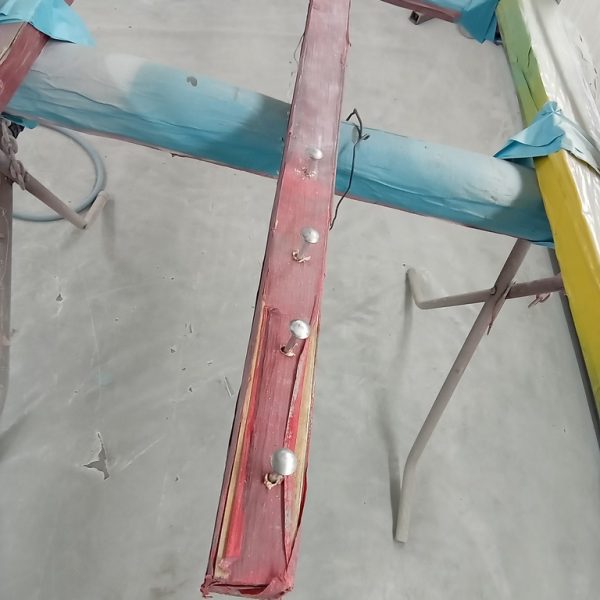
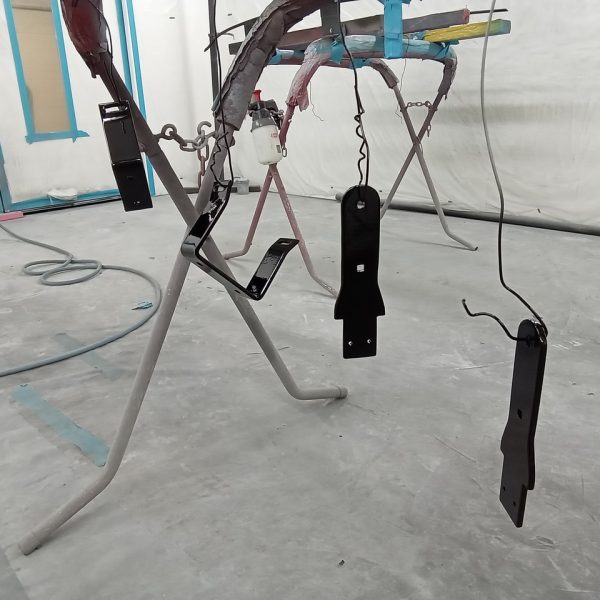
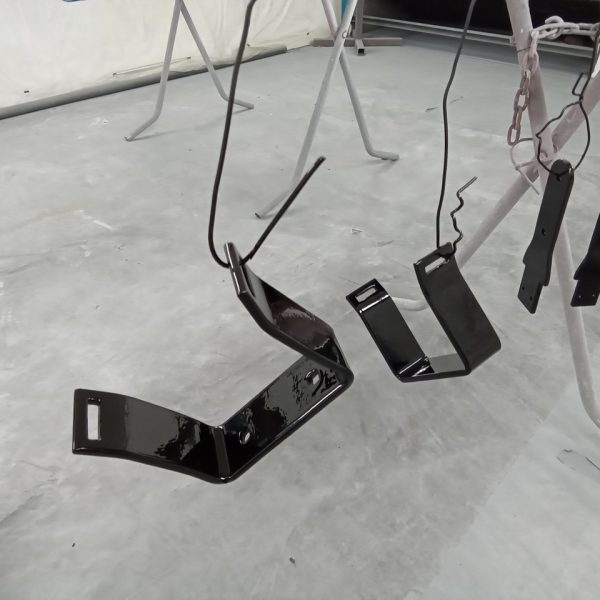
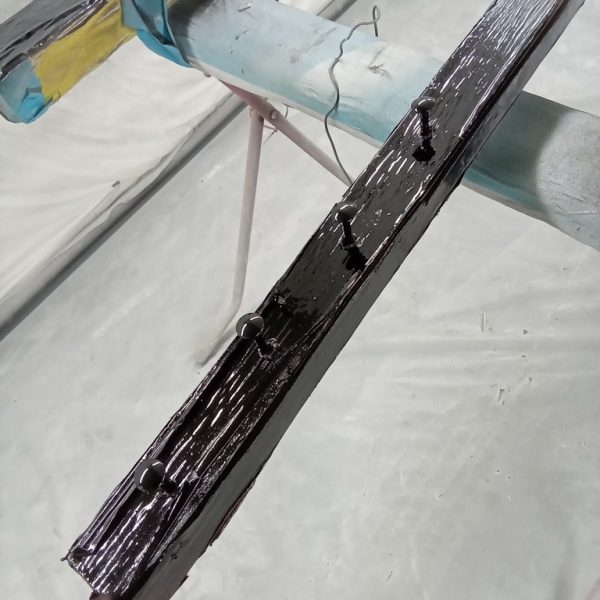

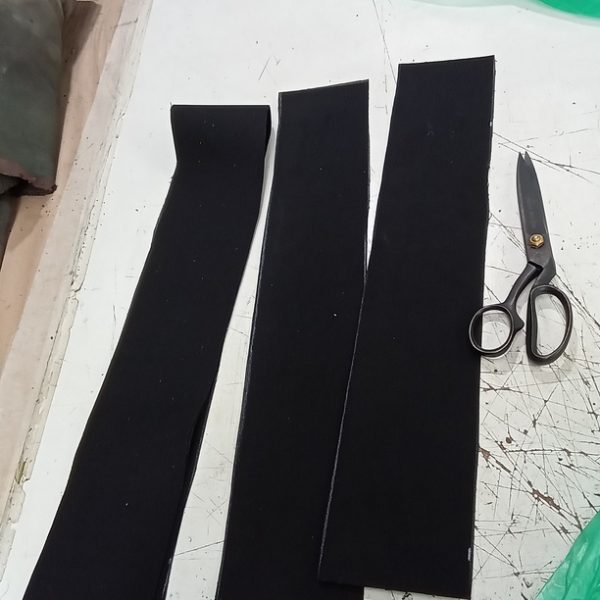

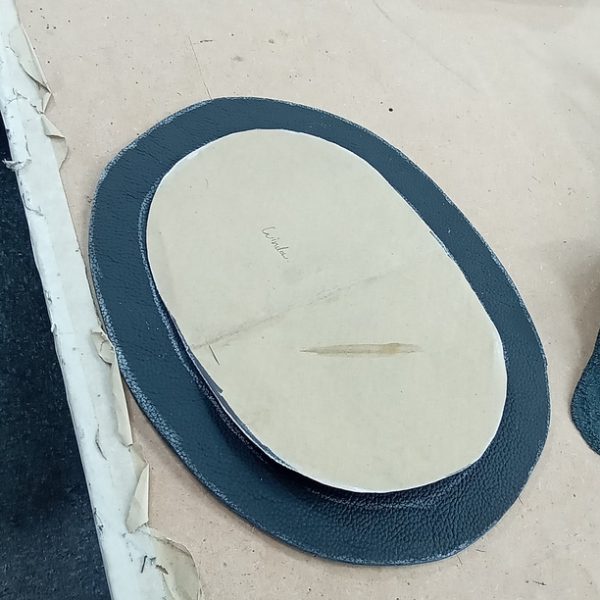
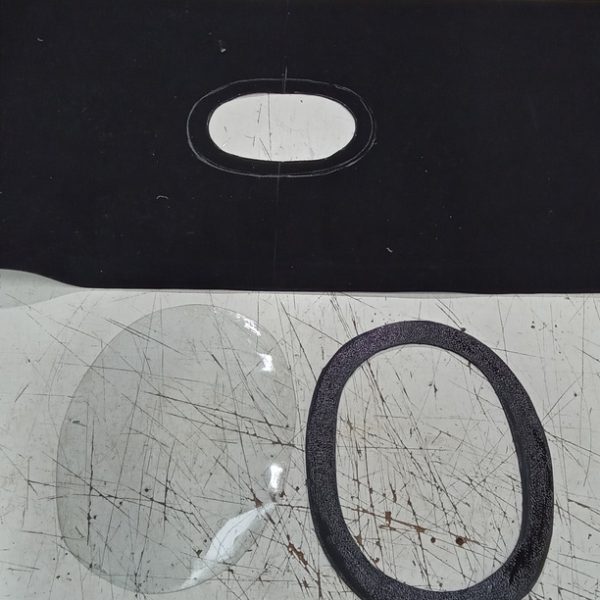
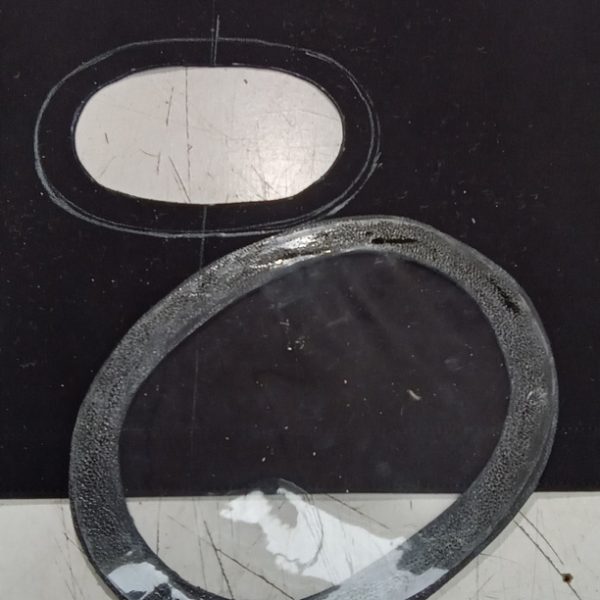
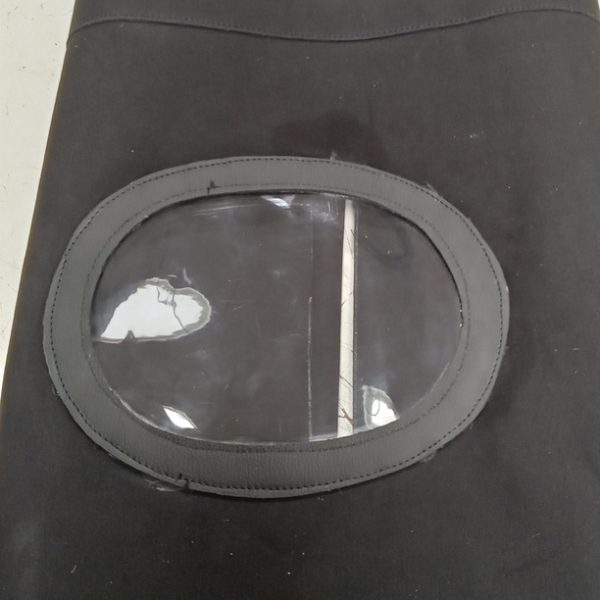
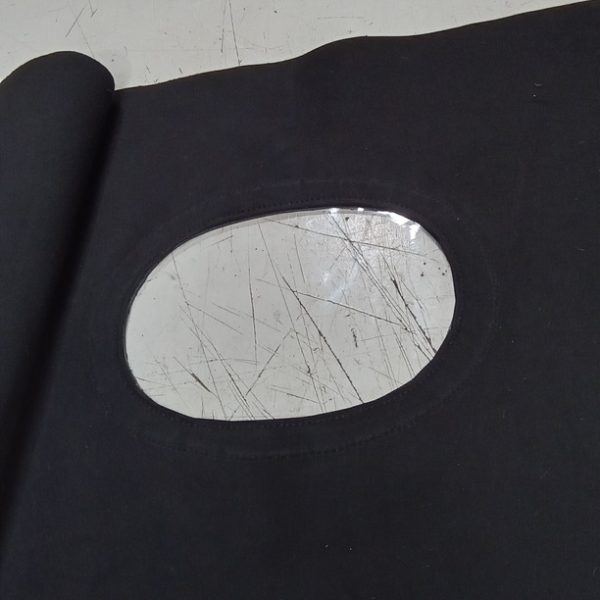

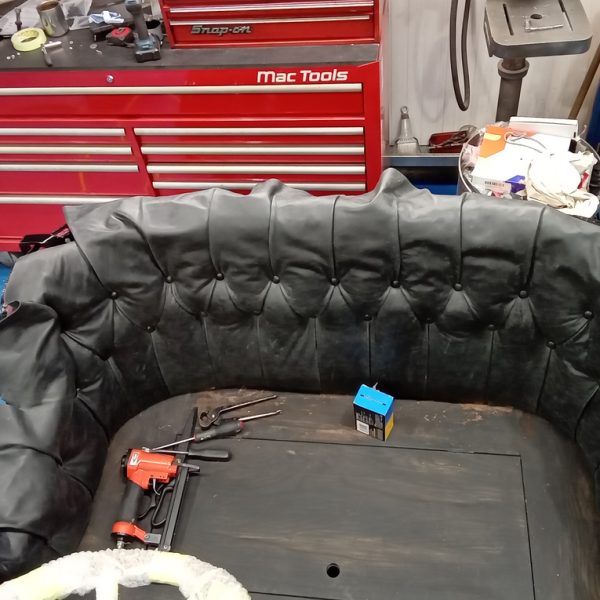
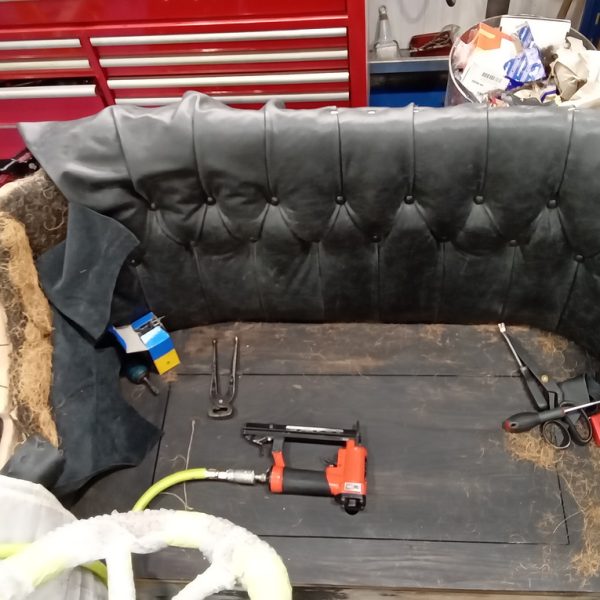
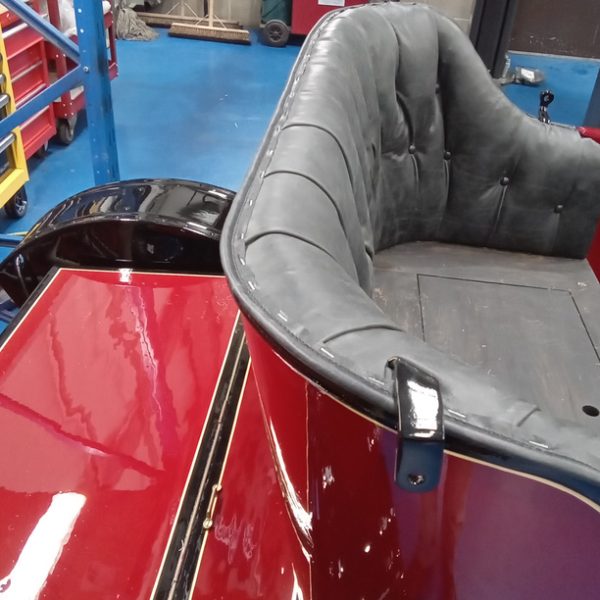

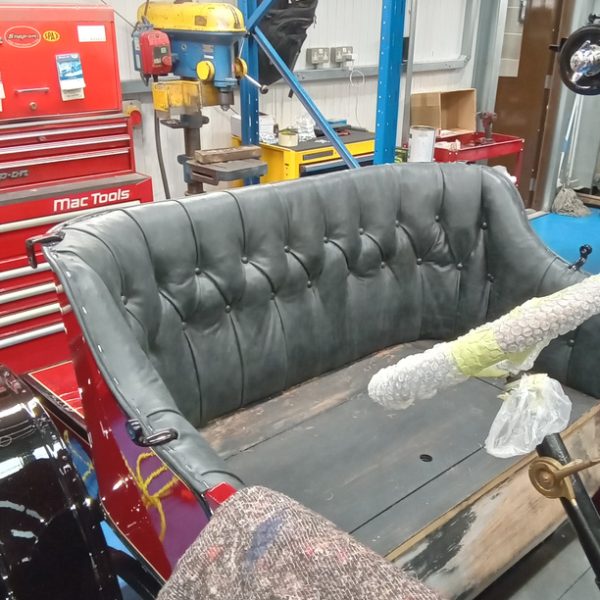
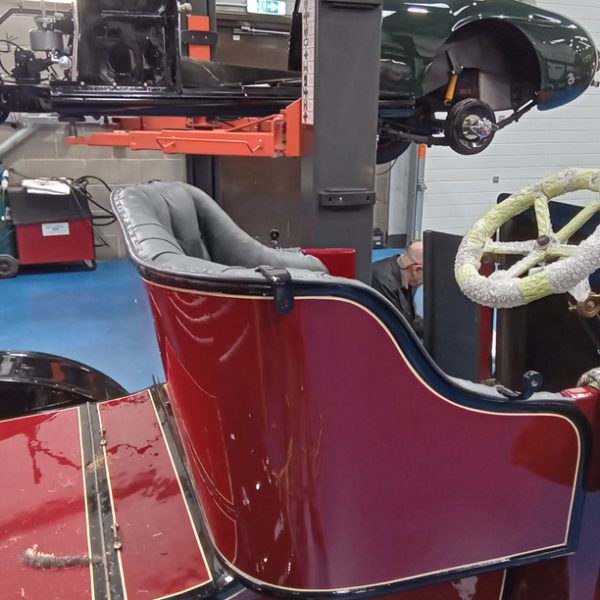
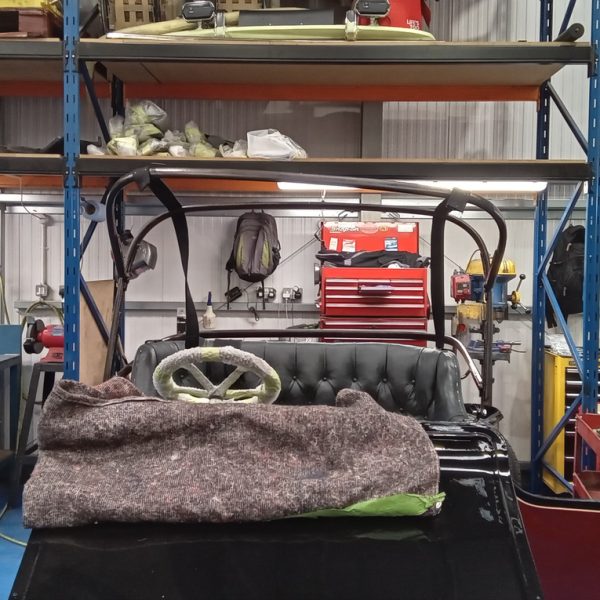
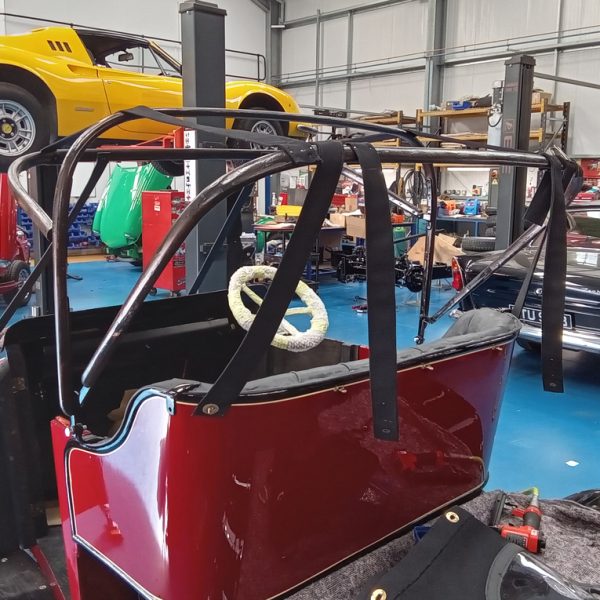


In February our Riley 9hp underwent the next stage of its restoration by paying a visit to Joby Carter’s workshop in Berkshire.
Joby Carter is a traditional sign writer who is an expert in fairground style art. Up until 2022 his work could be seen decorating every ride as part of his touring steam fair. He has documented many of his creations alongside tips and ideas in a series of books.
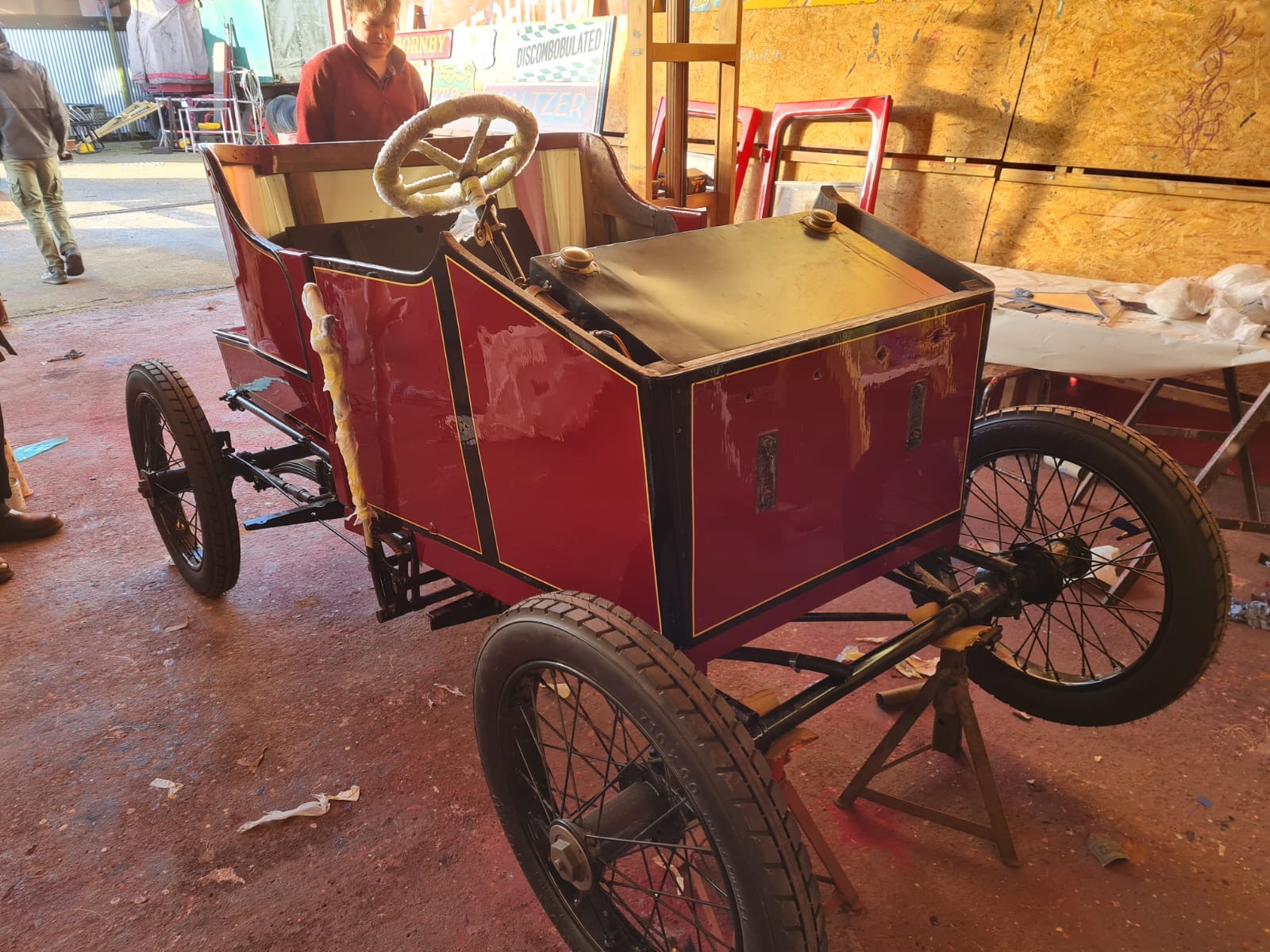
In accordance with vehicles of a similar age, Carter was commissioned by Bridge Classic Cars to paint our Riley 9hp with a neat design. The pristine line work edges the shapes and contours of the car, outlining the doors. The sleek likes create an elegant and opulent aesthetic.
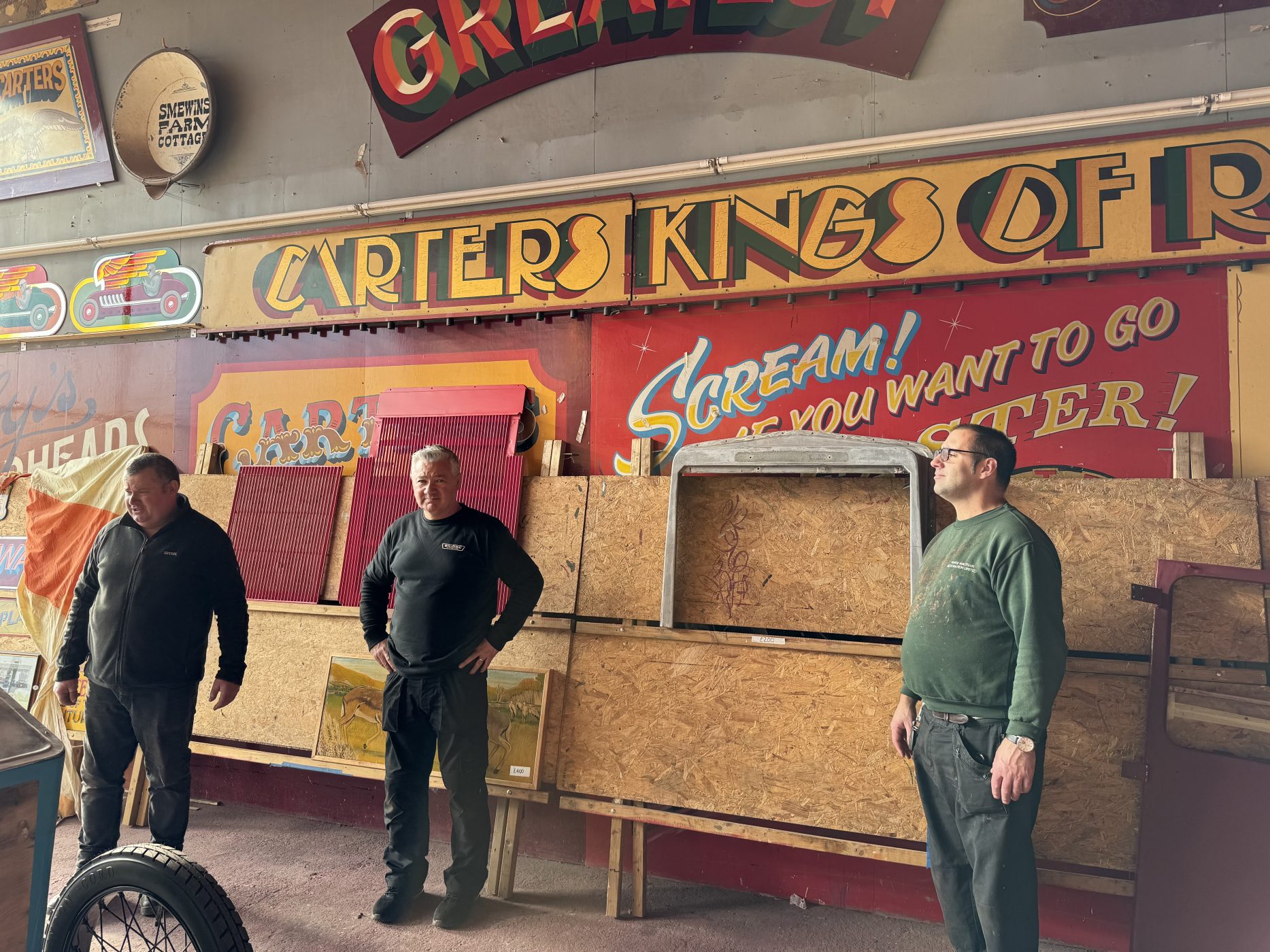
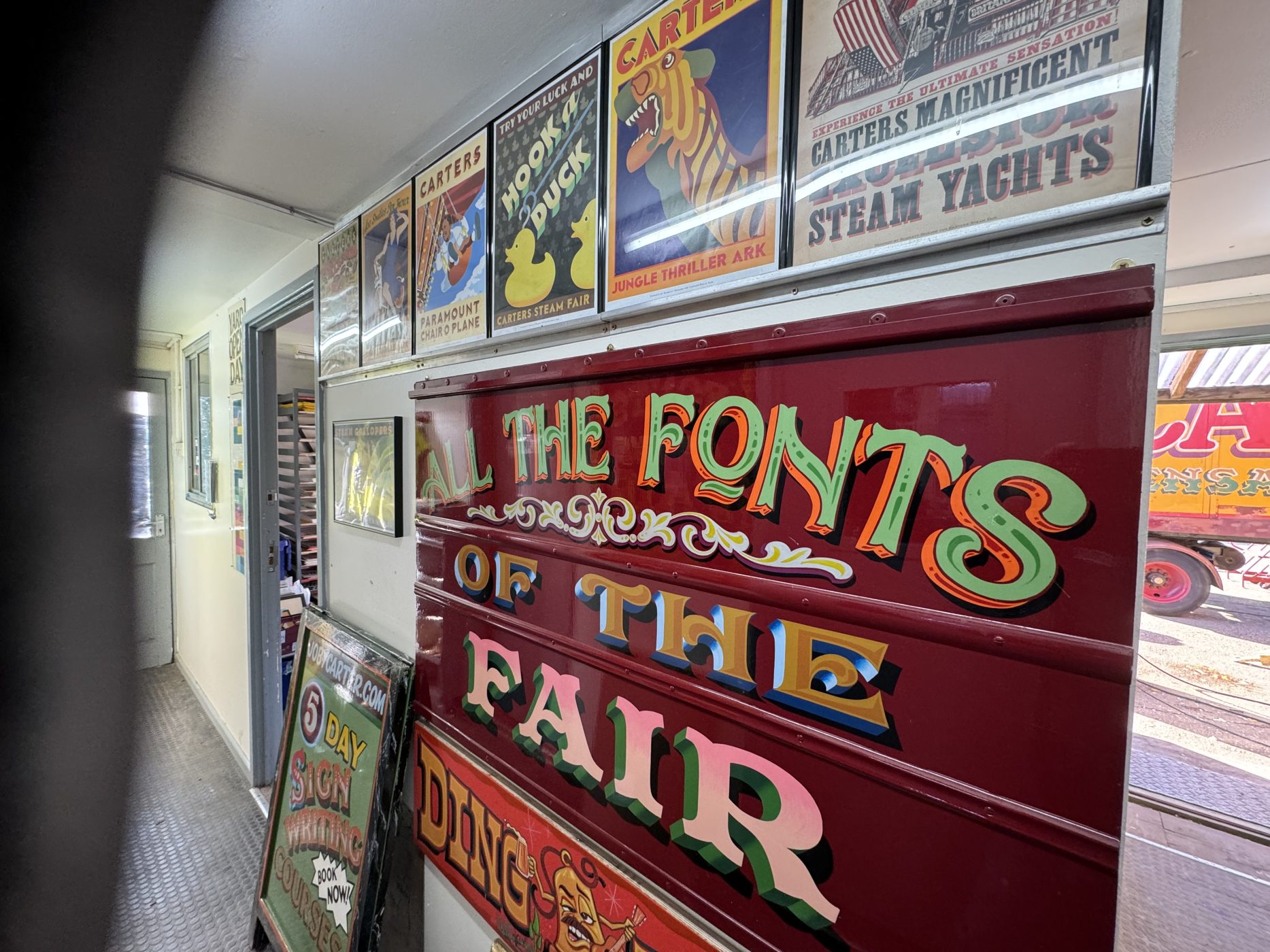
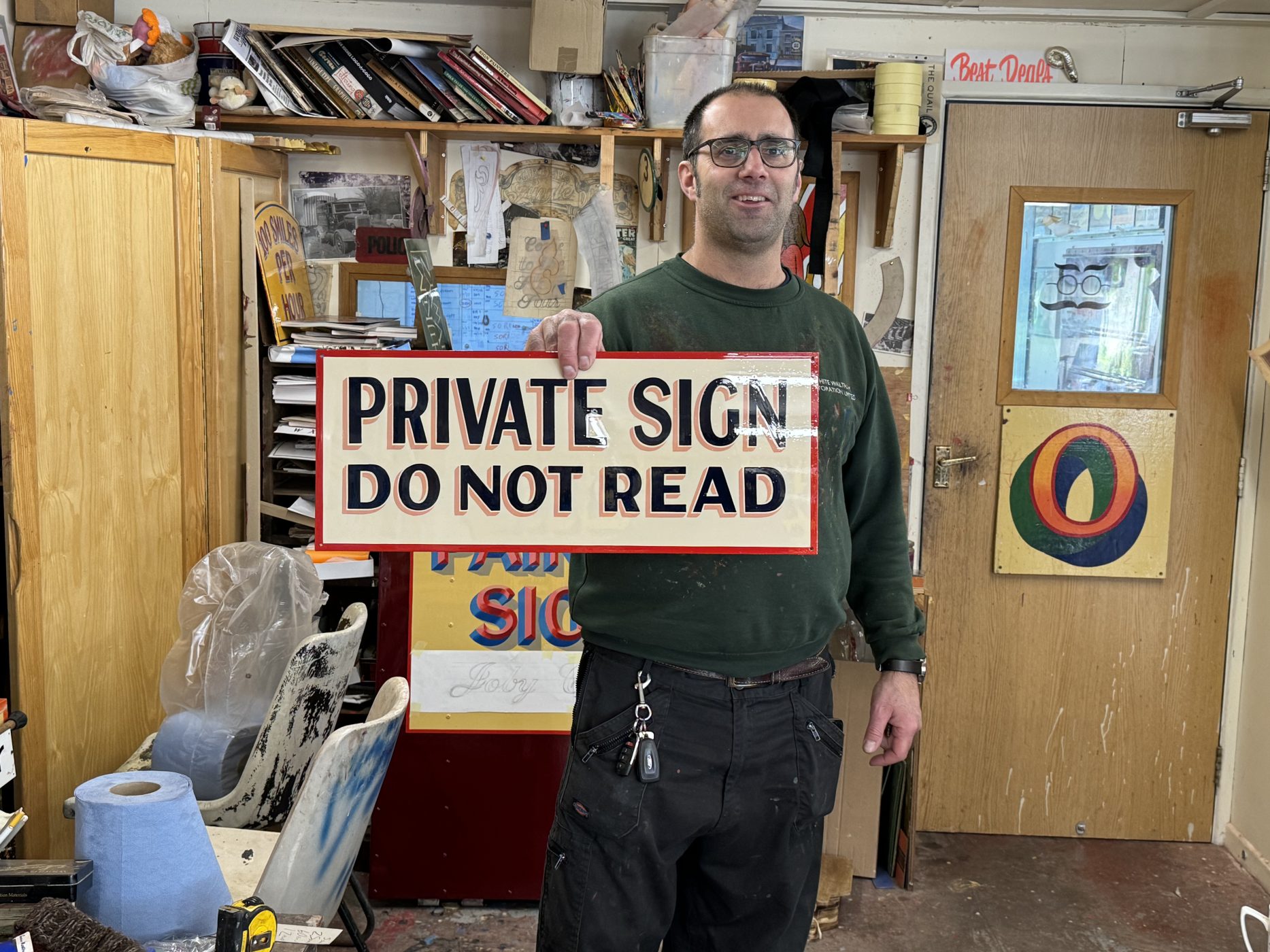

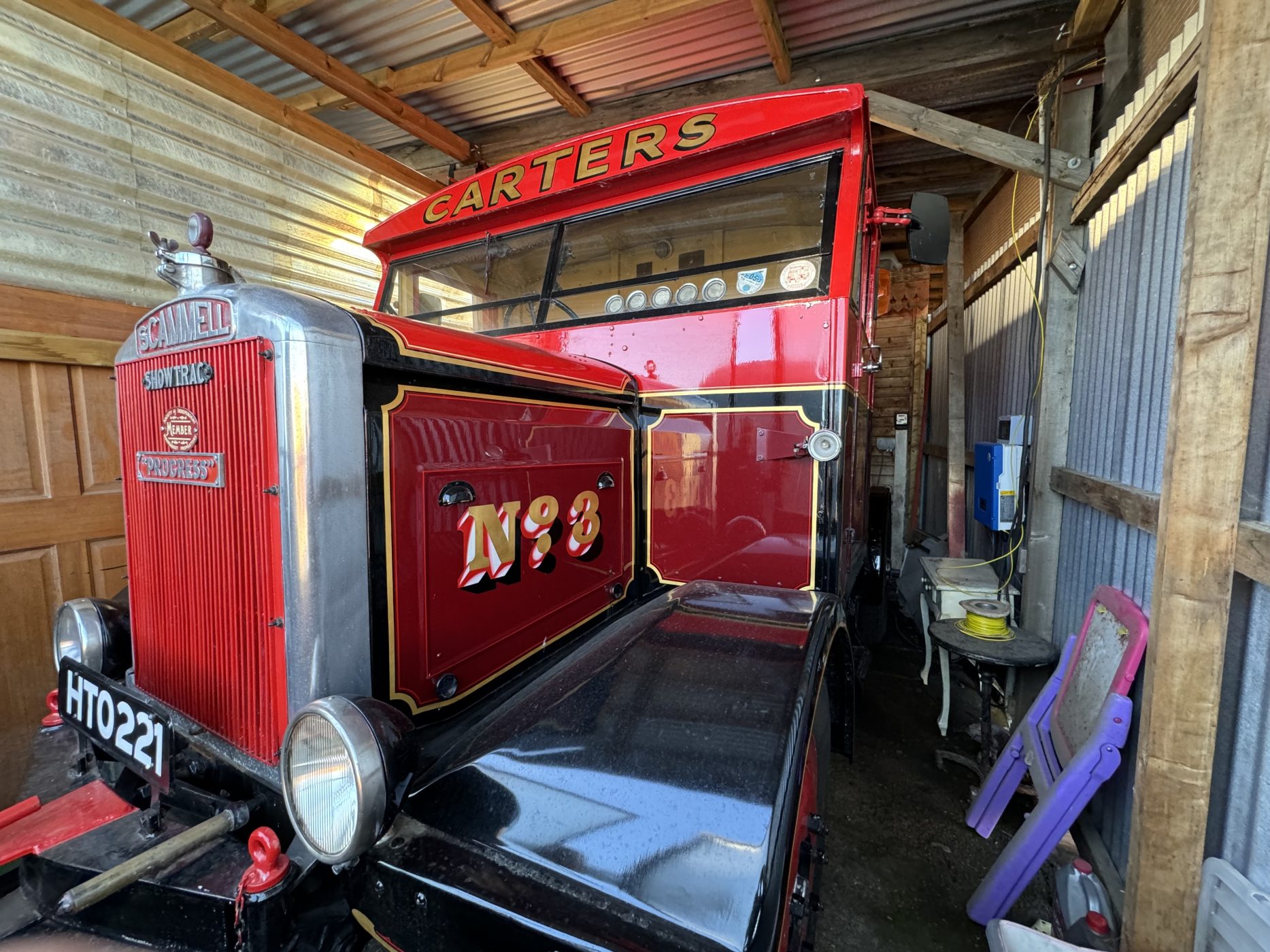
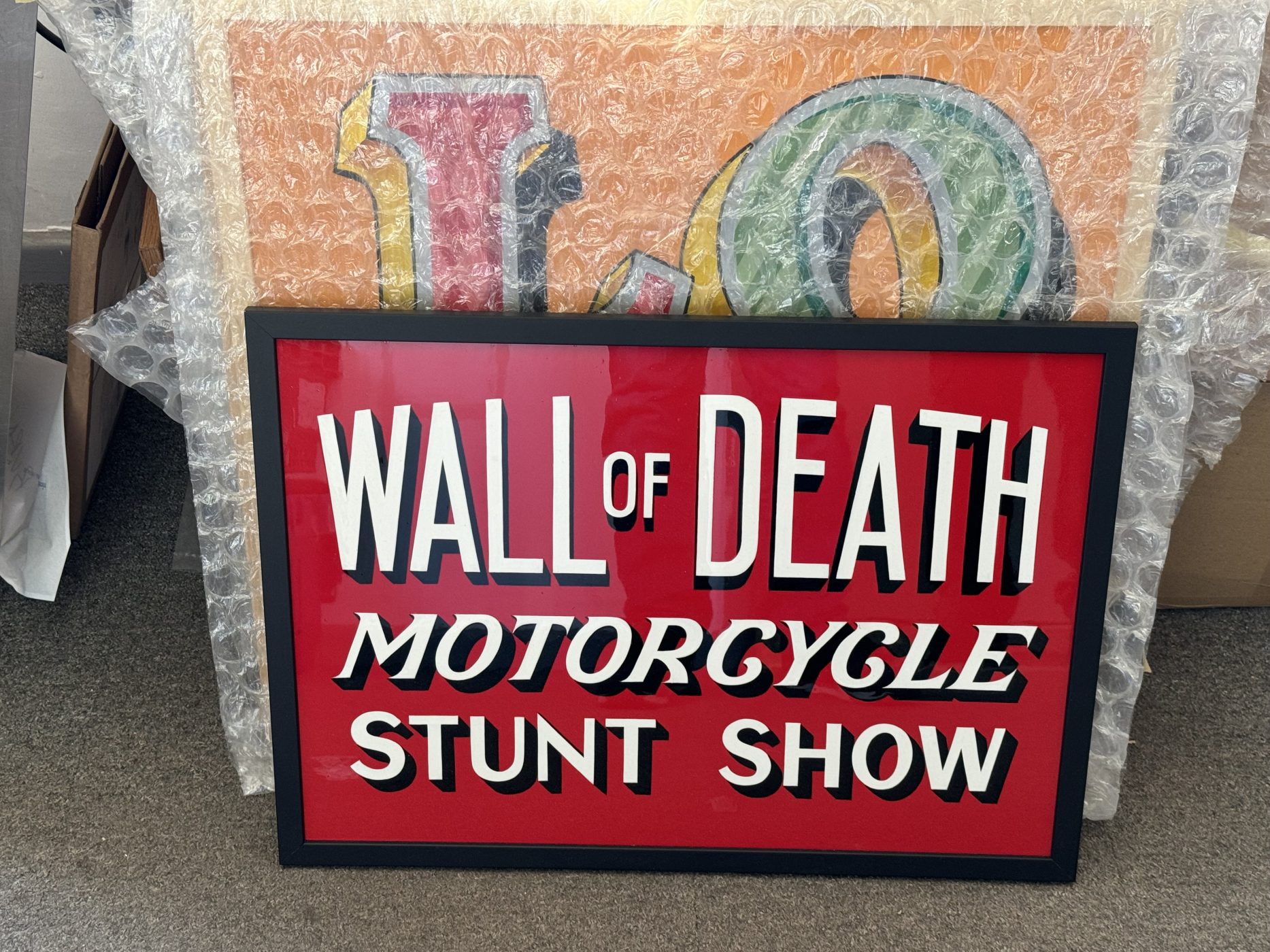
Lydia made an internal door card for the opening door on our 1905 Riley 9HP.
She first made a template from paper to ensure the correct shape, and then she cut this out from card. She then made her own design based on the pinstriping on the paintwork of the vehicle. She will affix this door card to the door when she has finished staining the wood, and the door handle has been altered and fixed on.

Our very special one of one 1905 Riley 9HP has returned to the workshop after being handpainted.
As you can tell from the photos, it looks very different to how it did when it left, but there’s no denying it looks as good now as it would have done over 100 years ago.
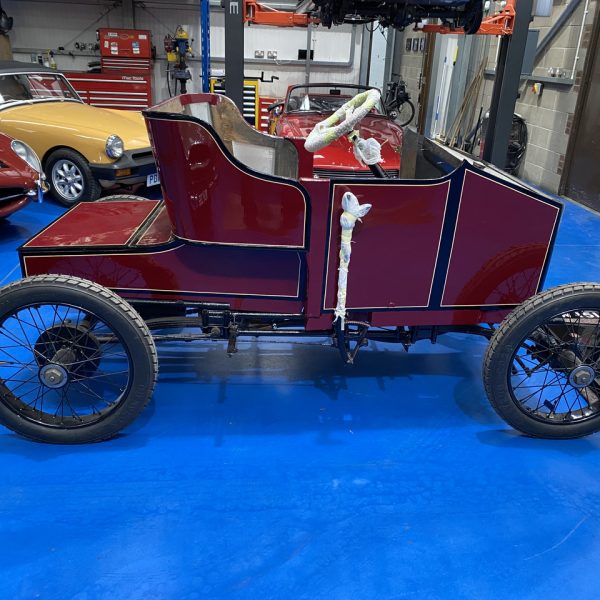


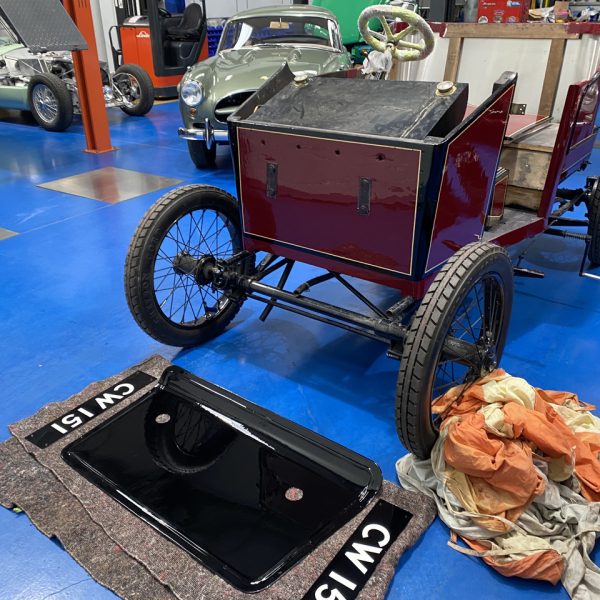
As we continue to see the amazing progress being made on our 1905 Riley 9HP, meet Joby Carter, the incredible talent behind the colour transformation.
Joby is a traditional sign-writer, decorative artist, restoration specialist, author and teacher. He’s a master craftsman with his heritage decorative art skills including signwriting and the endangered craft of fairground art. As well as hosting signwriting courses, Joby is an artist in his own right, having had signwriting commissions for the Brit Awards, the English National Opera and Jools Holland, amongst others. He was also involved as a guest curator for Peter Blake’s curation in the Museum of Everything.
Up until 2022 Joby was the proprietor of Carters Steam Fair, the world’s largest travelling vintage funfair which toured from 1977 to 2022. Our award-winning vintage funfair was famous for its beautifully restored, authentically decorated fairground rides which dated from the 1890s to the 1960s.
Our very own Lily is a huge fan of Joby Carter’s work having followed him on social media for some time.
Joby has kindly sent through some photos to keep us up to date on the progress being made on our iconic 1905 Riley 9HP.

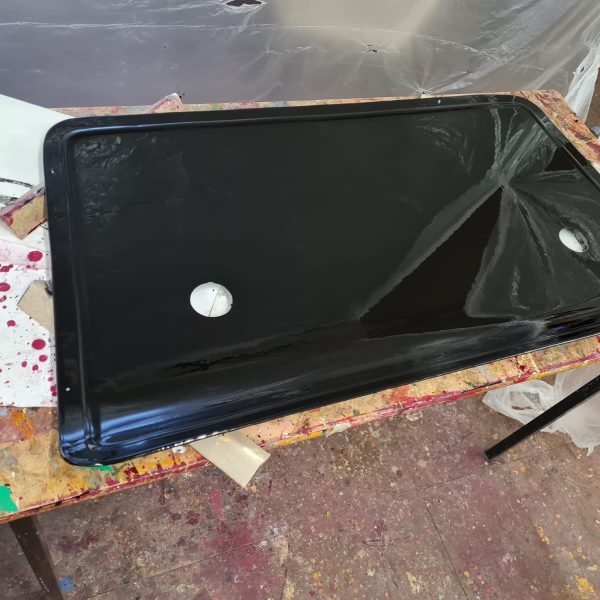
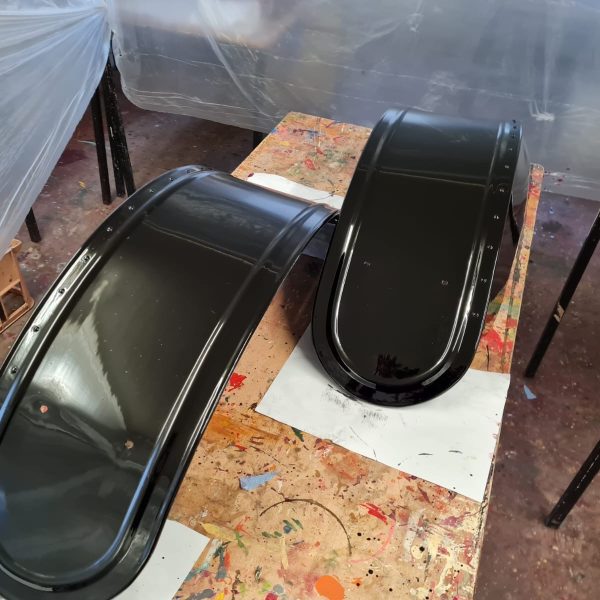
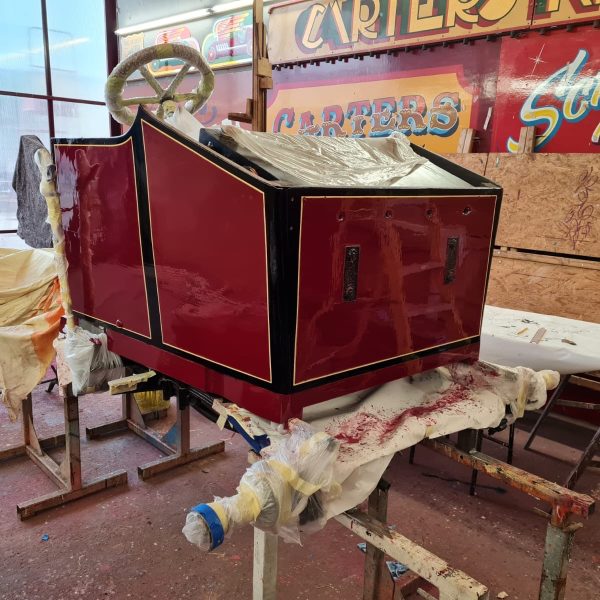
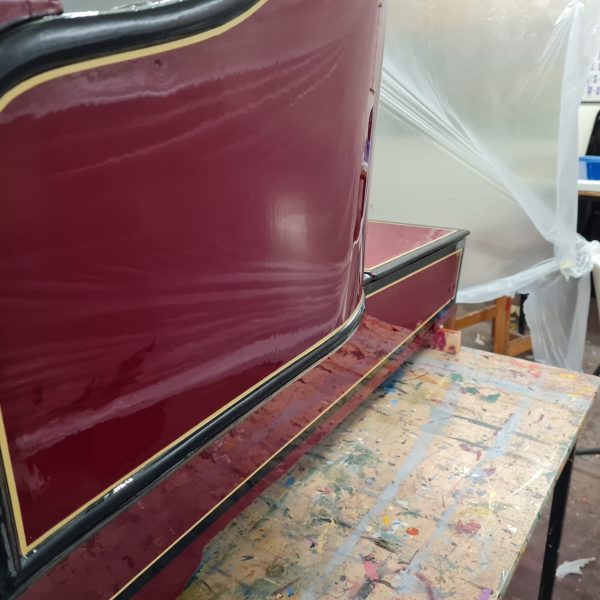

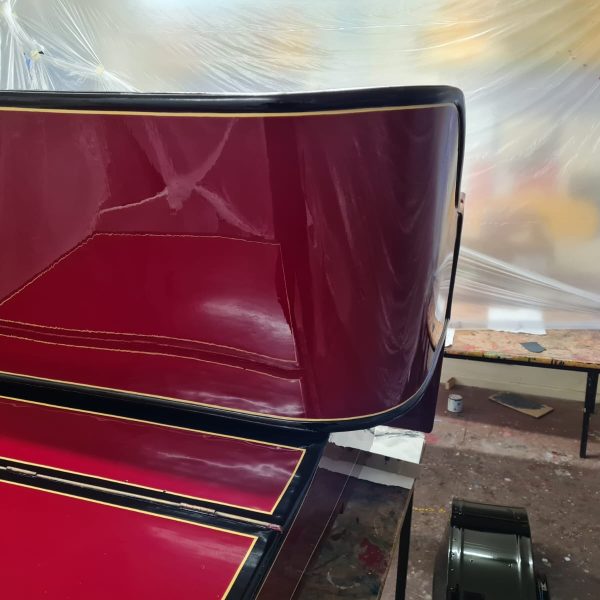
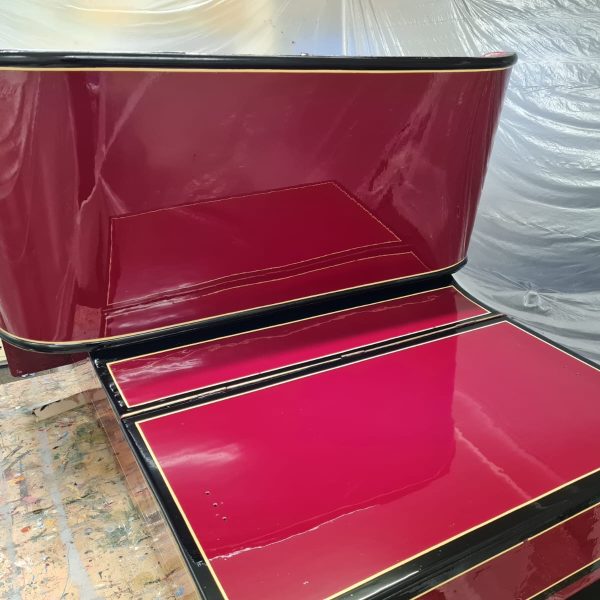
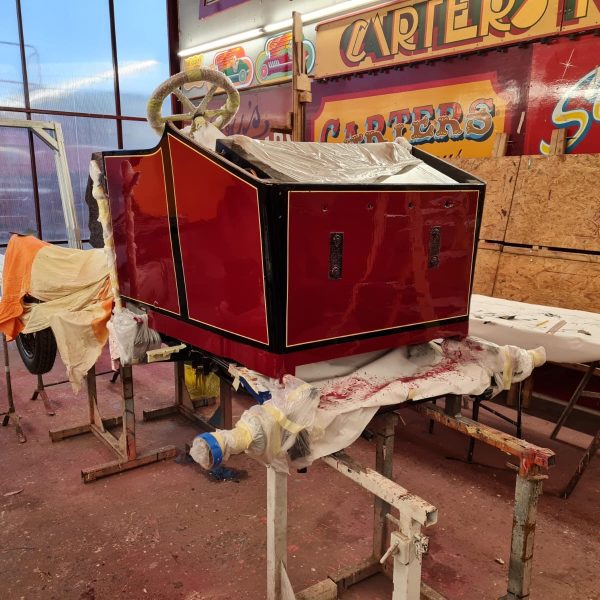
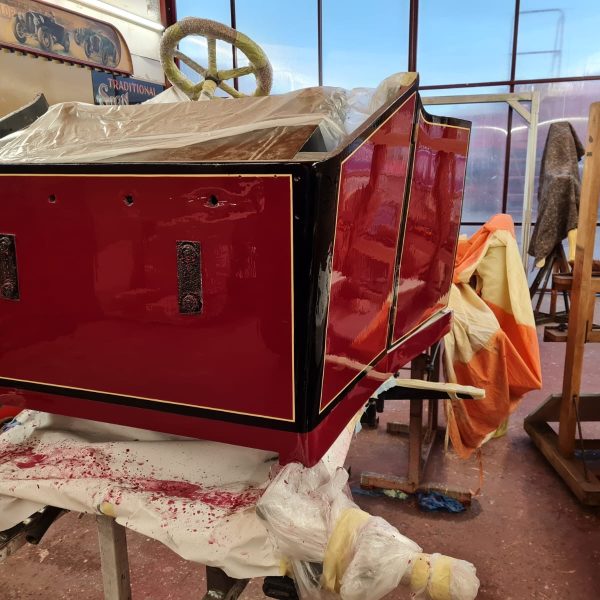
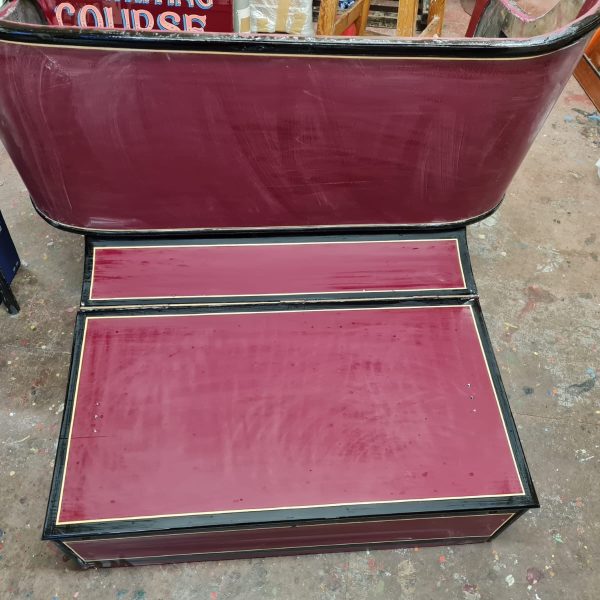
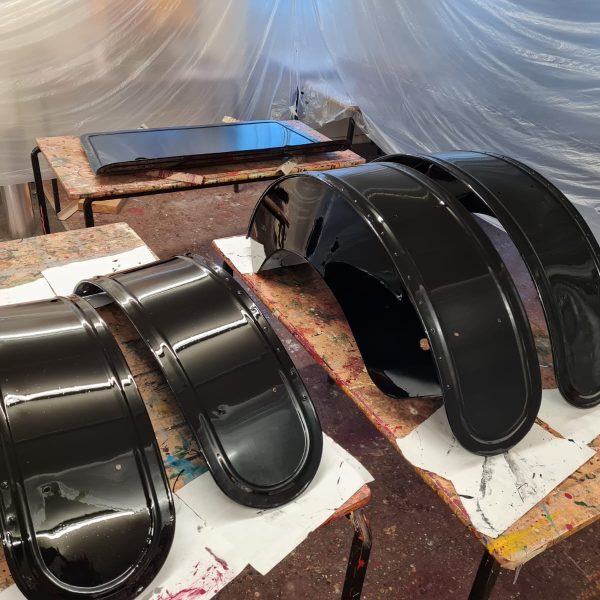

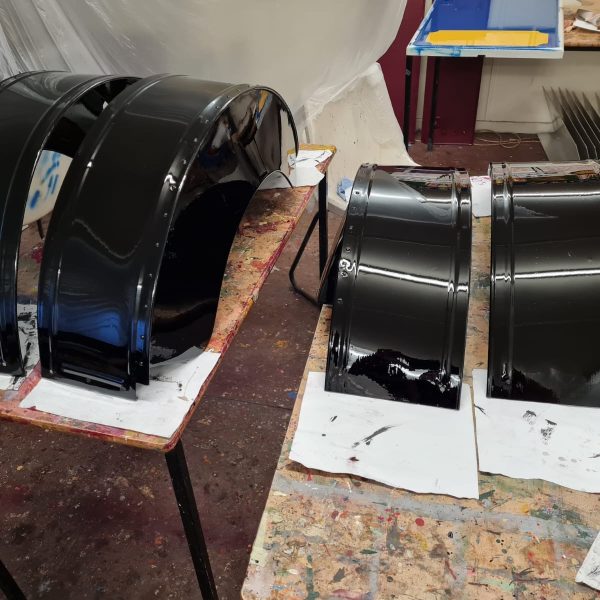

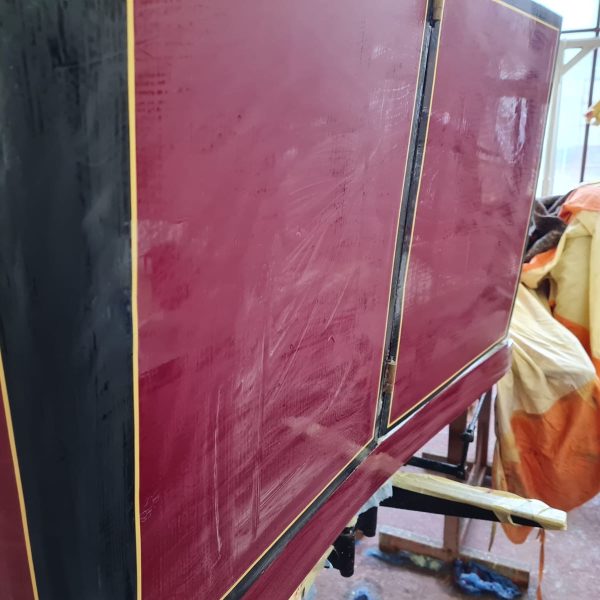

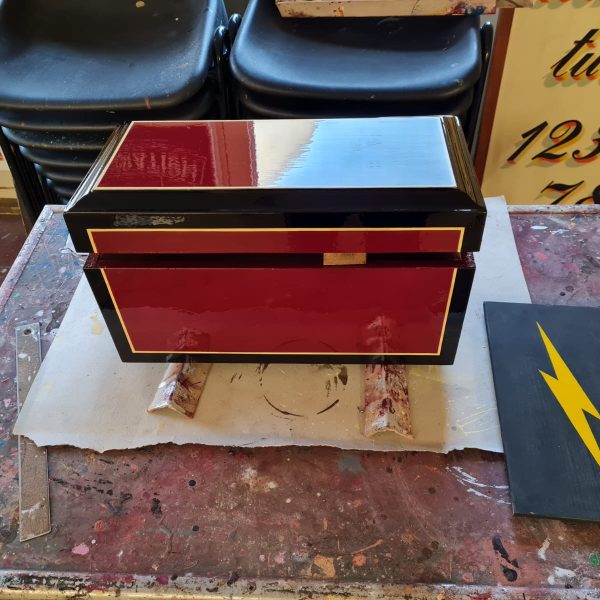
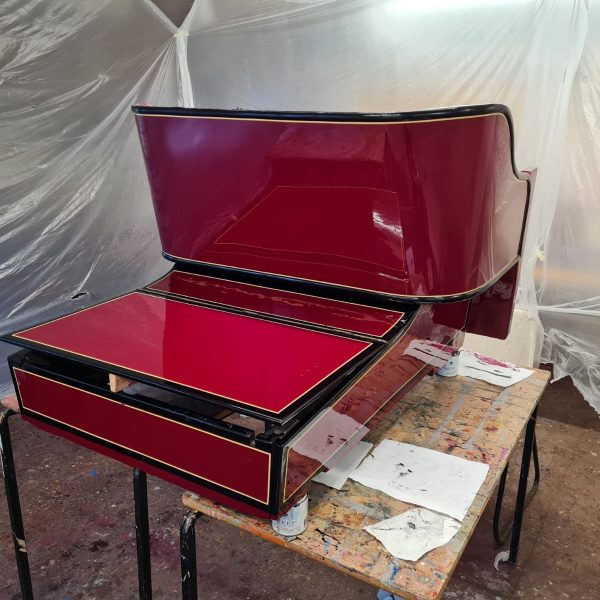
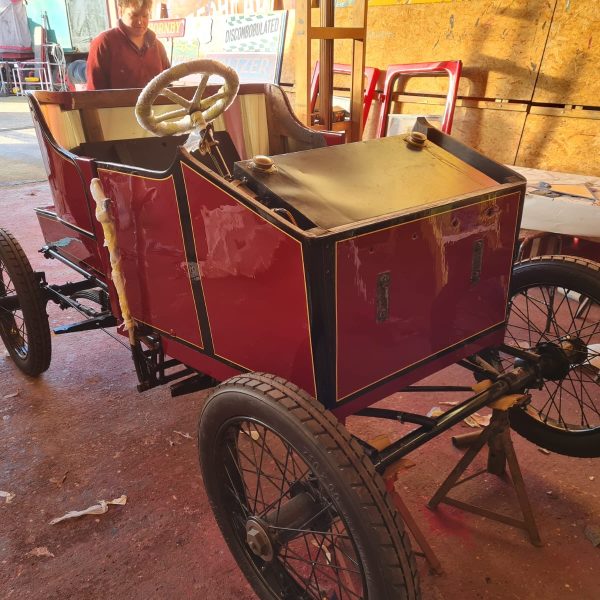
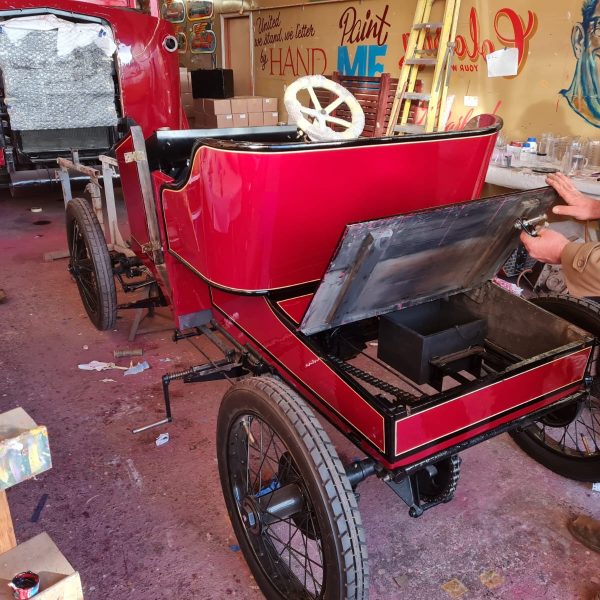

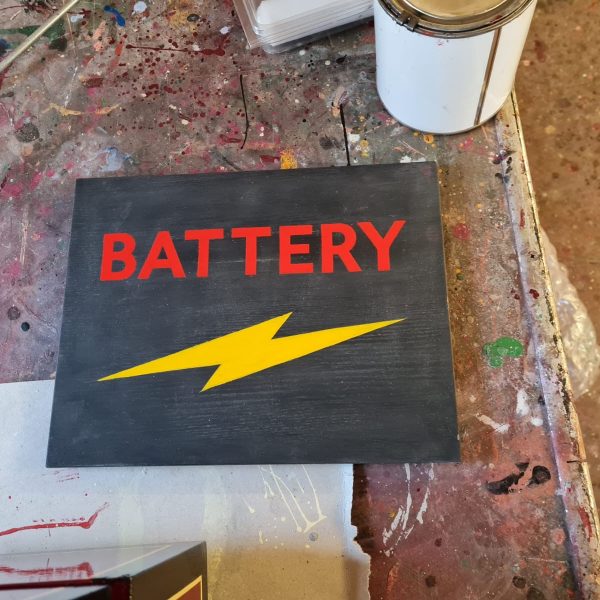
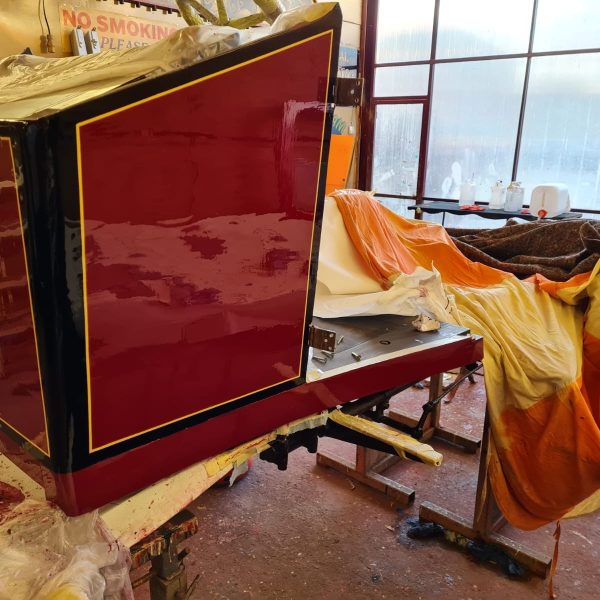
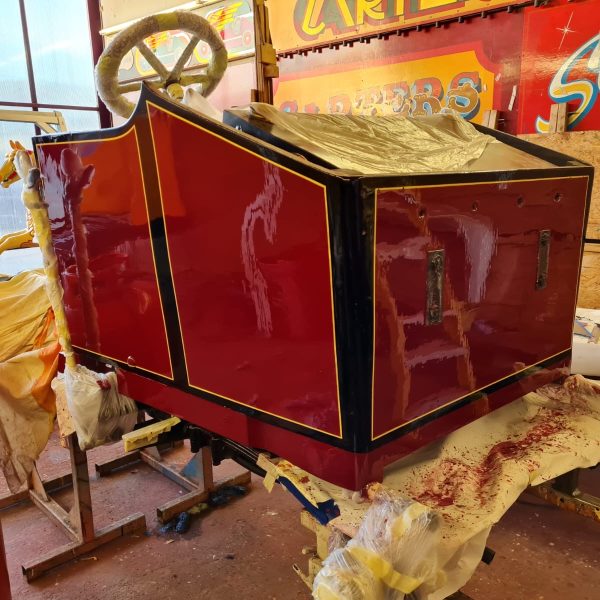
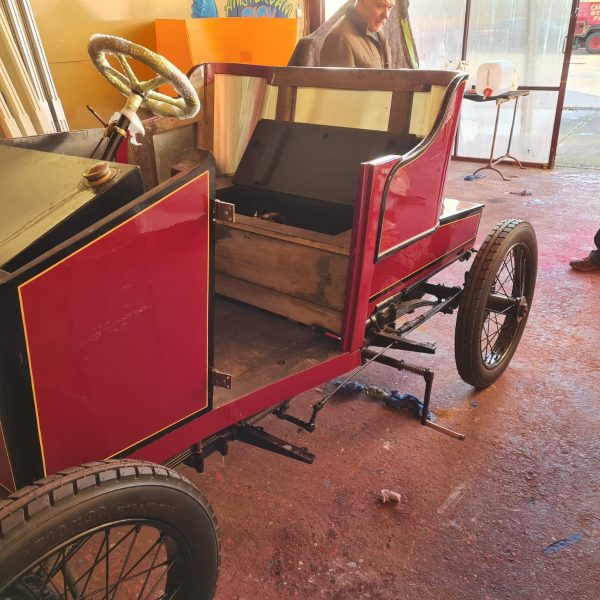
The roof frame of our 1 of 1 1905 Riley 9HP has been in the Bridge Classic Cars paint shop with technician Mauro.
Mauro painted the brackets in black before also painting the wood.

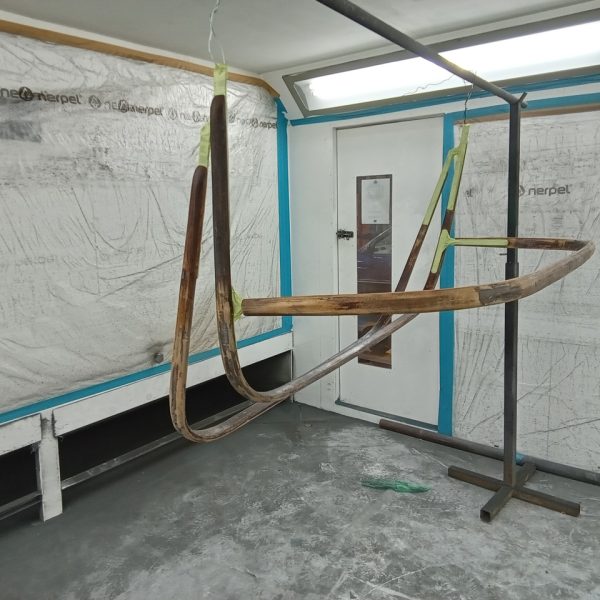
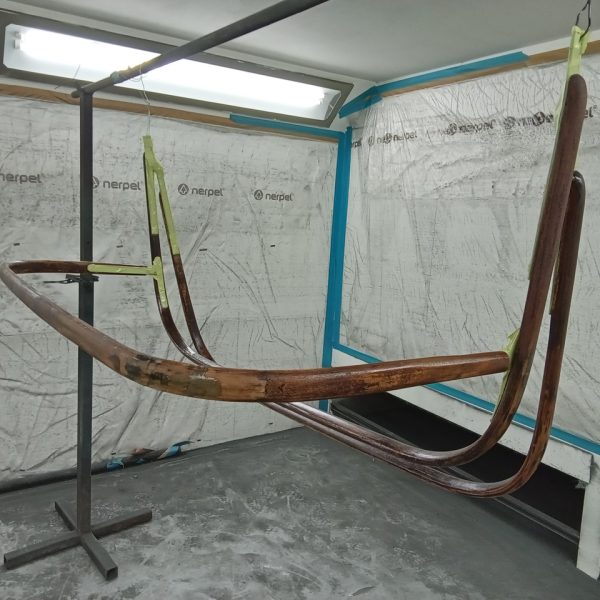
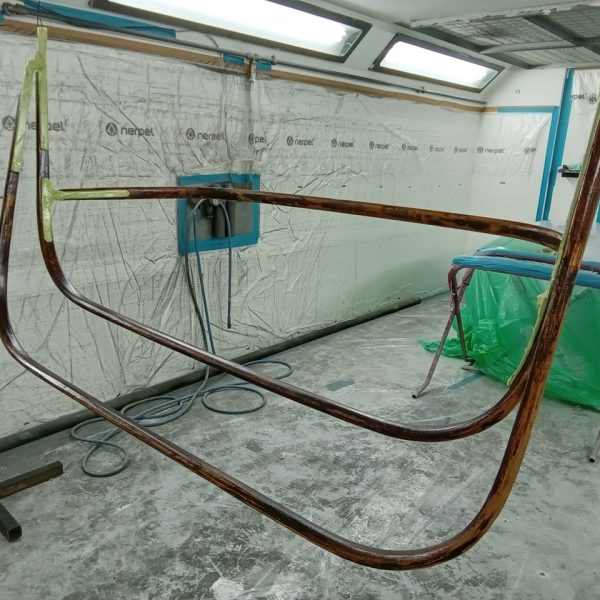
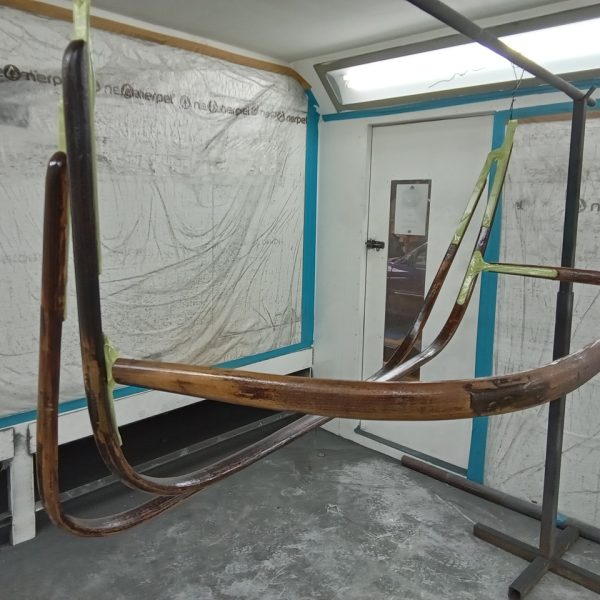
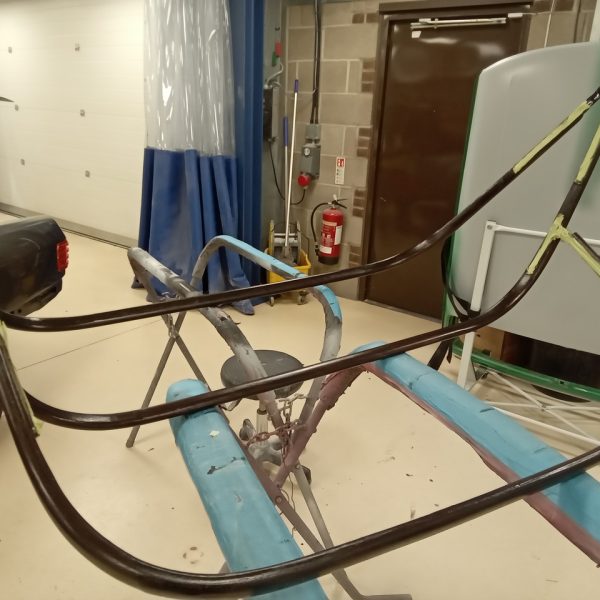
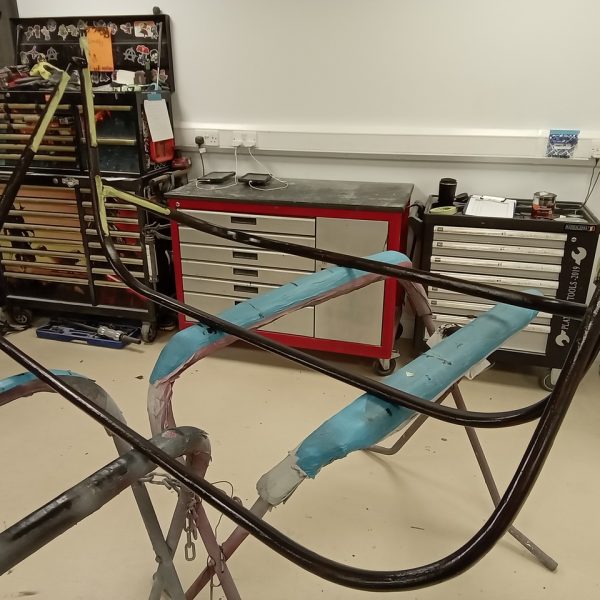
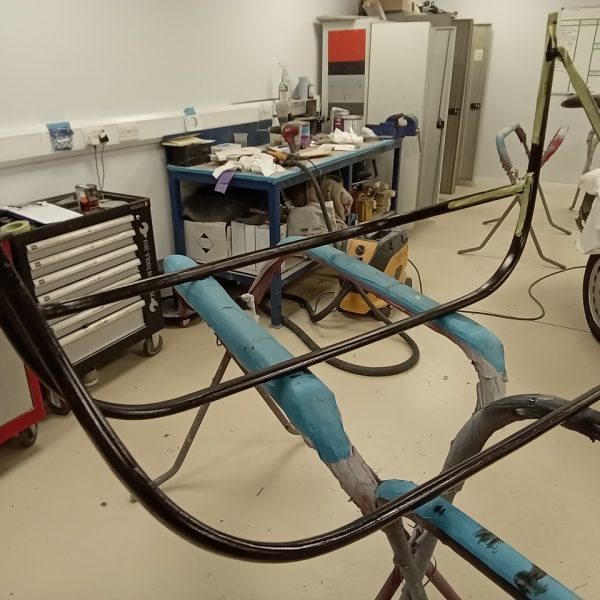
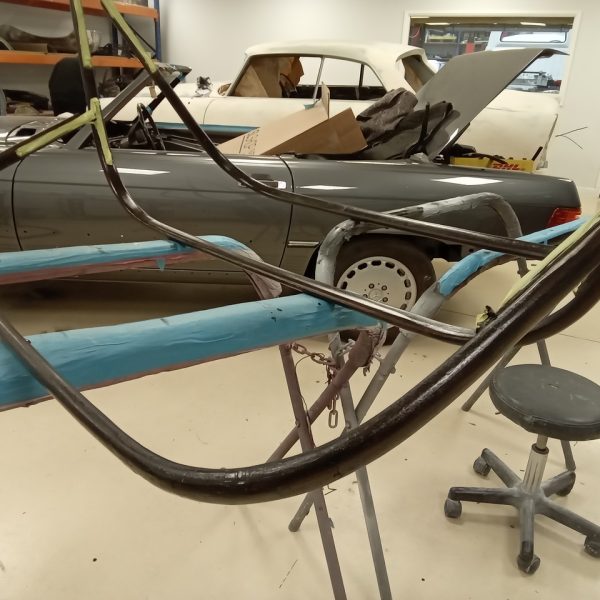

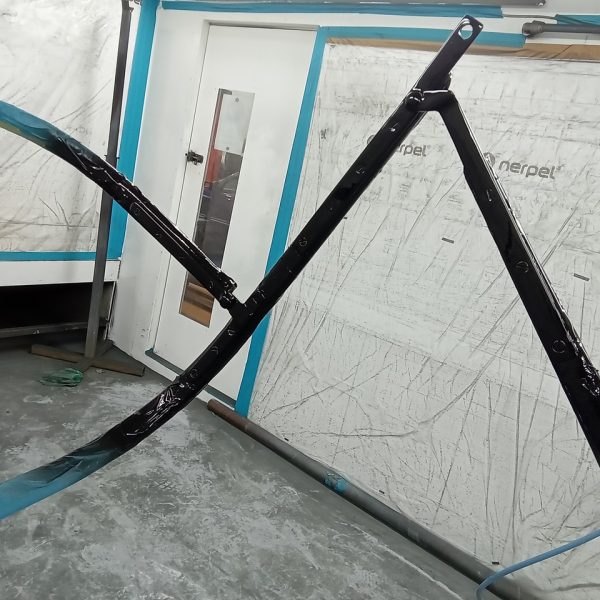


The roof frame of our 1905 Riley 9HP has been in the Bridge Classic Cars paintshop with Mauro.
He has been prepping the frame before applying epoxy primer ready for it to be painted black.

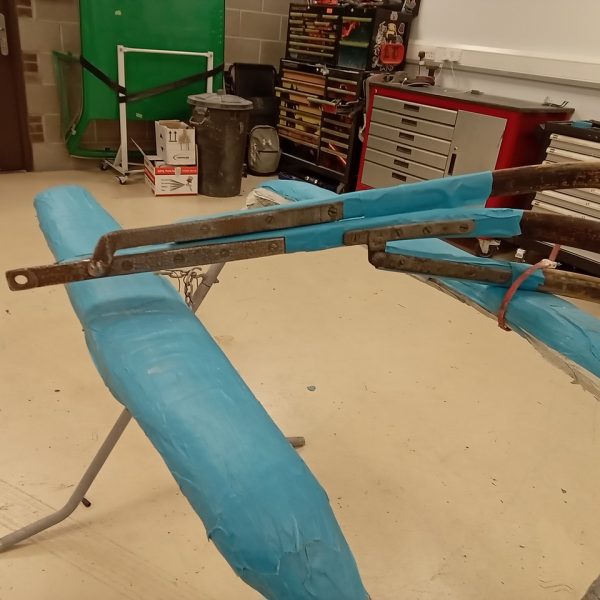

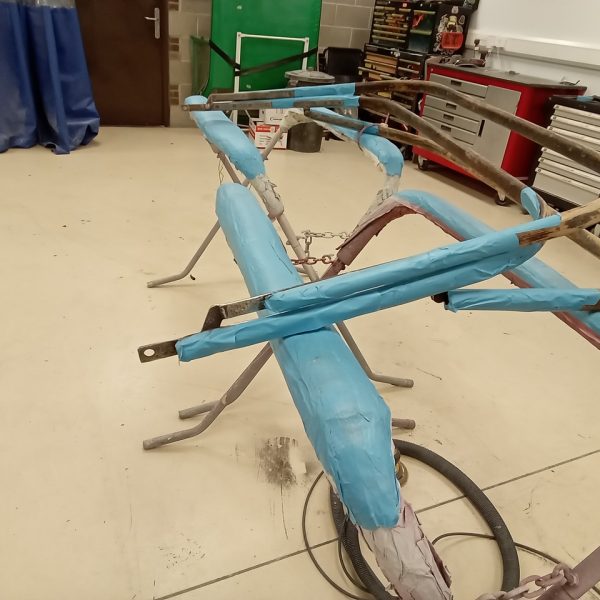
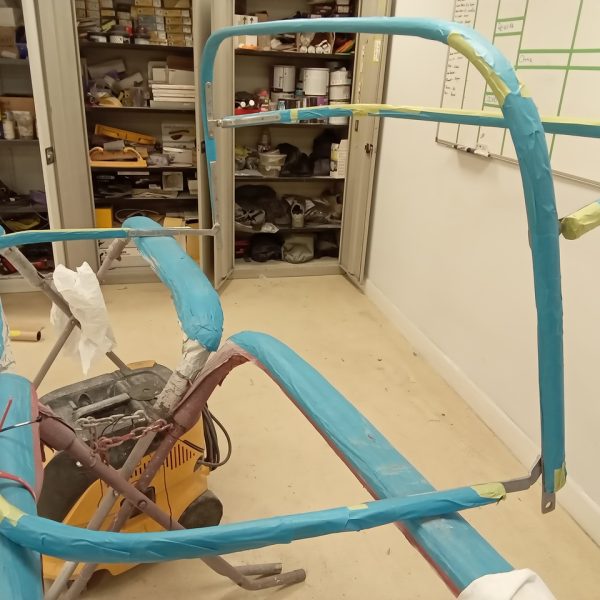
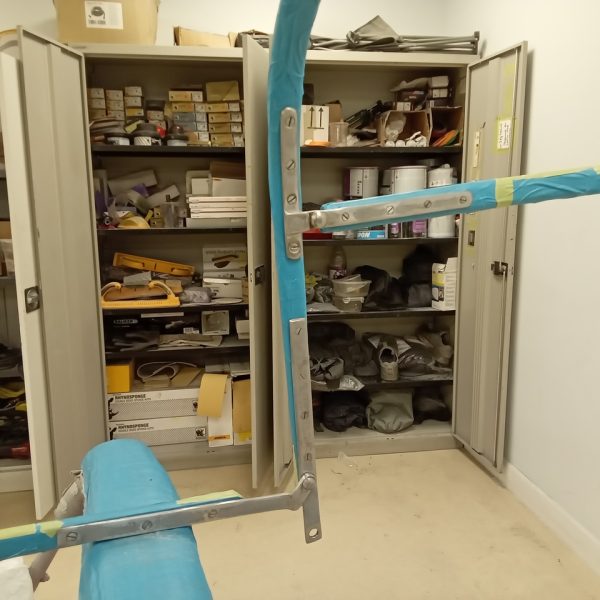
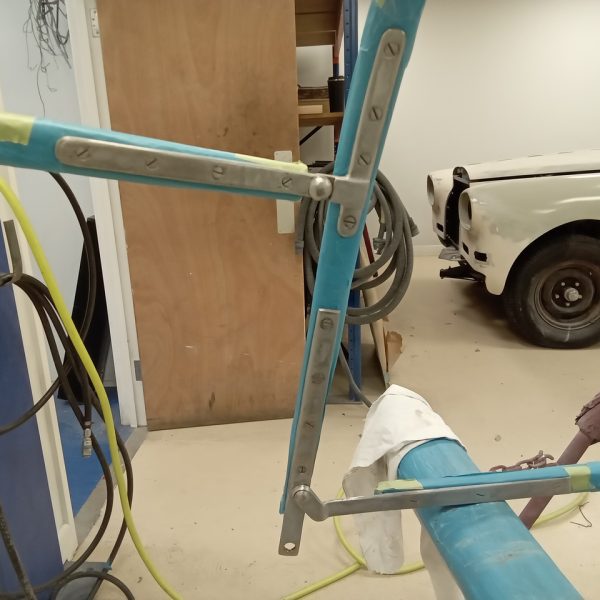
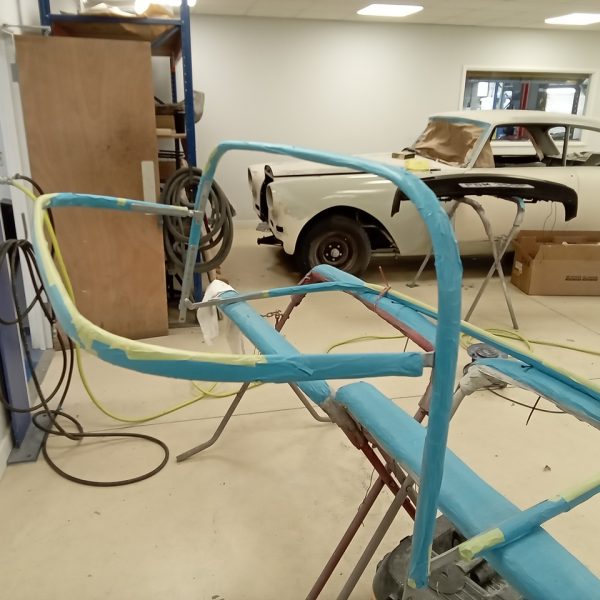
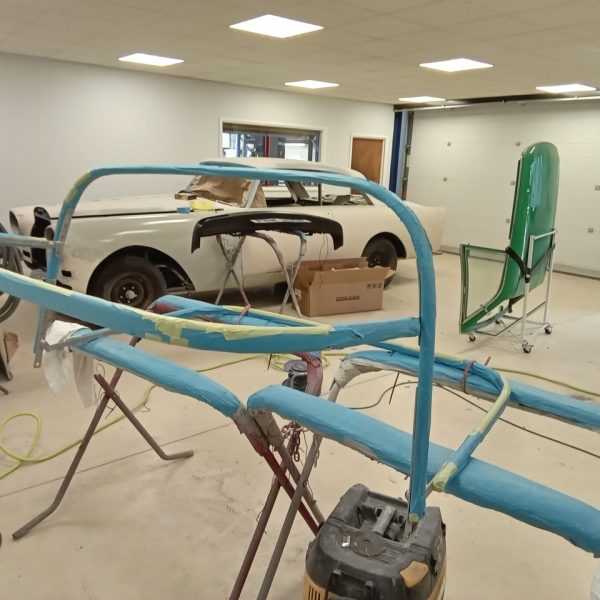
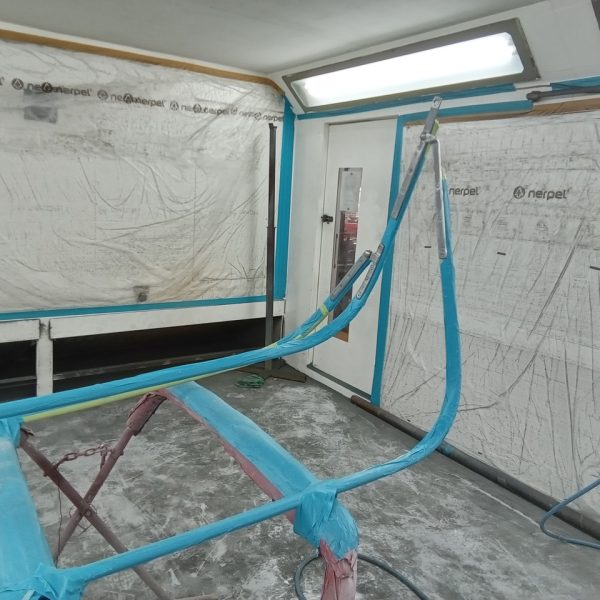

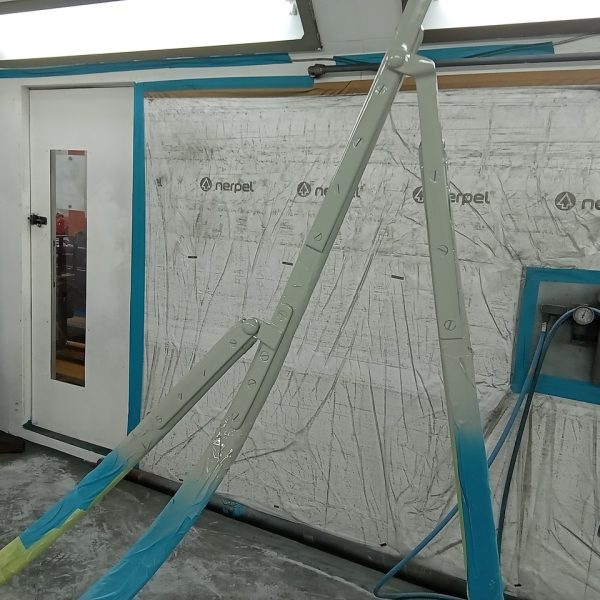
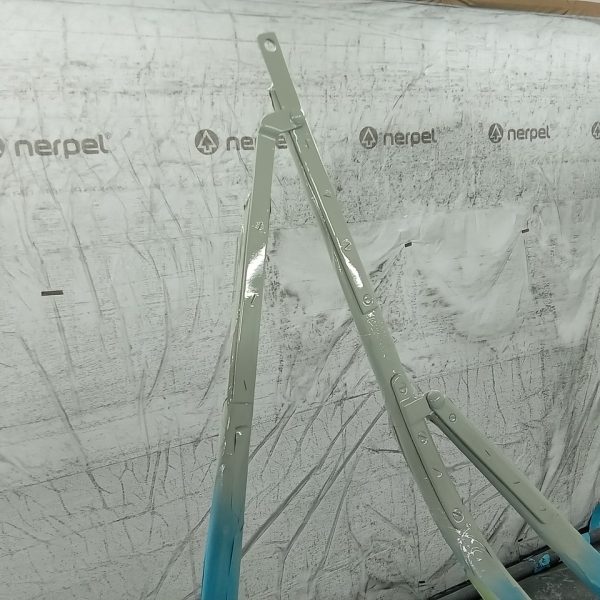
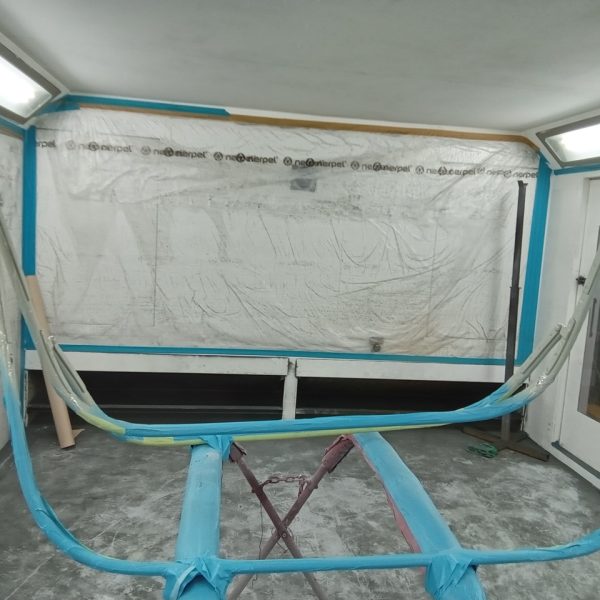
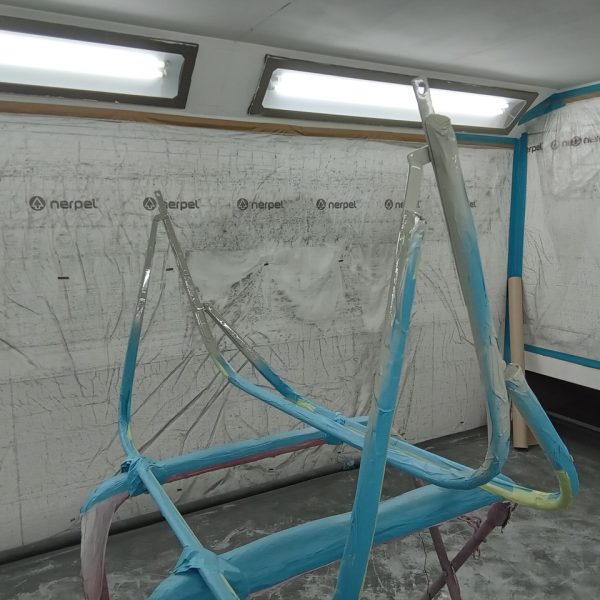


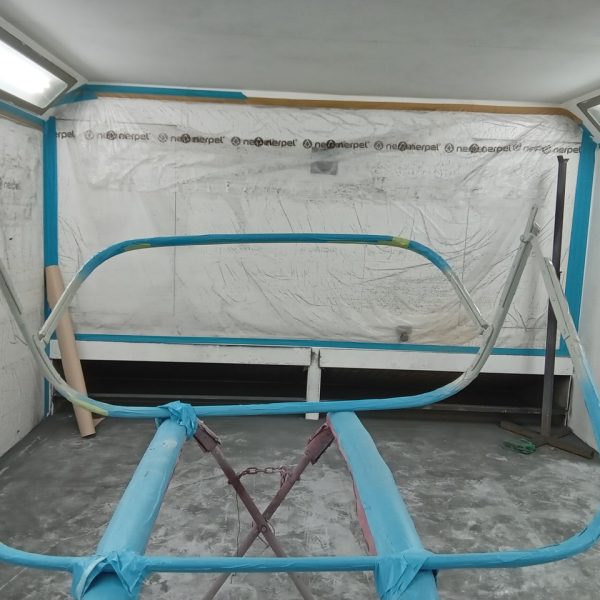

We have received the below pictures which show just how much progress Joby Carter is making on our 1905 Riley 9HP.
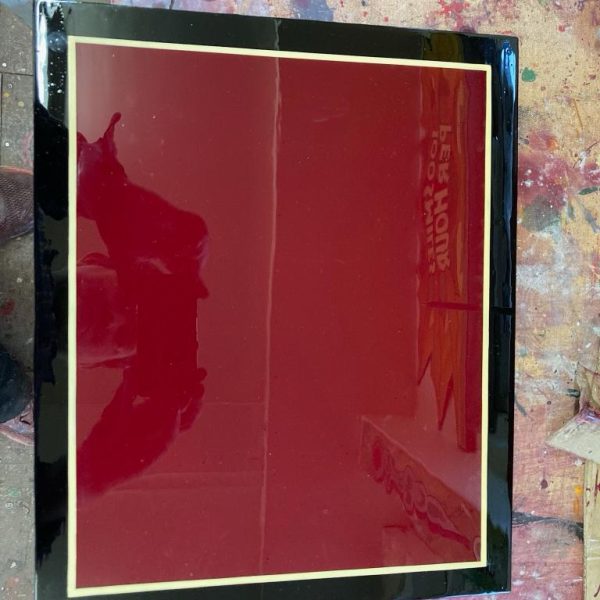
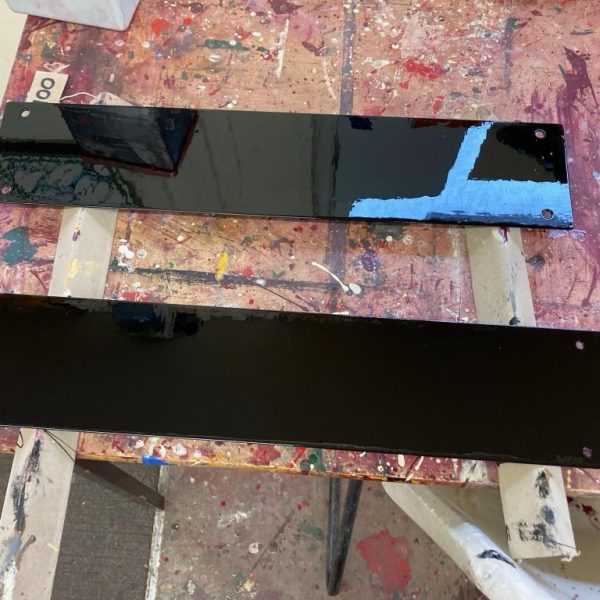
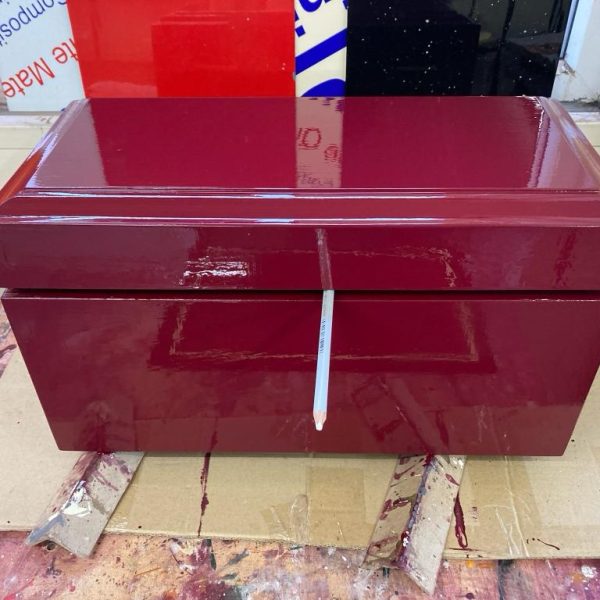
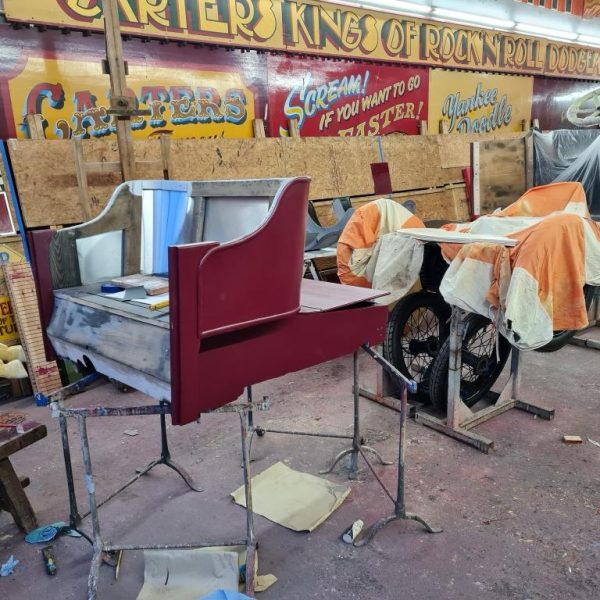


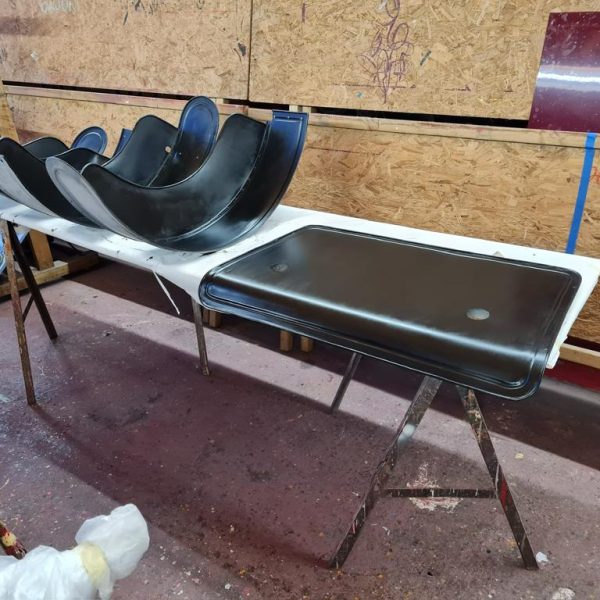
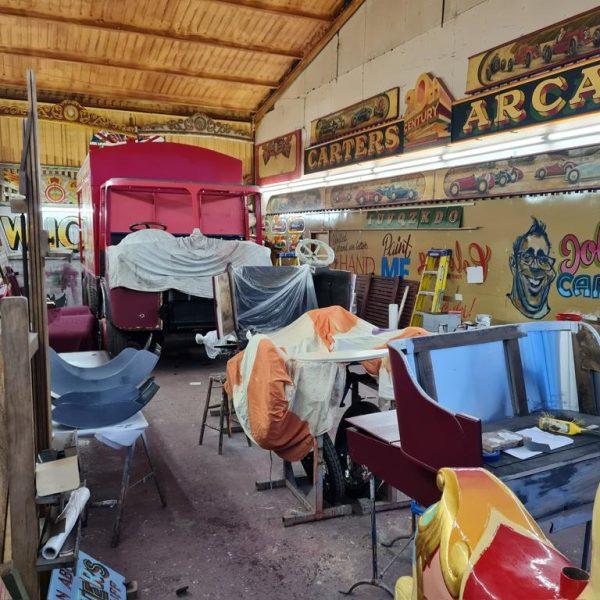

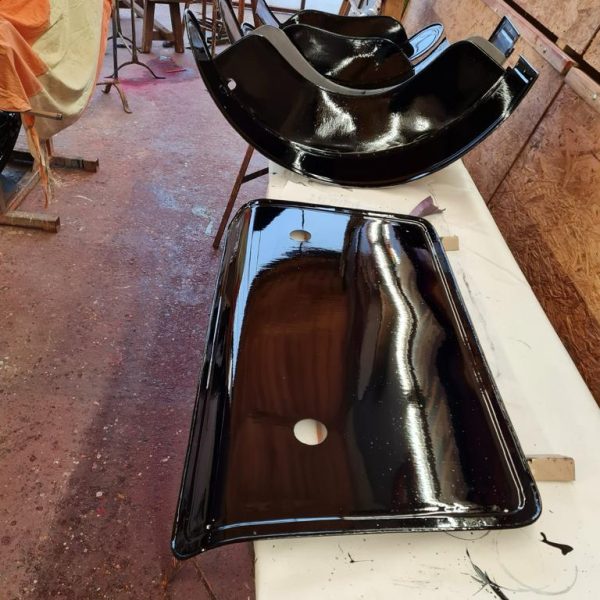



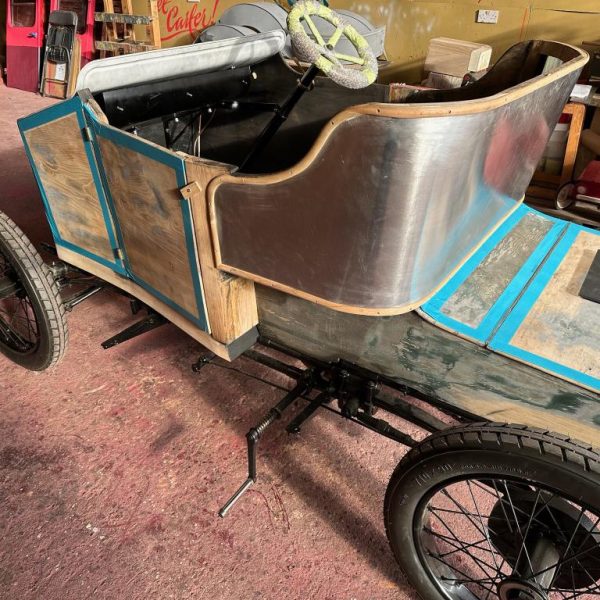
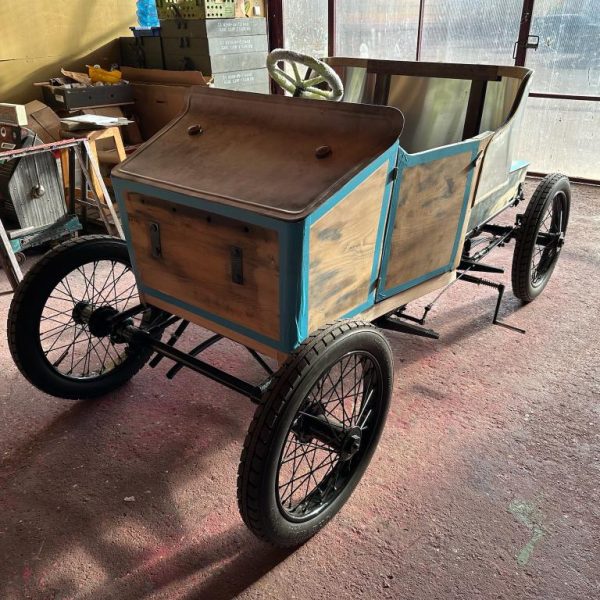
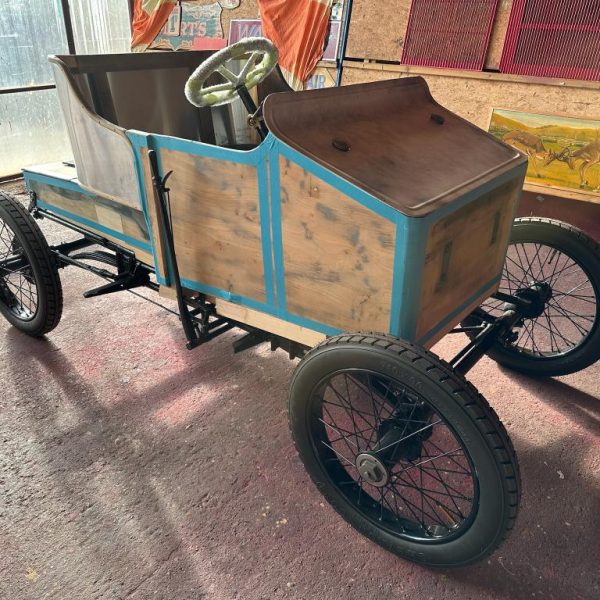
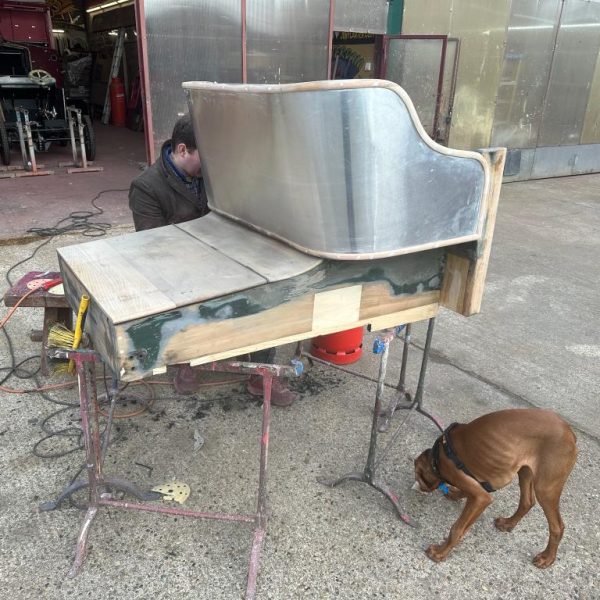
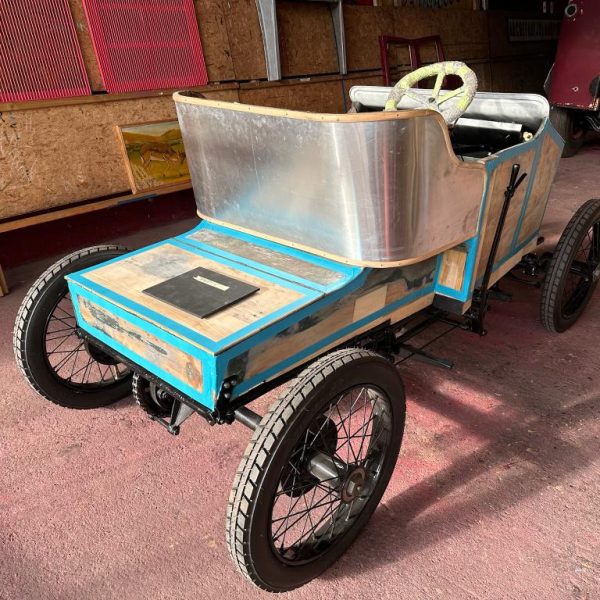
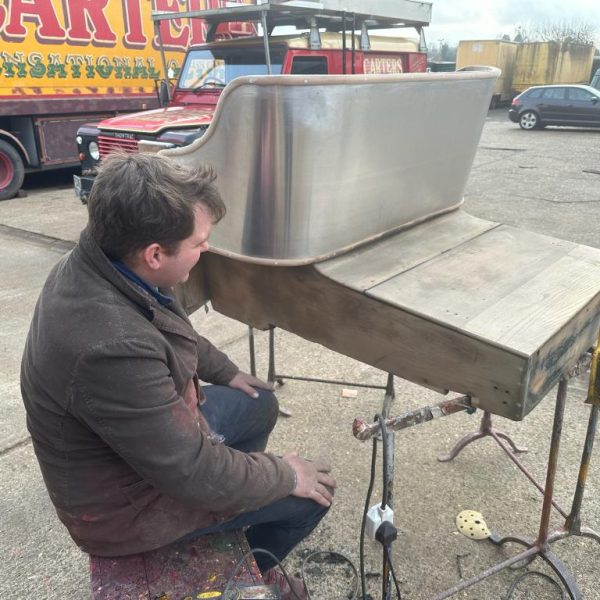

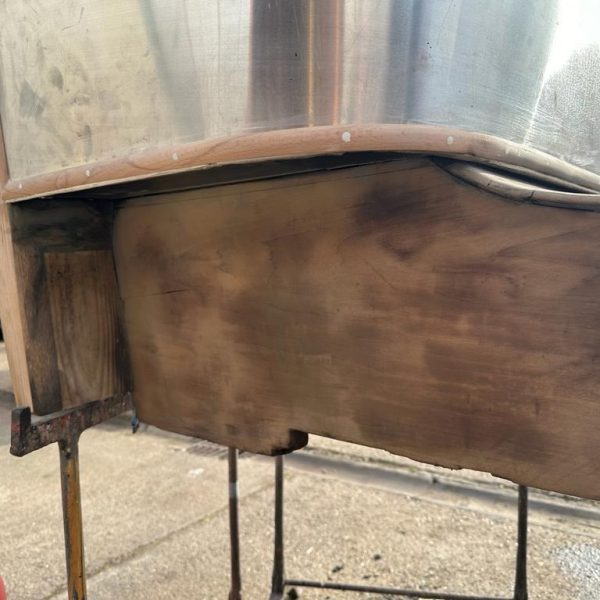
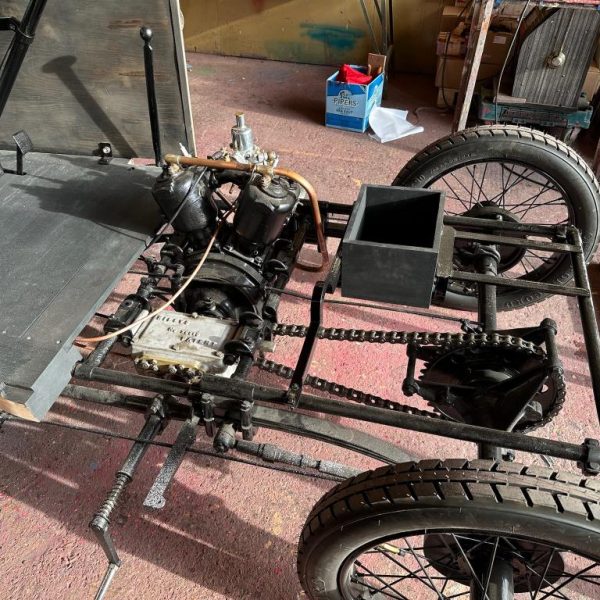
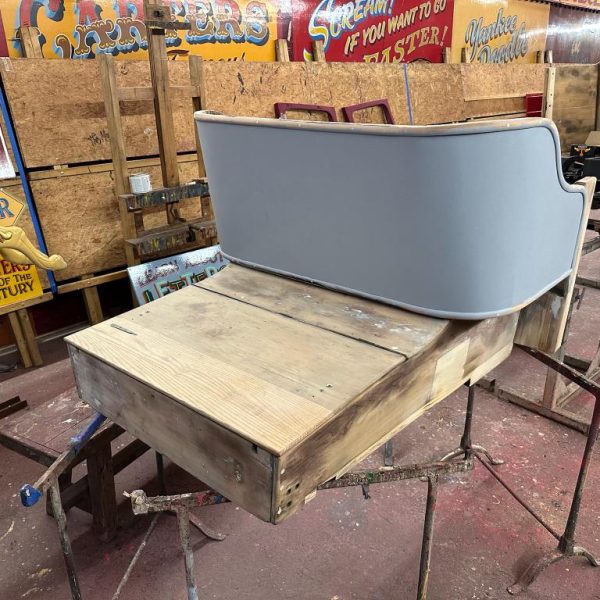
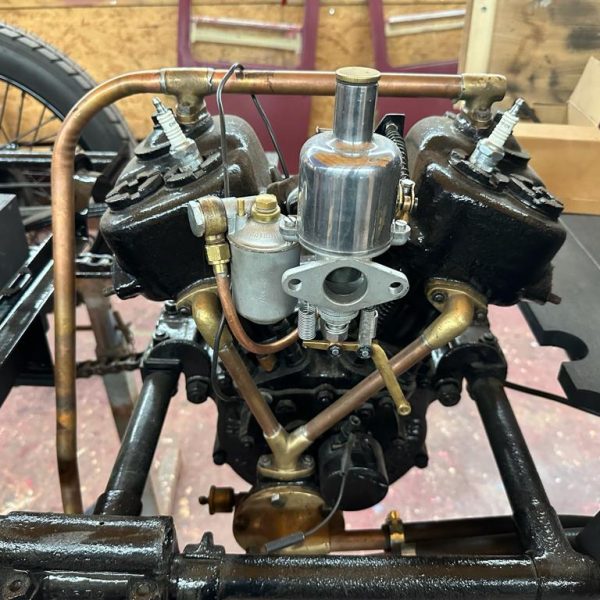
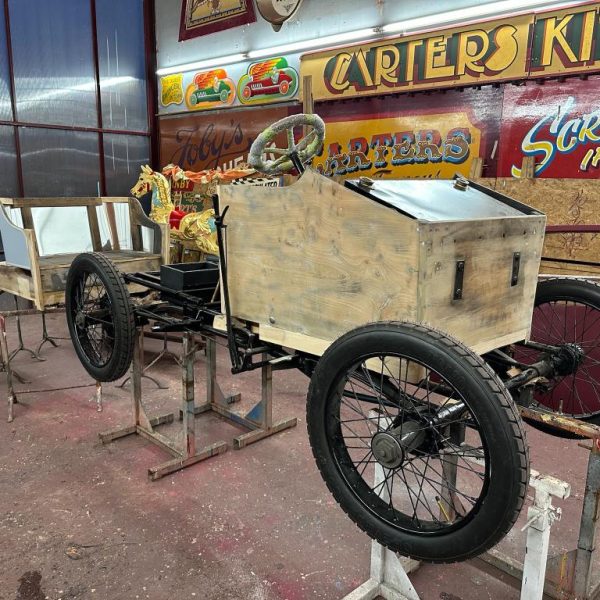


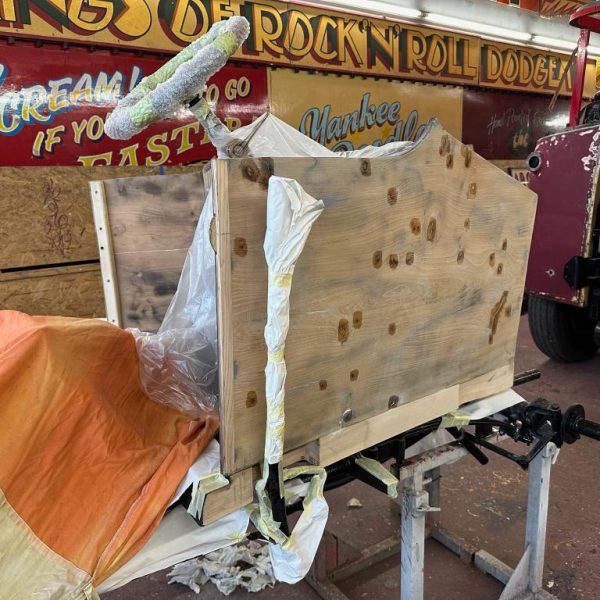

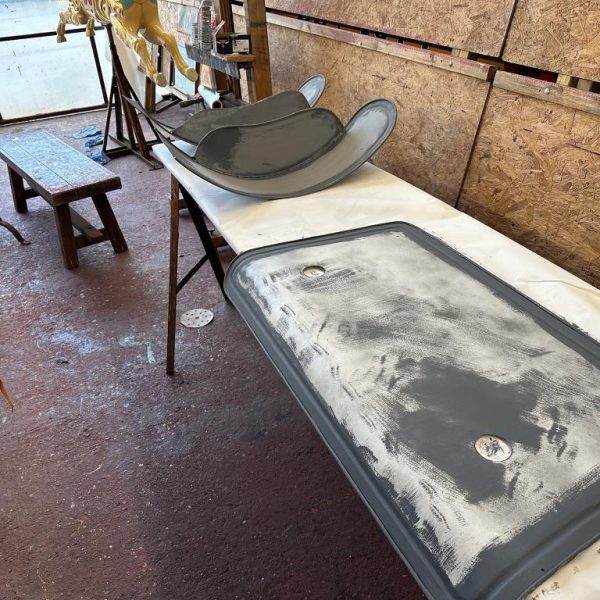
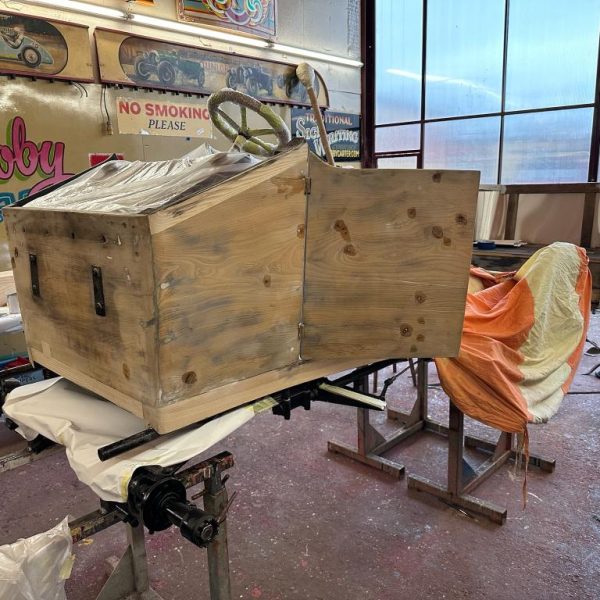
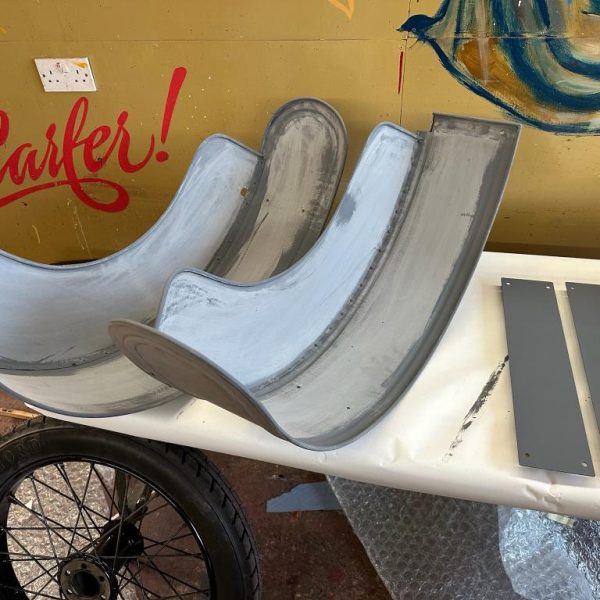
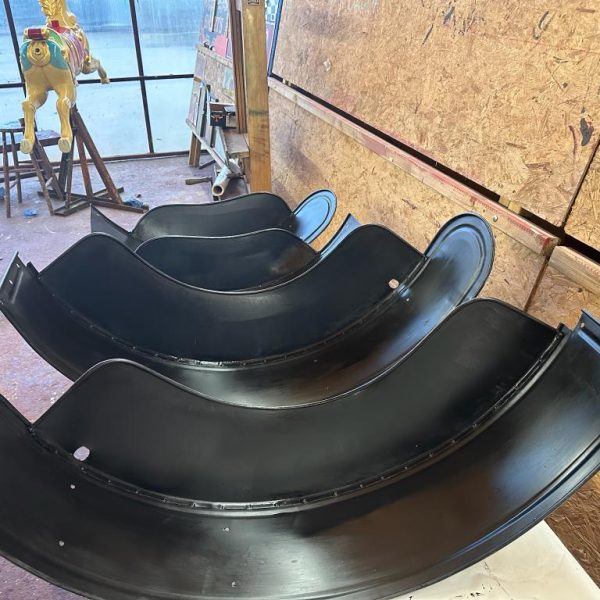

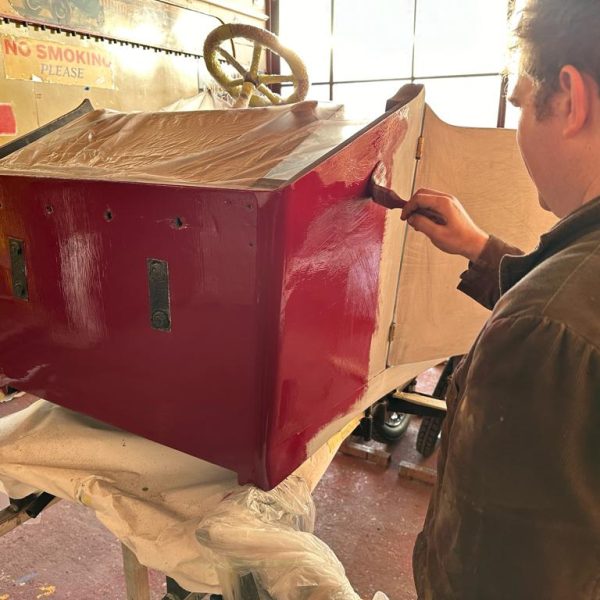

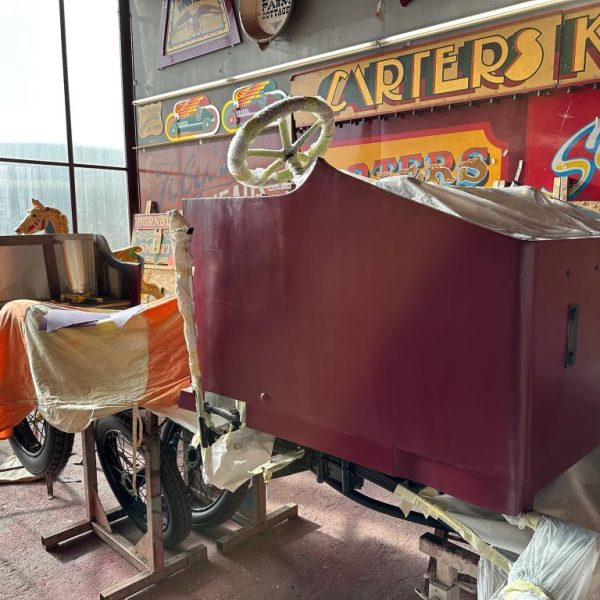

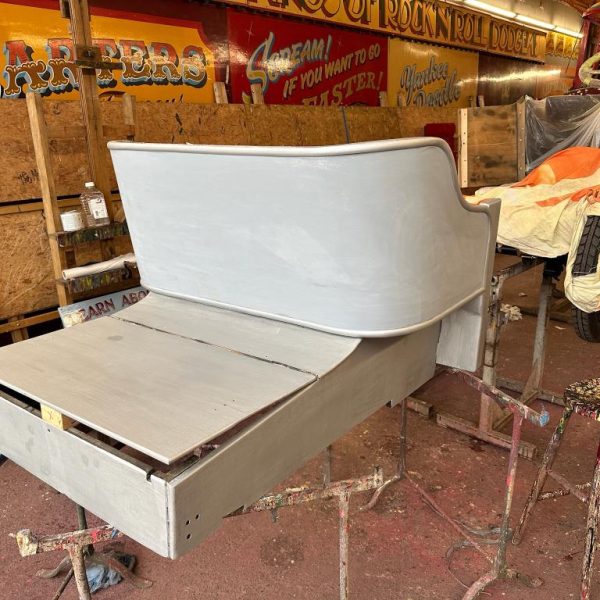
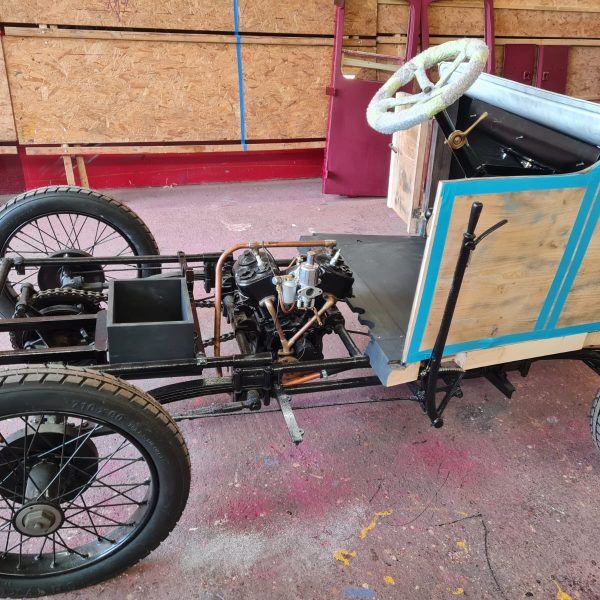

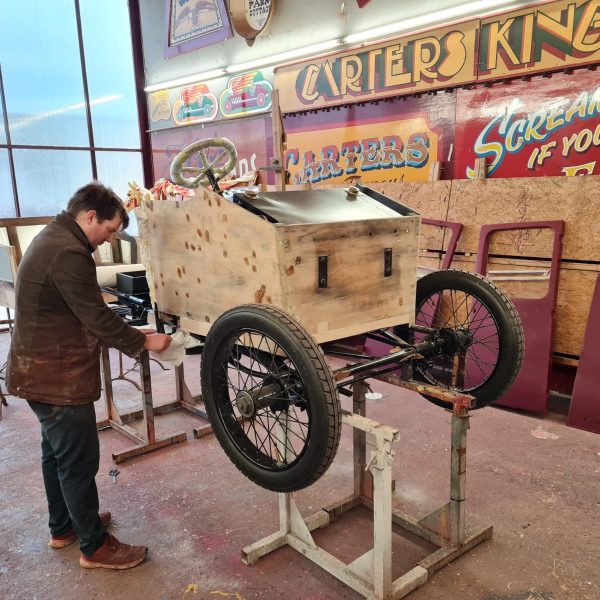

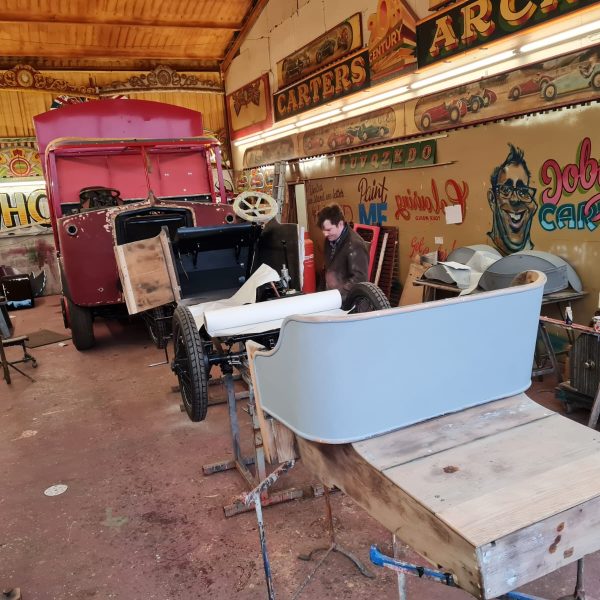
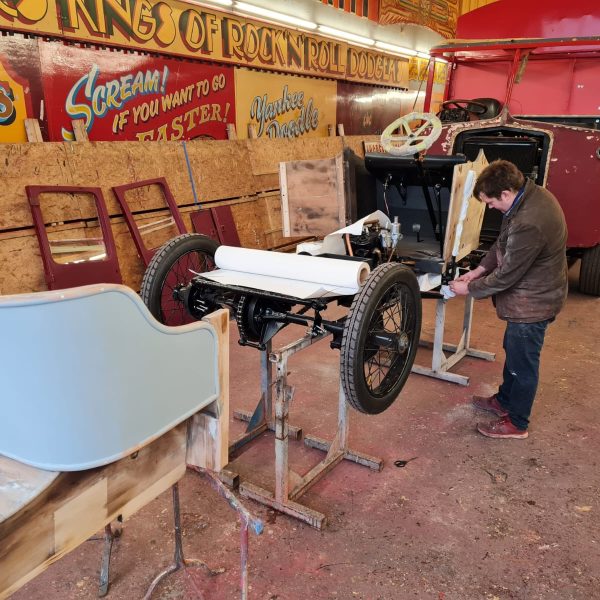

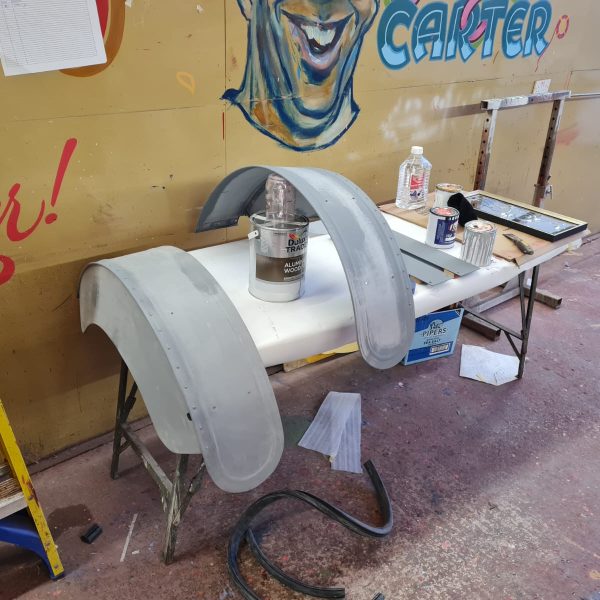
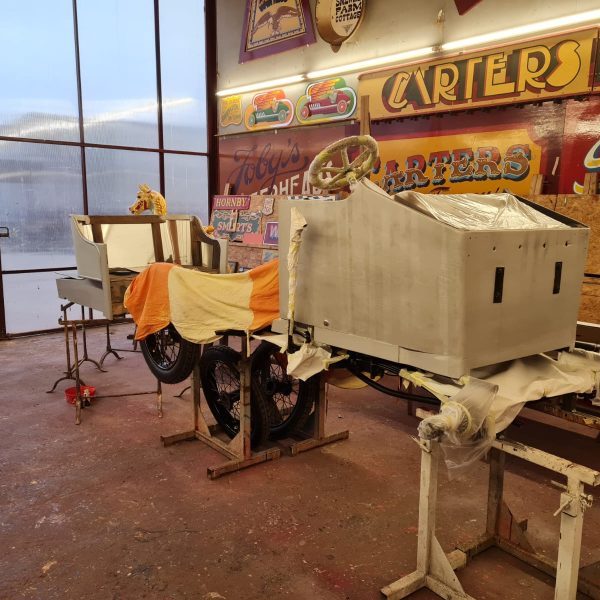
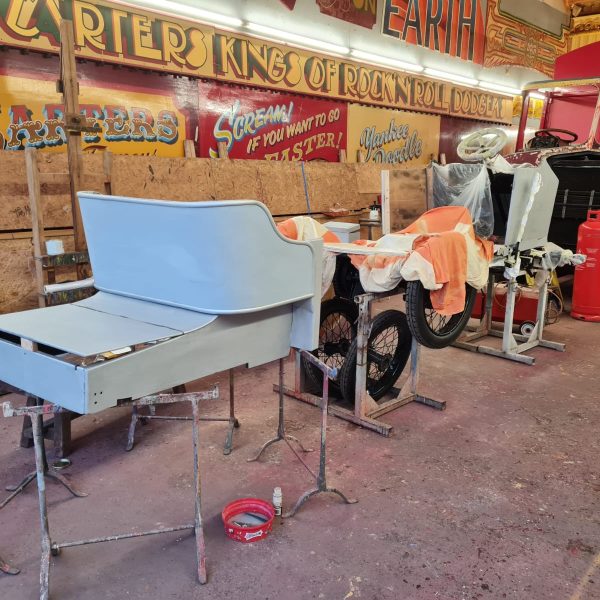

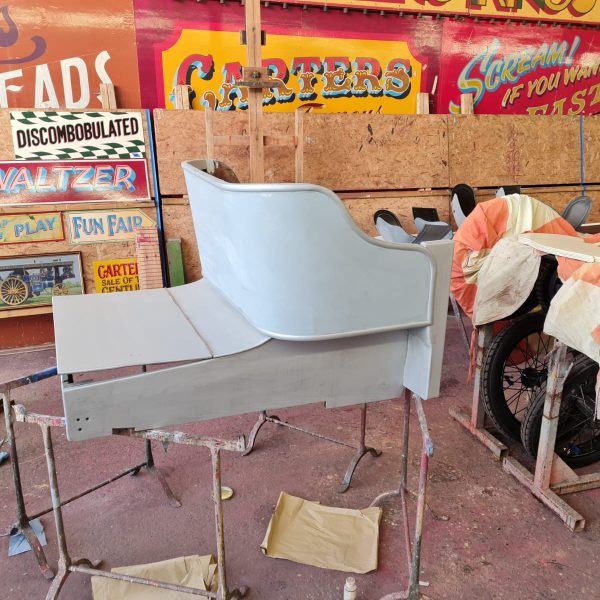
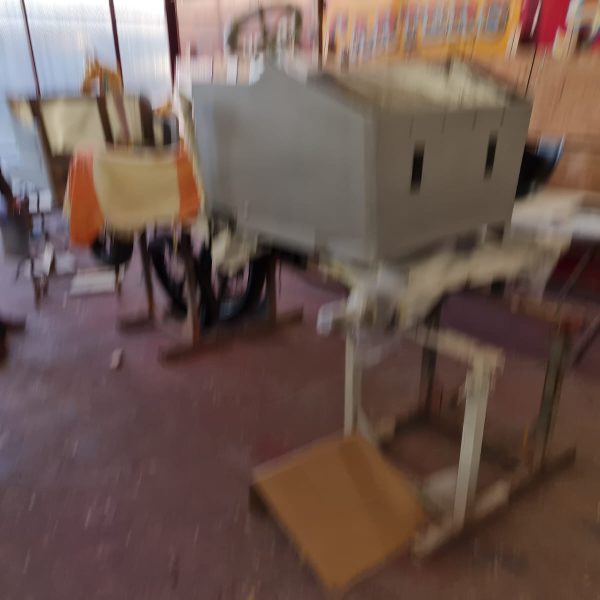

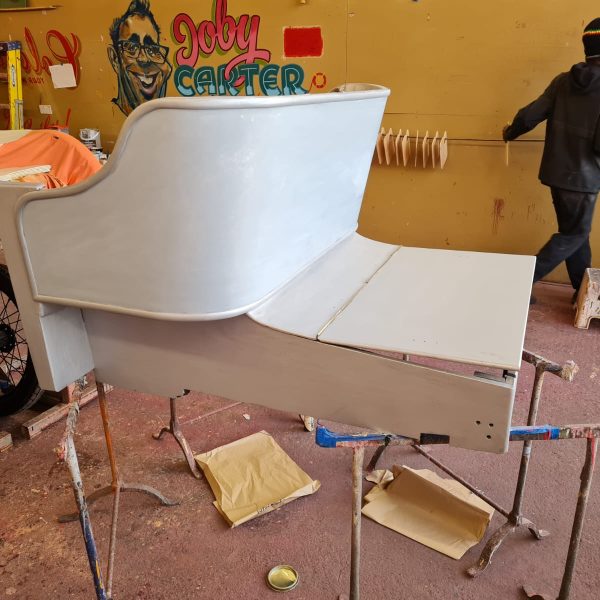

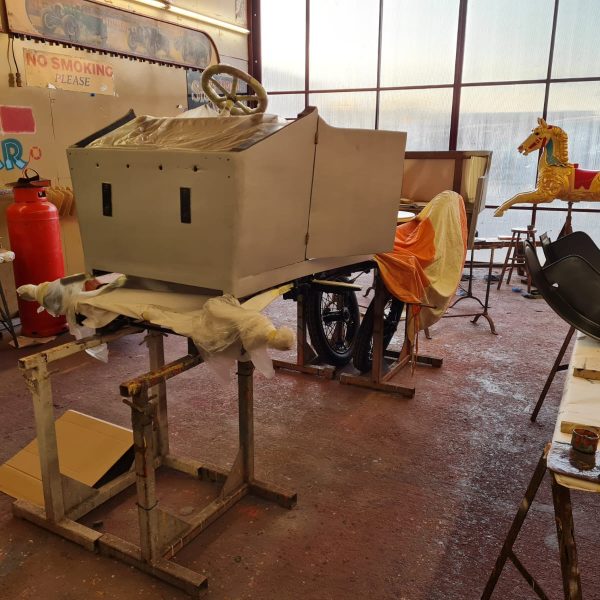

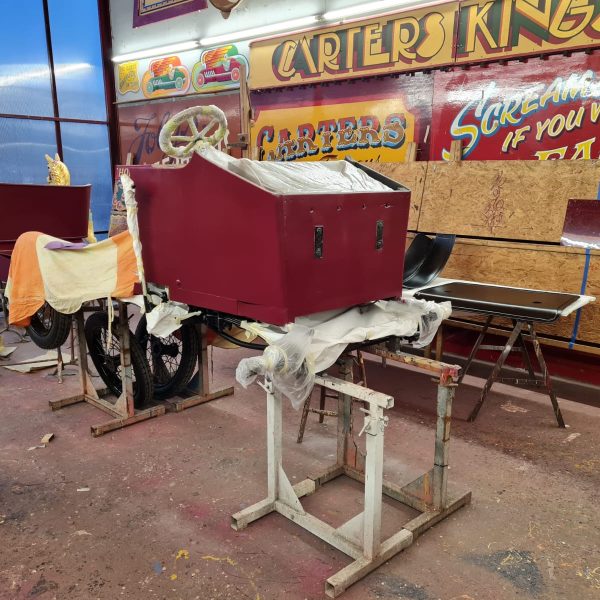
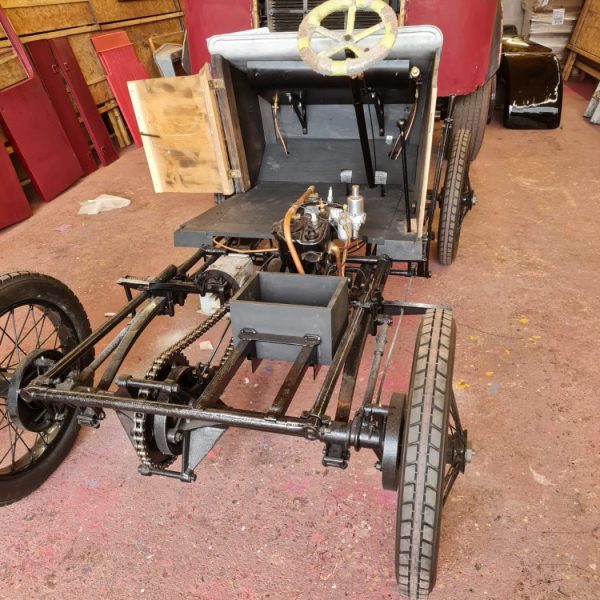
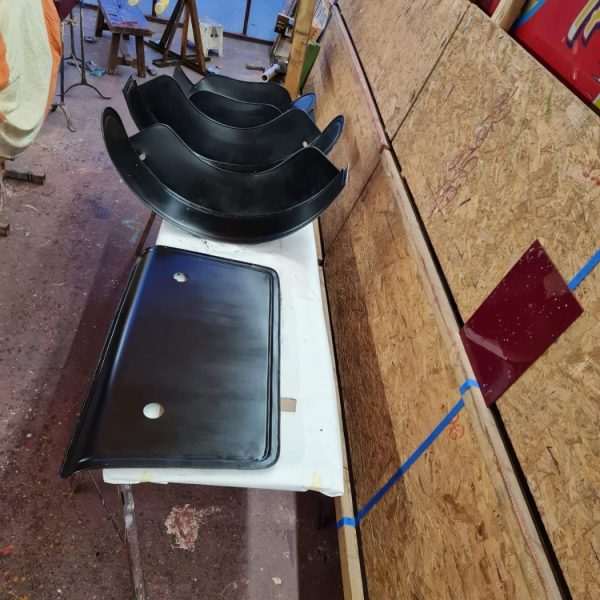

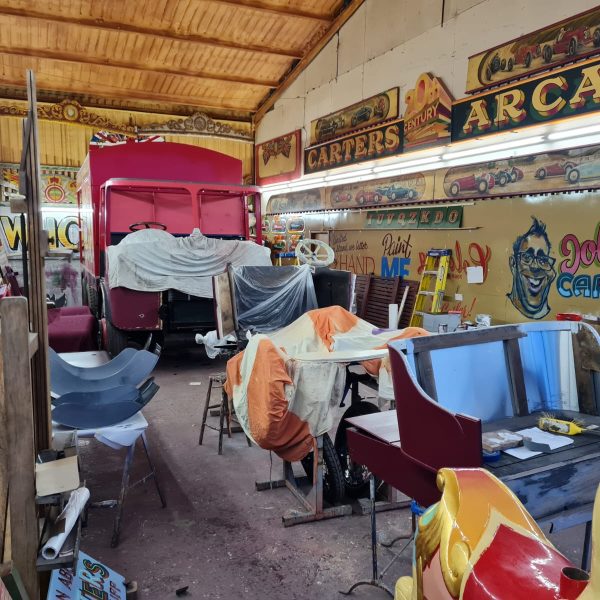
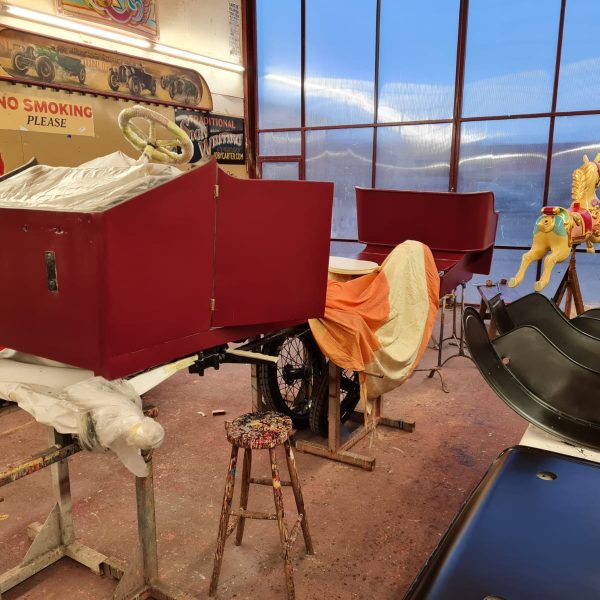
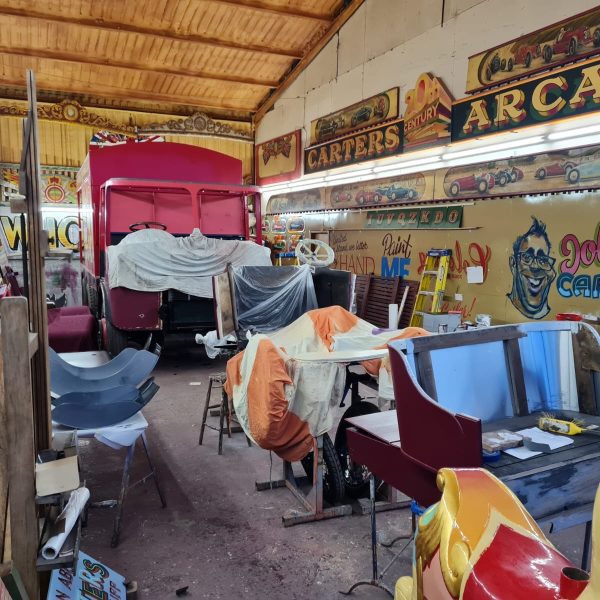

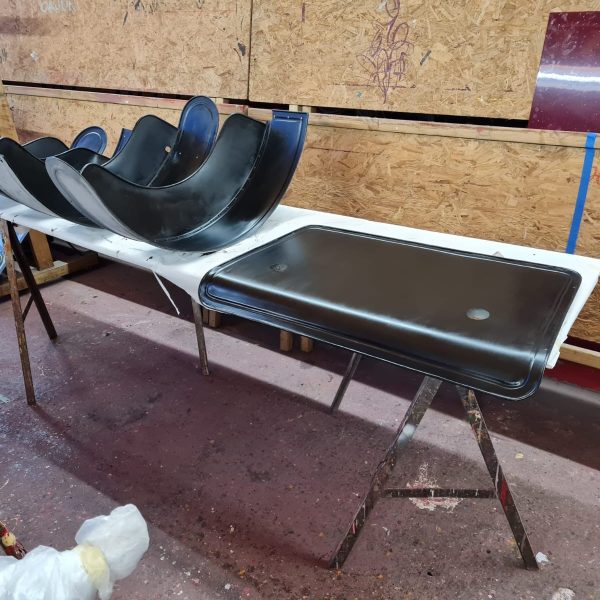

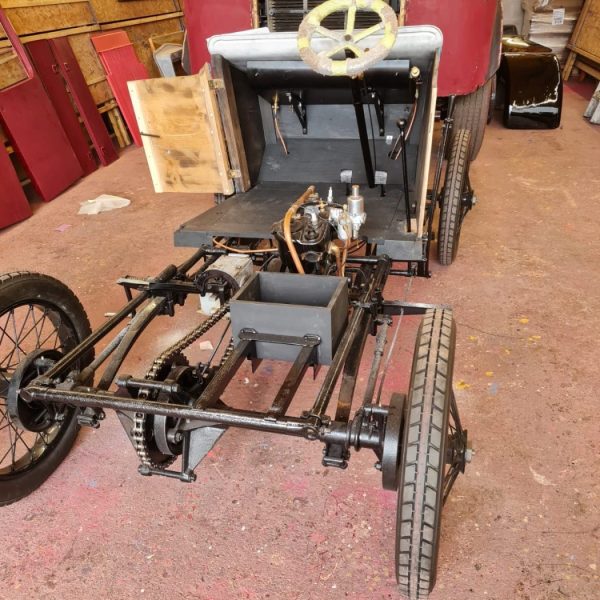
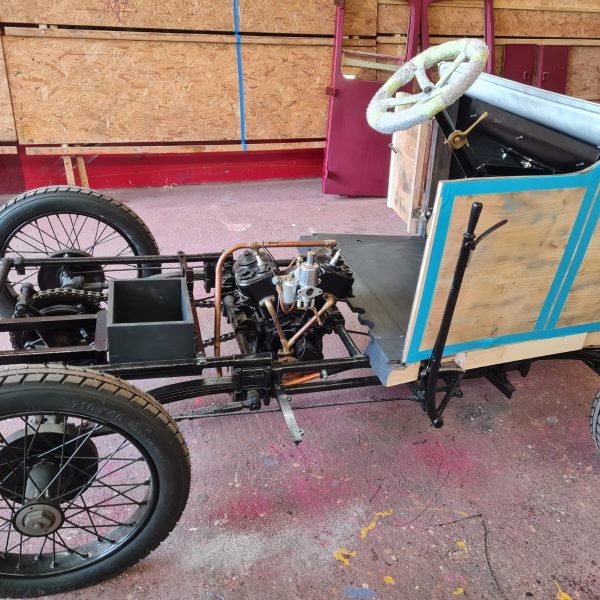

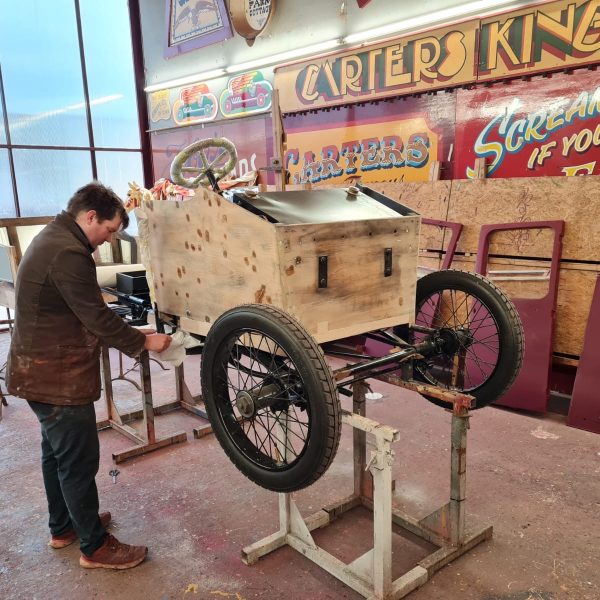
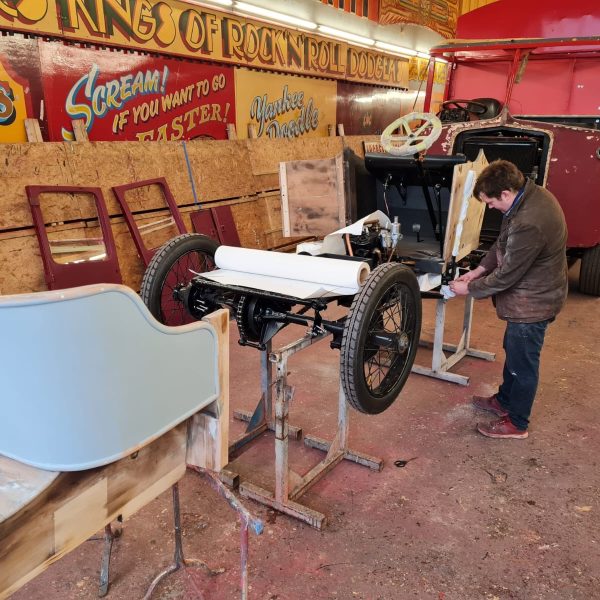
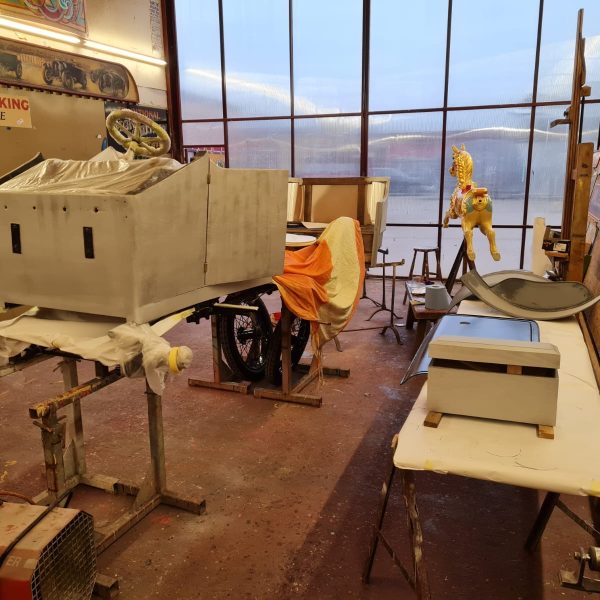
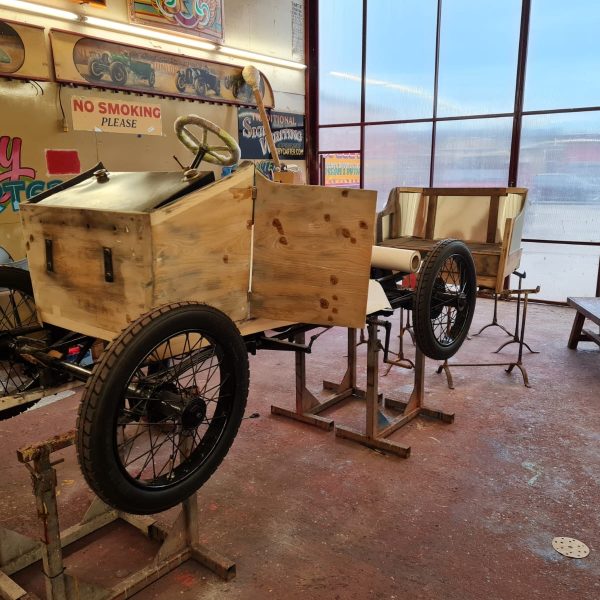
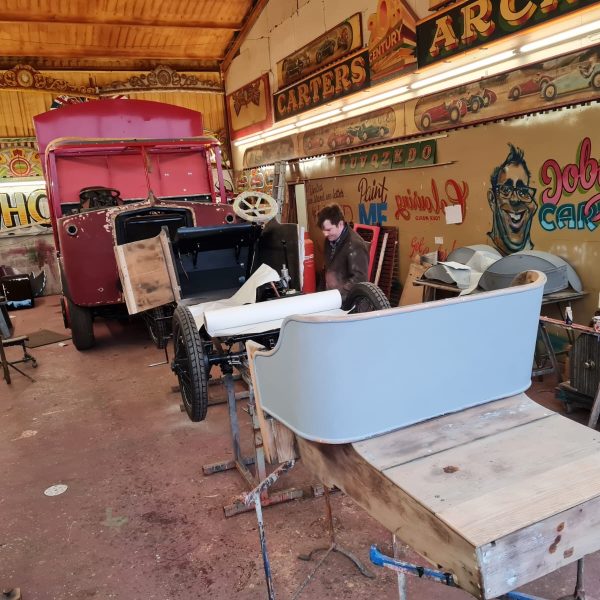

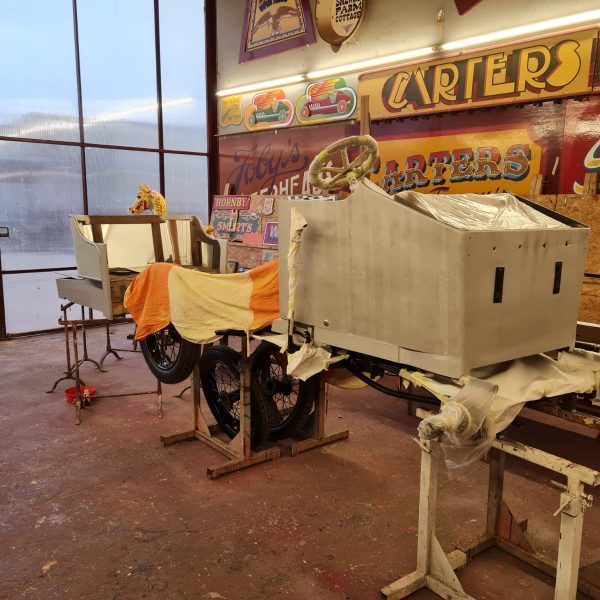
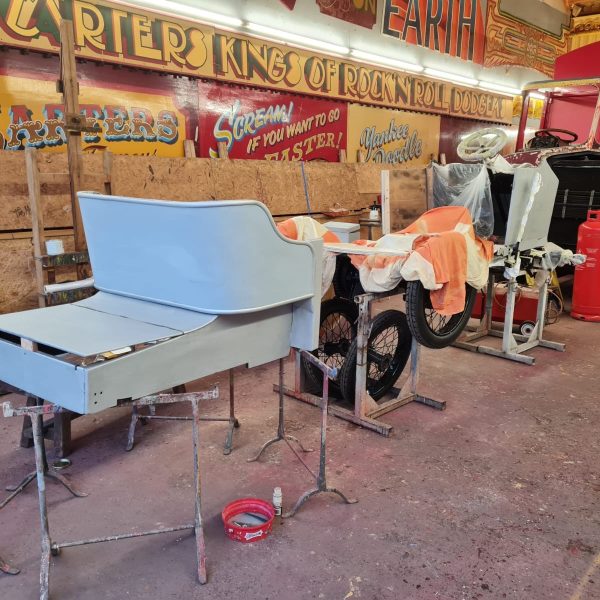



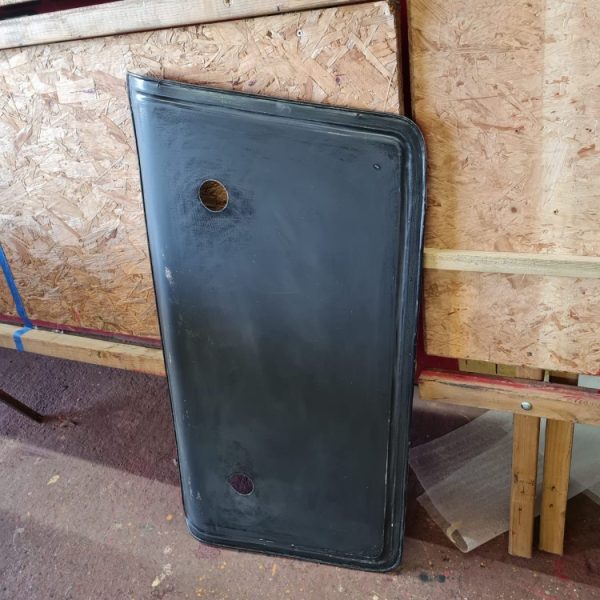


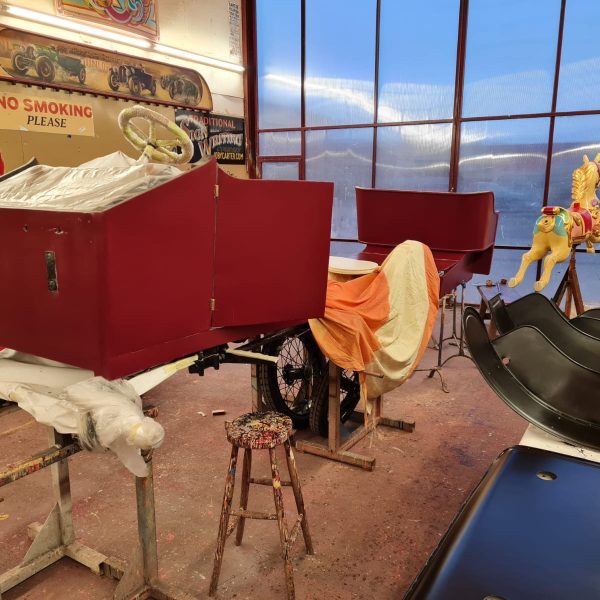


As the restoration of our 1905 Riley 9HP is moving into its final stages, the time has come for it to be painted.
For this to happen, Tony and Gordon took the car to Joby Carter in Berkshire. This is so this special car can have traditional methods used to bring it fully back to life.
Once it returns to the Bridge Classic Cars workshop, our Riley 9HP will look as great as its story.

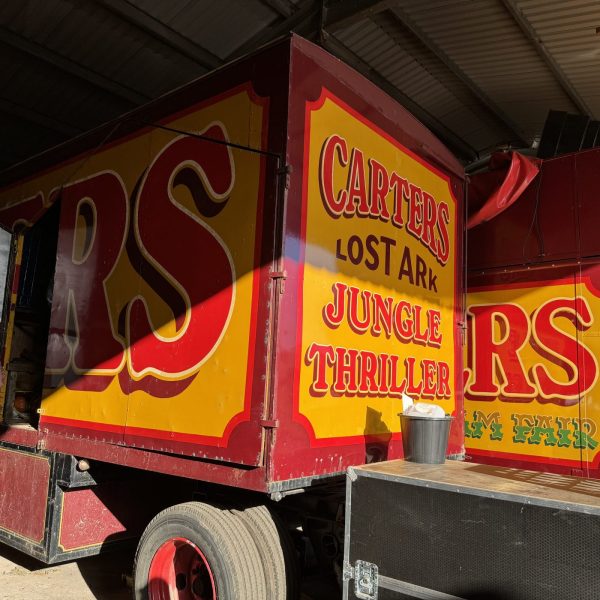


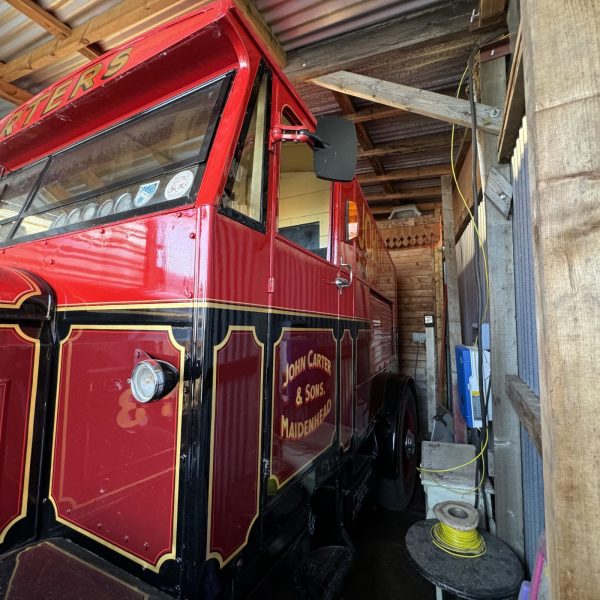



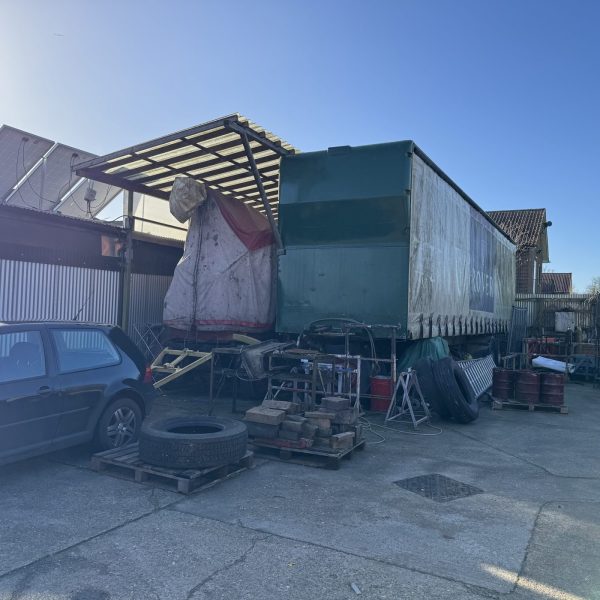
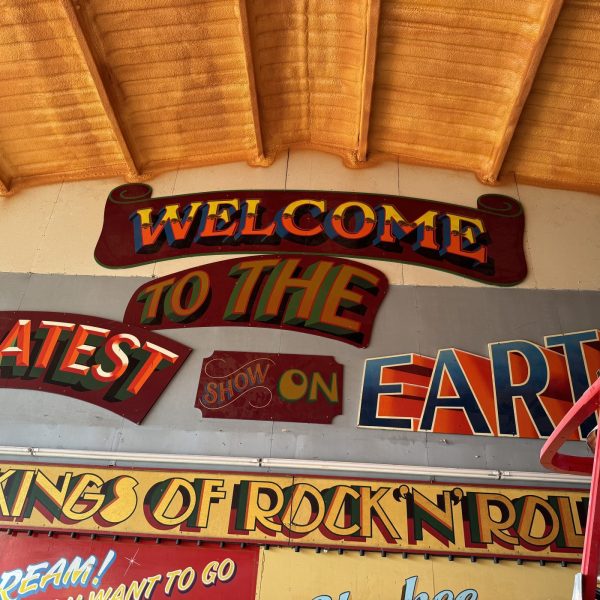
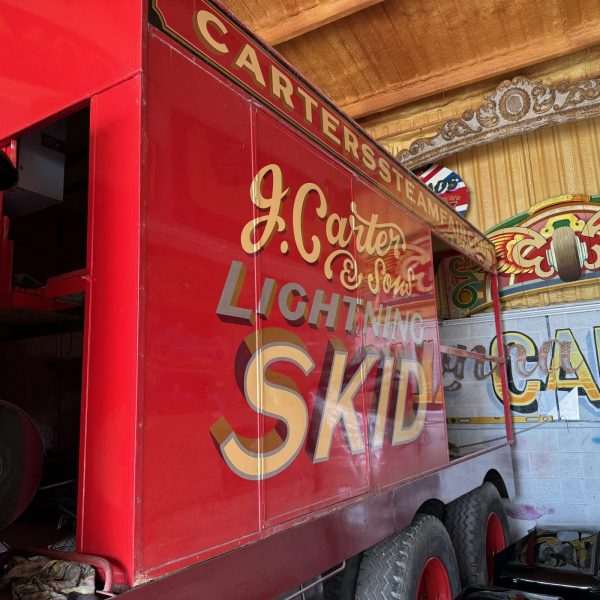
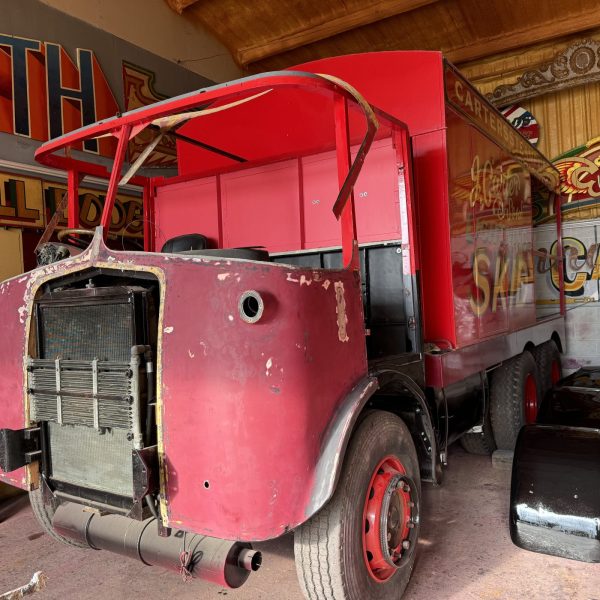
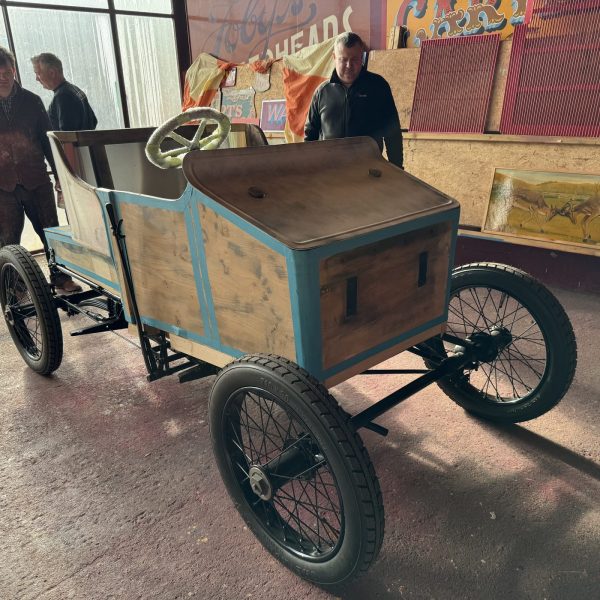

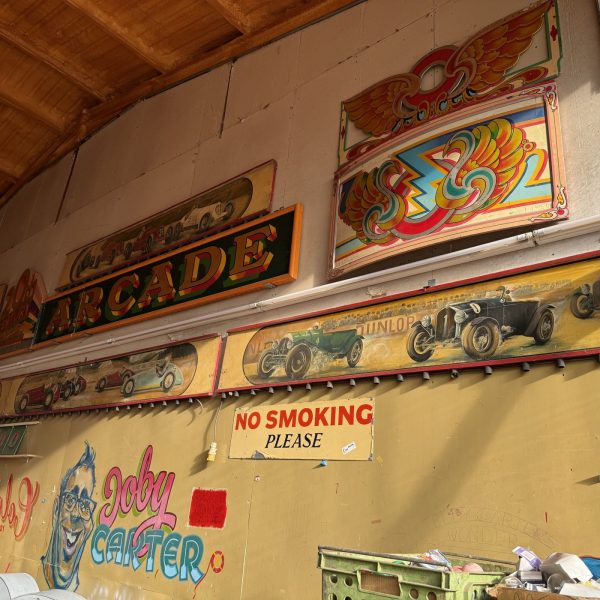

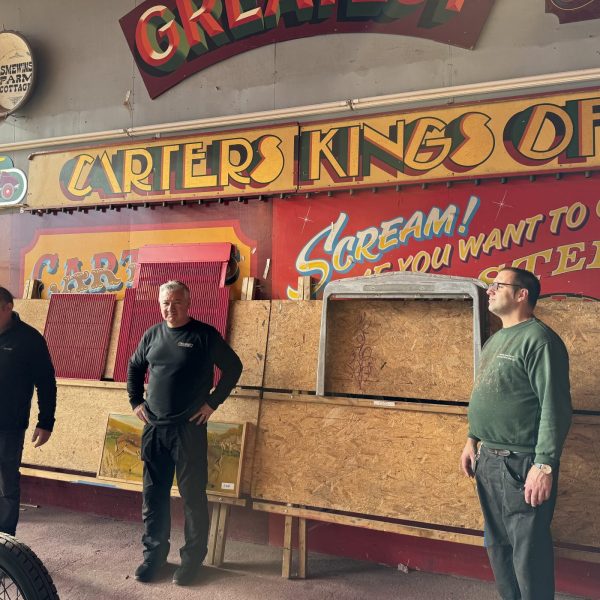
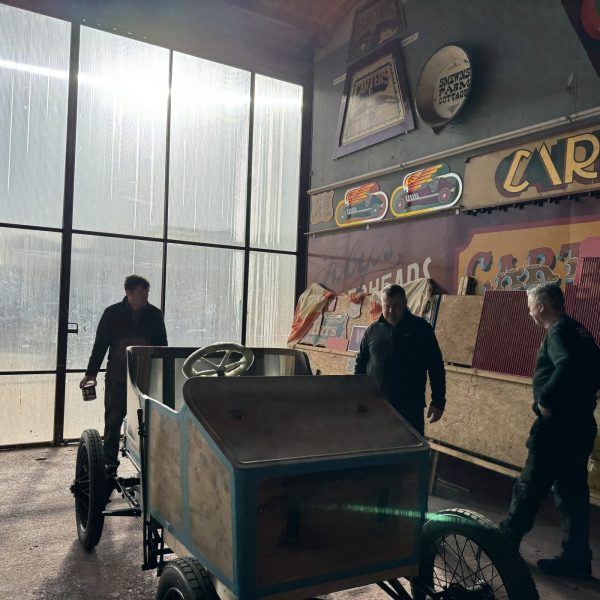
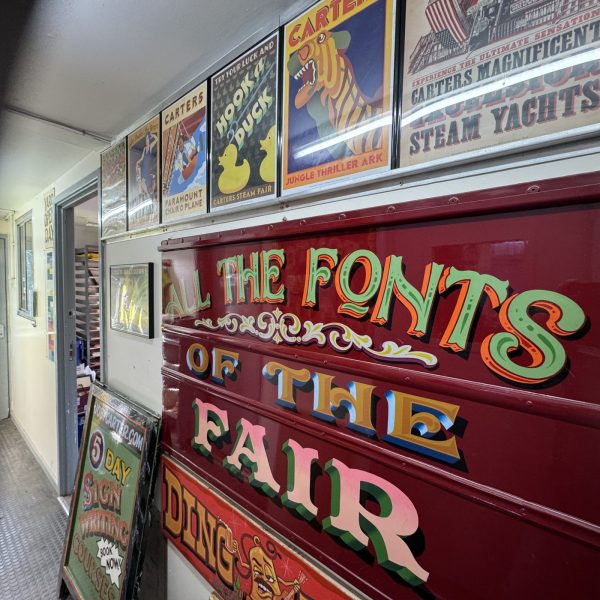
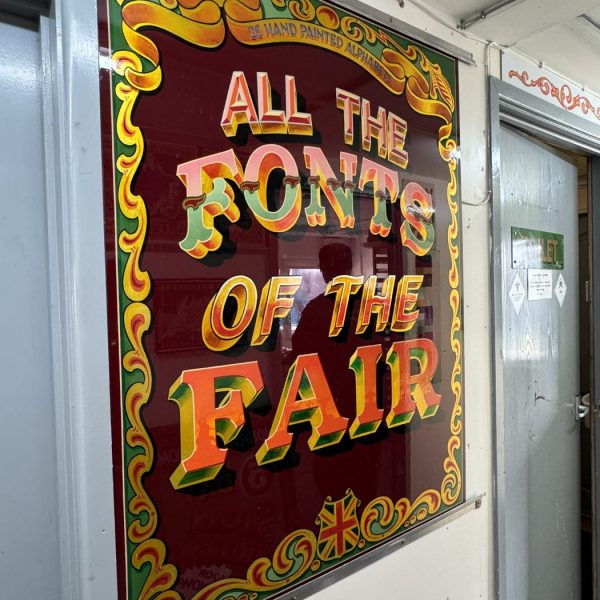


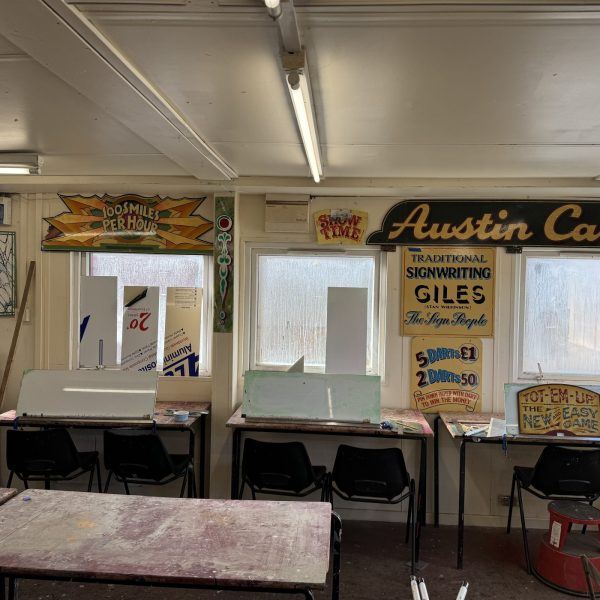
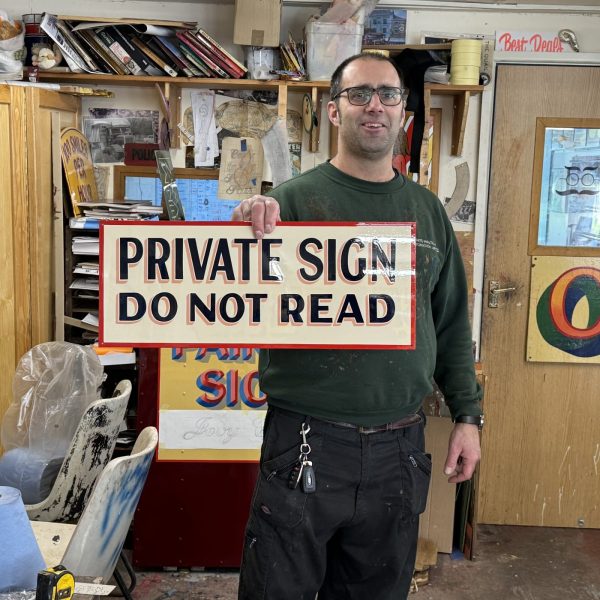
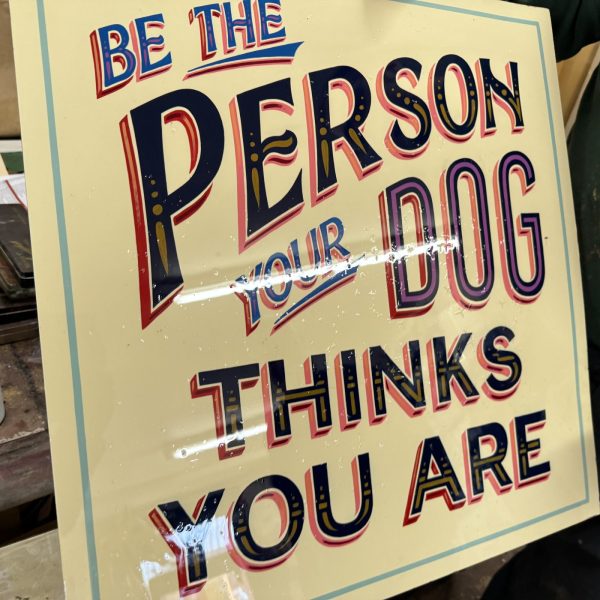

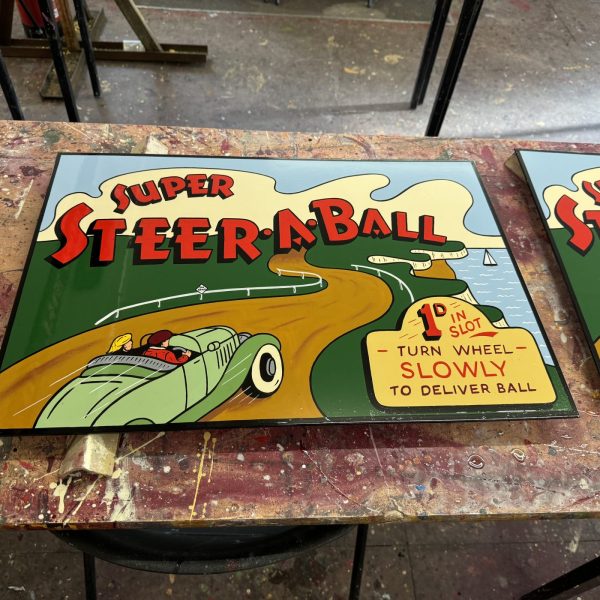
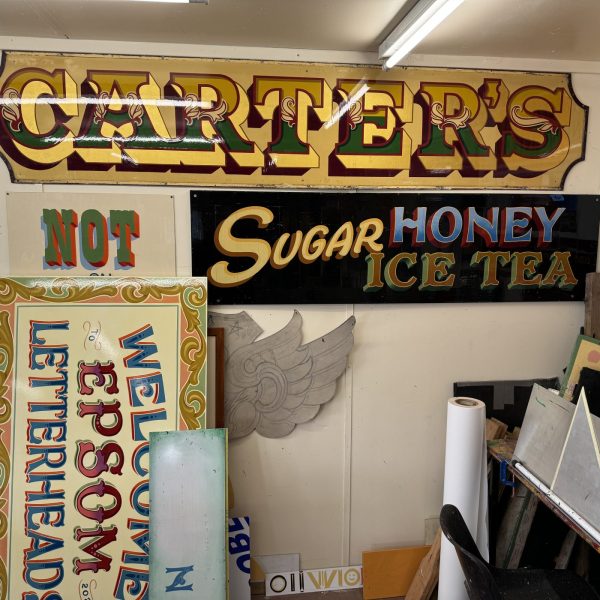
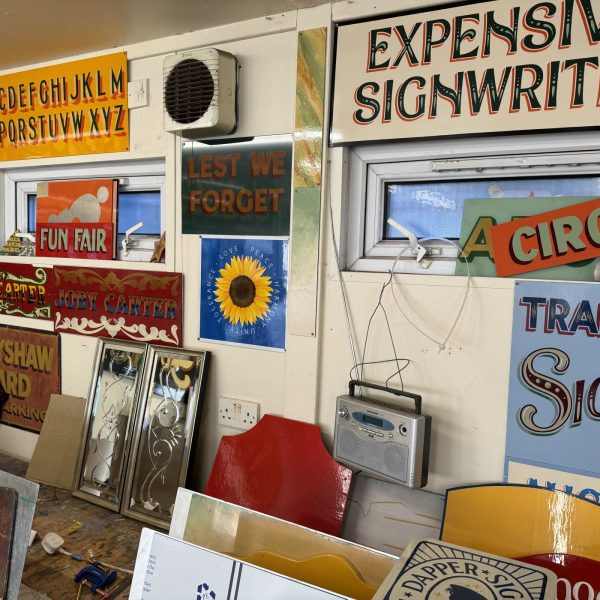
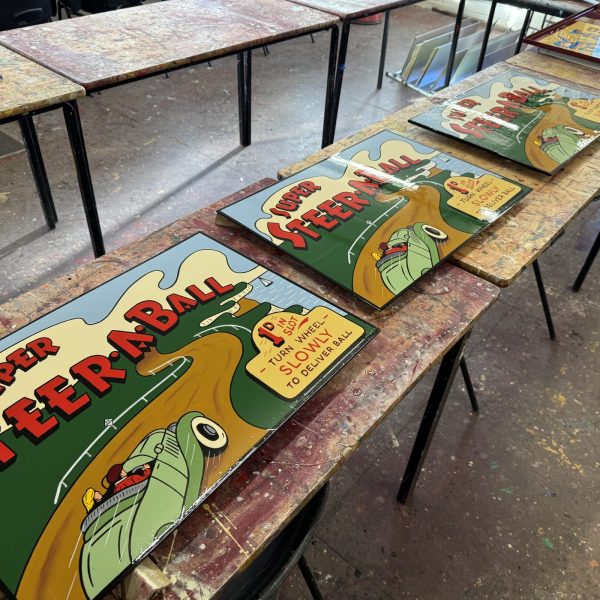

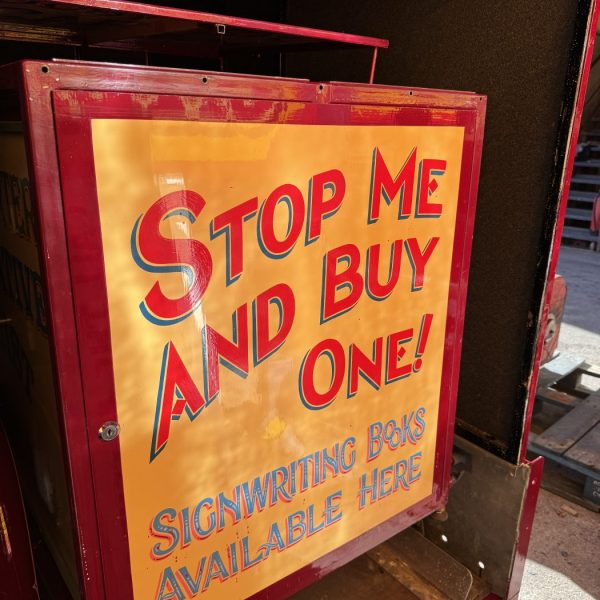
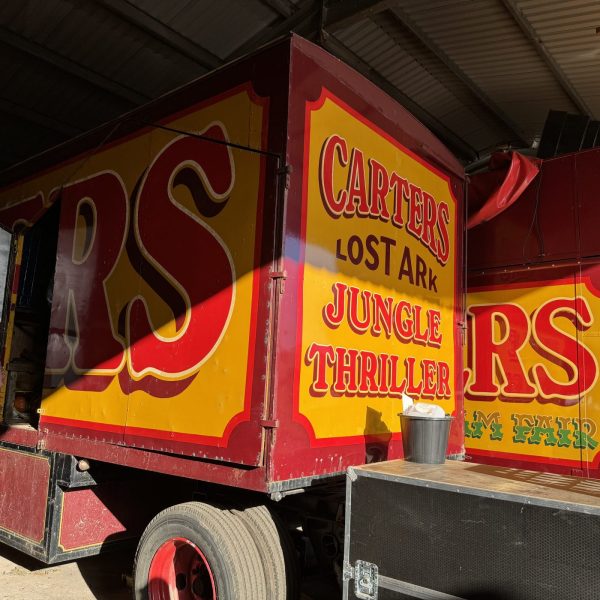

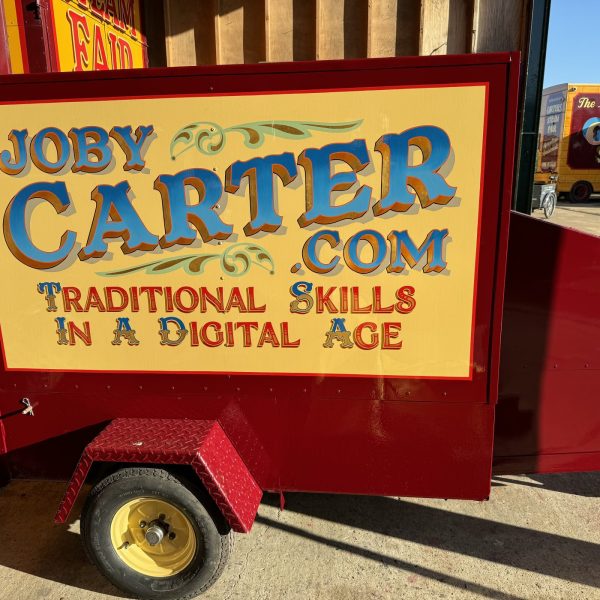


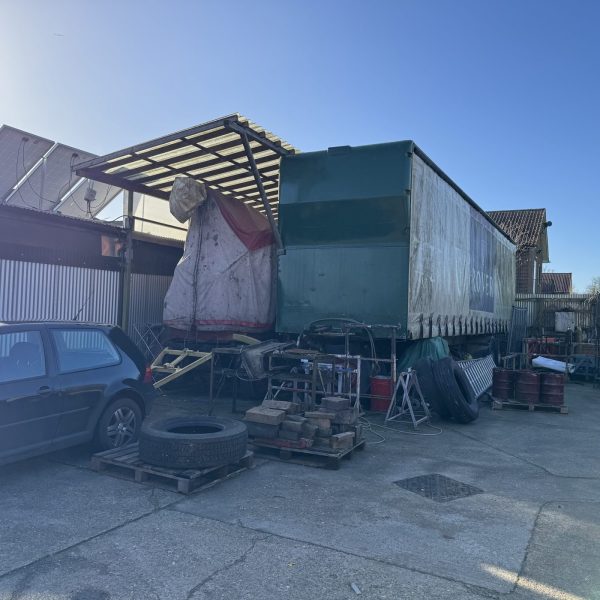

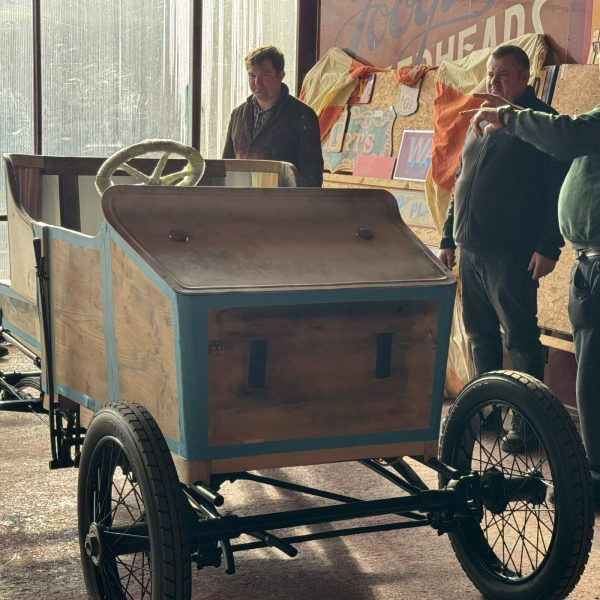
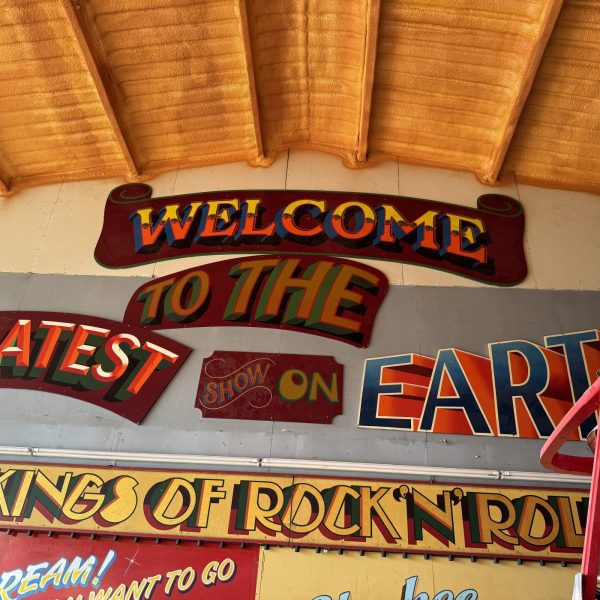
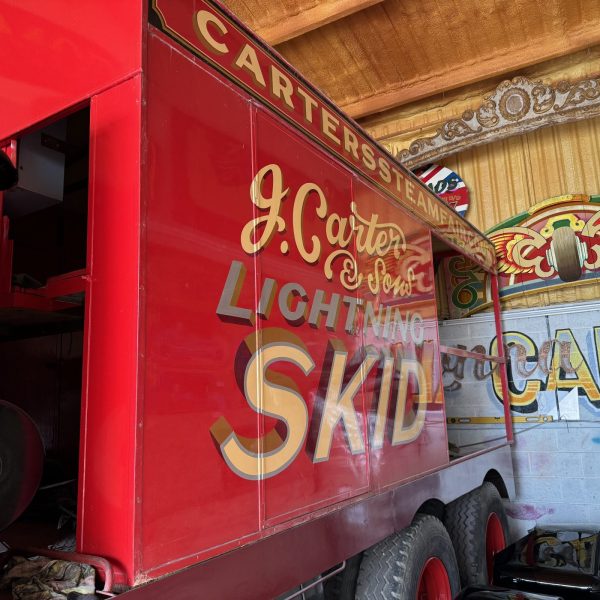

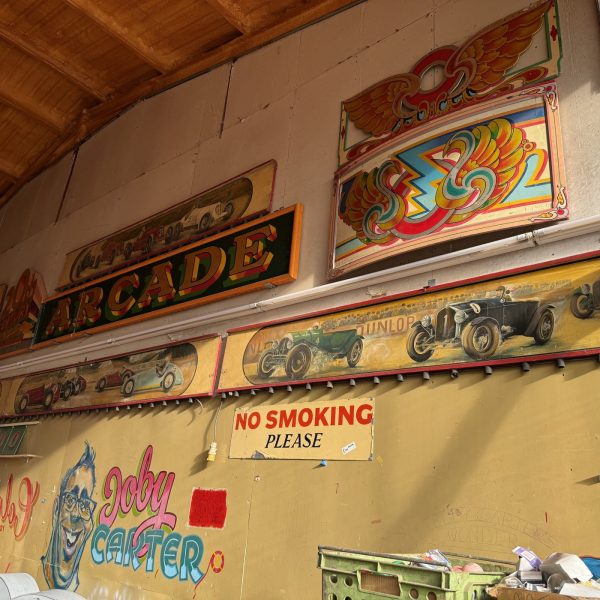
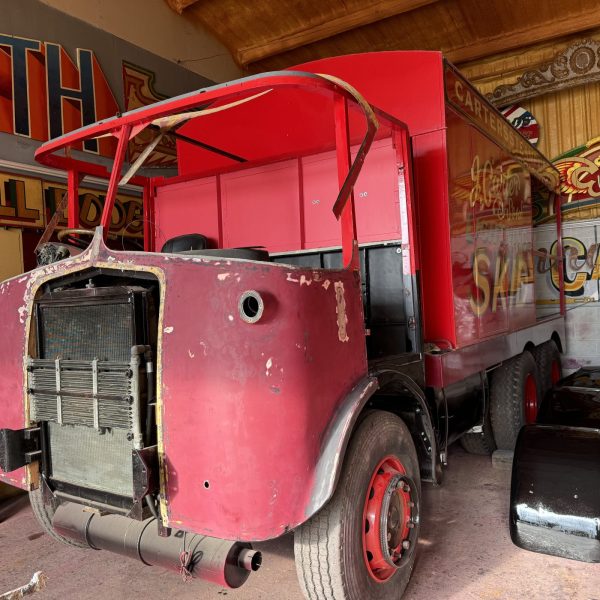

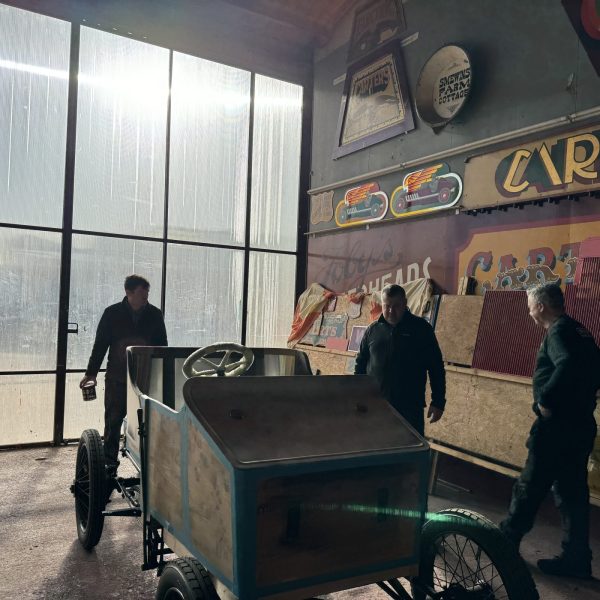
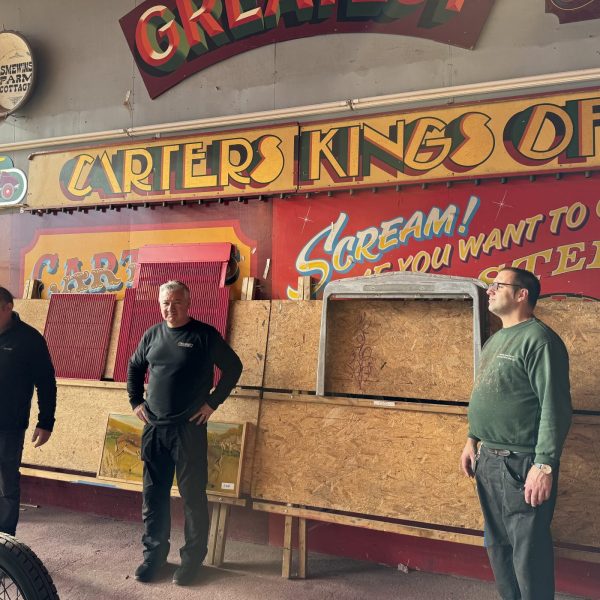
Our very special 1905 Riley 9HP continues to make fantastic progress. Lydia has been finishing the buttoned back for the Riley seat. This was particularly challenging, as the original seat was made from a soft oiled cloth, but she was now using leather, which is much thicker and a lot harder to manipulate.
The flat centre part wasn’t too difficult, but she had to put a lot of thought into getting the pleats in when it came to the curved corners. Once the body of the car is back from paint, Lydia can fit the seat in properly and finish off the top!
Various parts of our Riley 9HP have been in the paint shop with Mauro while Lydia moved on to the running boards. She made the rubber inserts for the running boards and made sure to cut the hatch out carefully to allow for the cranking handle to be easily accessible.
After this, the car was ready to be moved on to the next stage of its restoration.
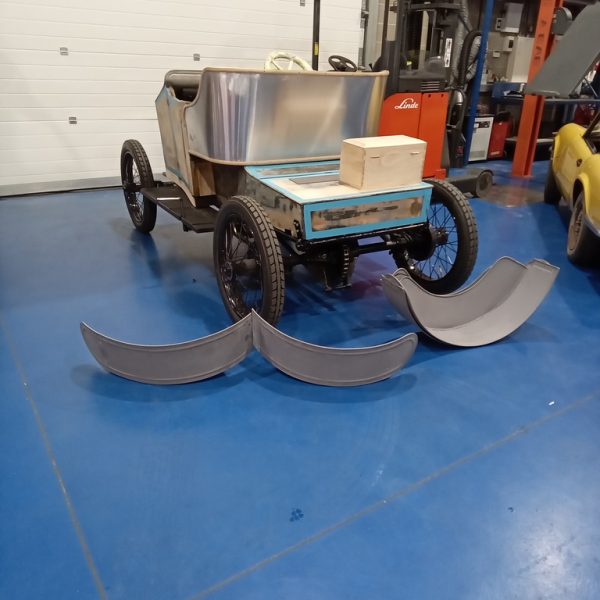
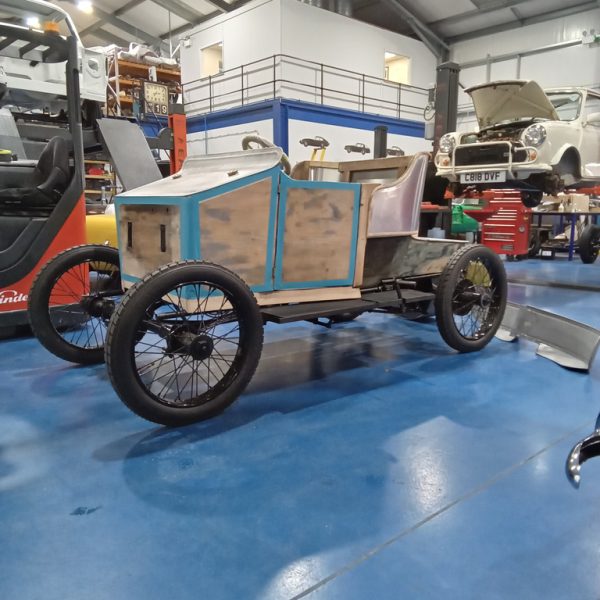
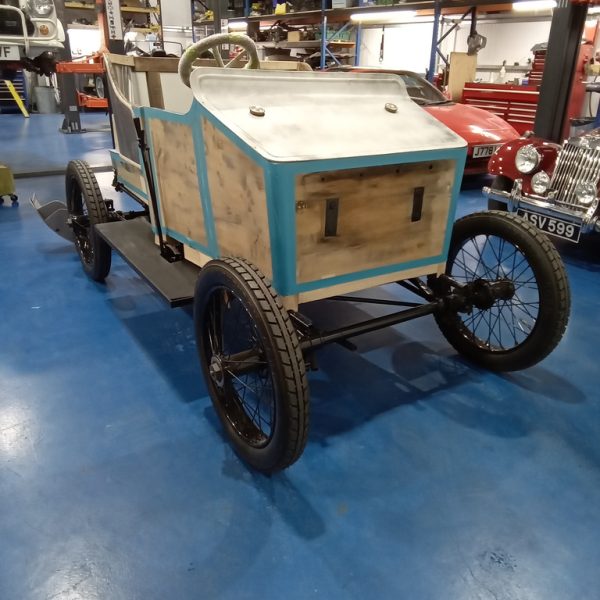
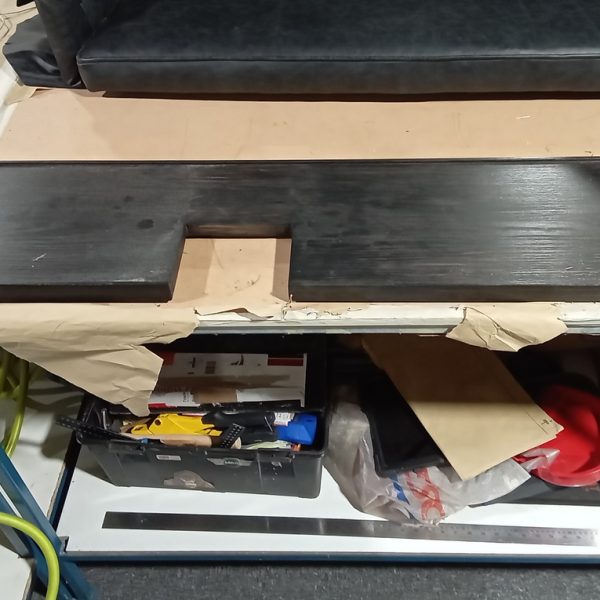

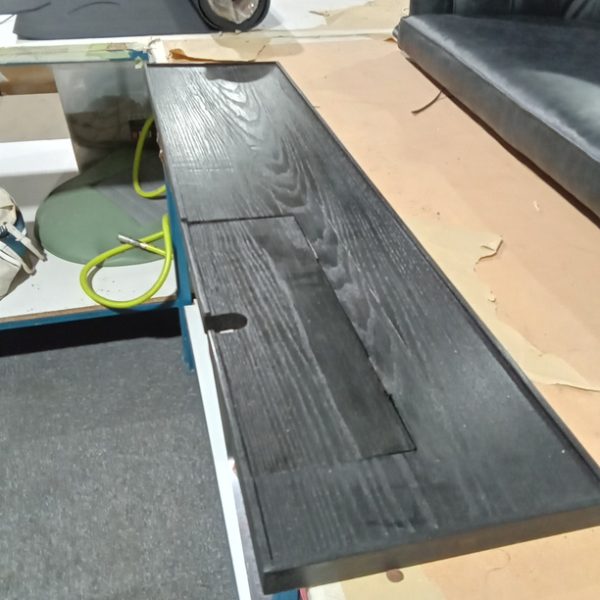
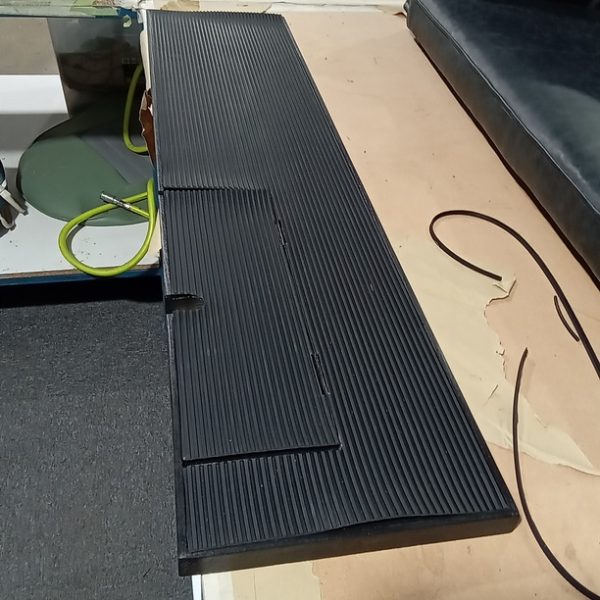
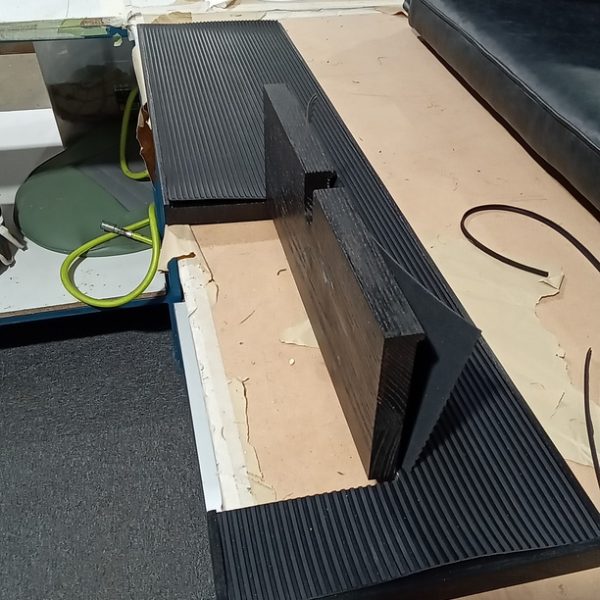
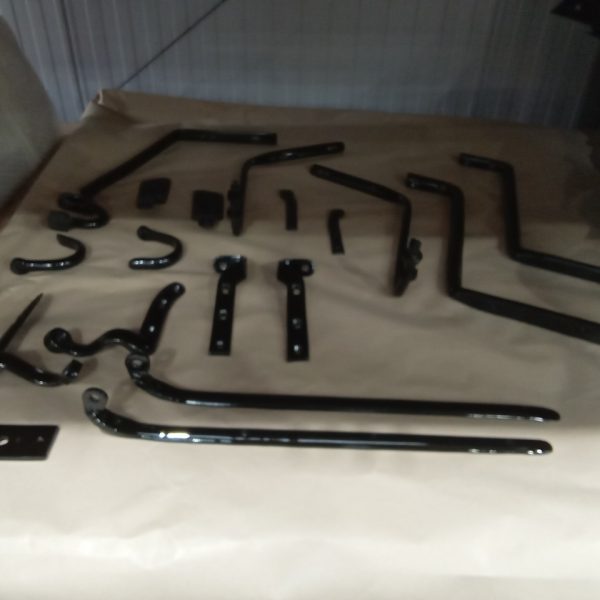
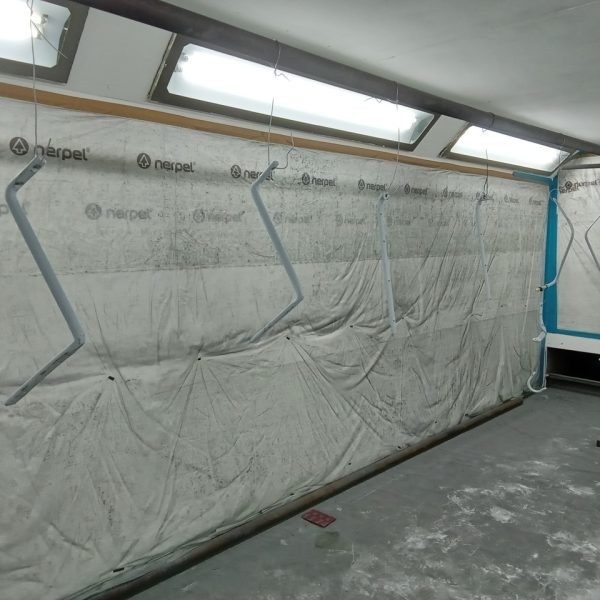
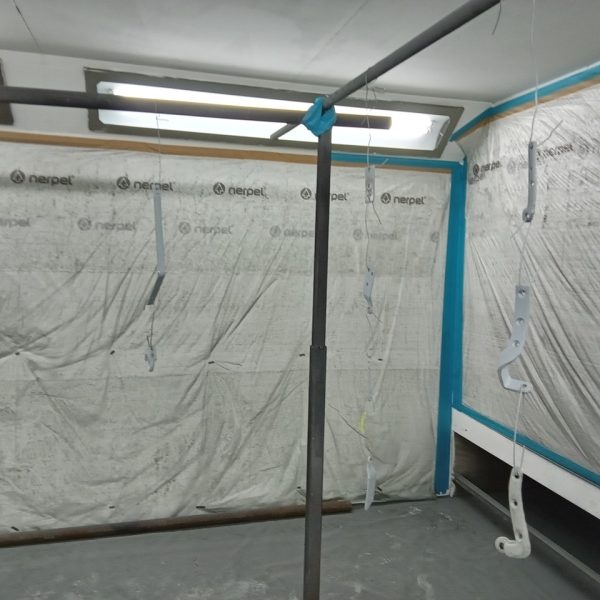
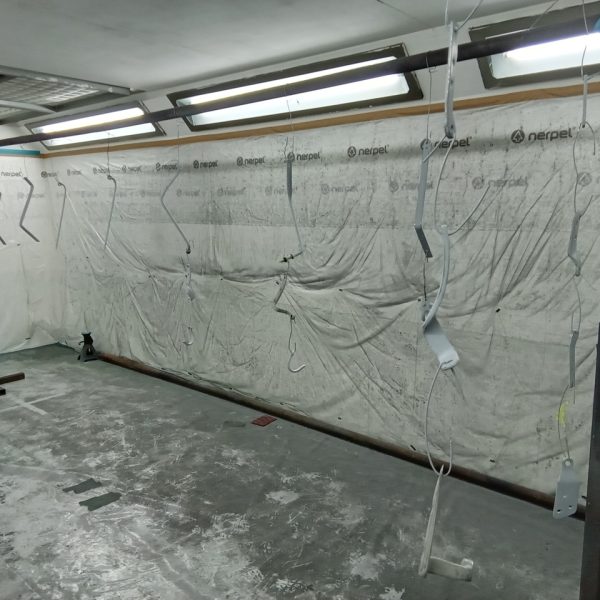

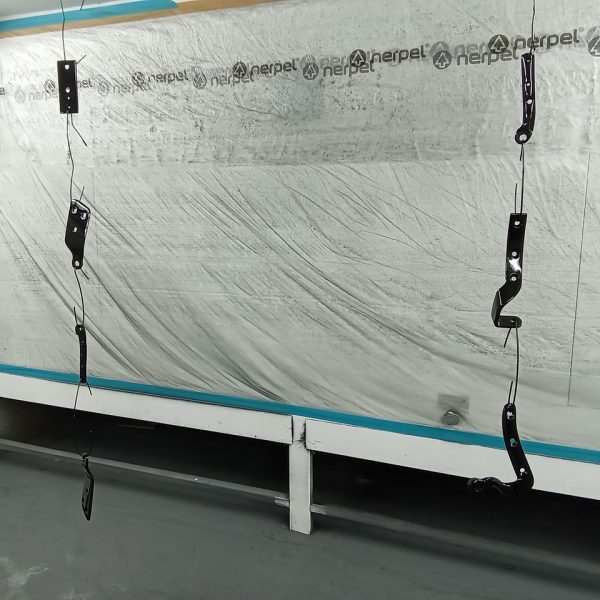
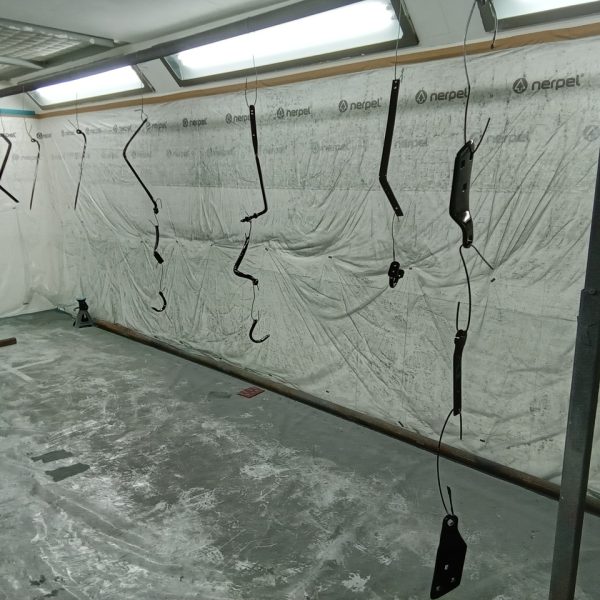
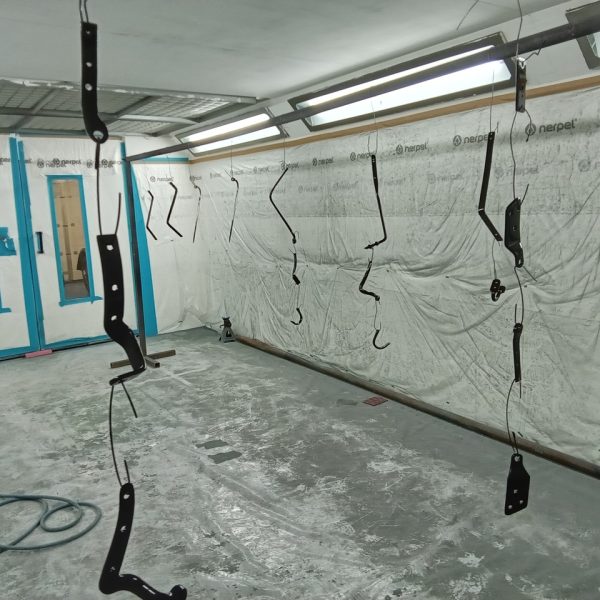
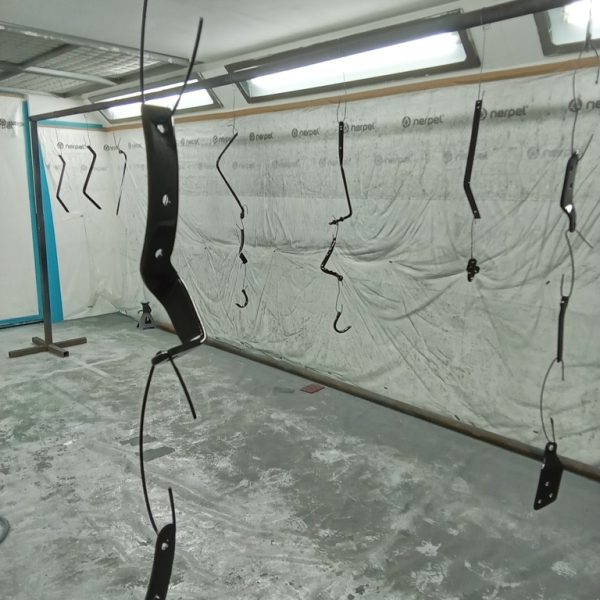

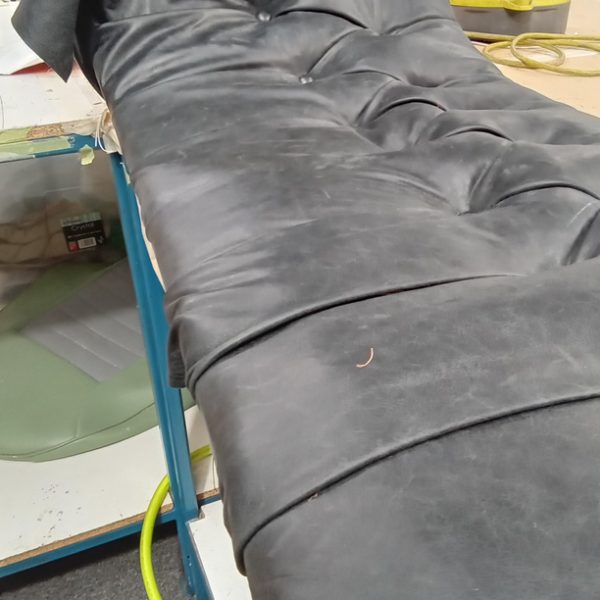

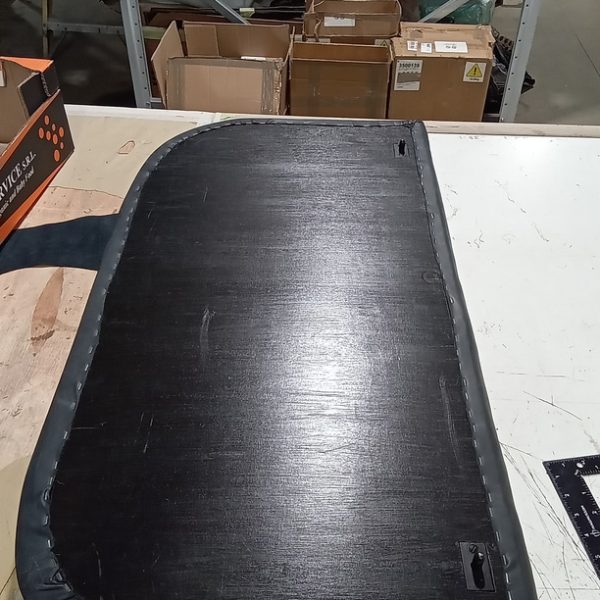


Yesterday, Lydia was preparing the seat backrest that Darin, from Ashbocking Joinery has kindly made for us.
This involved replacing the springs back to their original position and hand sewing them into place. Next came various layers of cotton and horsehair padding, and then working out her fabric allowance with a scrap piece of fabric. This meant that Lydia could then cut the leather.
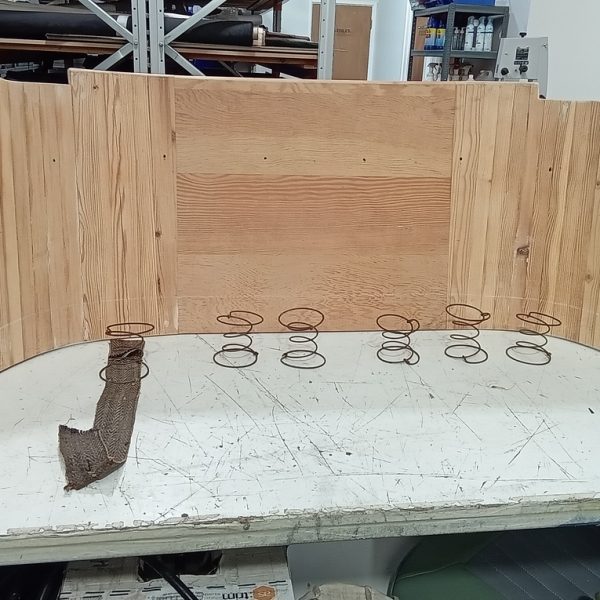
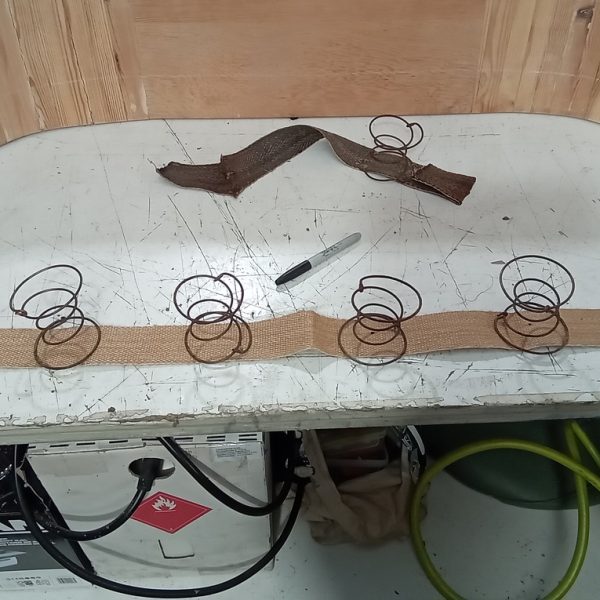
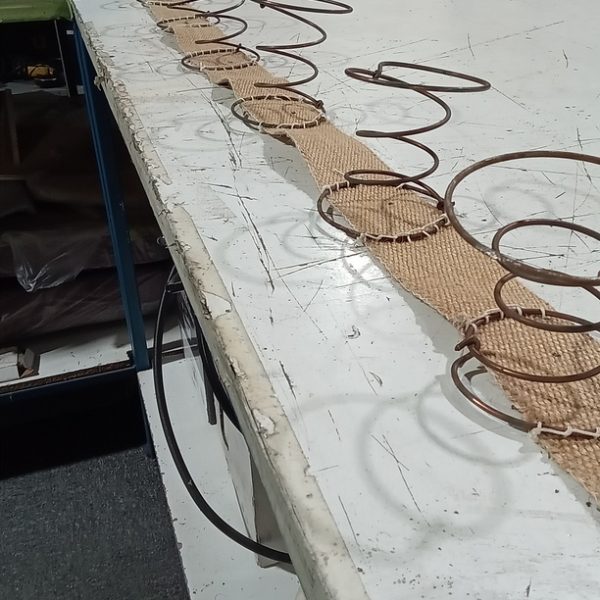
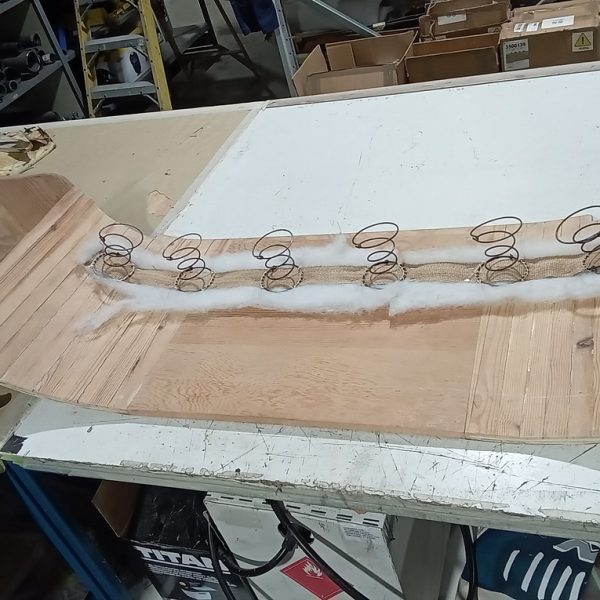

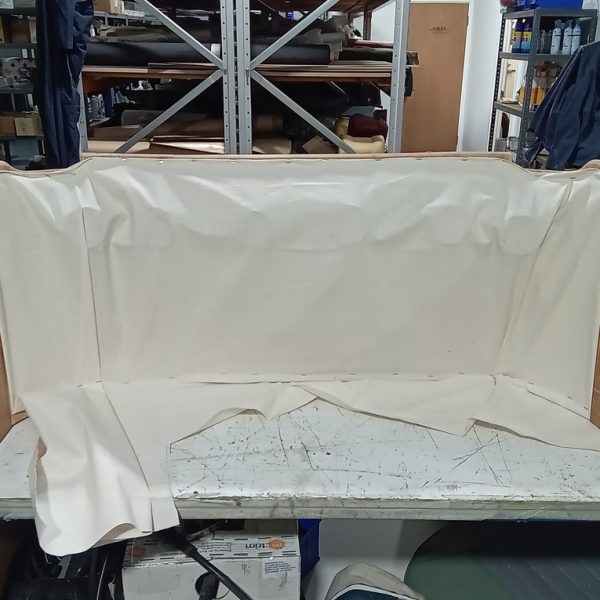
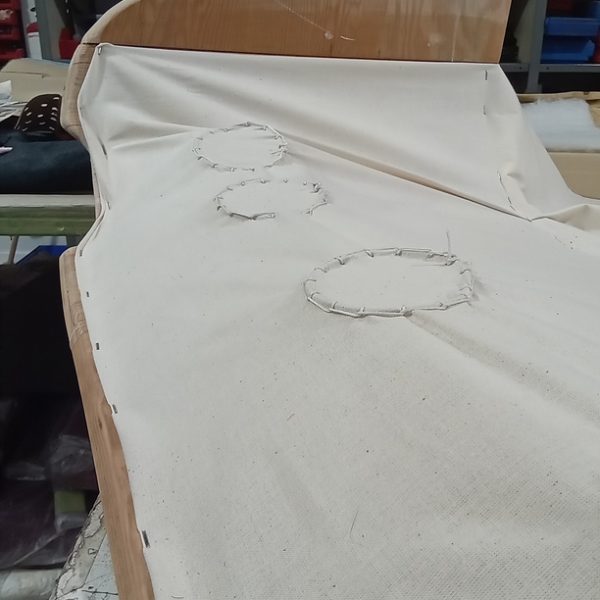
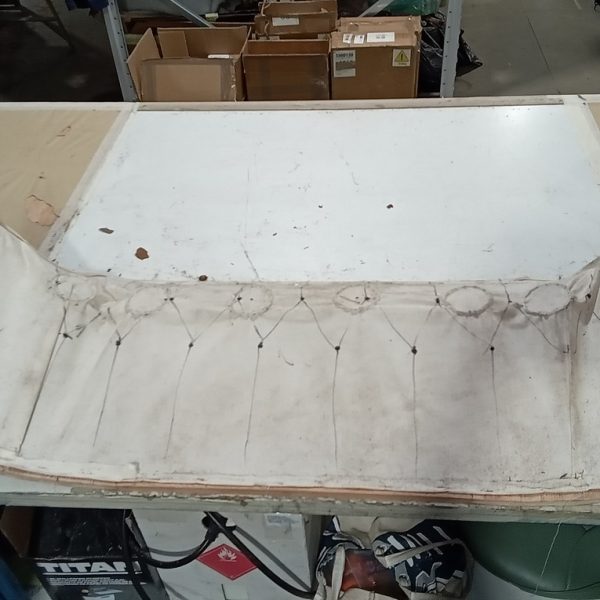
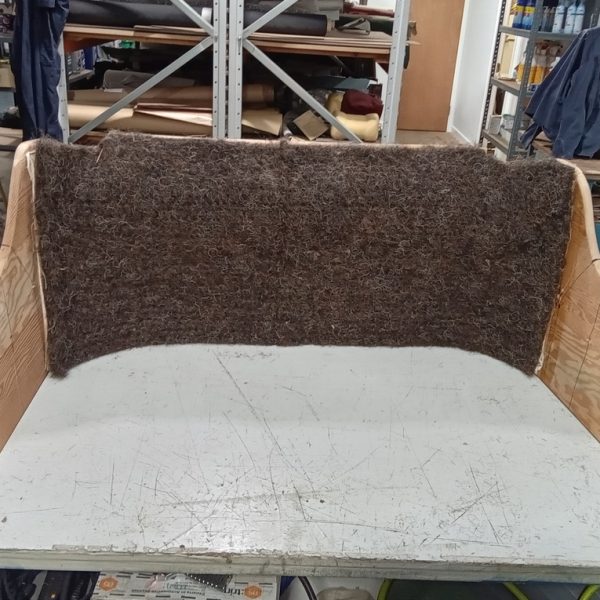
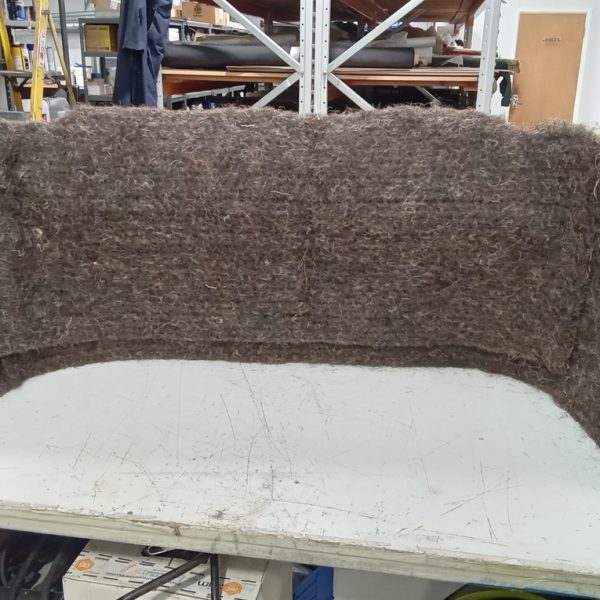
Lydia has upholstered the base seat of our 1905 Riley 9HP.
She used a 2-inch foam for the base to provide a firm seat so that the driver doesn’t slip out of the seat. She then placed a layer of horse hair on top to give it the correct finished look and feel. This is a tightly woven material which has been needled into hessian sheets.
After this, Lydia cut the face fabric and piping and sewed these together. She used a period-correct paper piping. Then was the border which was made in 2 pieces, and sewed onto the seat face.
Lydia chose to do a border all around so that the seat would have a plump look.
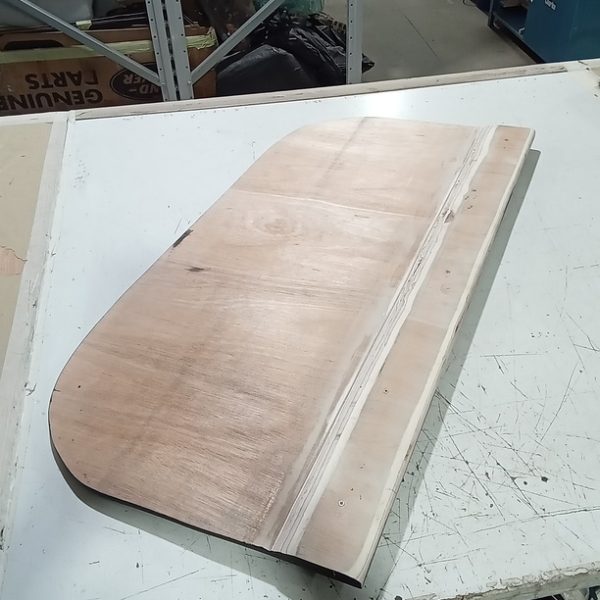




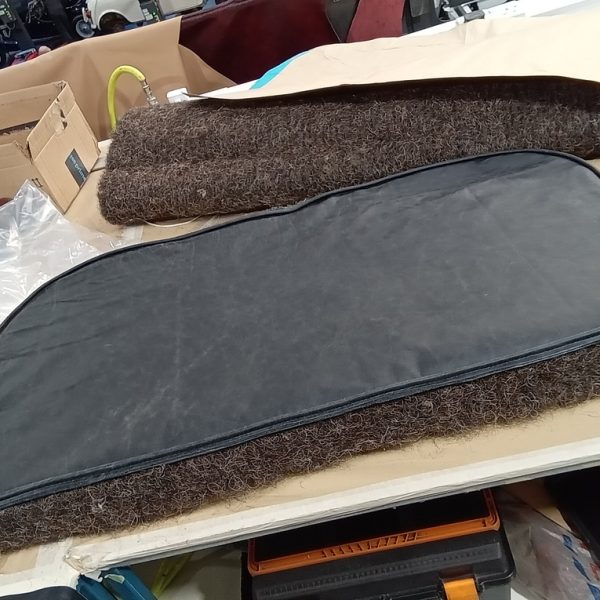
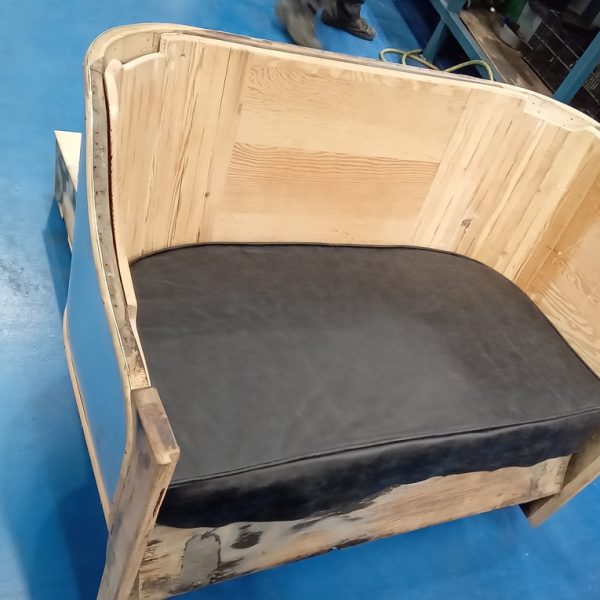
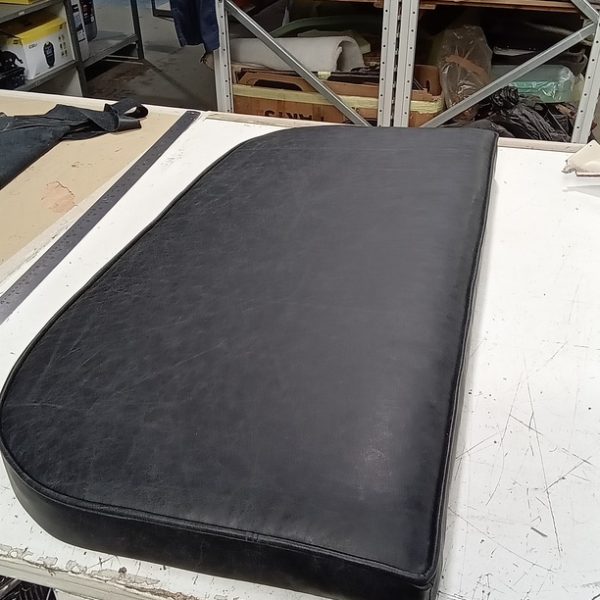
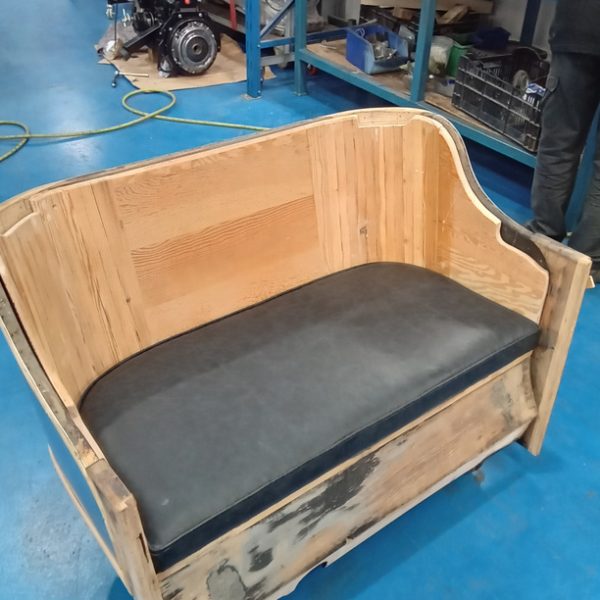
Recently, Lydia has been making the pattern for the base part of the seat of our 1905 Riley 9HP. She has been working with Steve to make sure that the seat is adequately secured when placed in the vehicle. They have decided to make a metal dowel/peg affixed to a metal plate, which will locate into a hole in the body of the car. Lydia added a wedge of wood at the front of the seat to provide a bit more stability for the peg beneath and also as a bit of a leg bolster.
Steve also made new gear lever selector pin and fitted it to the car as the old one was worn causing inaccurate gear selection.
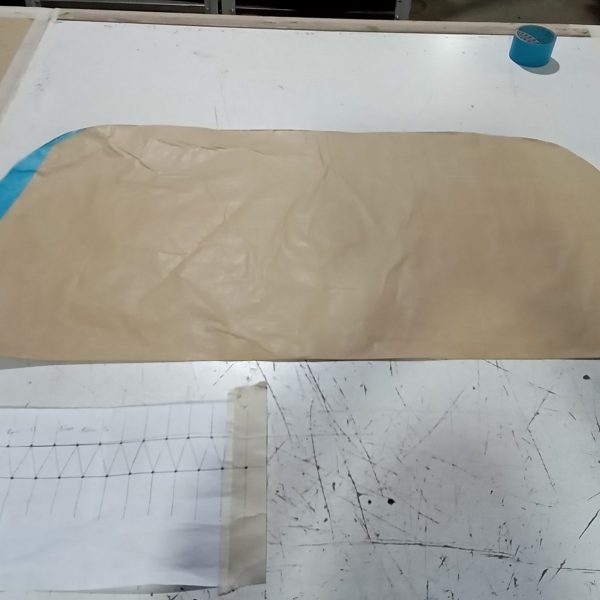
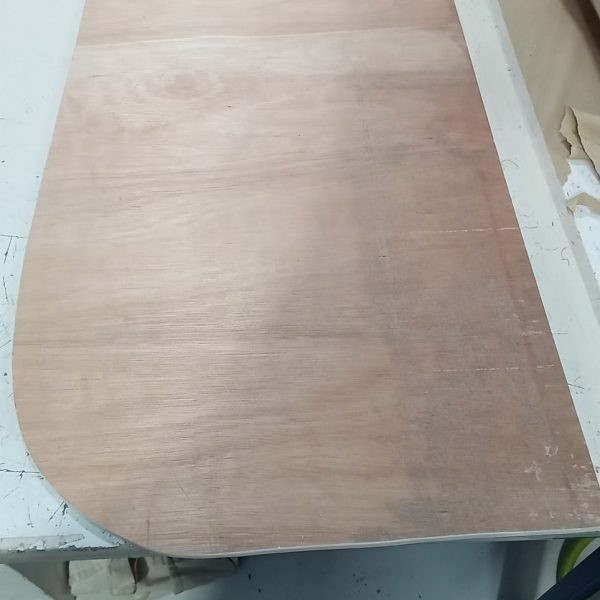
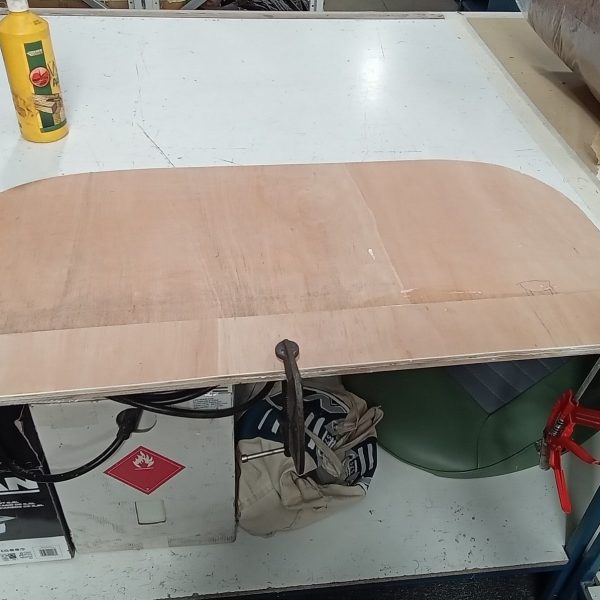
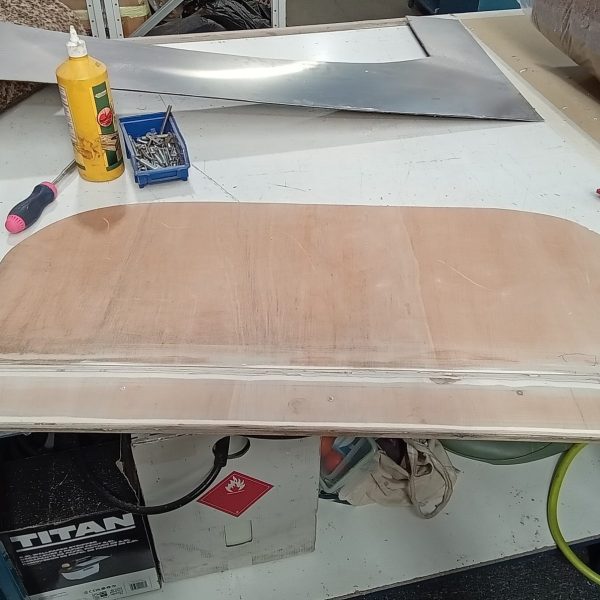
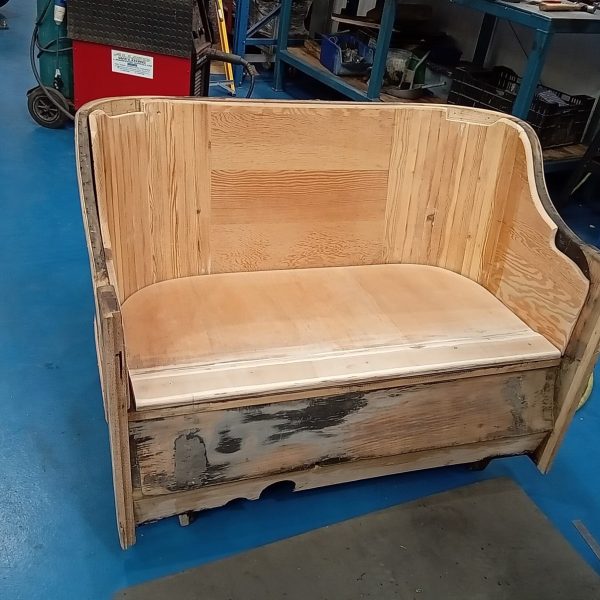
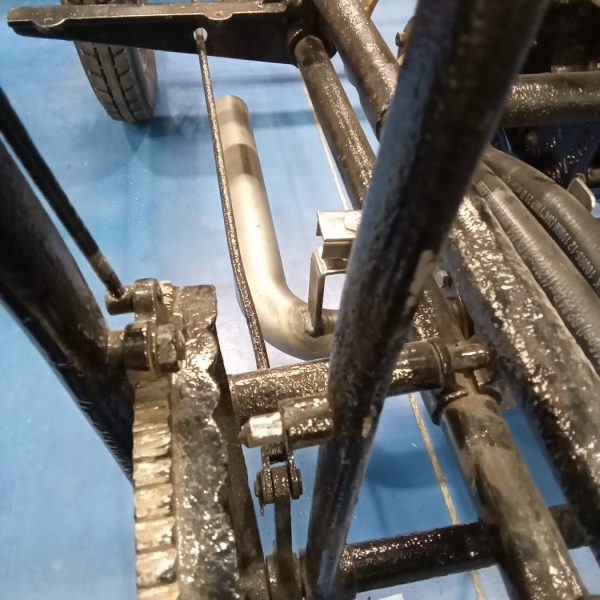
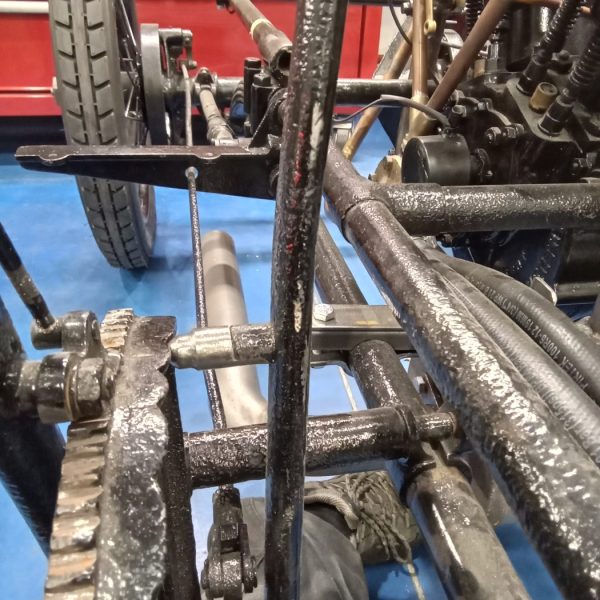
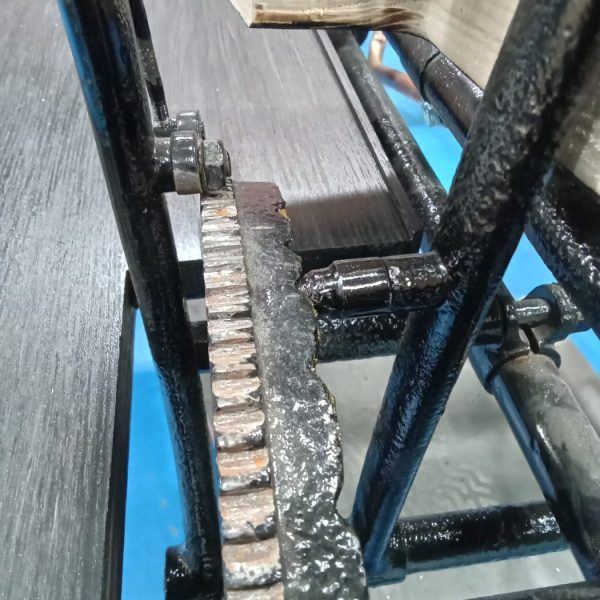
There’s been some incredible progress on our 1905 Riley 9hp in recent weeks.
Recently, the team here at the Bridge Classic Cars HQ have been working full-steam ahead on the 1-of-1 antique car.
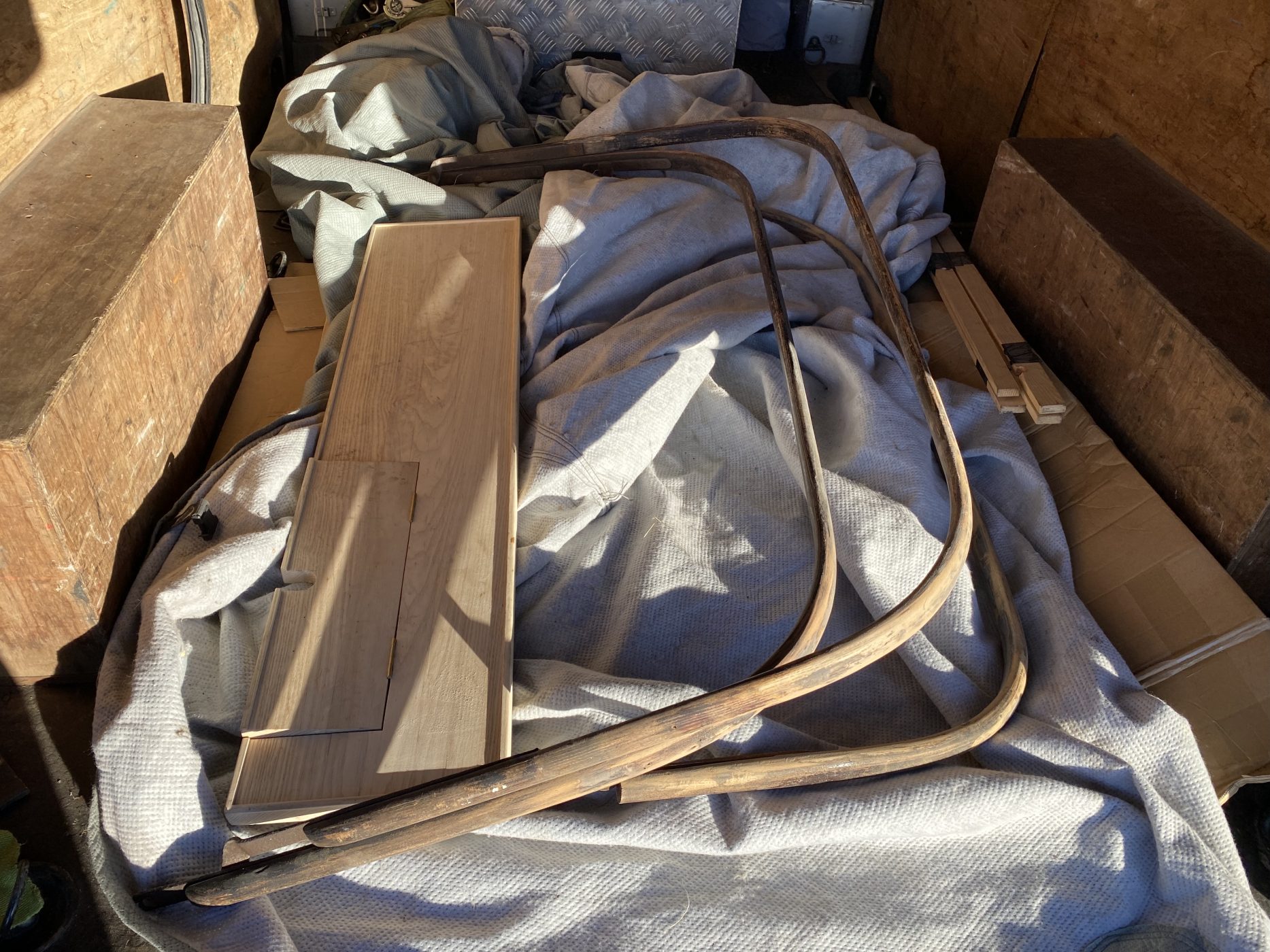
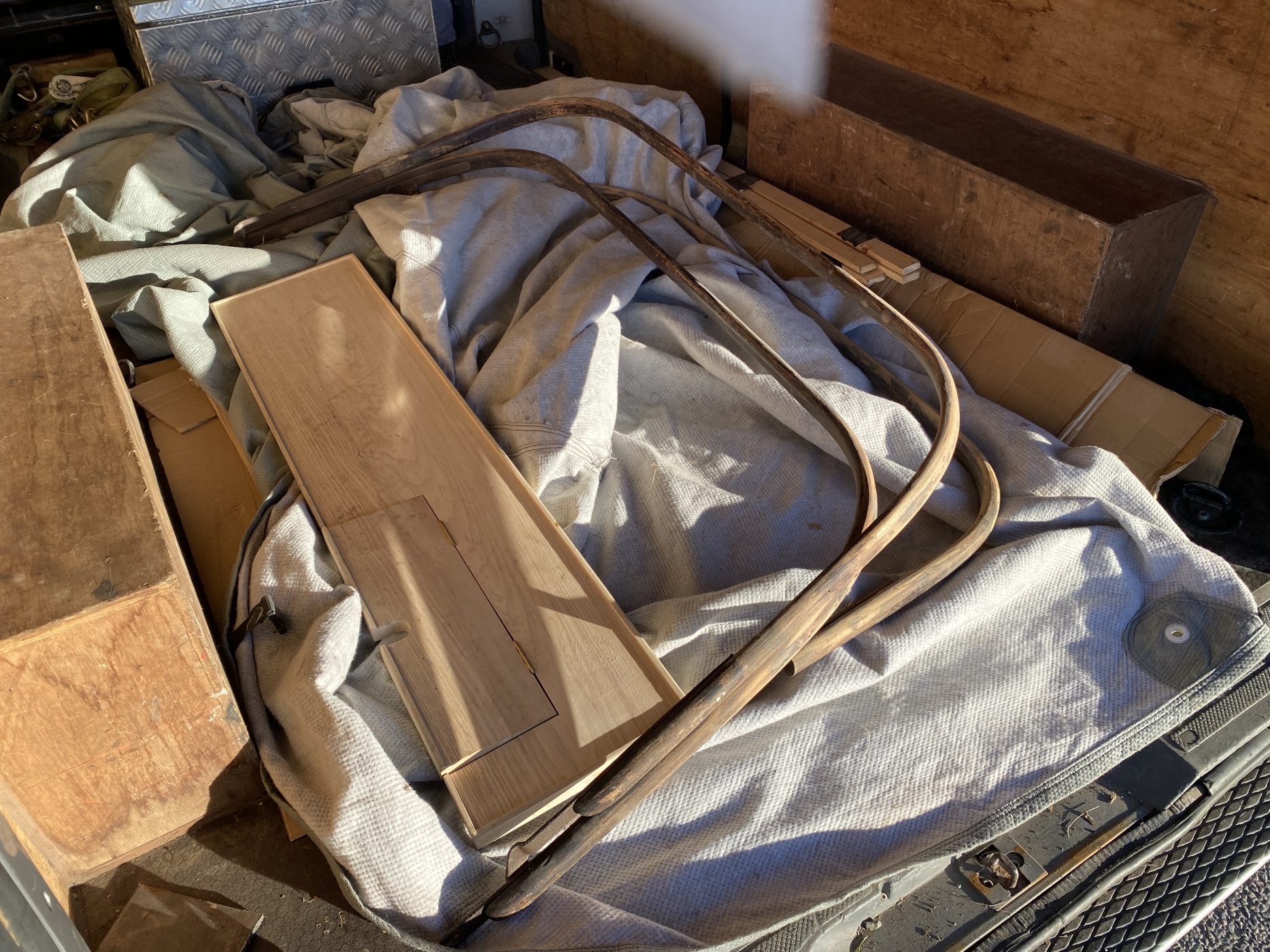
The wooden frame has returned from the team at Ashbocking Joinery ready for the trim team to continue their careful and precise work in bringing the wooden structure back to life with its handmade covering.
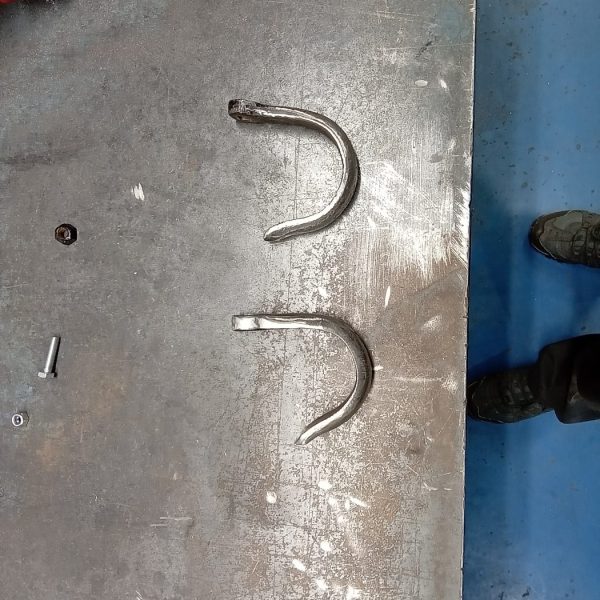

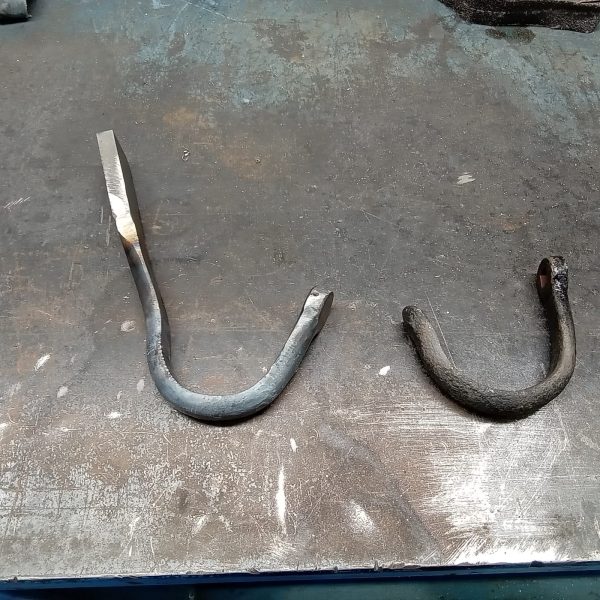
Meanwhile, the fabrication team have been working on recreating several pieces which needed to be re-manufactured for the hood to be fitted up properly for testing. These small hooks are part of the hood support system which needed to be made and shaped by hand to perfectly fit the 119-year-old car.

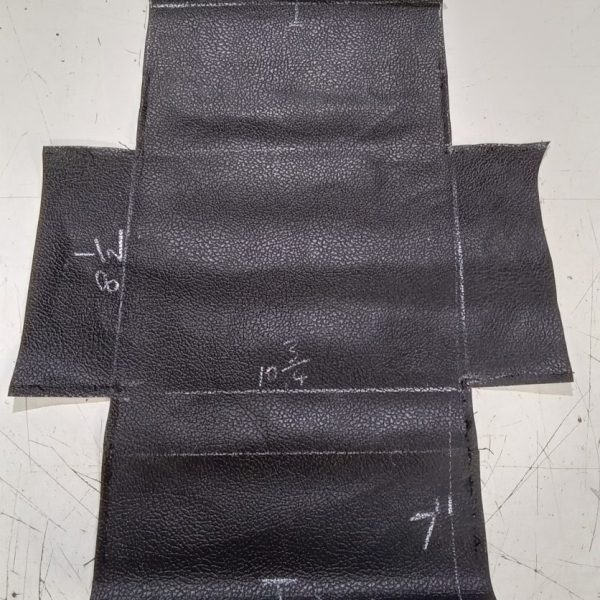
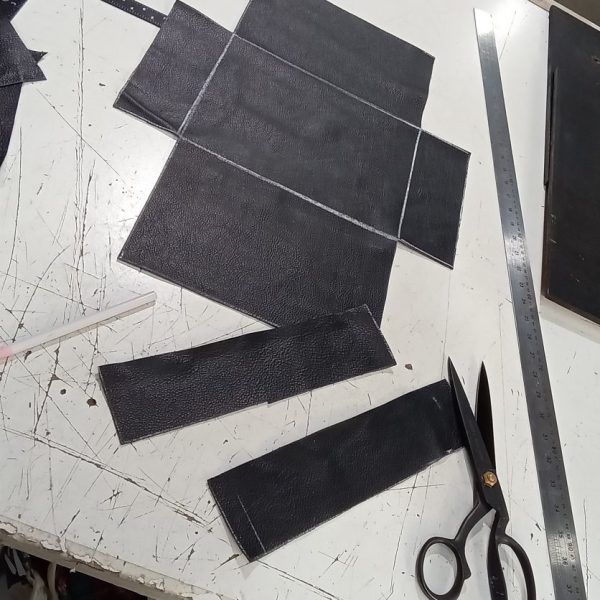
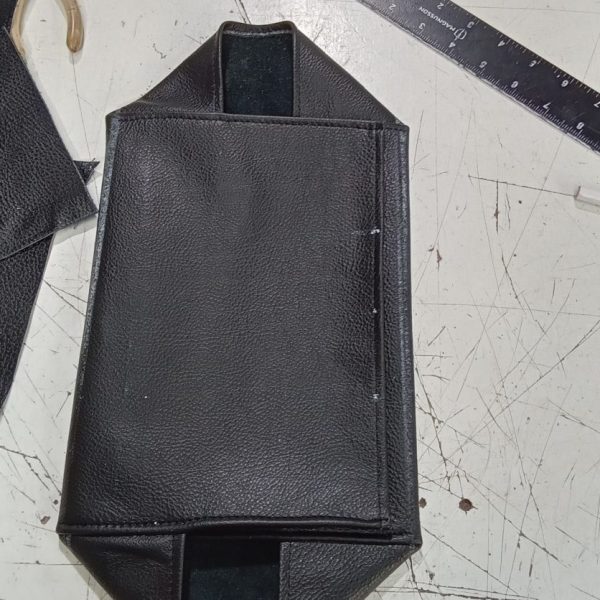

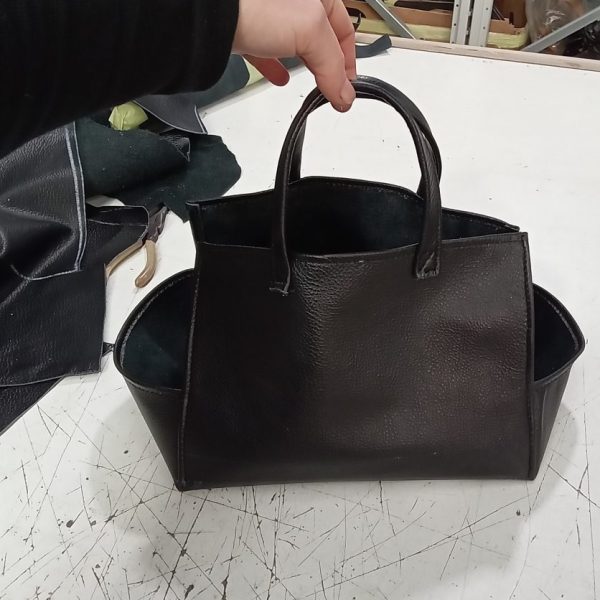
At the same time, our trimmer Lydia has been working on making a battery bag for the battery. Although its truly a safety item, she has made stylish and perfectly sized for the car. The whole purpose is to make it easier to remove the battery from the wooden box it is fitted into, but the thickness of the leather and the material itself allows for some dampening and deadening to protect the battery and prolong its life.
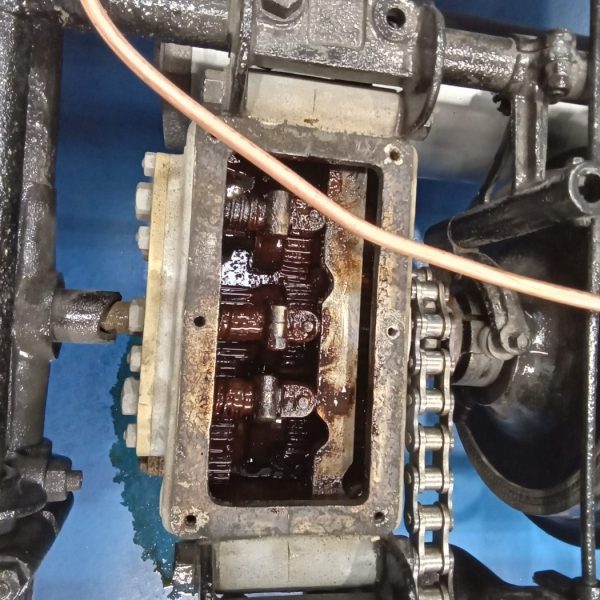

On the chassis itself, in the main mechanical workshop, Steve has been working on the gearbox. Before the car moves under its own power, Steve has completely flushed and cleaned up the gearbox internals due to the car being sat for long periods of time – and with this much hard work, devotion and passion poured into this very special project it made sense to do it at this time before the body is placed onto the frame for the final time.
Our 1905 Riley 9HP was originally thought to be just 1 of 3 remaining examples. However, the evidence now suggests that it is, in fact, a 1 of 1 prototype of the first car to have fully removable wheels. This is the moment we started the 119-year-old car in the workshop.
Brian has been fitting the brackets to hold the roof frame when it’s folded back, cutting the inner seat frame wood to fit around the brackets.
He then put the front inner seat frame into the car, adjusting the cutouts around the brackets before glueing the left-hand side of the frame back on, before fixing it with a metal bracket.
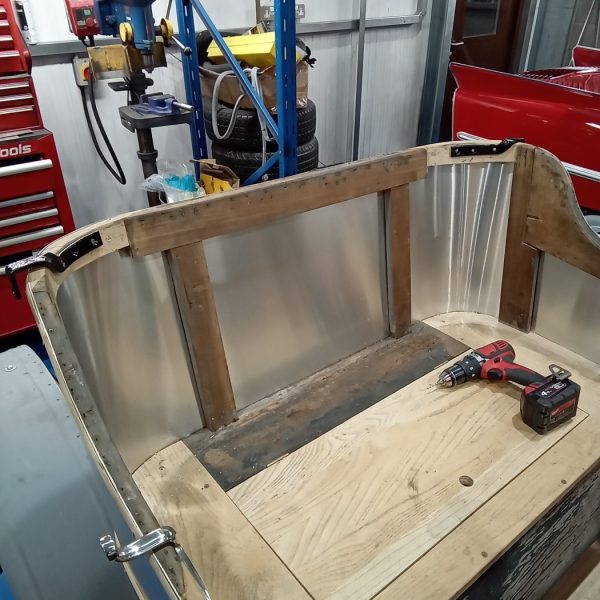


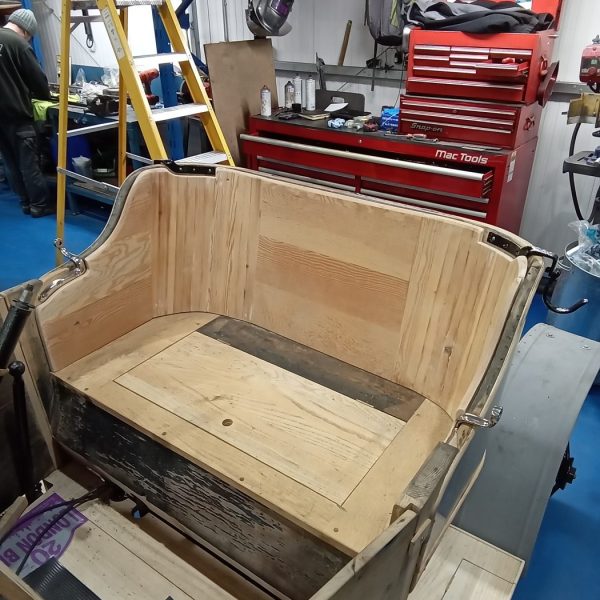

The battery box metal frame is almost complete and will eventually have an ash wood box for battery to sit in.
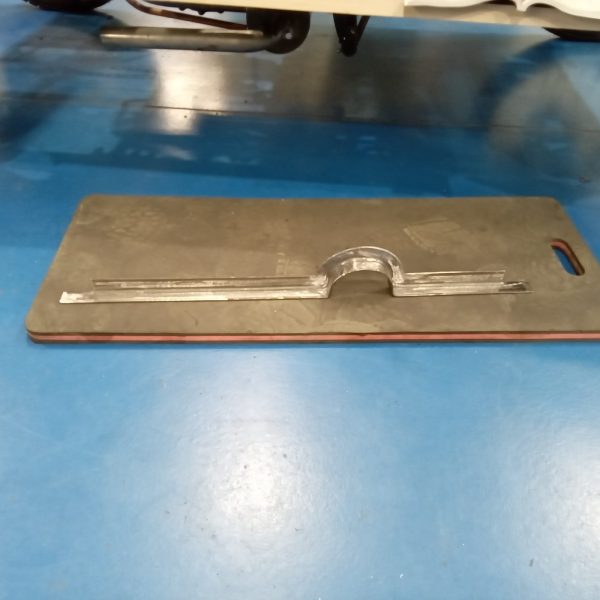


Steve is still working through the few final pieces on the 1905 Riley 9HP restoration. A new final drive chain has been fitted, new fabric body prop, new fabric exhaust has been temporarily fitted to help with routing of coolant pipes.
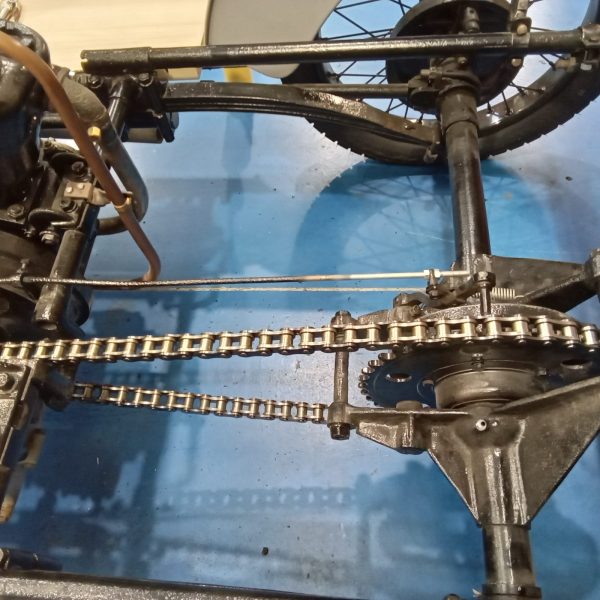
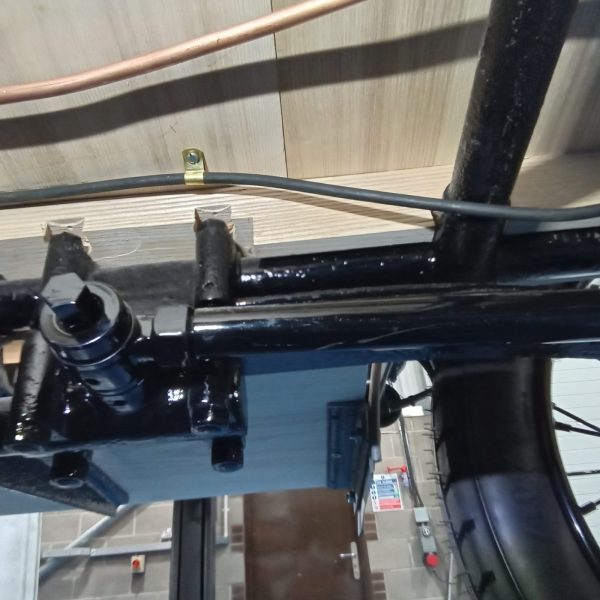
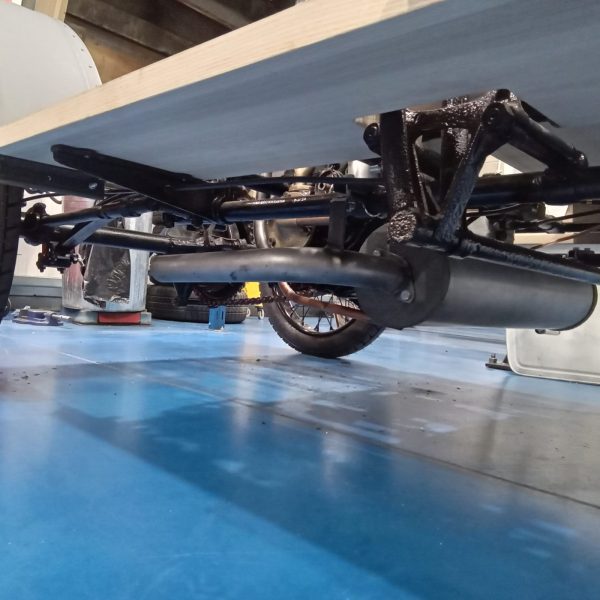

The restoration of our one-of-a-kind 1905 Rilep 9HP has been something of a labour of love and dedication. With very little reference material to work from, bringing this piece of automotive history back to life has been challenging, to say the least. However, the project has made even more progress recently, as its wooden body has been trial-fitted to the 118-year-old chassis.
Our 1905 Rilep 9HP is a great example of the craftsmanship and innovation of early automobile engineering. Its uniqueness lies not only in its design but also in its rarity as a prototype for the first car to ever have fully removable wheels. The workshop team has worked extremely hard to find any kind of record of how this one-off car should be put back together to honour its legacy throughout the restoration process.
After the wooden body recently returned to the workshop, following its time with Ashbocking Joinery, classic car technician Steve temporarily put the body back onto the chassis in a trial fit to make sure everything goes together as he would like it to. As well as the body going back on the chassis, the impressive radiator has also taken its place on the front end of this incredible classic car.
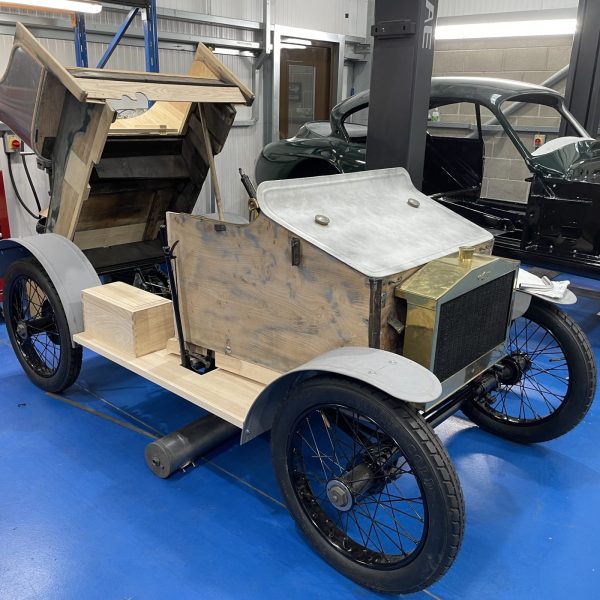
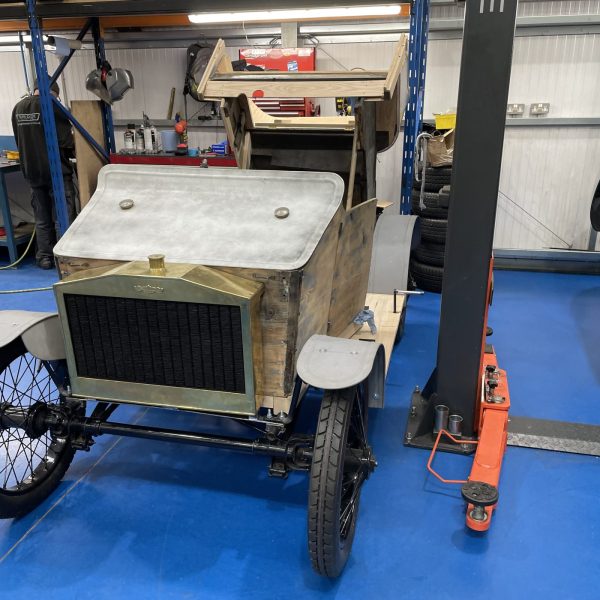
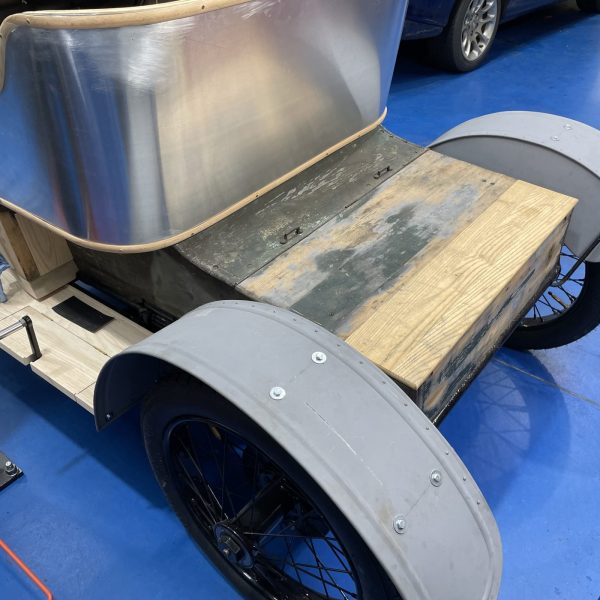
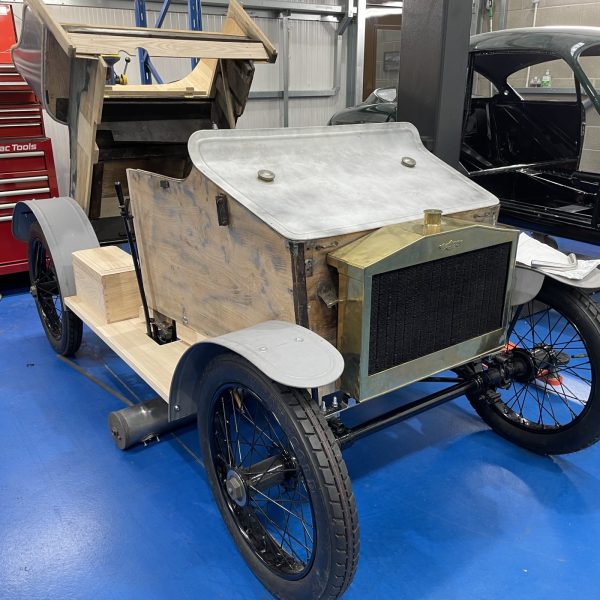
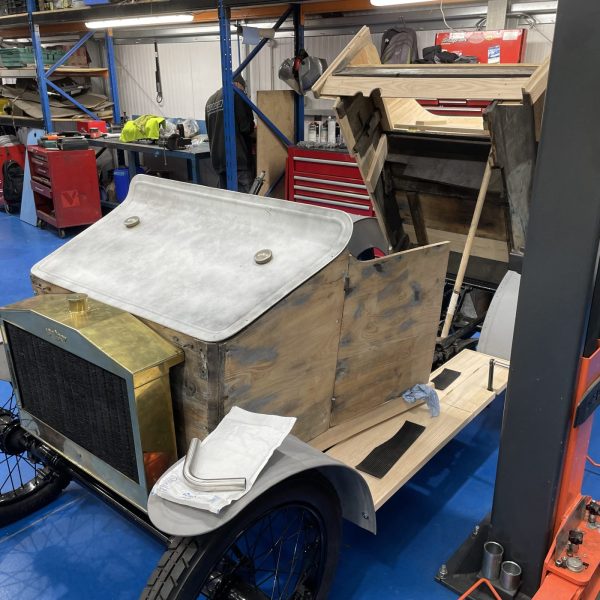
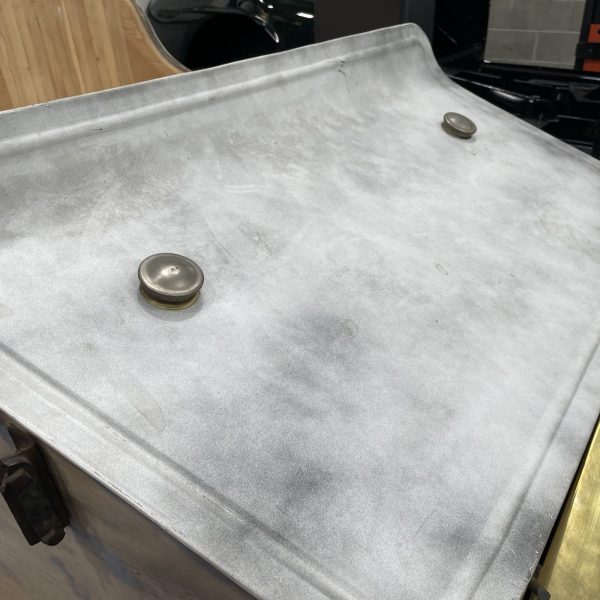
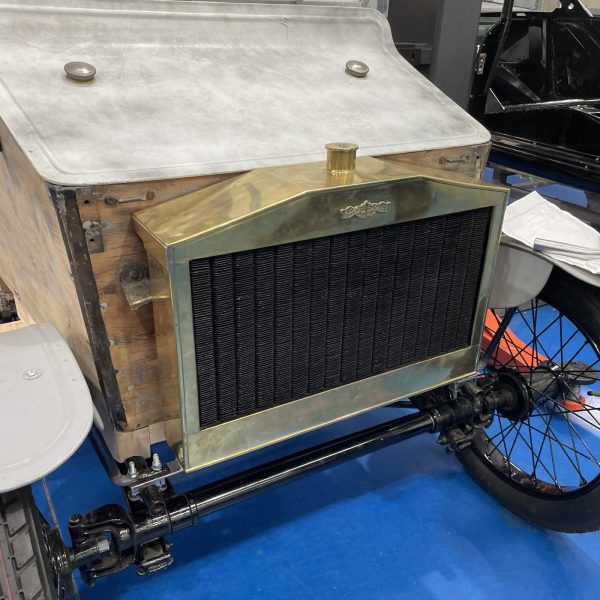
While our Riley 9HP may look much more car-like than it has since it first arrived at the Bridge Classic Cars workshop, it will still need to be stripped down again once Steve is happy that the trial-fitting has been a success. Once stripped, it will then be painted before going back together for the final time. The next big milestone to reach though is getting the car to start. Although we have seen that it can start (we fired up the engine for a very short period of time last year), it has never been run without assistance and in its current configuration.
If all goes to plan, our 1905 Riley 9 restoration will be complete and the finished car will drive out of the workshop in the early part of 2024. Until then though, we are very excited to see it continue to make great progress in its restoration.
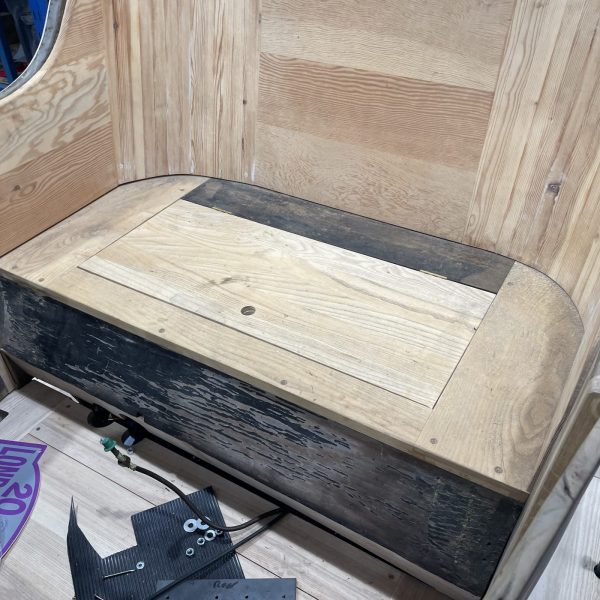



Darin from Ashbocking Joinery is completing the final few pieces of our Riley 9 woodwork. Here is the new tool box and trembler being finished.
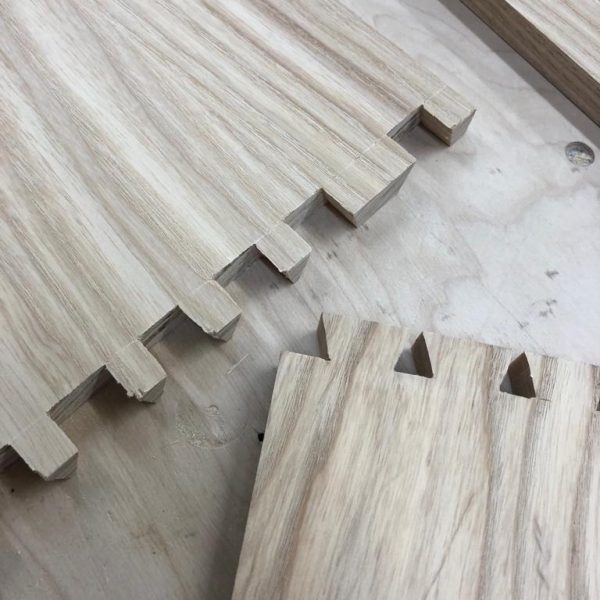
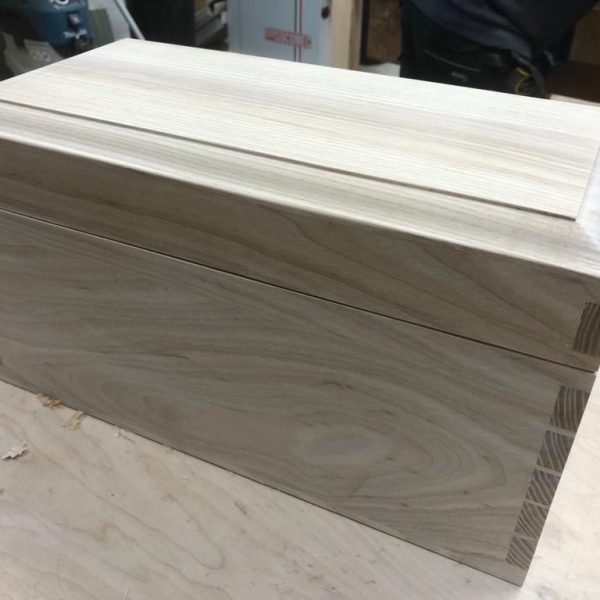


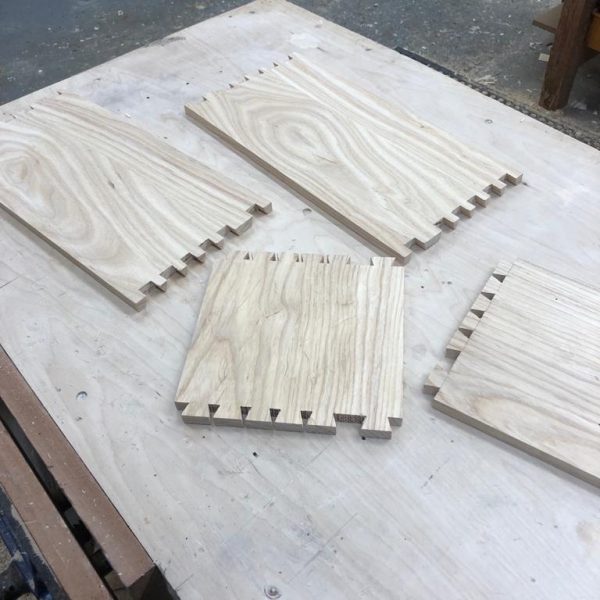
Alright, I am not referring to the start-stop technology of today, it’s not quite the completely automatic system that works by detecting a lack of vehicle motion.
Instead, check out the beautifully crafted hatch that has been made up for our 1905 Riley 9HP. When opened, the vehicle’s engine can be run by simply turning the handle but when the hatch is closed, the handle fits perfectly inside a grove that has been cut out especially for the handle. Doesn’t it look amazing?
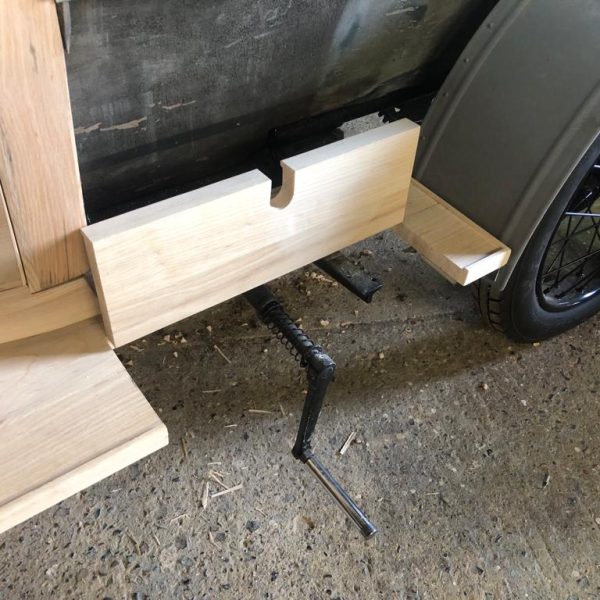
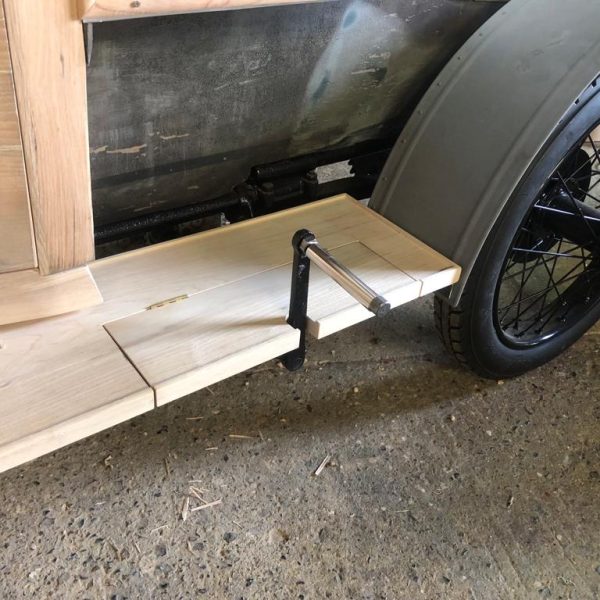
What is start-stop technology in modern cars and how does it work?
You probably have it on your modern car right now; start-stop technology detects when your car comes to a halt and stops the engine automatically. It then starts the engine again for you when you press the accelerater. This technology was developed to reduce the amount of pollution caused by vehicles, specifically emissions released into the atmosphere when cars and vans are idling or stuck in slow-moving traffic.
Our 1905 Riley 9HP may be more than 100 years old but, thanks to our team of skilled technicians and our friend, Darin at Ashbocking Joinery, this is one special car that looks as good as it ever has.
With the wood sections of the car being worked on and fitted to this one-of-one prototype, it certainly shows just how far our Riley has come since we first pulled it out of a barn a couple of years ago.
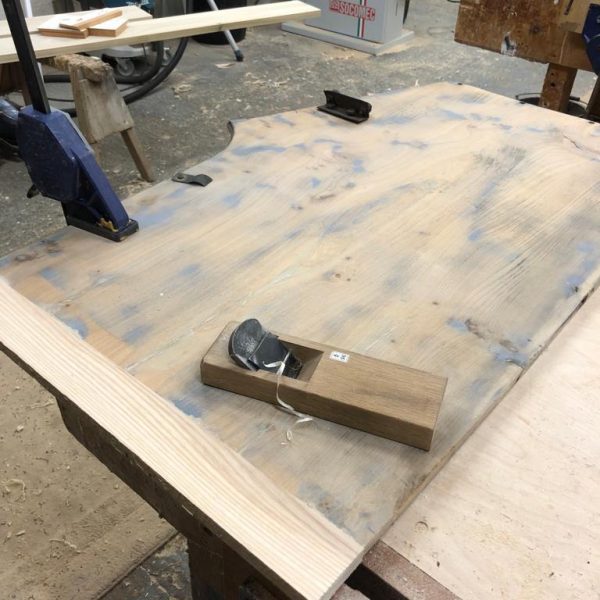
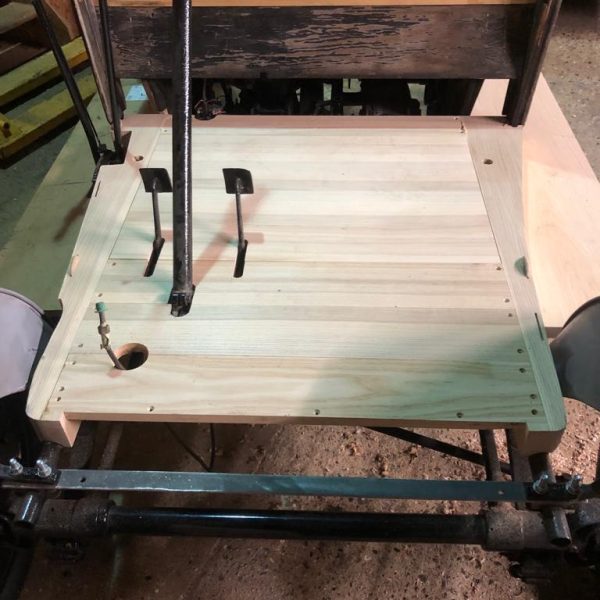
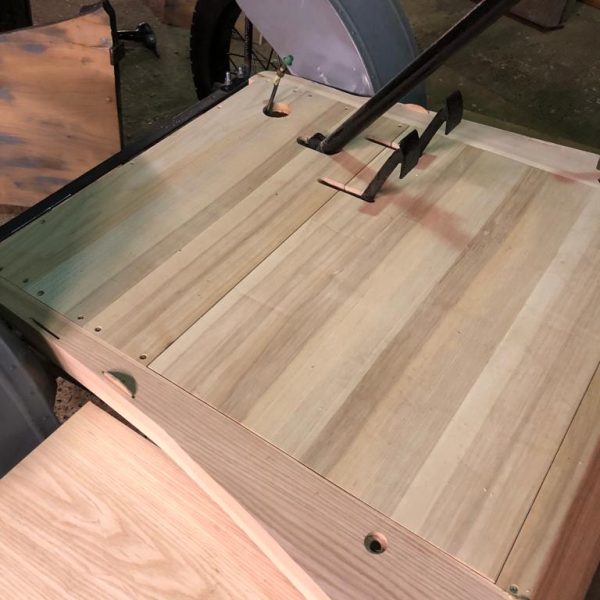
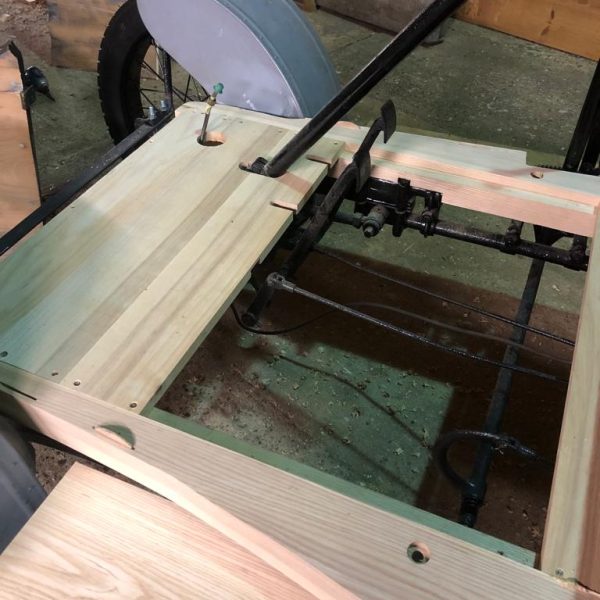


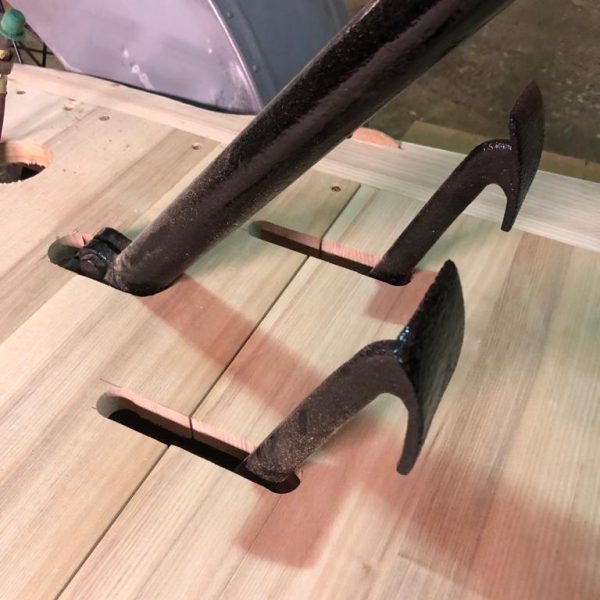
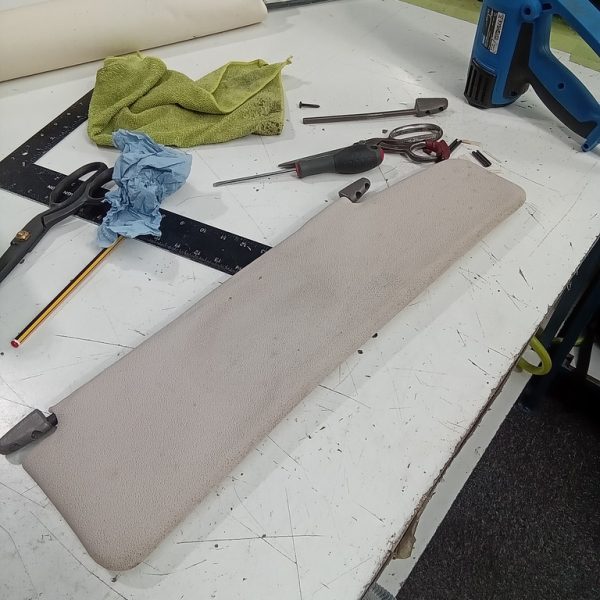
Our 1905 Riley 9HP has been with a friend of Bridge Classic Cars, Darin, from Ashbocking Joinery.
While our one-off car is with Darin, he has been starting the first phase in the process of mounting the front body and running boards.
Before the running boards are fitted to the car, Darin has been shaping them and it already looks like great progress is being made.
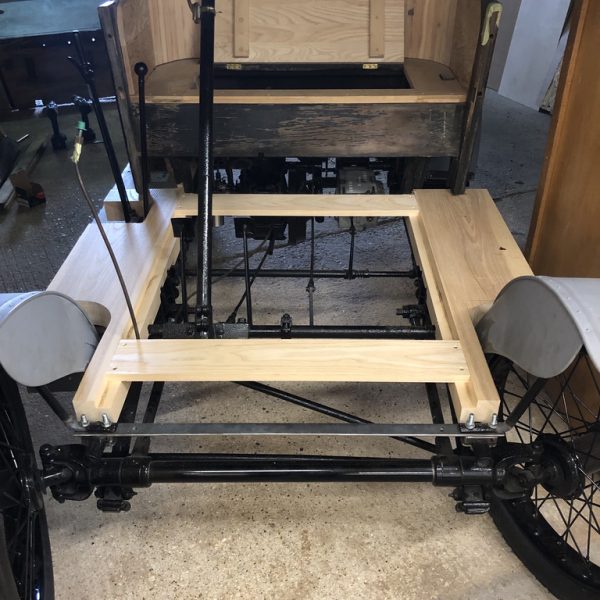

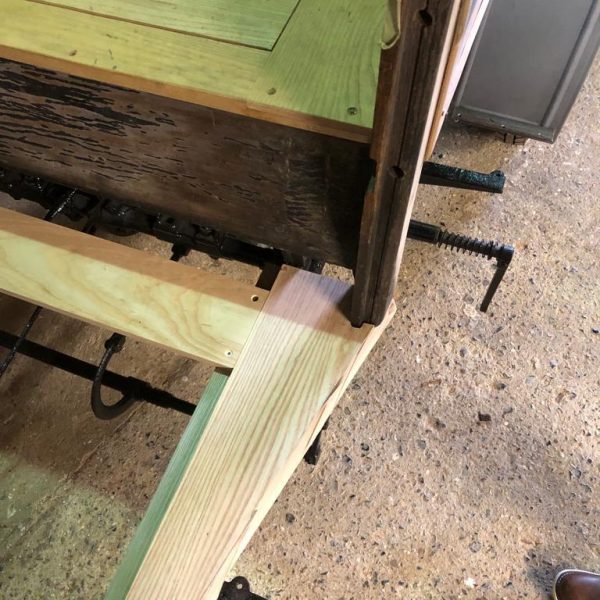
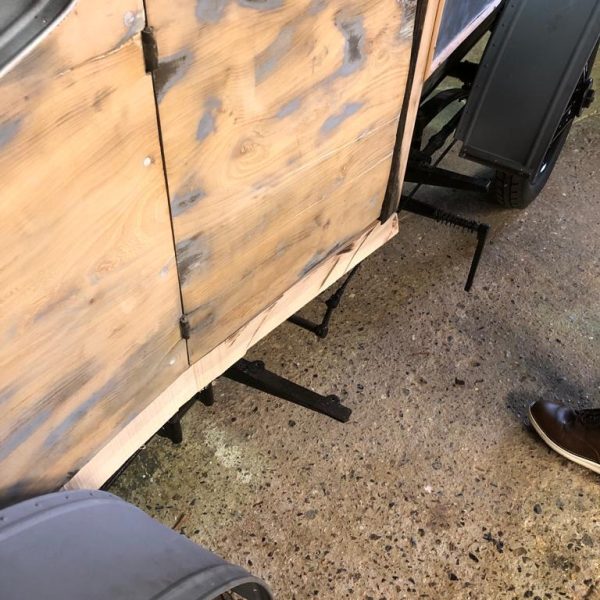
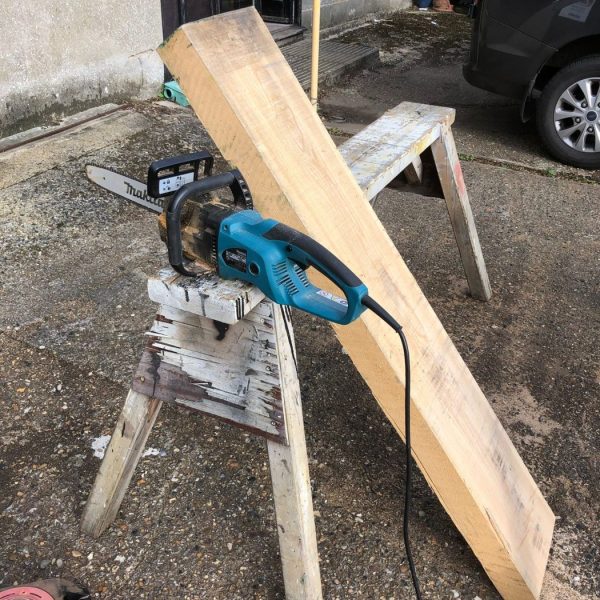
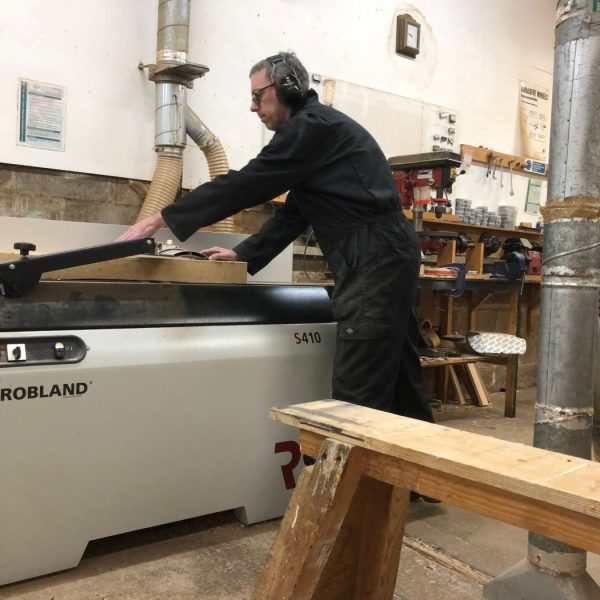

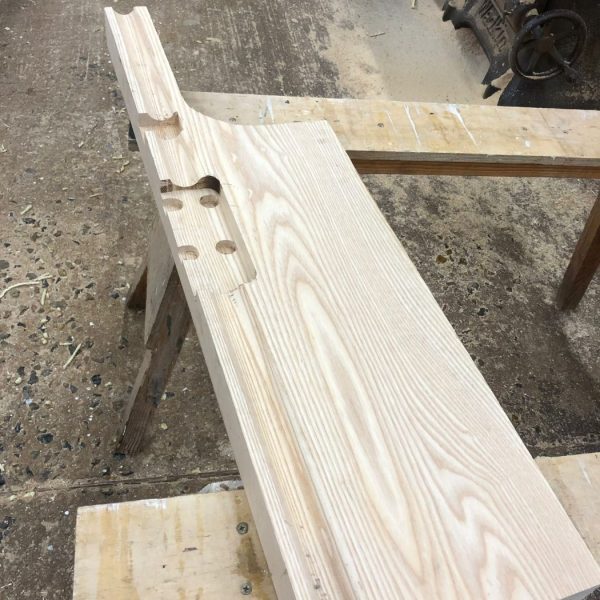


Recently, classic car technician Steve and Bridge Classic Cars Director Gordon took a trip to the British Motor Museum to take a closer look at the Riley 9HP they have on display. The purpose of the trip was to gather more information and references as to how our 1905 Riley 9HP goes together and works.
It’s not quite as easy as simply taking photos and then building our Riley in the same way though, as ours is slightly different to the very small number of others out there. It is strongly believed that we actually have the prototype for the Riley 9HP – the first car ever to have removable wheels. This means that it never looked exactly the same as any of the others produced.
Another challenge the workshop team faces is the age of the car. At more than 100 years old, there aren’t too many people around who saw one of these in their prime or know how they go together. It’s also worth noting that over the last 100 years, it’s highly unlikely that someone hasn’t tinkered with the vehicle in some way, making Steve’s job even harder to work out what is original and what may be a later modification.
That being said, after his trip to the museum, Steve has been hard at work and has made great progress on our Riley project.
He has been trial-fitting various components including the beautiful radiator!
With more photos and a bit more information to hand, hopefully, Steve will continue to make good progress on our very special 1905 Riley 9HP.

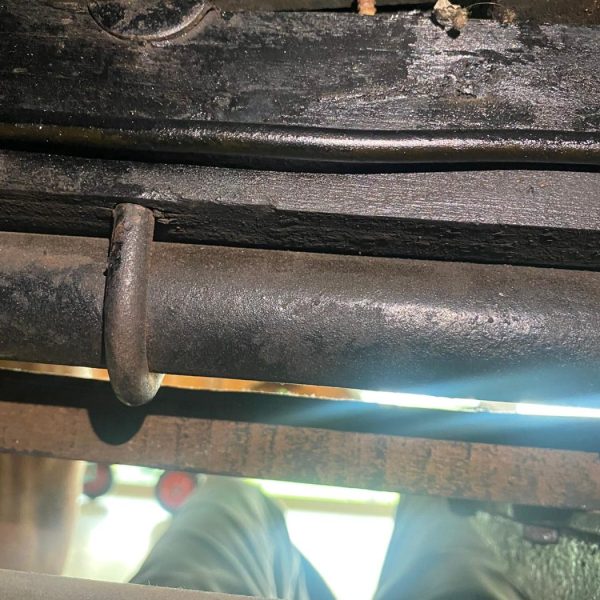

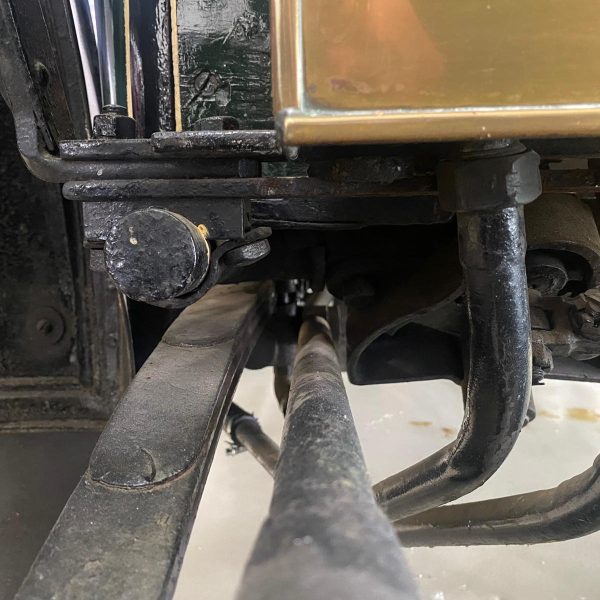
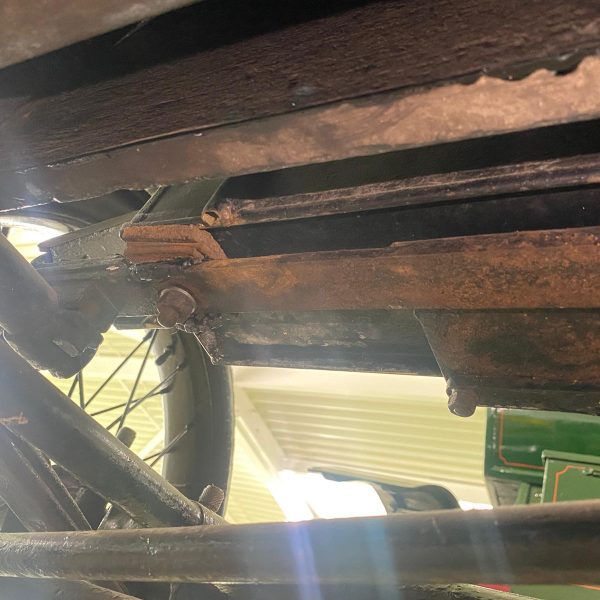
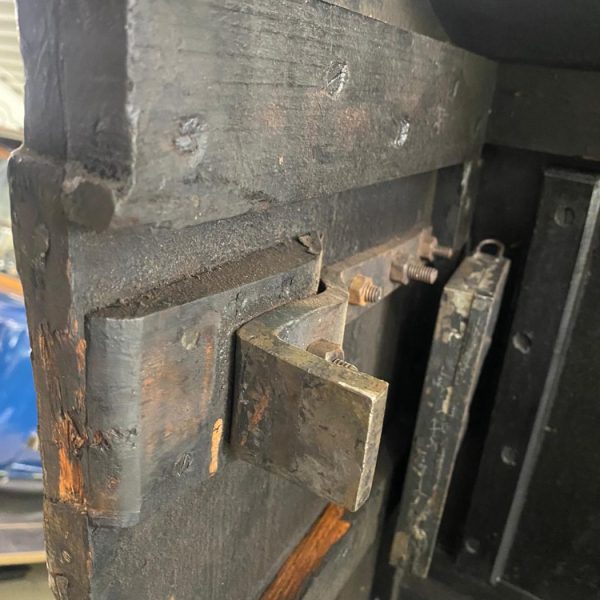

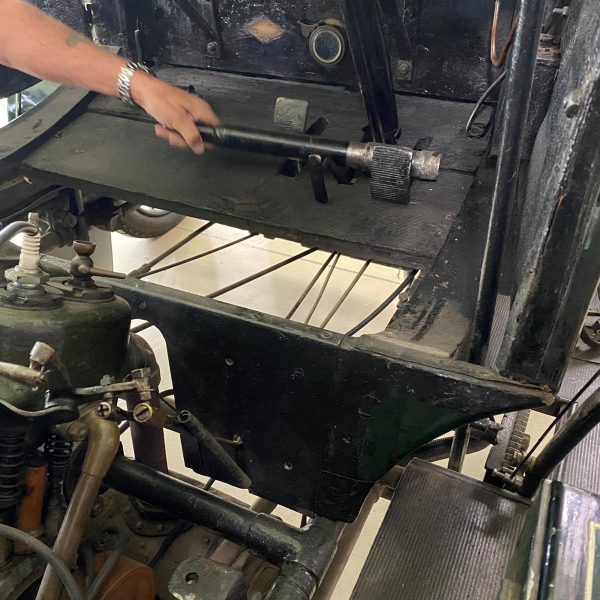
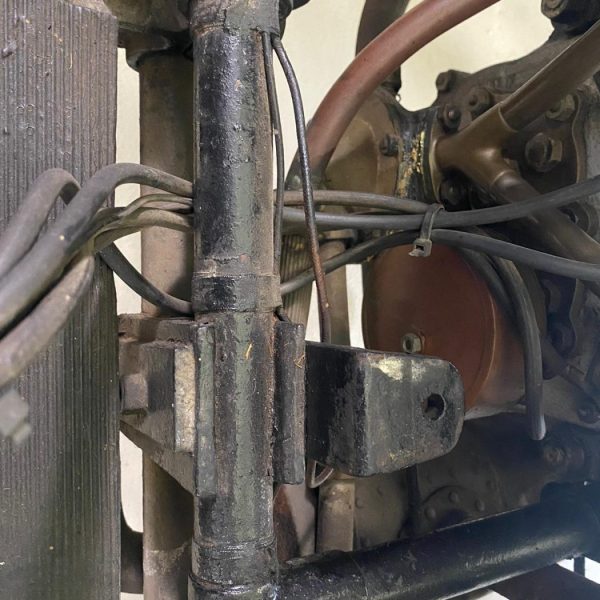

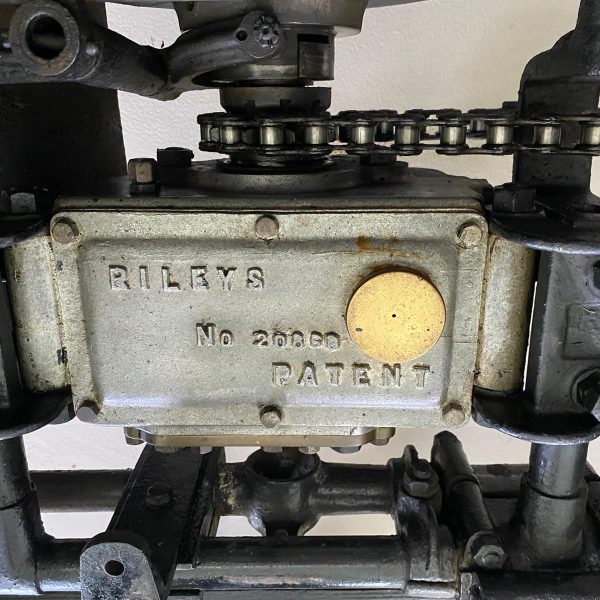


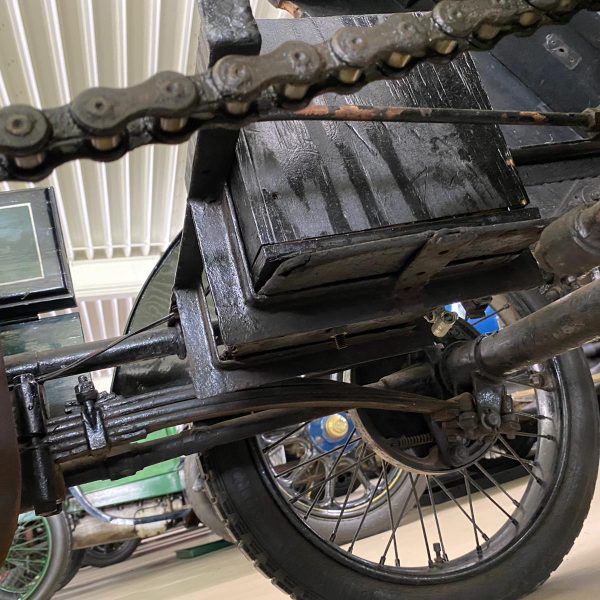


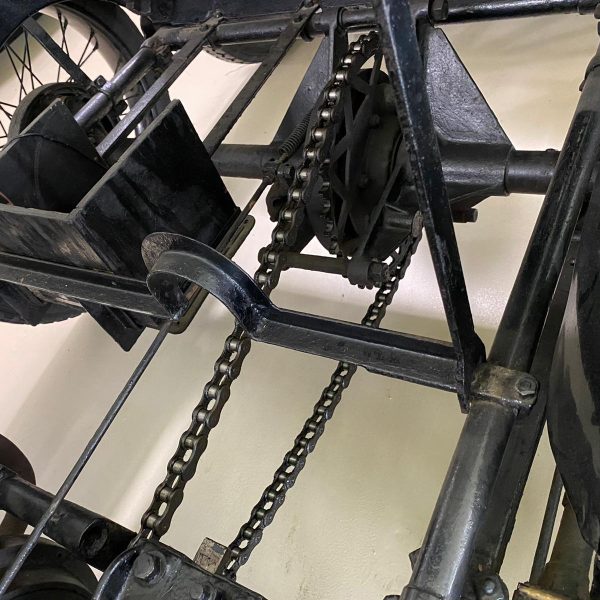

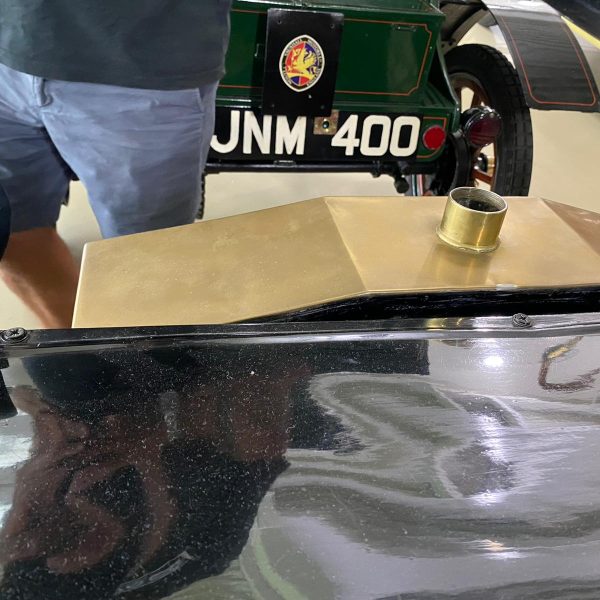
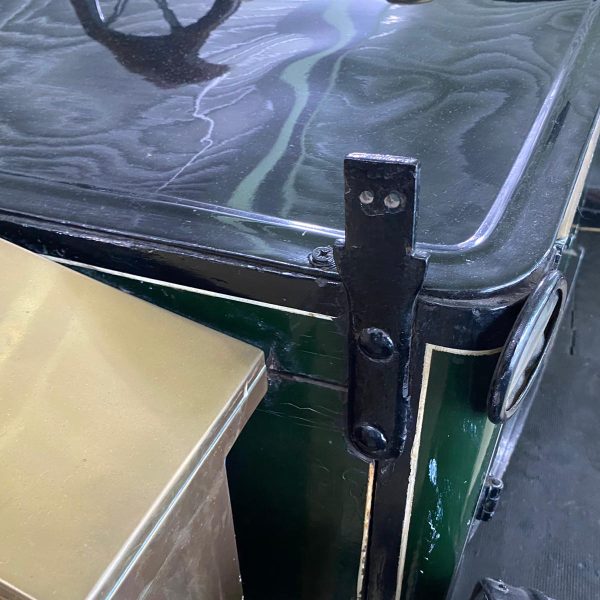
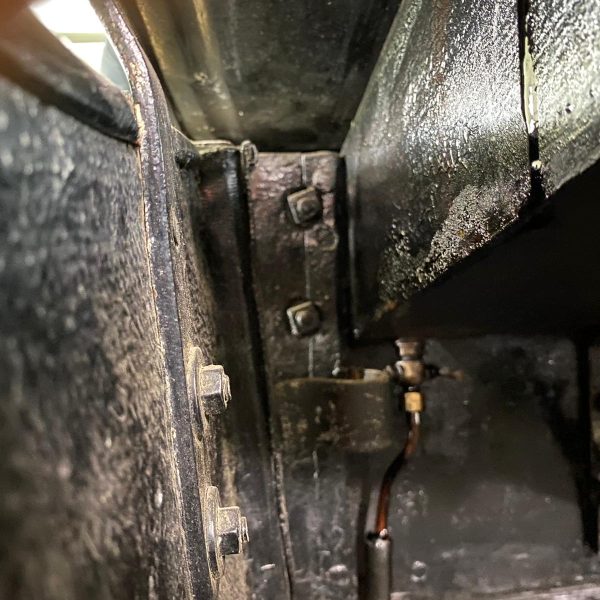


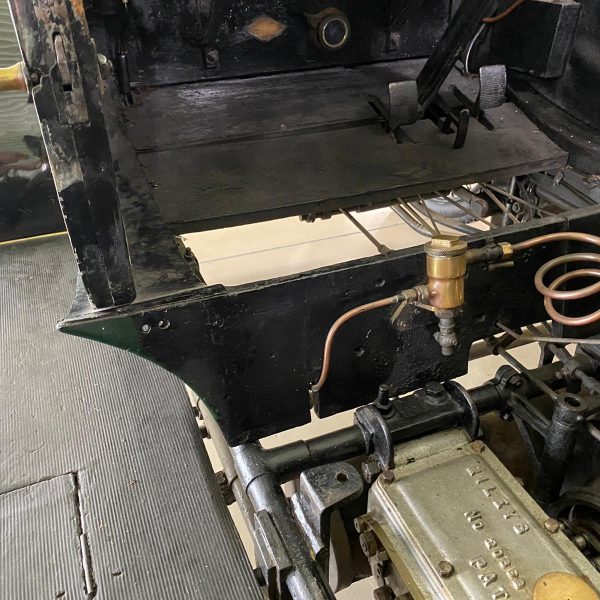
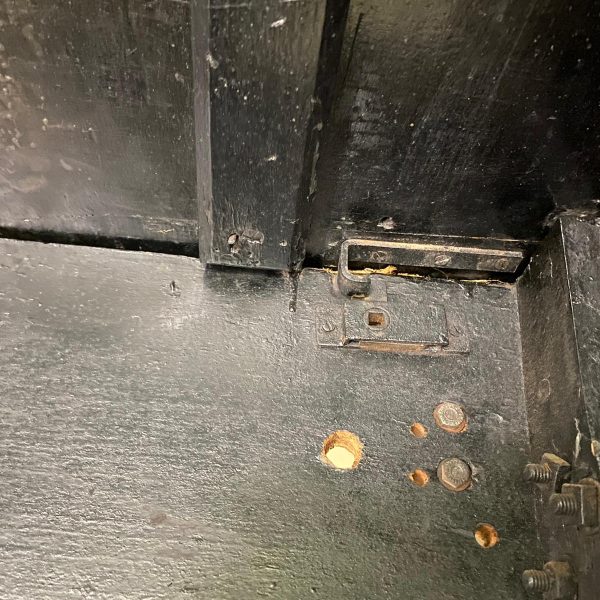


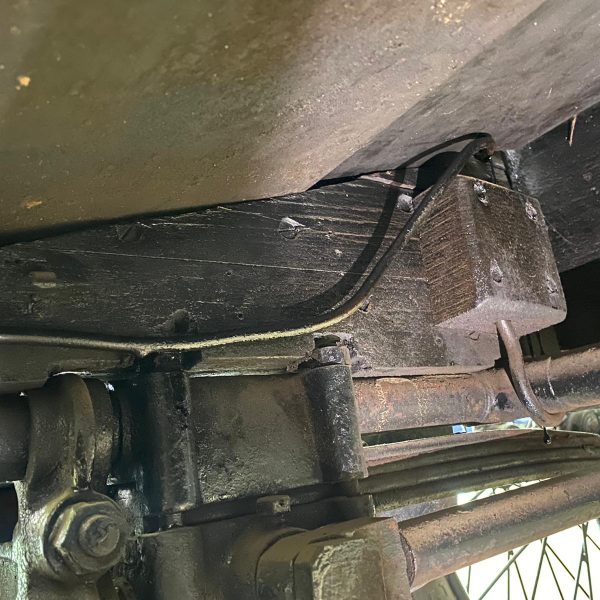

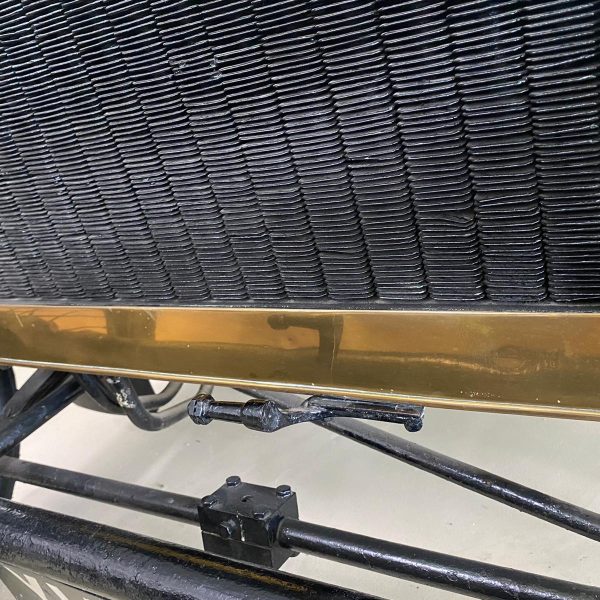
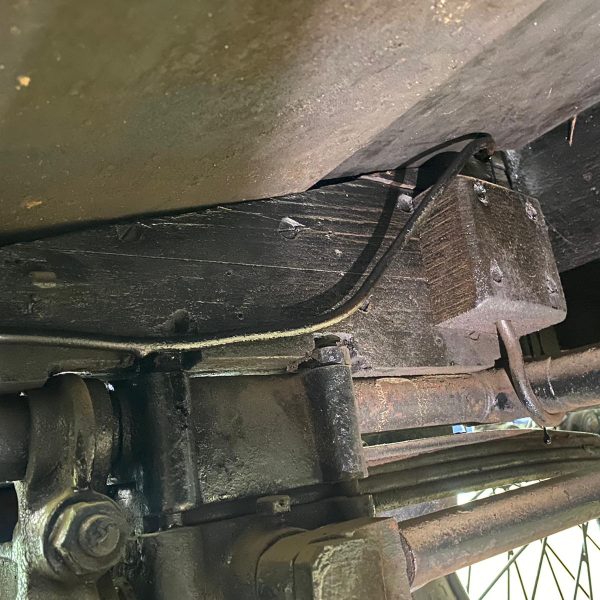

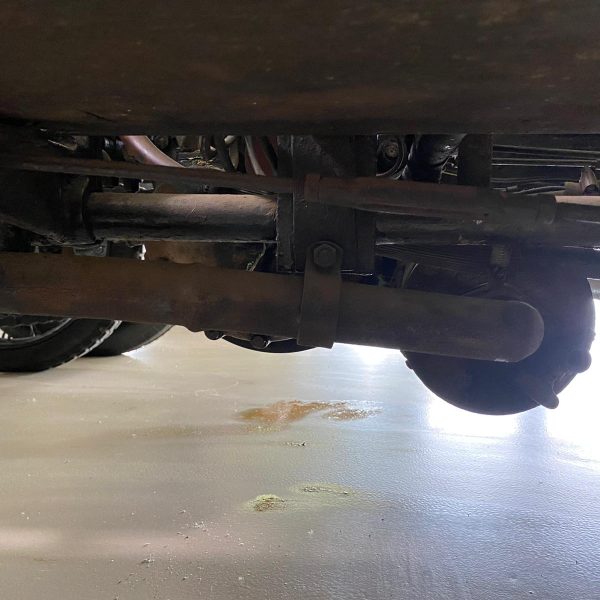
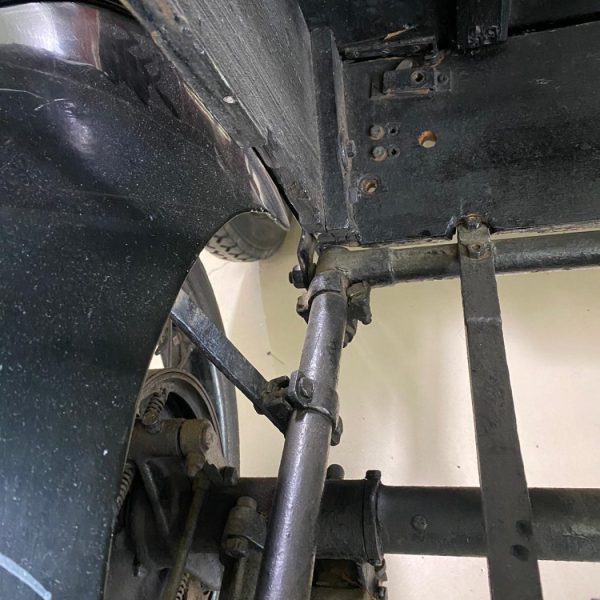

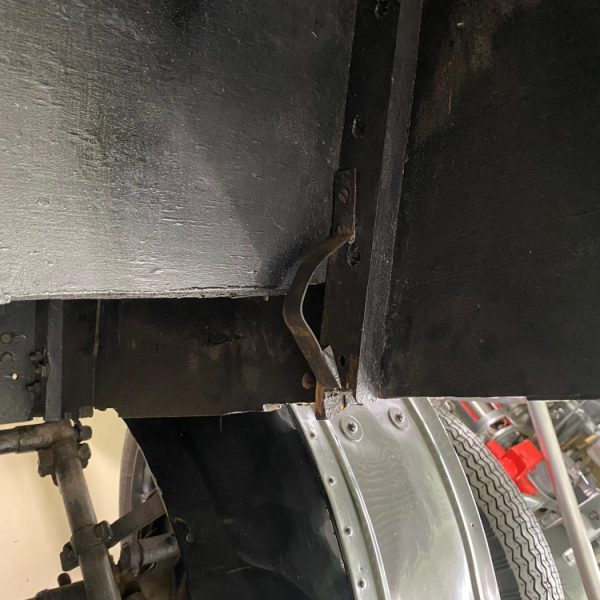
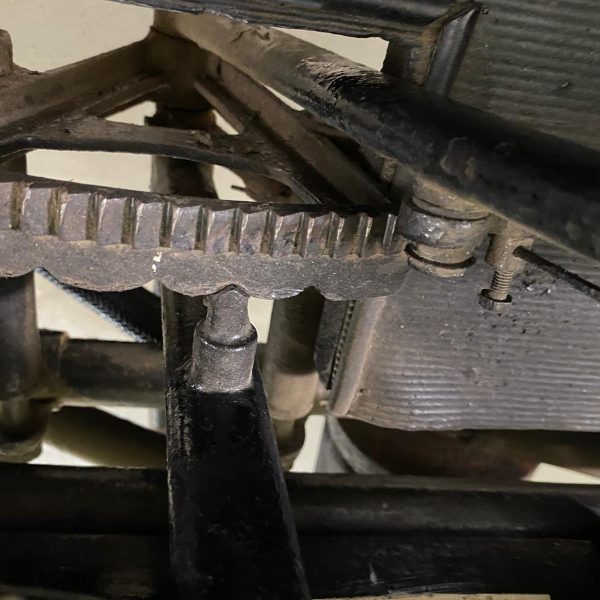
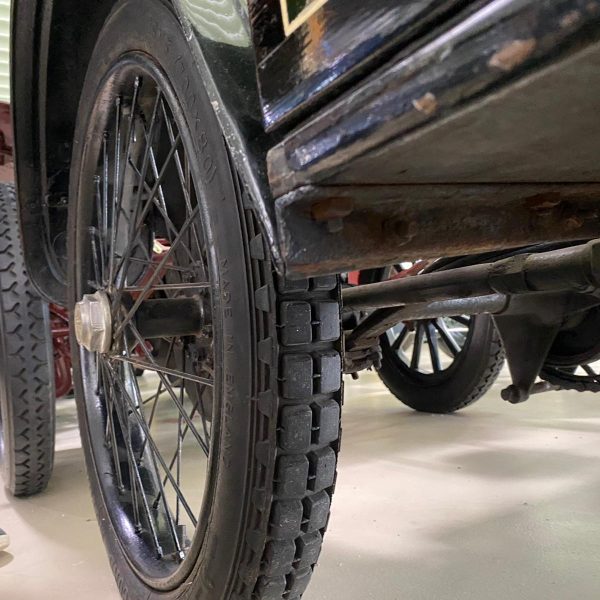
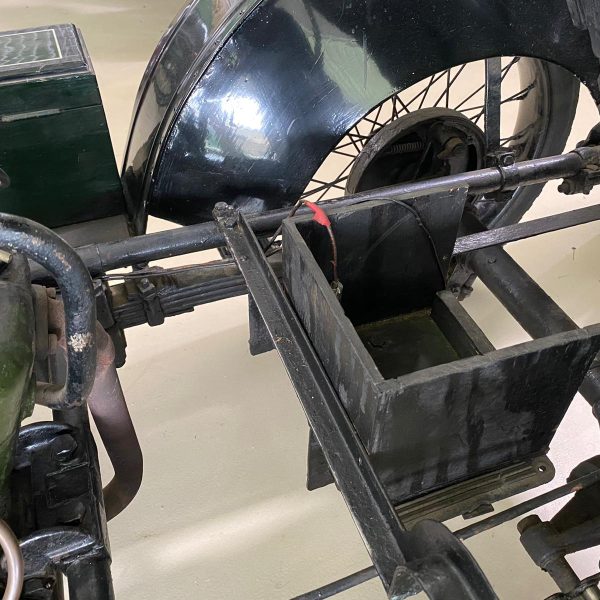
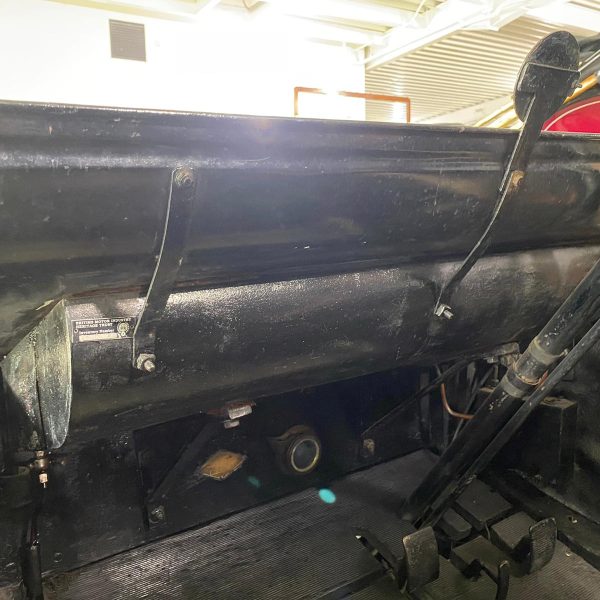
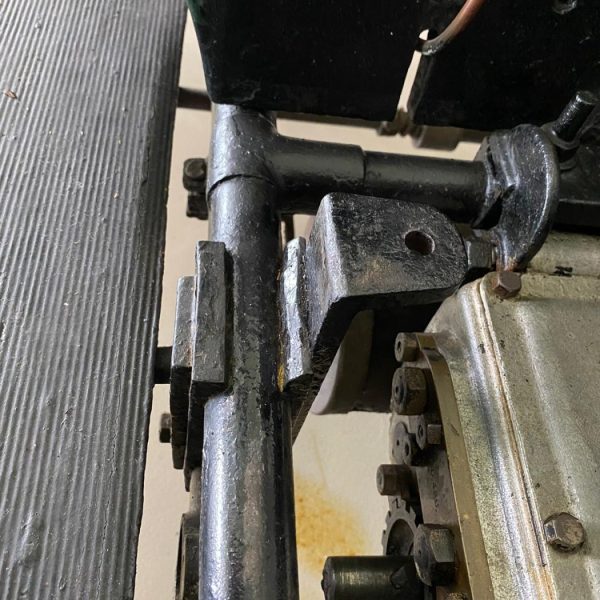


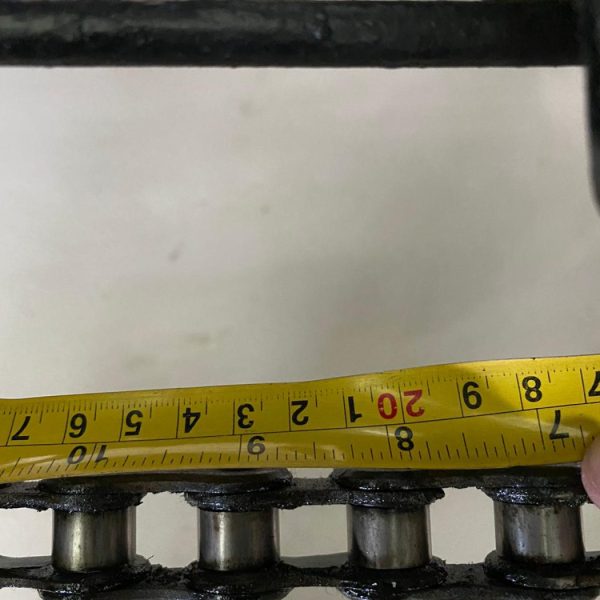
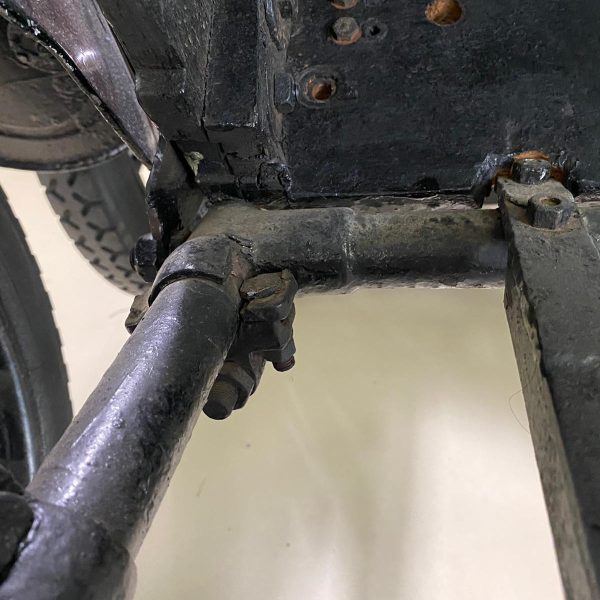
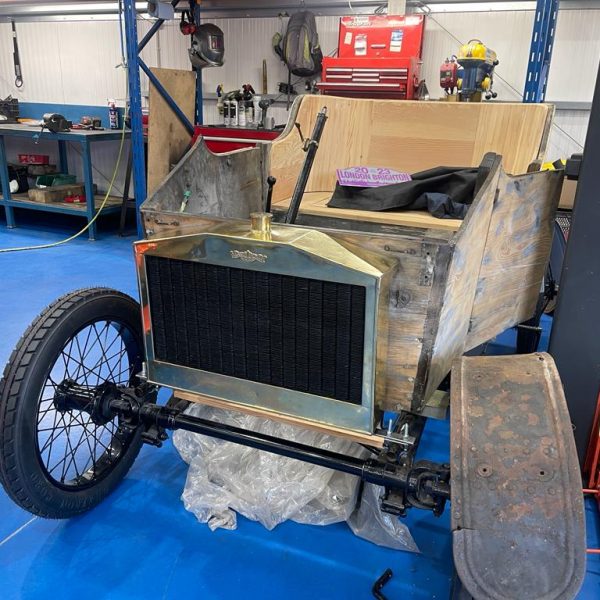
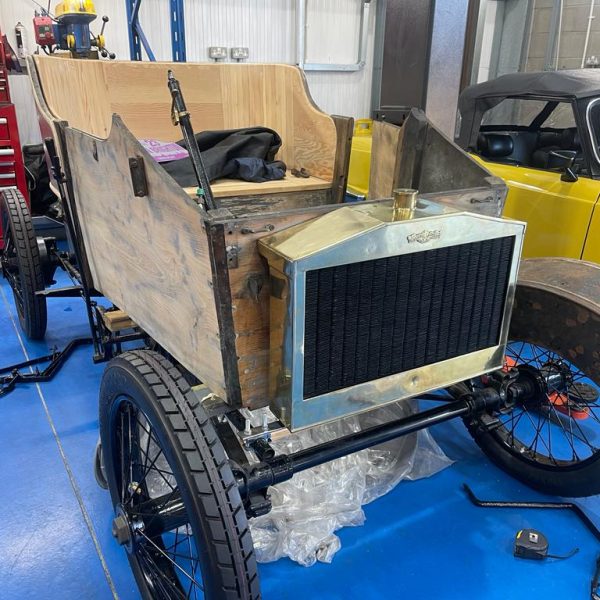
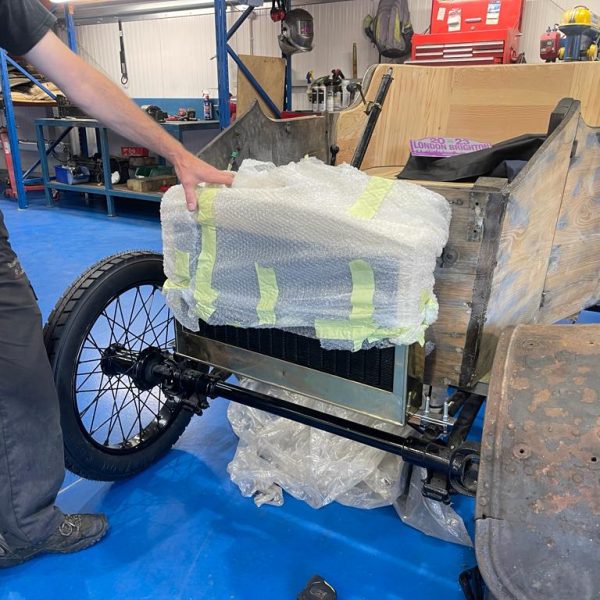
Following our recent visit from Geoff Haviland, of the Riley Cars Archive Heritage Trust, he has written us a detailed letter explaining what he believes to be another part of our 1905 Riley 9HP’s story. There is a lot of information within his letter and all of it will likely be useful as we continue to restore this extremely rare vehicle.
Geoff’s letter also contained some images and can be read below:
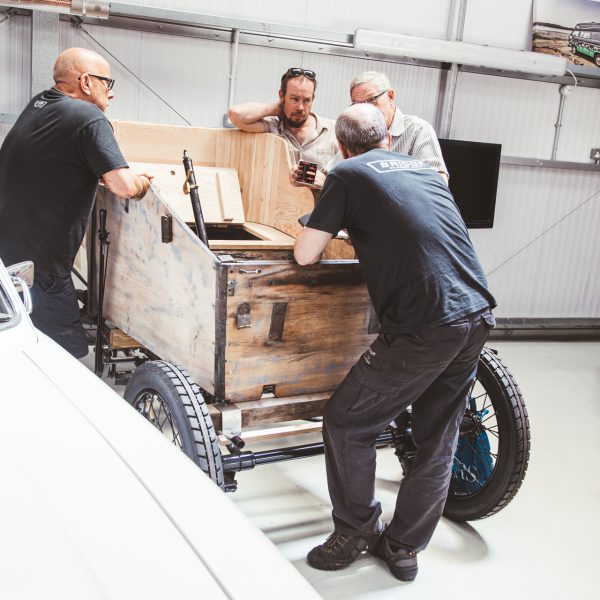
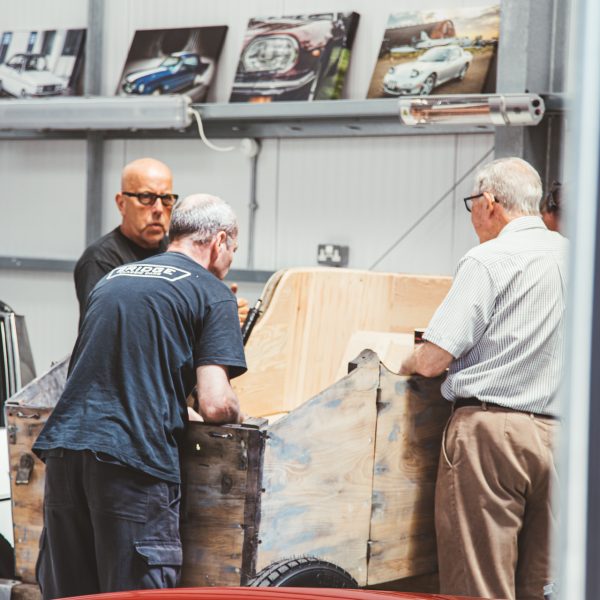
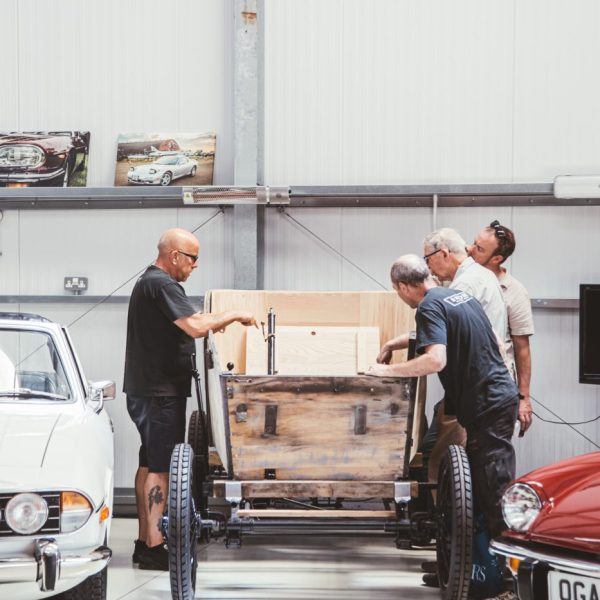
A visit to Bridge Classic Cars in June 2023 enabled me to see this most interesting car. It had been described as a 1905 model and I was very keen to see whether there were differences between it and the two surviving 1907 cars.
At the age of 22 Percy Riley (1880 – 1941) started his own engine company supplying single-cylinder engines to Riley Cycle Co. Ltd for mounting on bicycles and then VTwin versions on Tricars. Engine performance was beginning to outstrip the efficiency of the pneumatic tyres of the period and a burst in the rear wheel of a Tricar at best took two men three hours or more to repair and at worst caused the vehicle to flip over! The answer was to design a car with a wheel on each corner!
Tricars were very popular and continued to be built but were now featuring transverse mounted engines in V-Twin form the first of these appearing in 1905. When the first four-wheeled car appeared it was fitted with the same engine as the 1906 9hp Tricar, two 4 1/2 hp units on a common crankshaft. It is not possible to say exactly when the four-wheeled Riley car was first designed but it was to meet a growing demand for side-by-side motoring and to improve on safety. Riley’s first model was offered to the
public at the Motor Show in October 1906 and was announced as the 1907 Season model but prototypes would have been developed and tested during 1906. Were prototypes built as early as 1905? Looking at the development of the Tricars and the 9hp V-Twin engine this would seem too early but experimental chassis and mock-up body designs may well have been. Riley’s normal practice was to vigorously test out a new chassis in order to eliminate any faults with suspension, steerage, transmission and braking etc. At this stage, the body style was not important and a final approved design would still have been in the future. Successful testing of the chassis would then have led to prototype bodies being mounted on the chassis for further testing, including visual approval. These prototypes would have been much closer to the final design and once any tweaking had been completed the whole design would have been
put forward for approval and production.
Around this time the Stepney wheel appeared. Invented and patented in 1904 this was a ‘get you home’ spare wheel rim without spokes but fitted with an oversize tyre. The rim was clamped to the car wheel and provided a temporary means of getting to somewhere that a flat tyre could be repaired. It fulfilled a need and became so popular that a factory to make them was set up in 1906. Percy Riley regarded them as ‘not an engineering job’ and set out to design a better detachable wheel system. This would have been in 1906 and early efforts would have been trialled on the prototype 9hp cars. By the launch of the car in October 1906 they were only offered as optional extras but became standard fittings in 1907.
No record exists of when Percy’s detachable wheel first saw the light of day but 1905 would again seem rather too early. He may have been working on the system before the Stepney wheel was in full production but family records suggest that he was prompted to design the system on the Stepney becoming so popular.

Currently, there are four known surviving cars and two further ‘kits of parts’. Of the four cars, three are genuine period examples while the fourth is a replica built over the last 30 years by a New Zealander who is now deceased. Unfortunately, this car has been authenticated by the Veteran Car Club of NZ as a 1905 model!
Some doubt exists with chassis numbers as these were stamped onto tubes or cast iron lugs which have deteriorated or been replaced. They cannot be determined in some cases. The NZ car chassis number is clearly fictitious. Engine numbers are more reliable but would have been shared with the Tricars and proper chronological order cannot be determined. Details of the two kits of parts are not yet to hand.
Example 1 Gaydon Motor Museum Reg. YU 4032 Engine No 1112 chassis No. C/105
Example 2 is with Bridge Classic Cars Reg. CW151 Engine No 860 chassis No. 1572
Example 3 is the RCAHT car Reg. 508 WAR Engine No. 1058 chassis No. unknown.
Example 4 is the NZ car Reg BC8512 Engine No 846 Chassis No 740.

The first thought was that this car is a bit of an ugly duckling yet it has the suggestion of the elegant ‘swan’ that was to be presented to the public as the first four-wheeled Riley. It has the look of a mock-up which has been hastily assembled in order to do a specific job, allow the testing of the new chassis, but there are pointers to features that the designer had in the back of his mind.
The chassis details are all similar to the 1907 car except that extension pieces of tube about 10″ long have been fitted at the front. The only reason for having these extensions would appear to be to support the extra length of a flimsy scuttle carcase. The nearside door measures about half of this extra length with the result that it is too narrow and the carcase panel on which it is hinged is too long! There is a lot of wasted space in front of the foot pedals! The radiator has to sit in front of this carcase and so it is too far forward over the front axle. The whole look is of a very stretched front end. The top of this carcase is shaped to follow the slope of the dash panel which may have been thought desirable at the time but it creates a very closed-in look and is not as attractive as the 1907 design. Also, the top of the door is higher than the arm of the seat which has resulted in rather awkward infill pieces being fixed to the seat. The problem has been resolved in the 1907 car by lowering the height of the door and reverting to a plain horizontal line.
The seat is a one-piece double-width single unit and photographs do exist that show early production cars having this type of seat but by the time the 1907 catalogue was issued a double seat was used.
The rear body carcase does seem to have progressed to the eventual design but on this car, the timbers used are considerably thinner.
All of this suggests that this car is very likely an experimental design produced for the test programme of the first four-wheeled chassis. It certainly has the looks of a mockup body using lightweight components and lacking the attractive lines that were to follow. It quite possibly precedes the prototype or prototypes which would have been more similar to the final design. For this reason, I believe that this car came very early on in the evolution of the 9hp car and very possibly before the end of 1905, however, the feature that doesn’t fit with this position is the use of detachable wheels.
Percy would have been extremely busy at that time with the supply of engines to The Riley Cycle Co. Ltd. and others. The Tricar was still enjoying huge popularity and Percy was about to introduce the 6hp and the 9hp engines. He was also overseeing his younger brother Stanley, still only 17 years old in 1905 but about to produce his own 5hp Tricar. Add to this Percy’s time spent on the design work of the new four-wheel chassis which leaves little time left for designing a detachable wheel system. We don’t know that the idea had even occurred to him at this stage.
The most likely scenario is that CW151 was fitted with the detachable wheels sometime later in its very long lifetime.
All in all a most intriguing motor car that perhaps presents a bit of a dilemma for Bridge Classic Cars. When deciding on the best way to restore the car there would appear to be three options.
Restore it to its original form as an early mock-up. This entails keeping its stretched appearance and its flimsy body construction but will be historically correct. It would also be preferable if detachable wheels are not used in this case as they came late in 1906 and were not standard until 1907.
Restore all the parts as acquired, retaining the detachable wheels which would then need to be described as a later modification.
Construct the body in its final production form of 1906. The attraction here is that a more attractive, sturdy and usable car would result.
My own preference would be option 1 as this car is unique as a ‘moment in time’ in the Riley story. However, the finished restoration would be more suited to museum or display purposes and would need special handling if it is to last another hundred years. Option 2 would also be acceptable but the later wheels would slightly detract from the ‘moment in time’ argument. Whilst I wouldn’t like to see option 3 go ahead I would understand it from a commercial point of view. BCC are spending a great deal of money in restoring the parts to the highest standard and they would naturally expect a good return on this investment. There is little doubt that a good restoration to the specification of the production model would be the more attractive in design and the most reliable in performance and durability and would thus attract greater interest. This would be a pity in my view as there are two other surviving 1907 cars but nothing else quite like this one!
Geoff Haviland
Riley Cars Archive Heritage Trust.
28 June 2023
We recently welcomed Geoff Haviland into the Bridge Classic Cars workshop, so he could take a close look at our 1905 Riley 9HP.
Geoff was the individual who reached out to us after seeing our Riley project online. He noticed that our car looked different to how it should, and seemed to be a year or two older than it should have been. It was from his information that it now appears that our 1905 Riley 9HP could very well be a prototype of the very first car to have removable wheels.
The level of knowledge that Geoff has about Riley cars is extraordinarily high. In fact, he was one of the main people involved in a project to build a replica of the first Riley car ever made. What makes this even more impressive is that there was almost no information at all about the original car when the project began but, with a lot of hard work, the replica project got underway.
It was great to have Geoff come and see us and our Riley 9HP. Classic car technician Steve, who has been working on the vehicle, spoke at length to Geoff to help confirm some details he will need to finish our project in the near future.
Everyone here at Bridge Classic Cars would like to thank Geoff for taking the time to visit us and for sharing so much of your knowledge and experience.


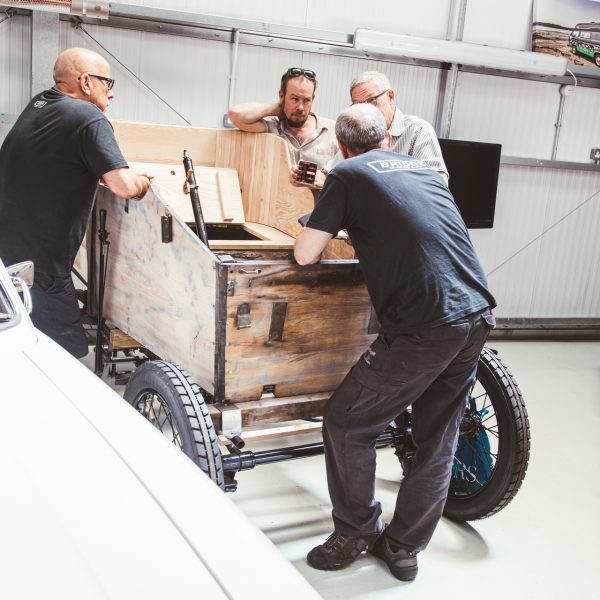

Bridge Classic Cars are award winning Classic Car Restoration and Maintenance specialists. Your pride and joy is in safe hands with our expert Classic Car Technicians. Take a look at our awards here.
Leave a Reply